TheKoreanGuide is a reader-supported site. Purchases made through links may earn a commission.

11 Reasons Why Korea is Worth Visiting

There are many reasons to visit Korea, today we’re going to talk about the 11 reasons why you should visit Korea.
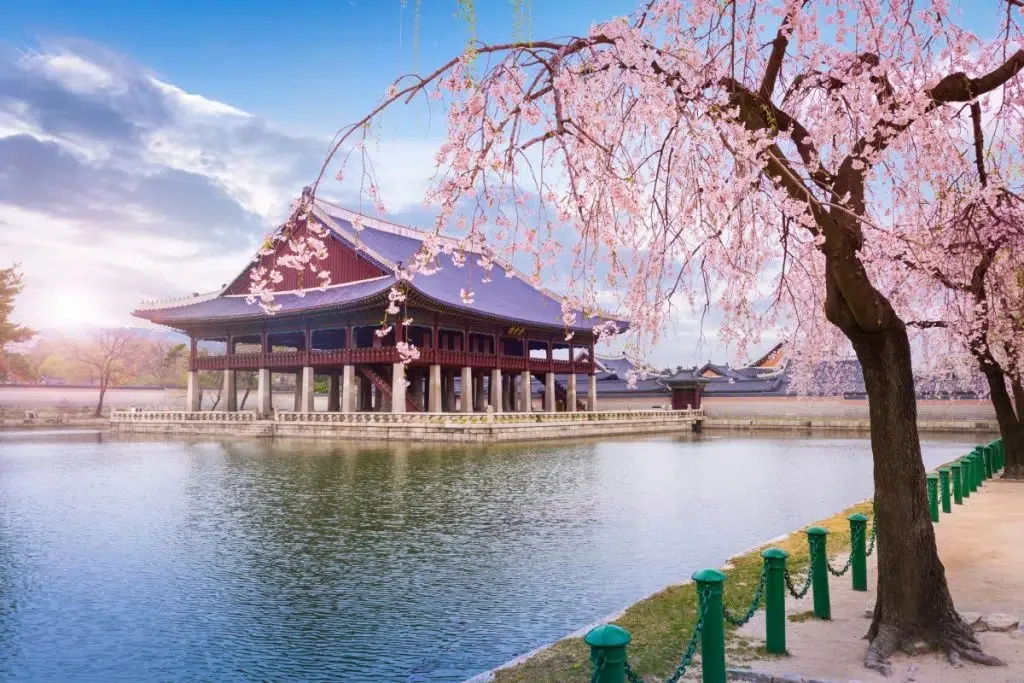
Many people are wondering every day if it’s Korea that they want to visit. There are many other beautiful countries so, is it really Korea that you want to visit. That question I asked myself many years ago.
After thinking about it for many days, I’ve finally decided to visit Korea, and it was the best choice of my life. There are many places you should visit. We’ll explain below what you should visit Korea . Let’s get right to the juicy info.
1. Seoul
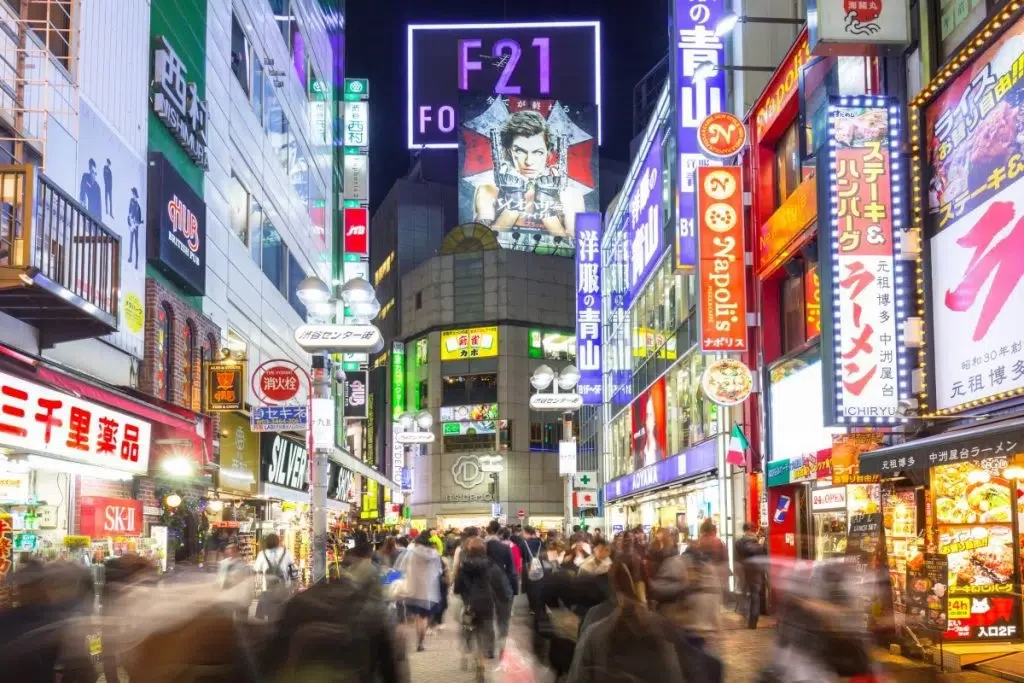
Seoul should be the first place to visit if you’re going to Korea. It’s the capital of Korea and definitely worth visiting. There are many fun things you can do while you’re in Seoul like, going to the karaoke bar, visiting cafes, or just relaxing.
It might be a bit more expensive if you’re eating out all day so what I did when visiting Seoul was creating a budget. By creating a budget that suits your lifestyle gives you more room to work with. The last thing you want to happen is to run out of money.
I saw that one of my friends I was traveling with didn’t bring enough, so I covered him. He felt pretty bad, so make a budget and stick to it.
Another place you should visit is the Jangseng Geongangwon in the Gangnam District. They have one of the best cocktails that you can get. Try to enjoy it for as long as possible because time flies by, especially if you’re planning to party a lot.
2. The Culture
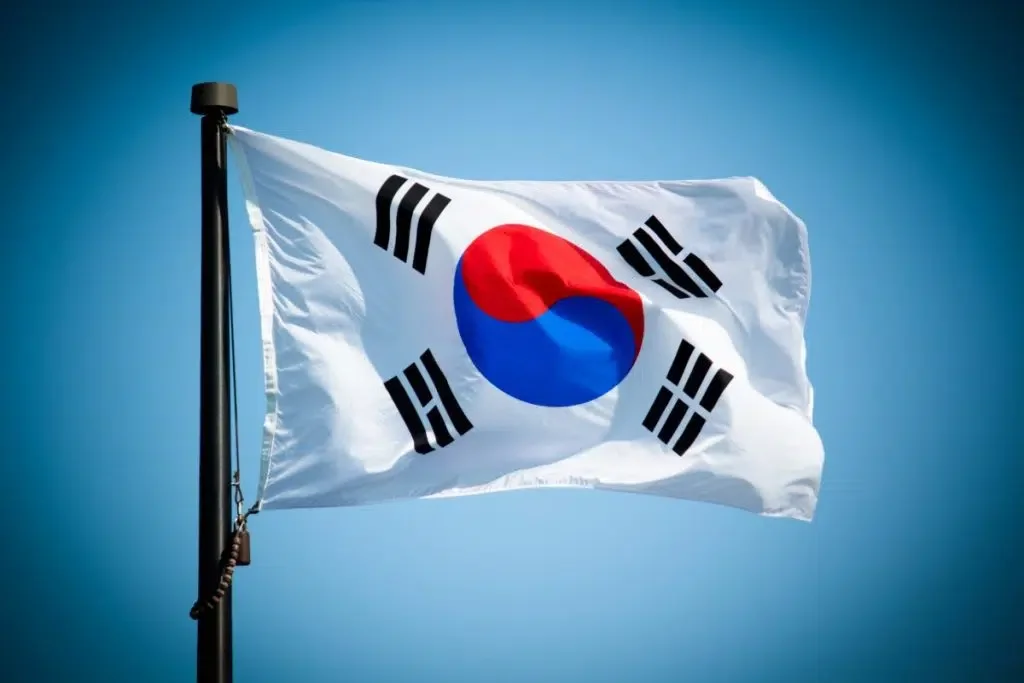
Korean culture is very traditional, where people still bow to each other. In other countries, you don’t see this happen often. We’d rather give a handshake than bowing, but in Korea, this isn’t the case at all. So, try getting used to bowing, especially when you see elders.
This was a mistake I made in the beginning when I asked where the train station was. It’s pretty disrespectful if you don’t bow, so make sure you do. Another tip is to take your shoes off when going inside a house or apartment.
This is very important because Koreans really dislike walking inside with shoes on. Koreans are known to be very clean, and make sure you keep it like that.
There are also different pronounces to use when talking to people. Older people are called differently. Try learning more about the Korean language if you’re planning to stay in Korea for a very long time.
3. Korean Shopping
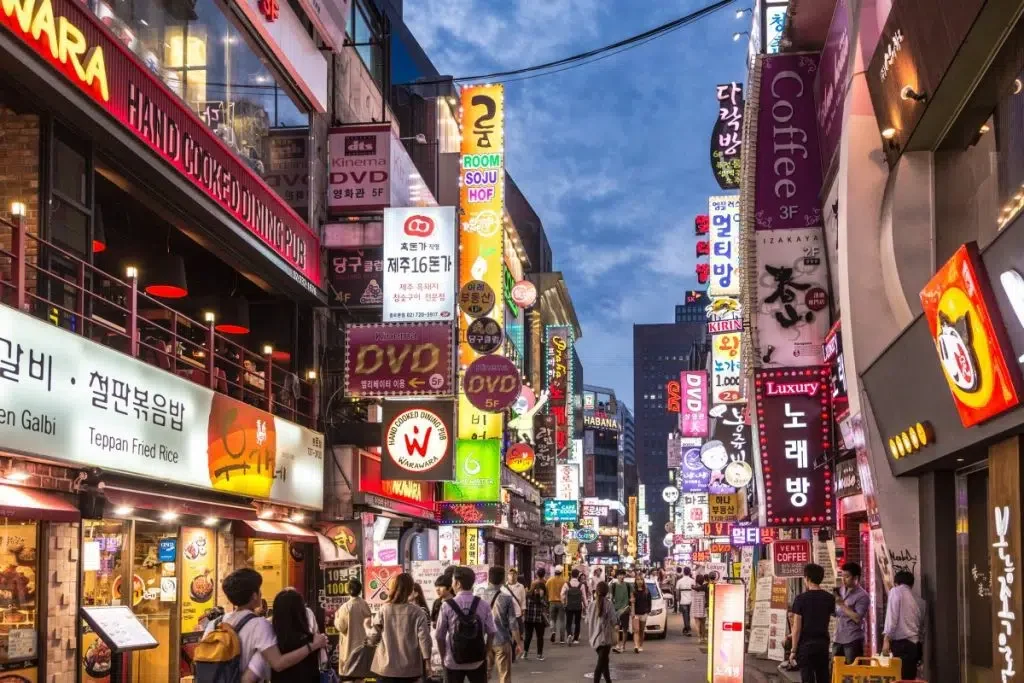
Shopping in Korea is very fun because you have a wide range of choices. There are many designer brands you can purchase from. However, the most fun stores are the ones on the market. There are many affordable pieces with very high quality.
The only thing you should look out for is to avoid getting ripped off. It doesn’t happen often but still, in case, make sure to ask yourself if the price is worth it. When I was visiting some other countries, people in street markets tried to rip me off by paying 4x the price other people were paying.
A great tip is to bargain. Another plus that I really liked when shopping in Korea is the online sites. Shopping online on stores like GMarket is extremely easy and fast. The delivery is often within delivered next day.
4. Hanbok (Korean traditional clothing)
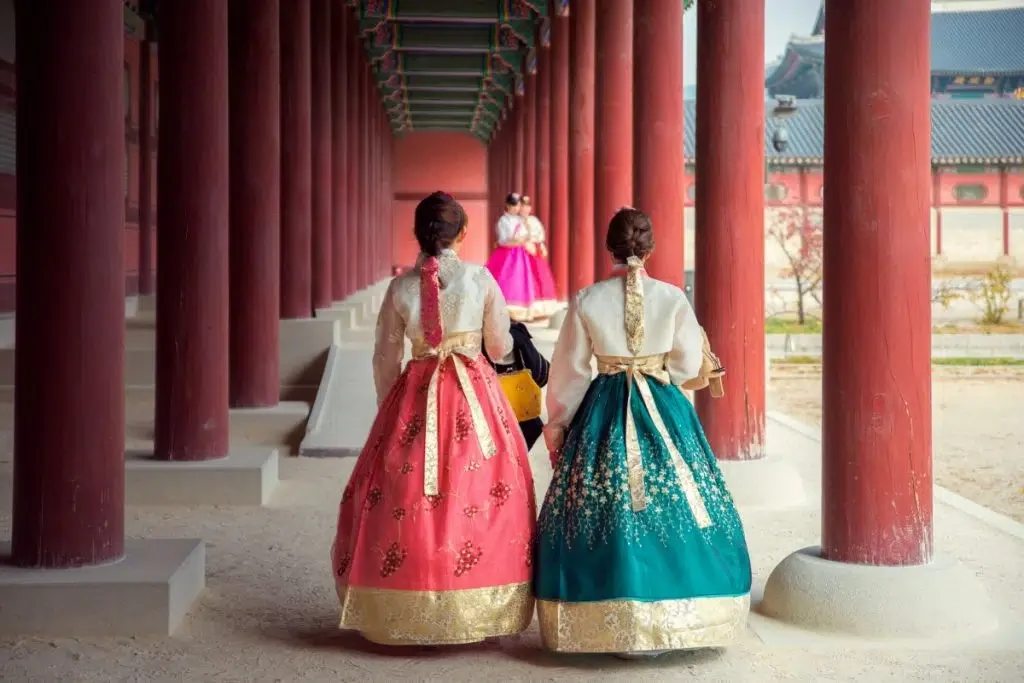
Hanboks are traditional Korean clothing. It’s very fun to wear. You can find these types of clothing pretty much everywhere you go. The best place to wear a hanbok is when visiting a Korean is in Seoul. Yes indeed! You can wear your hanbok everywhere, and people won’t look weird at you.
There are two types of hanboks for men and women:
These hanboks are very popular, and if you have the chance to visit Korea, make sure to wear a Hanbok. It’s really fun, especially if you’ve never worn one before. The most fun experience was when meeting different foreigners wear Hanboks , and you should try to do that too.
5. Korean BBQ
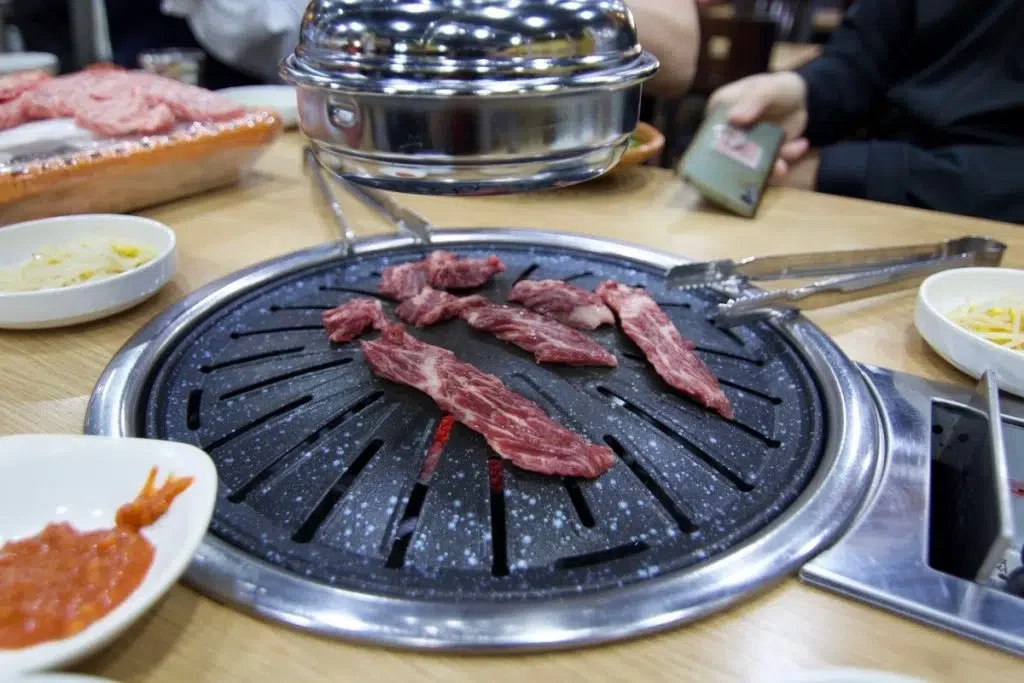
Korean barbecue is very popular in Korea and other countries. It’s one of the must-try foods when visiting Korea. The meat is on a different level. You might not notice it, but the quality of meat they have in Korea is insane.
It can be a bit more expensive, but if you have the budget, it’s definitely worth it. I’ve been craving wagyu for a long time now, especially in Korea, because that’s really on a different scale. If you like eating Korean barbecue already, then this will blow your mind.
Many people in television programs or game shows often win a pack of high-quality meat. Yes, you’ve guessed it right a pack of high-quality meat from a game show. It’s because of the value, and many people can’t afford to eat it every day.
This reason alone should be enough to visit Korea, the quality of meat is different when you compare it to the USA, Europe, or Canada. Also, Koreans have a different way of cooking meat. They grill it on a plate while foreign countries do this on a regular barbecue.
6. Karaoke Bars in Korea
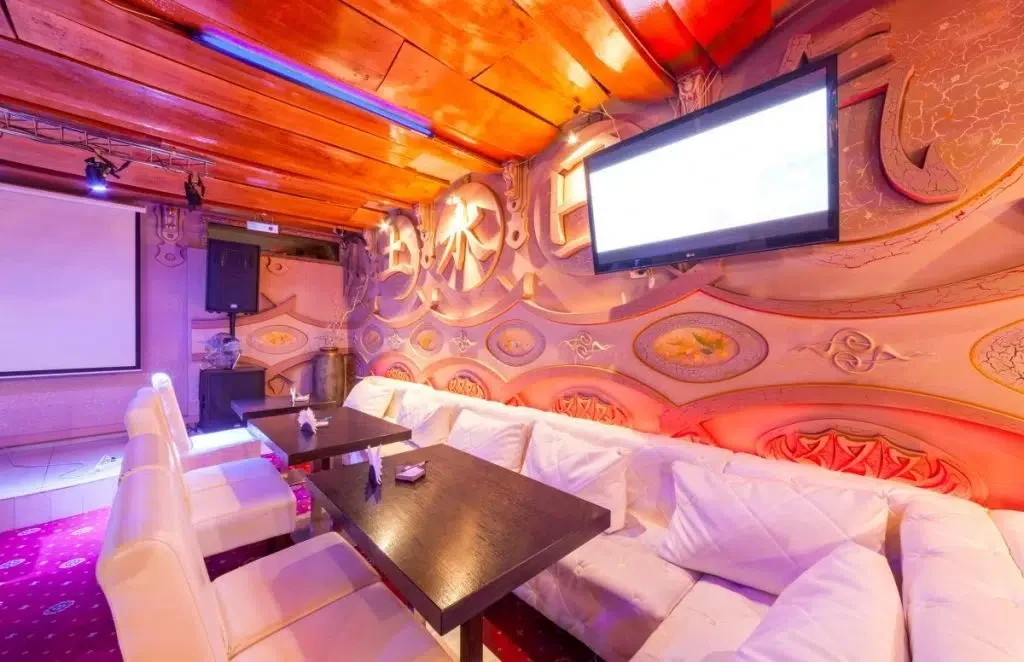
Karaoke bars are really fun, especially if you’re going with friends. However, karaoke bars are also a place to rest and chill. Many people visit them alone when they want to release stress. It might look lonely at first, but that’s not really the case because hundreds of people visit alone every day.
In Karaoke bars, you can get drinks, food, and snacks. So, it’s a great place to chill and relax. If you’ve never been to a karaoke bar before, make sure you do. You can’t find many karaoke bars in foreign countries because they aren’t popular enough.
In Korea, this is the opposite, and karaoke bars are one of the most popular activities you can do. Another plus is that you can practice your singing skills, it’s not expensive at all.
So, you don’t need a big budget to practice singing, and you don’t have to worry about singing in Korean because there are many English songs you can sing.
7. Fashion – Seoul Fashion Week
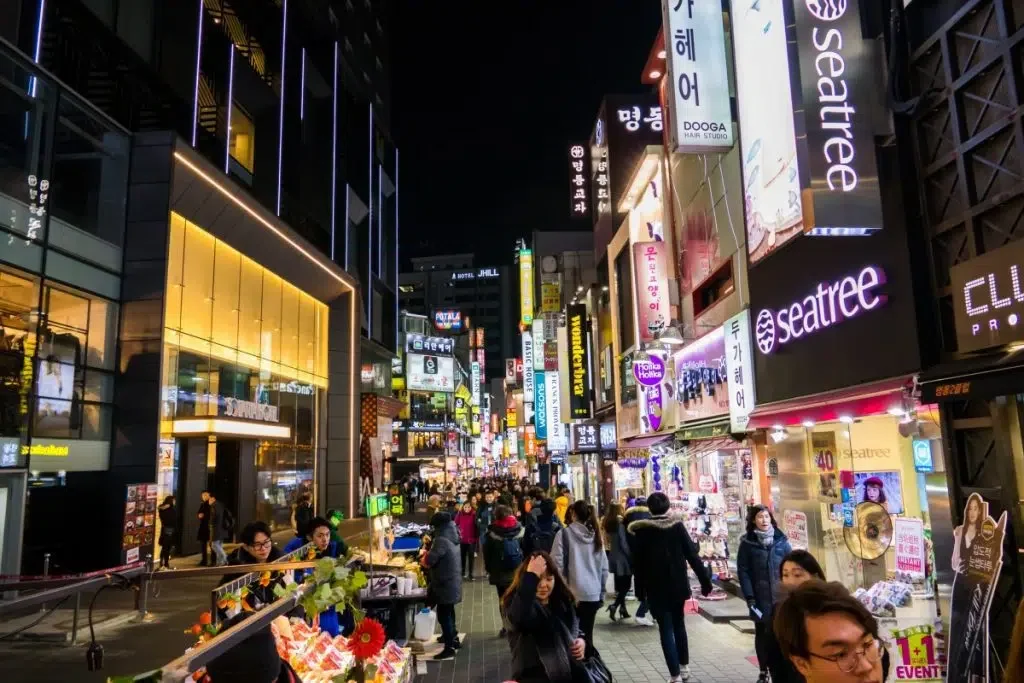
Fashion is huge in Korea, and it’s often because of the celebrities promoting new products. Every year there’s a Seoul Fashion Week. This is where the most popular celebrities attend the walkway. It has been one of the most popular fashion activities in Korea all year round.
If you’re really into fashion, this could be a great reason for you to visit. You could impress everyone else by wearing something that no one has ever thought of.
What I really like about Seoul is that you can wear anything you like and people won’t look weird at you. The fashion styles in Korea are very different from the ones overseas, and that’s really what makes it special.
Make sure to visit Korea if you’re really into fashion and want to attend the Seoul Fashion Week yourself. It’s a great way to expand your network in the fashion industry and build connections.
8. Korean Drama
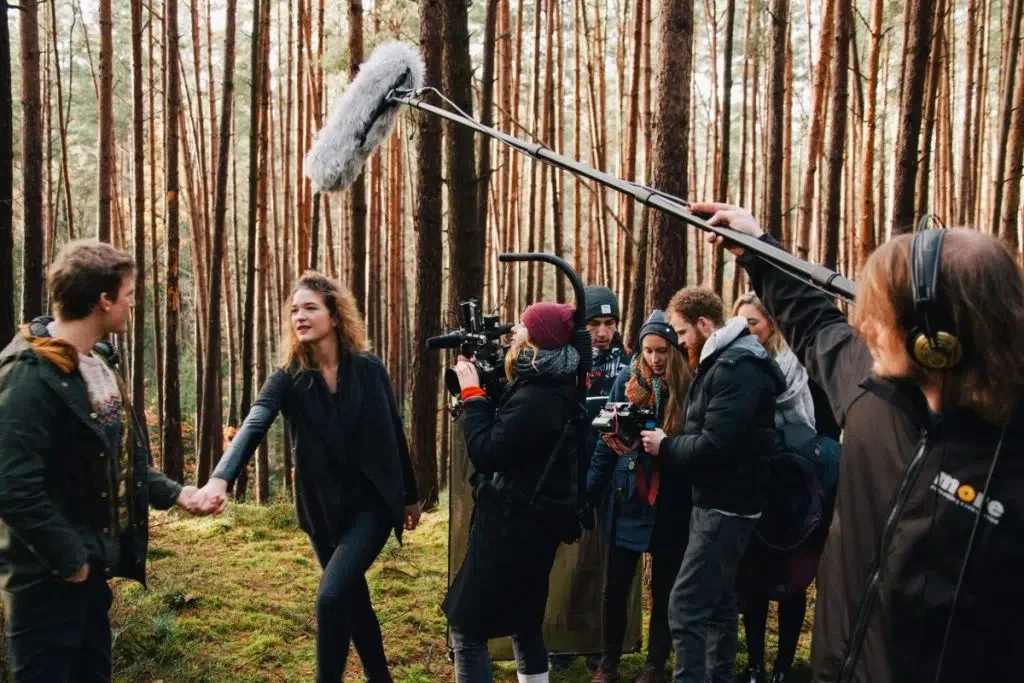
Korean Drama is huge in Korea. Hundreds, if not thousands, of people, watch it every day. Korean drama has been expanding to different countries by releasing the episodes on Netflix. This is, of course, very lucrative for Korea itself because it creates another income source.
Streaming Korean drama is very easy, and you might even see one of your favorite actors/actress walking outside. That can really happen because it has happened to one of my friends that saw a huge crowd surrounding an actor.
Many Korean dramas are put together very well, and that’s what the audience likes. Korean drama could be one of the reasons why Korea is worth visiting, and this is probably because you want to visit the same restaurant’s people eat at in dramas.
Another reason could be that you want to visit the places where the dramas are shot at. Well, I’ve done both and must say that it’s definitely worth it.
9. The Weather
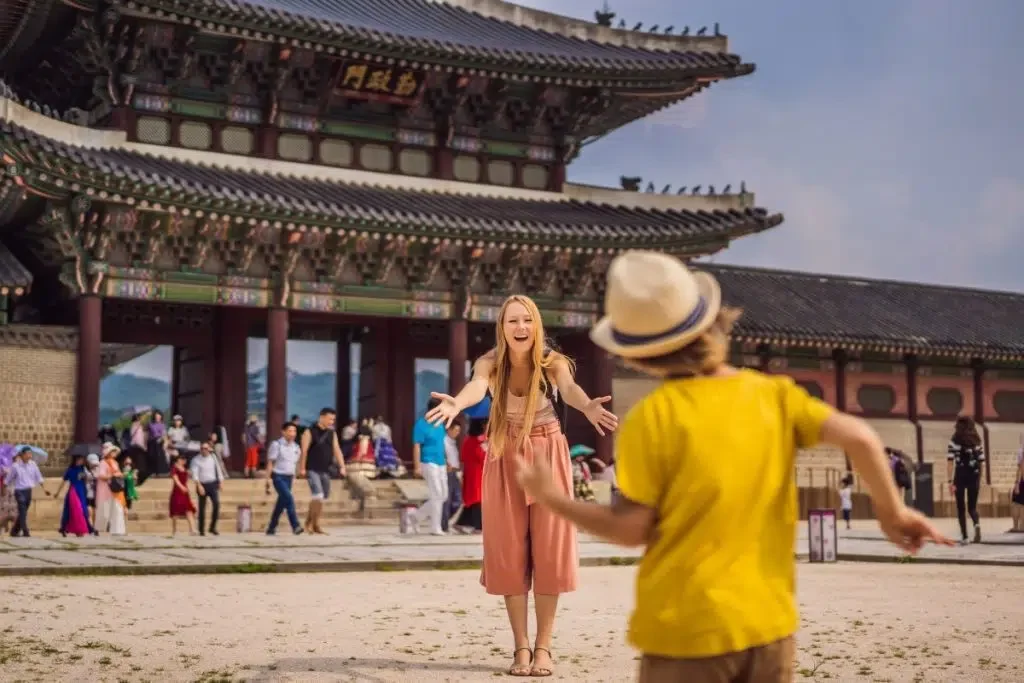
The weather in Korea is awesome. Even if it rains, you see hundreds of people walking outside. If you’re planning to visit during the summer, make sure to use lots of sunscreens. Getting sunburned in Korea is very common, and it has happened many times to me.
If you ever have the opportunity to visit Korea during the spring, make sure you do. It’s beautiful with all those cherry blossoms. You can’t find these anywhere else in the world, and this has been one of the reasons why I keep coming back to Korea.
The majority of people that are planning to visit Korea are often visiting during vacations. This is also when it’s the busiest on the streets, but that makes it even more fun.
10. Easy and Fast Transportation
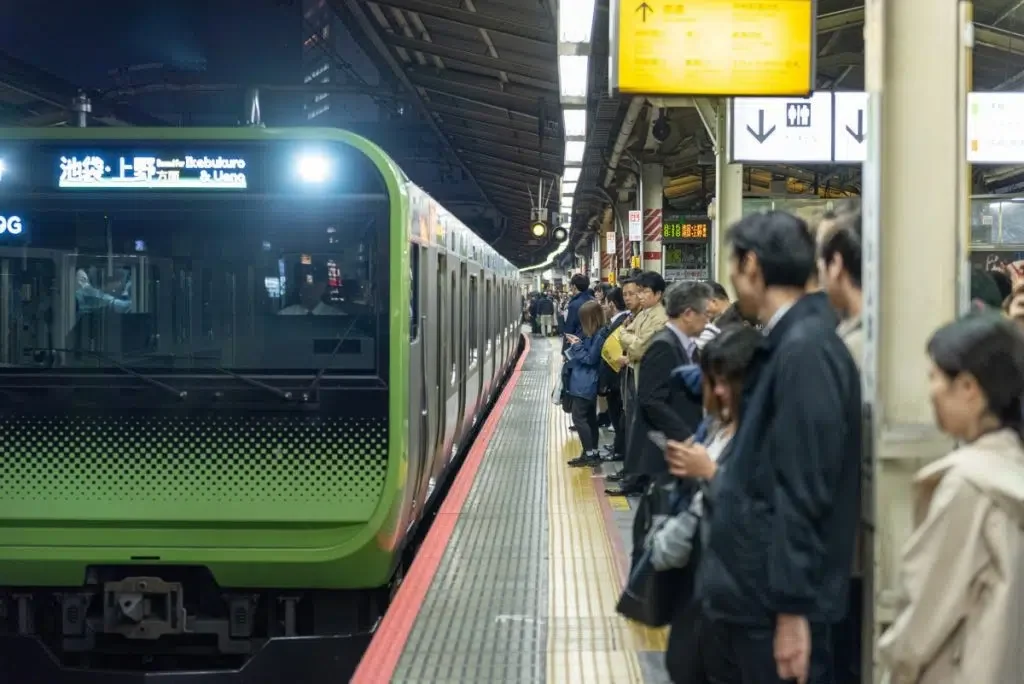
Using transportation is very easy and fast in Korea. It doesn’t require much knowledge since even people that can’t read Korean can easily travel. I’ve been to Korea multiple times now, and traveling has been one of the most fun trips.
You get to see many beautiful places while also feeling comfortable. Every time I’m traveling to another city in Korea, it’s a pleasure to travel by train. It’s one of the best transportations I’ve ever used, and I hope my other countries will follow.
I highly recommend getting a Korean rail pass , especially if you’re planning to travel a lot through Korea. Traveling to Jeju island and other smaller villages is easy but make sure to plan in advance. You don’t want to get lost.
What I normally do is plan the whole trip and buying the tickets in advance, which’s less expensive, and the stress is also gone.
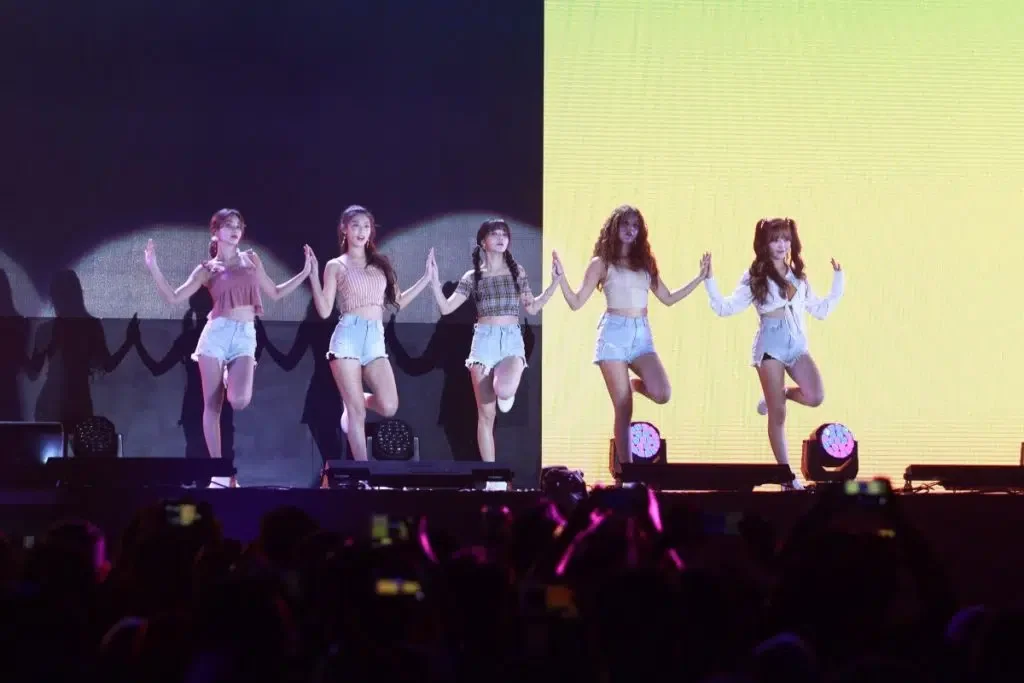
K-pop is huge in Korea and has slowly become one of the most popular music genres worldwide. The Kpop boyband BTS has been blowing up lately, which makes K-pop as a music genre also get more popular. If you’ve never heard about this, you’re really missing out.
What I really like about K-pop is that there are many different groups. In fact, there are too many to follow them all. However, the ones that are the most popular often have the best songs. I highly recommend you checking some groups out, especially if you’re planning to visit Korea.
K-pop is one of the main reasons why foreigners visit Korea, and it’s a great destination for tourists . When visiting Korea, make sure to visit a lot of K-pop cafes that are started by idols themselves.
Which City Should You Visit In Korea?
The city that’s most visited in Korea is Seoul, and the main reason is because of the wide range of activities you can do. It’s affordable, and there are many other foreigners you can meet. Another plus is that there are many students that live in Seoul , which makes it even more attractive.
Why Do People Still Visit North Korea?
The majority of people that still visit North Korea are often the ones that want to know more about the history or find some secret hidden things they don’t show to the outside world. Those people don’t go the North Korea to enjoy and relax because they’re keeping their eyes on you 24/7.
Now that you’ve come to the end of this article, you’ve probably known the 11 reasons why people want to visit Korea. So back to the question, is Korea worth visiting? Yes, in my opinion, it definitely is because of the great activities you can do.
The nightlife, food, and much more things you can do make Korea really special. Even if you’re into fashion, Korea is a great hotspot to build new connections and meet people. Korea has been attracting more tourists every year.
This is probably because of Kpop, BTS has been blowing up lately, and many other Kpop groups. Other reasons could be because people really enjoy visiting Korea and like sightseeing.
Enjoy the article?
You'll love my daily email! Learn something new about South Korea every single day. It's completely free. <3
About The Author
You May Also Like

10 Best Korean Toners for Dry Skin (2024 Updated)
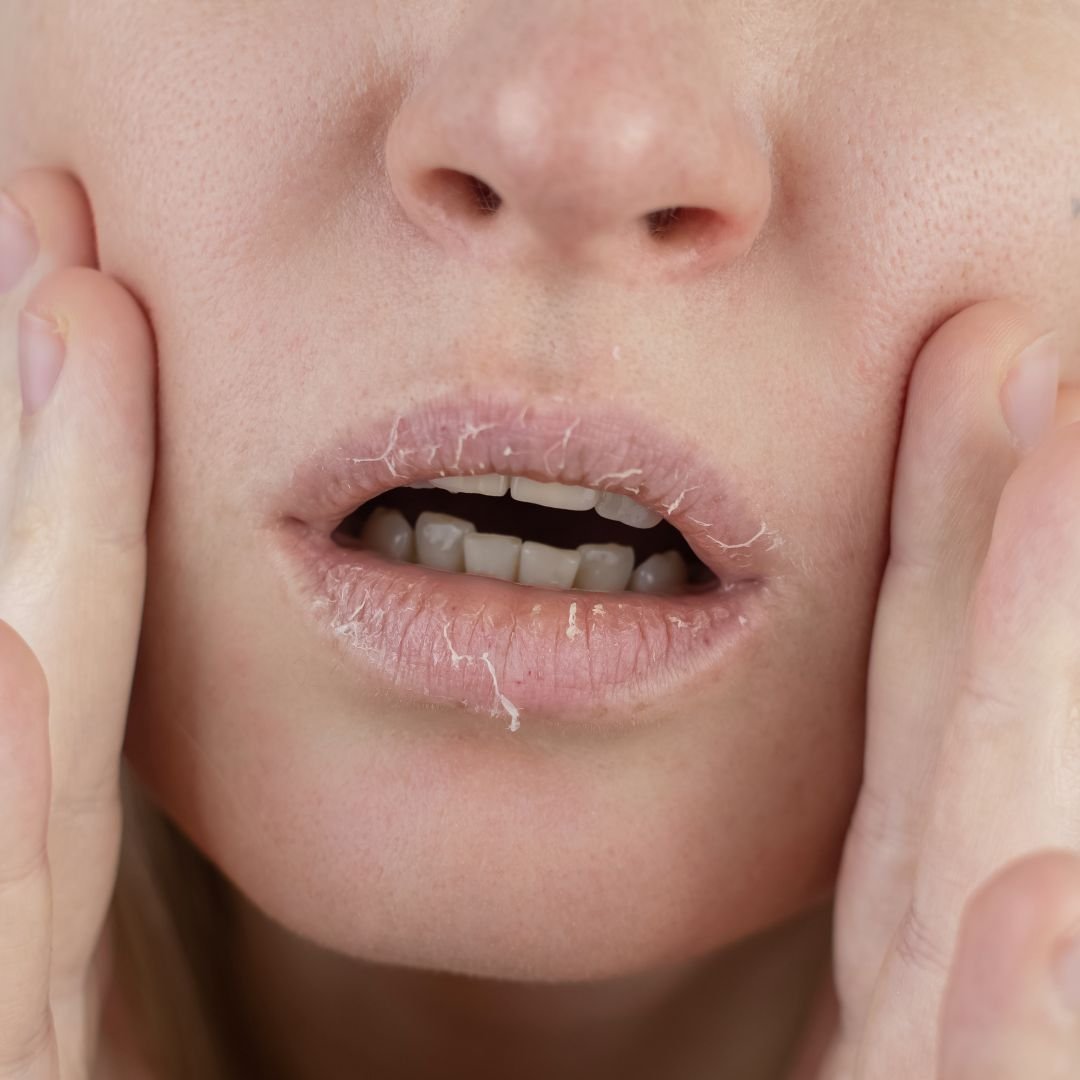
The 8 Best Korean Essences for Dry Skin (2024 Updated)

24 Best Korean Skincare Brands of All-Time

Is Korean Skincare Cheaper in Korea?

How Long Does It Take for Korean Skincare to Work?
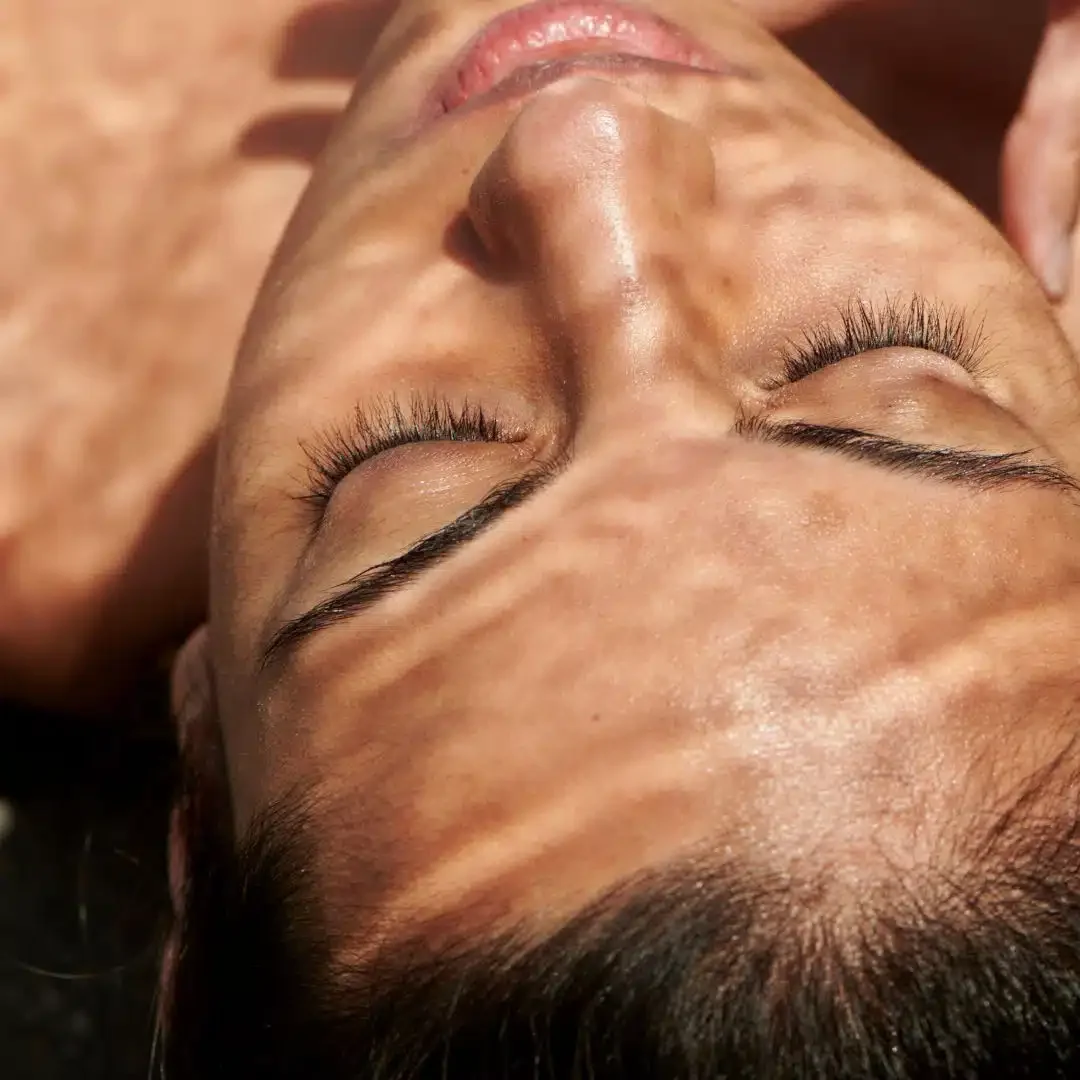
Is Korean Skincare Similar to Japanese?

© 2024 TheKoreanGuide.com | As an Amazon Associate, I earn from qualifying purchases.

10 BEST REASONS TO VISIT SOUTH KOREA
WHY VISITING SOUTH KOREA? IS THERE ANYTHING SPECIAL ABOUT SOUTH KOREA? WHEN IS THE BEST TIME TO VISIT KOREA?
The “Land of the Morning Calm”, is one of the last places in the Far East to open up to travelers from all over the world.
You should visit South Korea at least once in your lifetime!
South Korea has a lot to offer: a rich and unique Asian culture, amazing Buddhist temples, UNESCO World Heritage Sites, delicious and healthy cuisine, and a world-class city: Seoul, with everything from luxury hotels, high-tech stores, and places to go out at night.
In this post, we listed the top 10 reasons why you should visit South Korea at least once in your lifetime!
To start, here is a short video clip showcasing what South Korea has to offer:
10 REASONS TO GO TO SOUTH KOREA
1. south korea has delicious food.

You’ve probably heard of kimchi already (spicy fermented cabbage). In South Korea, you will have it practically at every meal. It is also considered one of the five healthiest dishes in the world.
However, Korean food is much more than that! We even dare to call it a food heaven! Here are some of the most amazing dishes: Ddeokggochi, Odeng, Hotteok, Egg Bread, Tteokbokki, Kimbap, Bibimbap, Soy sauce crab, Jjamppong, Korean BBQ and so much more! Everything is so delicious.
Everyone knows Vietnamese spring rolls, Japanese sushi, and Chinese sweet and sour pork. Unfortunately, the unique Korean cuisine is only starting to become known around the world. Rightfully so, as it deserves to be recognized for its great benefits on the body and mind, but also for its spicy, sweet, and salty flavors.
The good part is that food in South Korea is very affordable. So enjoy as much as you can. Visit South Korea and you should spend an entire day roaming street markets trying those rich and delicious flavors.
2. Visit gorgeous Palaces

Despite being very dense and sometimes stressful Seoul offers travelers havens of peace like temples or royal palaces, surrounded by greenery. The Changdeokgung Royal Palace is a perfect example. It is a UNESCO World Heritage Site and is known for its architecture typical of the Joseon dynasty.
Also worth seeing is the Jongmyo Shrine, the oldest Confucian shrine, the Gyeongbokgung Royal Palace, the National Museum or the Jogyesa, Jingwansa ( more info here ), and Bongeunsa temples.
Spend the night at a temple, with the temple stay program
For a unique experience while you are traveling to South Korea, spend a night at a temple and learn more about the Korean culture from Buddhist monks. You can check out the Temple Stay website, to see available temples and to book your stay. We highly recommend it. You can click here for more information.
3. Korean stunning nature

If you ask us, we prefer nature to big cities. So when we decided to move to Seoul we weren’t quite sure if we would like it.
However, the nature in South Korea, is what impressed us the most, by far. Probably because we had no expectations and had no clue about its natural wonders.
South Korea is made up of 70% of mountains and it is possible to hike many of them throughout the country to enjoy a unique and very preserved nature.
Even Seoul is surrounded by beautiful mountains. Hiking the Bukhansan is a must-do while in Seoul.
As soon as you go outside Seoul, there are so many incredible sights. Take for instance the Boseong Green Tea Plantation , which is for us one of our most memorable trips in South Korea. ( click here to know more about it ).
Also in the Southern area, you can see stunning rice paddies. Head to Namhae , in a place called Gacheon Daraengi village to admire the rice terrace. It looks similar to Bali! We did not expect to see such things when moving to South Korea.
The natural beauty of South Korea is another awesome reason why you should visit this country.
4. Its modern architecture

As contrast with its traditional temples and natural wonders, South Korea is also a very modern society.
In 2010, Seoul was elected as a World Design Capital, demonstrating impressive urban design and implementing a concrete plan to achieve economic, social, and cultural development through design.
Simply head to Dongdaemun Design Plaza (DDP) to understand what design and modernity mean in Korea. DDP is the newest and most iconic landmark of the Korean design industry. It is located in the center of the Dongdaemun area. Once you are there, you will feel like you are in the future.
All around Seoul, you will see many modern buildings each very unique, some extravagant, and some blending perfectly with the traditional Korean culture.
5. Seoul, a fantastic city

When thinking about South Korea, the first thing that comes to mind is probably its capital city, Seoul.
Seoul is currently experiencing a wave of creativity. From fashion to cuisine, architecture, and art, the city has become trendy in the international scene. Its many hip residents have helped create a future-proof city that still honors its distinctive past.
Across the city, temples and skyscrapers coexist, as acclaimed chefs merge traditional dishes with tasty new trends in famous South Korean cuisine.
It truly is a city built for the curious, for anyone who doesn’t like to stand still, and, if you’re still not convinced, here are some good reasons to make Seoul the next destination for your trip .
6. South Korea has some of the most stunning cafes
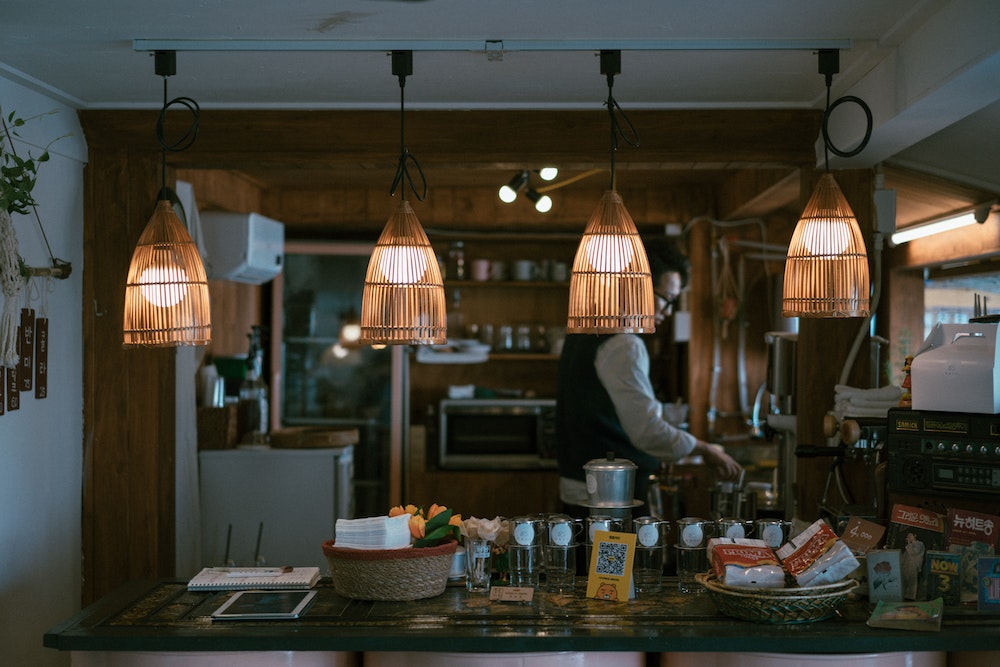
If you ask a Korean what he would like to do later, the chances are he/she will tell you that his dream is to open a cafe.
In Seoul alone, there are no less than 18,000 cafes, making it the capital with the most establishments! The number of Starbucks per capita is the highest in the world! Impressive right?
It is said that the first Korean to drink coffee was Emperor Gojong in 1896. This drink was long reserved for the elite. It was not until the 1970s, that cafes became very popular in South Korea. Like, very very very popular!
Koreans love real coffee, the one that is roasted, that is bitter but the aroma of which is so addicting. Foreign baristas team up with Korean brands. South Koreans train and compete in international barista competitions… And the coffee-loving country has many world-champion baristas!
It may sound strange that this is one of the reasons why you should visit South Korea. But, oh yes, Cafes in Korea are amazing and with many different and fun themes.
READ: Here, we’ve listed our favorite outdoor cafes in Seoul.
Finding THE best coffee has even become a favorite hobby of some Koreans who post on social media while traveling through the country in various cafes.
7. Its great beaches

You probably didn’t expect that South Korea has stunning beaches . Well yes, and you can even surf in South Korea ( check out the best spots for surfing here ).
Head to Jeju Island , in the south of the country for instance. It is a very calm island compared to the speed of development of the rest of the country. Many don’t know it, but one can spend a few days enjoying the beautiful white sandy beaches in South Korea! If you go to Jeju Island, make sure to check Hamdeok Beach , one of our favorite beaches in South Korea.
In the east coast of South Korea, head to Gangneung . The east coast is absolutely stunning with miles-long beaches. While living in Seoul, we spent many long weekends there. You can check out our post here to visit Gangneung .
On the West Coast, we particularly enjoyed Taean National Park. It is well known by locals for its kilometers-long sandy beaches. It is also popular for camping (especially at Mongsanpo Beach).
We listed the 25 best beaches in South Korea here, check it out!
Another great reason why you should visit South Korea!
8. Shopping and Korean fashion

Seoul has established itself as one of the most avant-garde cities in the world. Fashion Week, showcasing the latest streetwear creations from the city’s elite designers has become a must-see event for industry enthusiasts.
The influential event, which takes place twice a year, in March and October, is the opportunity for established and up-and-coming South Korean designers to showcase their streetwear styles to industry audiences.
Before, we often referred to Japan when it came to Asian fashion. However, Korean fashion today is in the midst of an explosion. Wander around Korean boutiques looking for unique pieces and dig into thrift stores to have a feel for Korean fashion.
Also when it comes to cosmetics, you can stock up on masks, treatments, make-up, etc. South Korea has a huge number of cosmetics stores.
The main shopping areas are Myeongdong, Hongdae, and Gangnam (head to Garuso-gil, our favorite street in Gangnam).
9. Korean culture and its people

Koreans are often compared to the Latins of Asia and for good reason: they are proud, touching, and curious. Koreans will not hesitate to come and chat with you.
The children will come and greet you and the monks to invite you to drink tea in their temple. Expect to make great human encounters during a trip to South Korea and discover about their culture and history.
Make sure to also visit some Hanoks, these traditional Korean houses. You probably know Japanese ryokans or Mongolian yurts. But did you know that there is a traditional house in Korea called Hanok? These establishments made exclusively from natural materials (wood, mulberry paper, thatch) allow a better union with nature.
You can even spend a night in a Hanok. You will then discover the charms of Korean housing and especially its century-old underfloor heating system. Even though sleeping on the floor on a light mattress can be a bit difficult the next morning, the experience is well worth it!
The best place to see Hanoks is in Jeonju Hanok Village. It is easily accessible by train from Seoul. You can check out our post here for more information.
10. Check out the cherry blossoms in Spring

Just like Japan, South Korea offers an incredible cherry blossoms festival in Spring. Simply walk in a park in any of the Korean cities to admire the trees changing colors and turning pink, purple or white. A magical moment in South Korea.
Spring is a wonderful season to discover the land of the morning calm. We highly recommend that you travel to South Korea during Spring or Autumn. Summer or winter wouldn’t be a very good idea. Check out why here .
READ ALSO: 99 BEST THINGS TO SEE IN SOUTH KOREA
BEST TIME TO VISIT SOUTH KOREA?

Getting excited about traveling to South Korea ? Oh yes, you absolutely should be. However, be aware of the 4 very different seasons, which can make your trip the most amazing one, or the worst one depending on which month you are going to South Korea.
The climate in South Korea is divided into four very distinct seasons. Winters from late November to early March are Siberian cold, and fairly dry, especially in the northern area. The summer, on the other hand, is rather hot and humid and is accompanied by a few sometimes quite dangerous typhoons. Note that during this monsoon period, the rains are generally torrential. Spring and autumn are the most pleasant seasons (cool and sunny).
In general South Korea is rather sunny the whole year except for the months of Summer. The clear blue sky is the norm.
However, because of the extreme change in temperature, it is therefore very important to choose the right time for your trip to South Korea. This will influence drastically what you should pack in your suitcase!
For us no doubt, Spring from April to May, and Autumn from September to October, are by far the best time to visit South Korea. More info on the weather in South Korea here .
IN CONCLUSION ABOUT THE BEST REASONS TO VISIT SOUTH KOREA?

South Korea is a land of captivating contrasts, where history and tradition harmoniously coexist with modernity and innovation.
Whether you’re interested in exploring ancient temples, indulging in mouthwatering dishes, immersing yourself in the world of K-Pop, or marveling at cutting-edge technology, South Korea has something for every traveler.
So, if you’re looking for a destination that offers a kaleidoscope of experiences, South Korea should be at the top of your travel list. Come and discover the magic of this enchanting nation for yourself.
We keep posting new articles about South Korea. You can check out all our posts here .
- UNDERSTANDING THE KOREAN CULTURE
- FINDING A JOB IN KOREA
- LIVING IN SOUTH KOREA
- THE BEST TIME TO VISIT SOUTH KOREA
- BEST SKI RESORTS
- AWESOME DAY TRIPS FROM SEOUL
- BEST THINGS TO DO IN SOUTH KOREA
- BES THINGS TO DO IN SEOUL
- TOP ADVENTURES NEAR SEOUL
- FUN THINGS TO DO IN WEEKENDS IN SEOUL
We are Hammer and Guillaume, a fun couple traveling the world. We will take you to some of the most amazing places on earth. Hammer is a yoga instructor and Guillaume a true water baby, enjoying all kinds of water sports. Follow-us to get the latest update about our travels.
Similar Posts

HIKING HALLASAN IN JEJU – COMPLETE GUIDE
Hiking Hallasan Mountain in Jeju is an unforgettable experience. In this post you’ll find the ultimate hiking guide to Mt. Hallasan in Jeju.
![south korea why visit PHOENIX PARK SKI RESORT IN KOREA [FULL GUIDE]](https://afuncouple.com/wp-content/uploads/2022/11/Phoenix-Park-Korea-768x511.jpeg)
PHOENIX PARK SKI RESORT IN KOREA [FULL GUIDE]
Phoenix Ski Resort, is one of the main ski places in South Korea. Here is all you need to know about Phoenix Ski Resort.
![south korea why visit 9 AMAZING YOGA STUDIOS IN CANGGU AND PERERENAN [BALI GUIDE]](https://afuncouple.com/wp-content/uploads/2023/07/BEST-YOGA-STUDIOS-IN-CANGGU-768x512.webp)
9 AMAZING YOGA STUDIOS IN CANGGU AND PERERENAN [BALI GUIDE]
Canggu and Pererenan have evolved into vibrant yoga hubs. Here we listed the best yoga studios in these areas! Check it out.
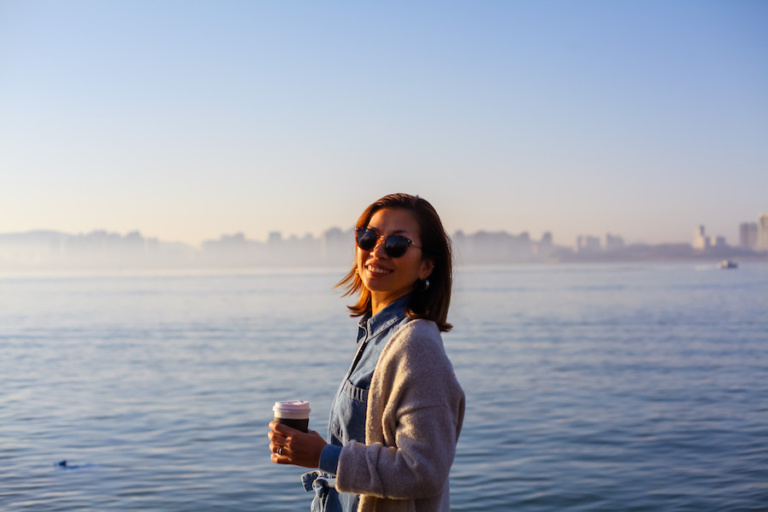
WOLMIDO IN KOREA – BEST THINGS TO DO
Wolmido Island (월미도) is located in Incheon, South Korea. It is the perfect gateway from Seoul for a fun day out by the sea.
![south korea why visit 30 AWESOME THINGS TO DO IN BUSAN [KOREA GUIDE]](https://afuncouple.com/wp-content/uploads/2021/07/Busan-04.jpg)
30 AWESOME THINGS TO DO IN BUSAN [KOREA GUIDE]
Busan is the second largest city in South Korea. Plan at least 3 days to visit this beautiful coastal city. Full guide here about Busan.

SONGAKSAN IN JEJU – COMPLETE GUIDE
Songaksan Mountain is located in the southernmost point of Jeju. Hiking in Songaksan is one of our favorite things to do in Jeju. Full guide!
Leave a Reply Cancel reply
Your email address will not be published. Required fields are marked *
i am person i want to viset
I bet it will be a excellent experience to try Korean style fried chicken if you visit Korea !!!
I am in South Korea it is very nice
Glad to hear that! Enjoy your trip!
- Meet the Team
- Work with Us
- Czech Republic
- Netherlands
- Switzerland
- Scandinavia
- Philippines
- South Korea
- New Zealand
- South Africa
- Budget Travel
- Work & Travel
- The Broke Backpacker Manifesto
- Travel Resources
- How to Travel on $10/day
Home » Asia » South Korea » 26 South Korea Travel Tips You Need to Know! • 2024
26 South Korea Travel Tips You Need to Know! • 2024
South Korea is a tiny country that punches way above its weight in a number of arenas, and that extends to being one of Asia’s greatest travel spots!
The land of KBBQ, the world’s fastest internet speeds, futuristic cities, and a breathtaking mix of ancient and modern, this is one of the best countries in Asia to travel in, and yet it’s criminally underrated.
I spent a few years calling this country home, and I’ve created the ultimate Korea travel guide to help you navigate your way through this gem of northeast Asia.
Whether you’re a first-time traveler or a return visitor, here’s a list of 26 South Korea travel tips you need to know before stepping off the plane!
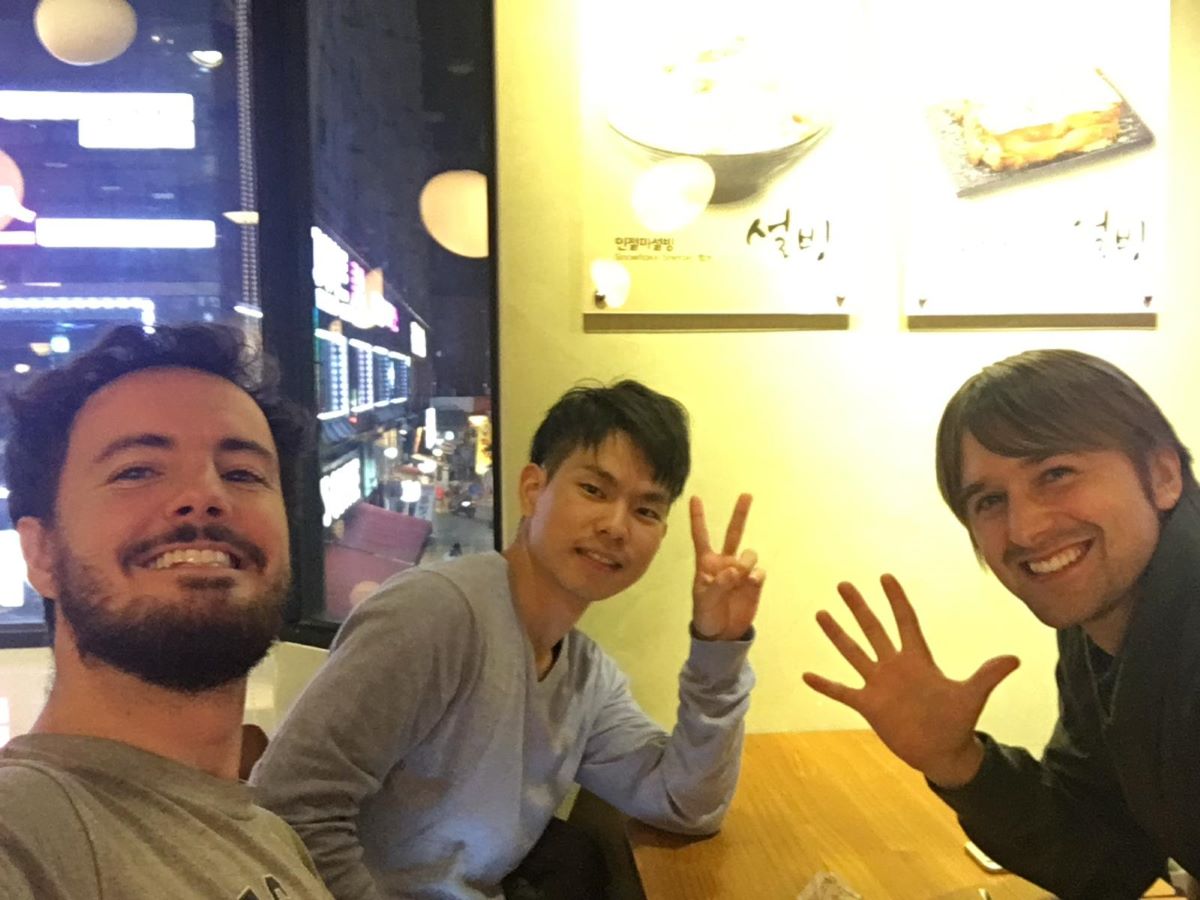
The Broke Backpacker is supported by you . Clicking through our links may earn us a small affiliate commission, and that's what allows us to keep producing free content 🙂 Learn more .
26 EPIC South Korea Travel Tips
After years of living and traveling in South Korea , here are some of the most important tips I’ve learned along the way!
1. Download These Apps!
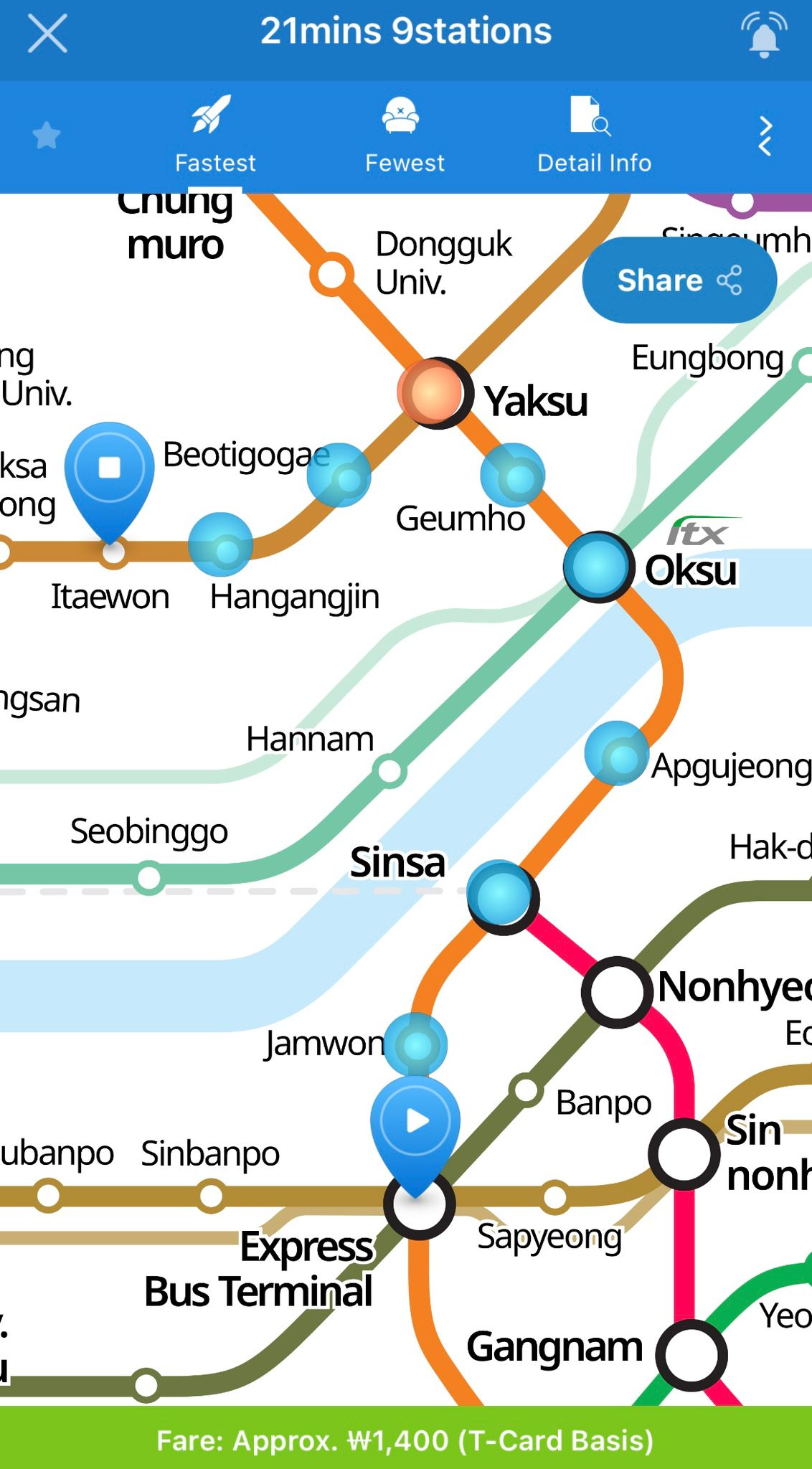
South Korea is one of the most tech-savvy societies on the planet, and you’re going to need to keep up. These apps are just a few of the essentials you want to have to make your trip to South Korea the unforgettable experience it should be.
Subway Korea
Not the most exciting app to download but crucial all the same, this is going to make your time in Seoul so much easier.
With a full, interactive map of Seoul’s ( Korea’s capital city ) absolutely sprawling subway system, Subway Korea tells you exactly which station you need to begin and end at, which stations to transfer at, and how long it’s going to take you from start to finish.
You can find this on the App Store for both Android and iPhone, and a companion app exists for Busan’s smaller (but still pretty big!) subway system.
When it comes to Korean, Google Translate can give you some hilariously bad translations and while that’s always entertaining, you’re going to need to be able to communicate with more than just hand gestures!
That’s why you need to download Papago . It serves many languages and its Korean translations are far better than Google’s, so this is going to make traveling to South Korea for the first time go much smoother.
You can get around places in Seoul with only English, but beyond that you’re going to need some help which makes Papago a must-download.
In my experience, Google Maps isn’t too helpful in Korea, and that’s why you’ve got to download Kakao Maps!
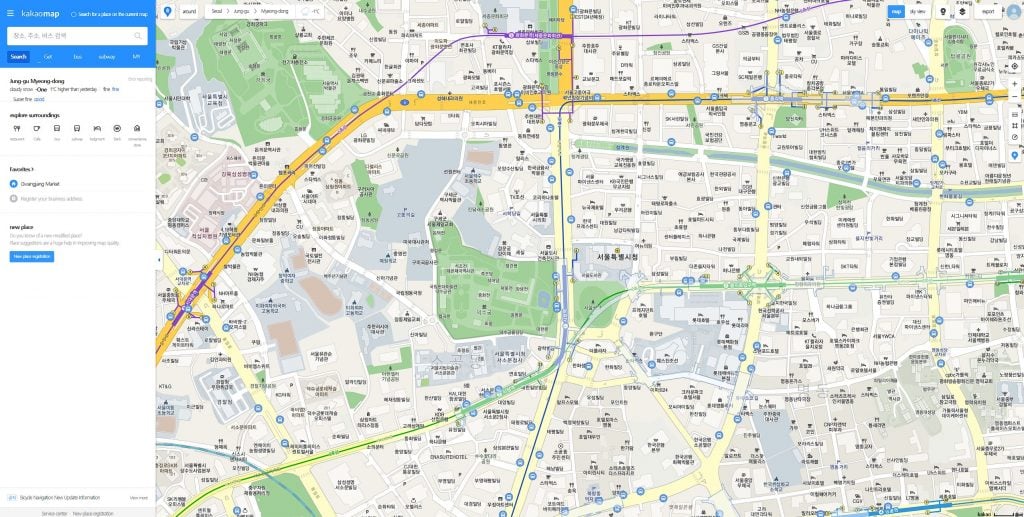
An app made by a Korean company, Kakao Maps is going to provide you with a level of detail, precision, and helpfulness that Google Maps simply can’t deliver.
Whether you’re exploring the city or out in Korea’s gorgeous countryside, this app is the best option for navigating the country.
2. Learn Some Basic Korean Phrases
Having a solid translation app is all well and good, but it’s also important to memorize a few basic phrases in Korean just in case your phone doesn’t come through for you.
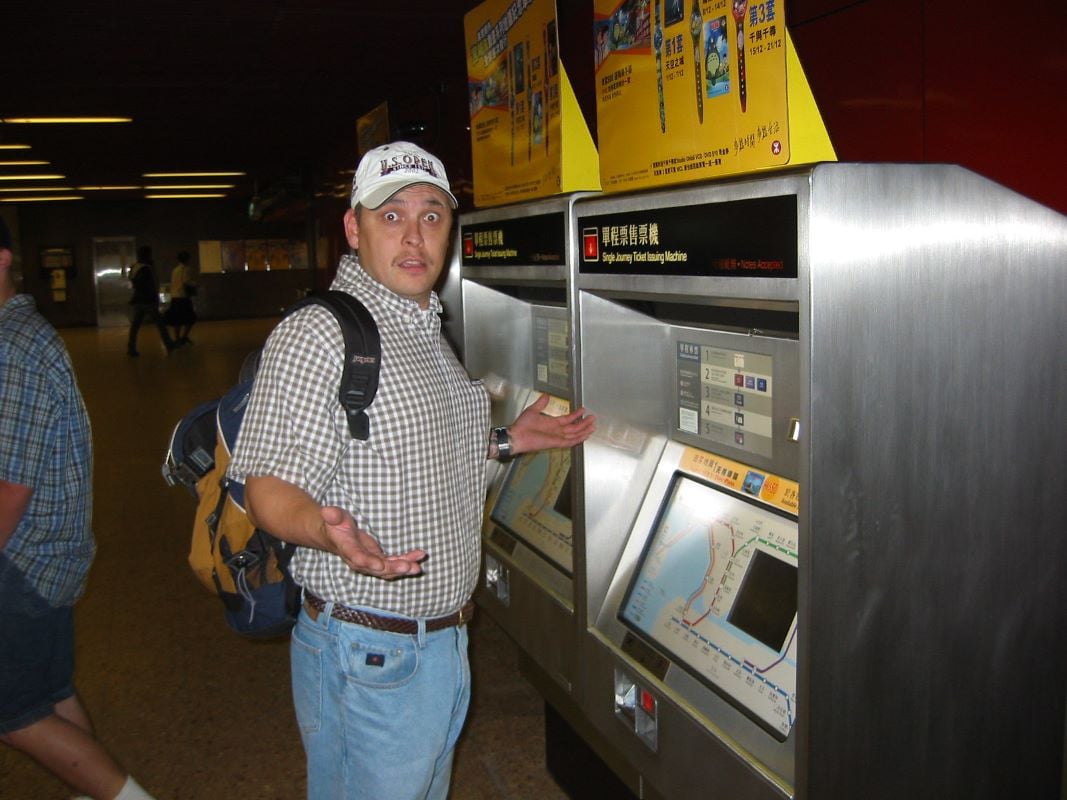
Anyeong Hasaeyeo – Hello
(You might have heard anyeong as meaning “hello” in Korean before and while that’s true, it’s important to say the full phrase because shortening it to anyeong can be seen as disrespectful.)
Kamsamnida – Thank you
Kohn Bae! – Cheers!
Odi / Odi…? – where / where is…?
Hwajangshil – Bathroom
3. Explore the Dramatic East Coast
Staying in Seoul is great, but the country has SO much more to offer.
Korea’s east coast in particular flies far under the radar for most foreigners and isn’t visited nearly enough. But I can attest that it’s easily one of the most epic regions in Korea!
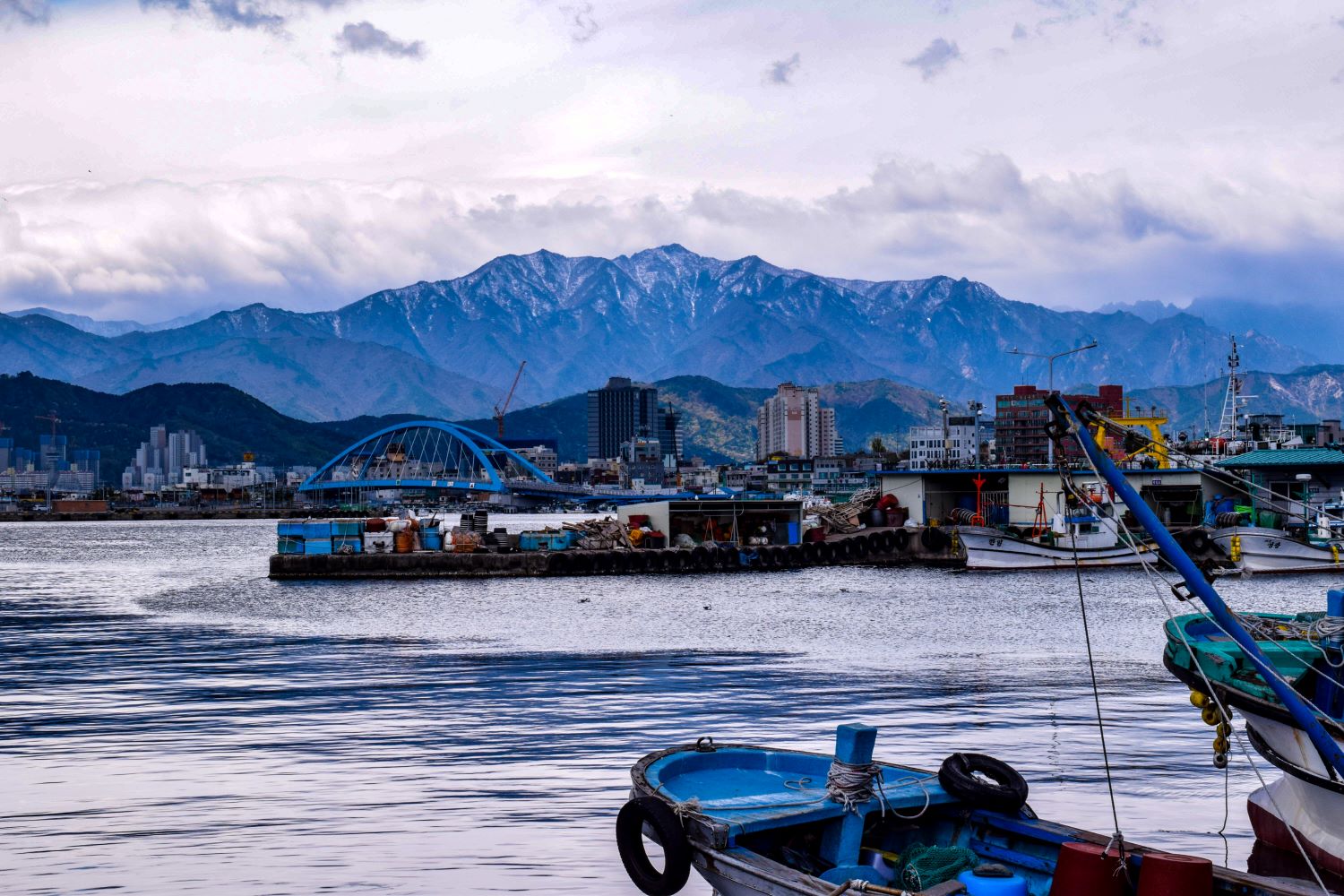
With tall, jagged peaks rising straight out of the sea, the east coast is the perfect place for travelers looking to escape Korea’s ultramodern cities and get out to explore the country’s natural wonders.
The east coast holds some of Korea’s best hiking spots, and Seoraksan National Park in particular is a favorite of mine, especially during winter and spring.
4. Korea is a Shopper’s Mecca
If you’re keen on shopping for the latest fashion or newest tech, South Korea is pretty much unbeatable.
Between Shinsegae, Lotte World, and a TON more, Korea has limitless options for shoppers of all stripes.
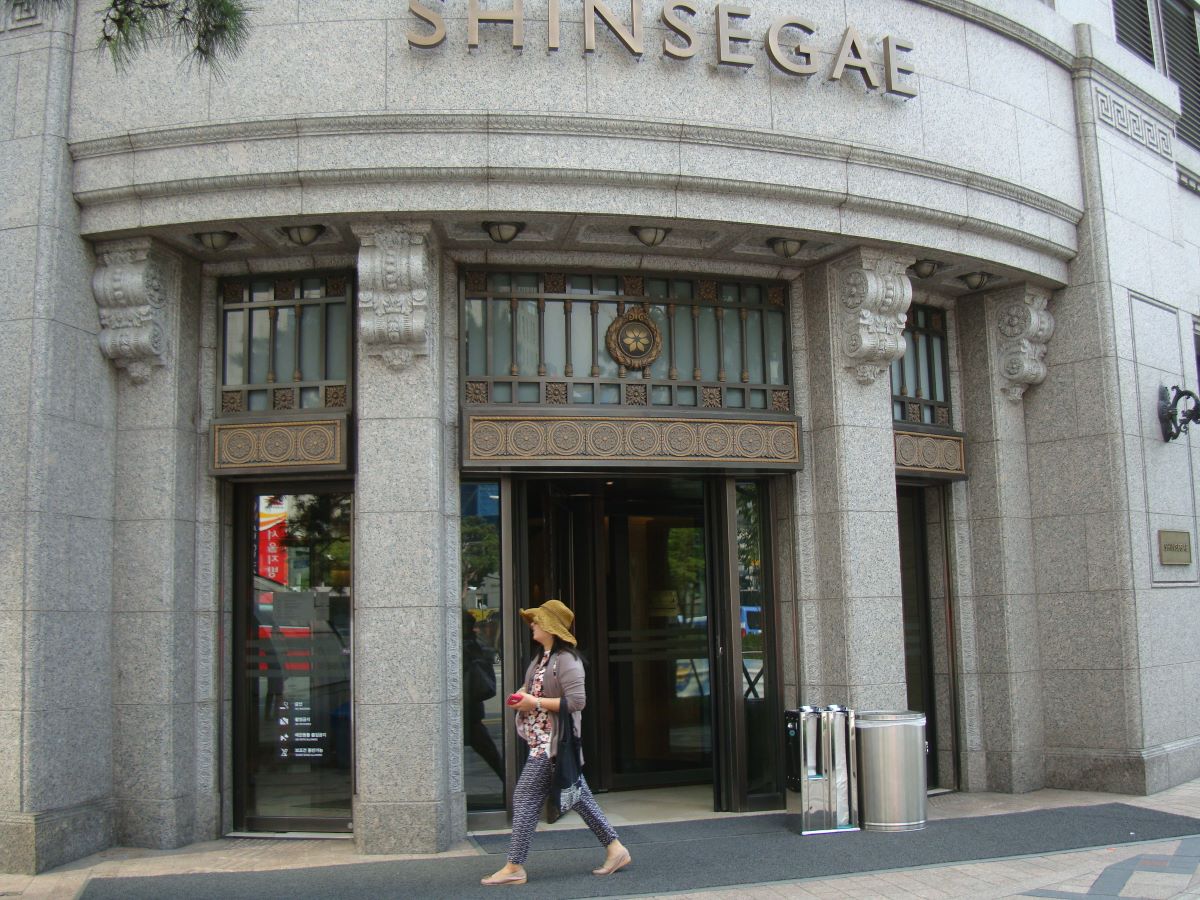
Shinsegae and Lotte are two absolutely massive department store chains in Korea that house countless stores within their walls, and there are so many more on top of those two to choose from and explore.
Your choices really are infinite.
The one thing you need to keep in mind though is that you should be prepared to spend.
Korea is not a cheap country in general, and that extends to its shopping scene. If you’re going to buy a higher-end item here, be ready to shell out a lot of cash.
5. Avoid Drinking Tap Water
Sadly, Korea isn’t a place where you can drink the tap water worry-free. While many places in the countryside have springs with fresh water straight from the mountains, you will need to have a filtered water bottle for your trip!
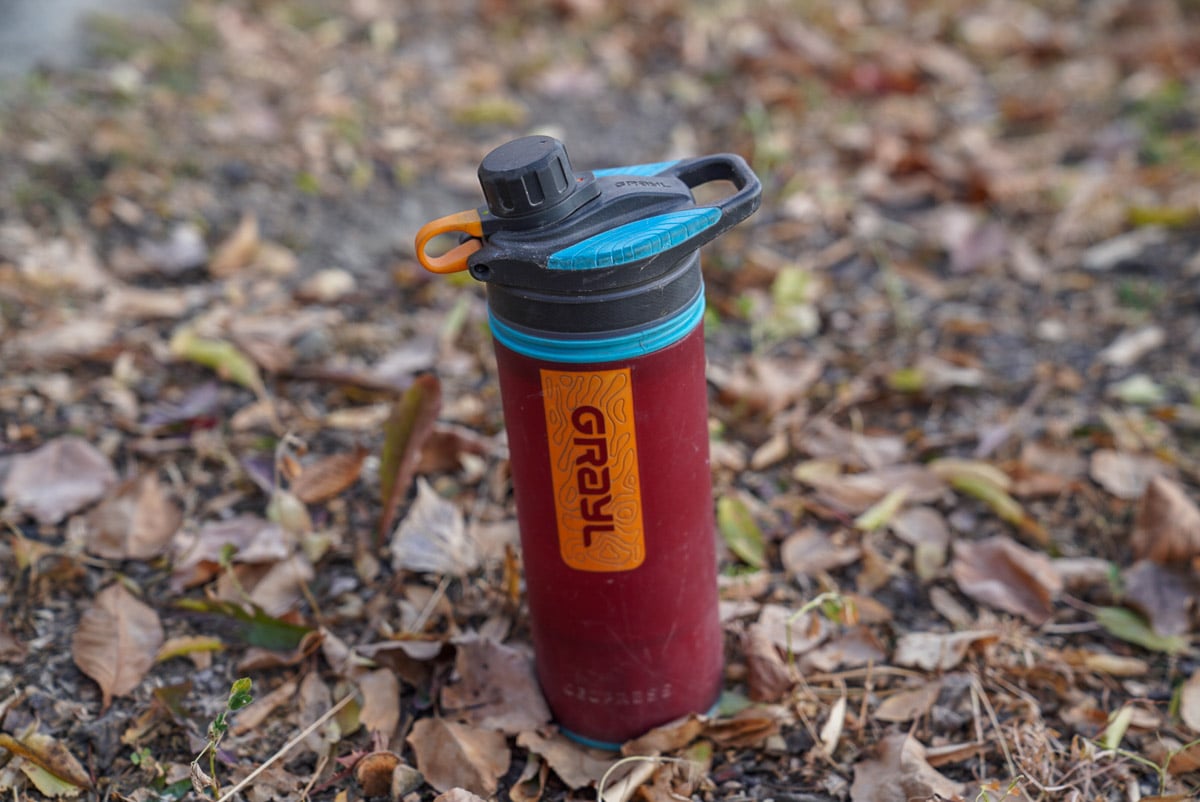
That’s why we strongly recommend you invest your hard-earned cash in getting a Grayl Filtration Bottle to accompany you on your travels!
It’s a reusable, zero-waste system that allows you to drink water from pretty much anywhere and in the long run, will save you countless dollars that you would have otherwise spent on water bottles, filters, and purification tablets.

Drink water from ANYWHERE. The Grayl Geopress is the worlds leading filtered water bottle protecting you from all manner of waterborne nasties.
Single-use plastic bottles are a MASSIVE threat to marine life. Be a part of the solution and travel with a filter water bottle. Save money and the environment!
We’ve tested the Geopress rigorously from the icy heights of Pakistan to the tropical jungles of Bali, and can confirm: it’s the best water bottle you’ll ever buy!
6. Learn How to Get Around in South Korea
Nearly every corner of South Korea is connected by an intricate web of trains and buses that link large cities like Seoul and Busan in the south with the tiny villages and hamlets in the countryside.
Public transportation in Korea is fantastic: it’s reliable, clean, convenient, and always on time!
Even if you’re waiting at a bus stop in the middle of nowhere, if the schedule says a bus arrives at 8:30, it will be there at 8:30, give or take a few minutes.
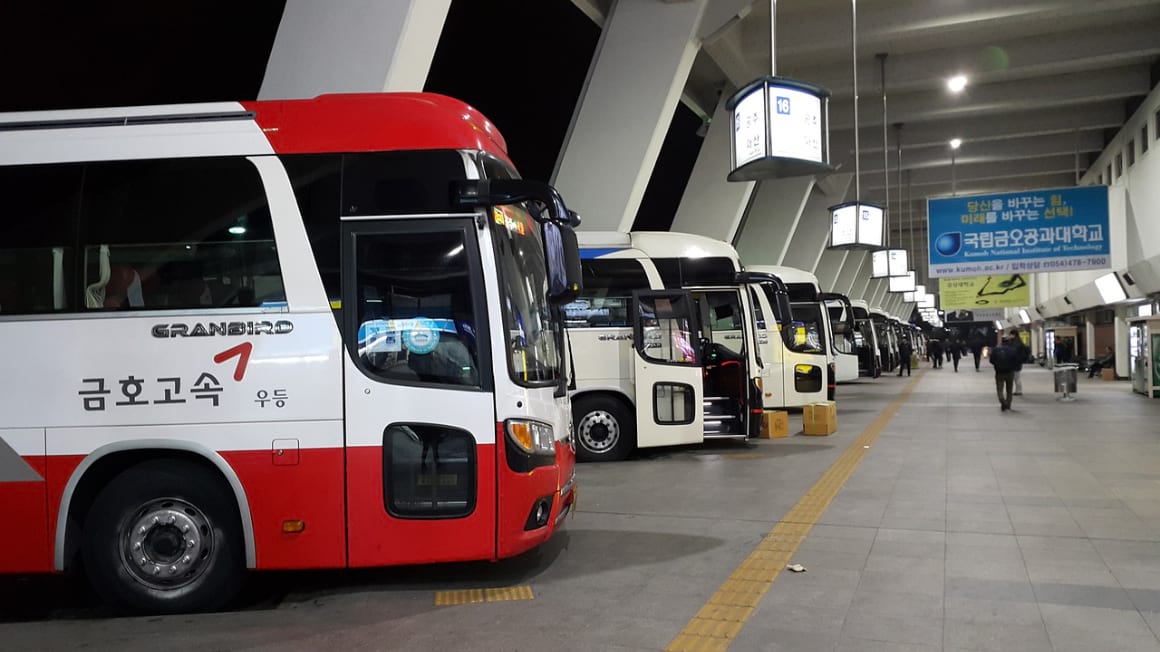
On that note, if you’ve got a bus or train ticket departing at a certain time, make sure you’re there early because you will get left behind if you’re not there on time!
That brings me to one of the most important points of this piece: I highly recommend that you do NOT rent a car or motorbike in Korea if you’re considering it.
While the roads are modern, impressive feats of engineering, drivers here can often be very unpredictable and that can lead to some dangerous situations on the road if you’re not used to it.
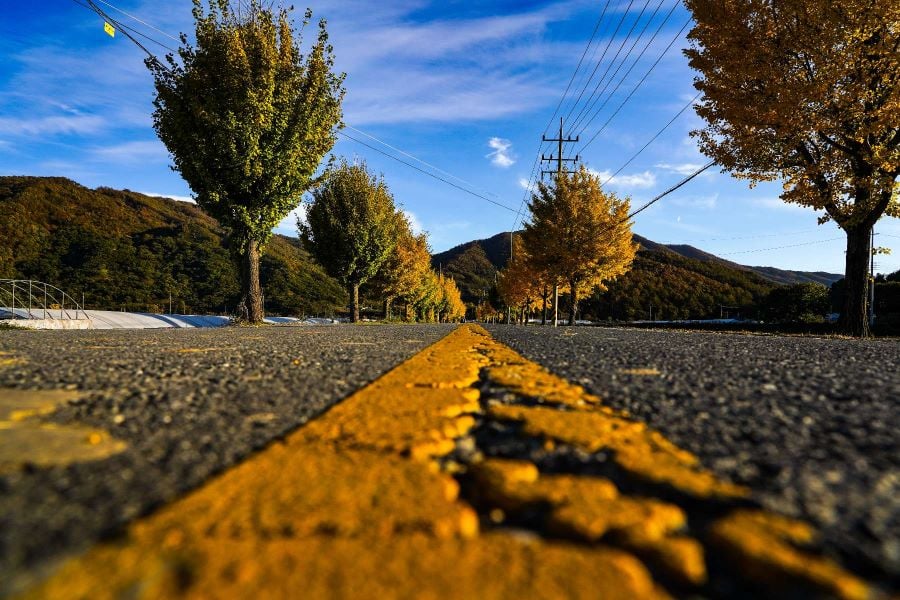
A one-hour motorbike ride between two cities in Korea felt longer and scarier to me than a nine-hour ride on Pakistan’s Karakoram Highway, and anyone who’s made that trip can tell you how much that statement means!
It’s for that reason that I think you should avoid getting your own wheels in Korea, and that risk combined with the excellent public transportation system makes any rentals a needless expense.
When going between different cities, you can use Trip.com to book your train or bus tickets.
Remember to book in advance because if you show up and try to buy the ticket the day of your intended departure, there’s a good chance you’ll be out of luck.
Simple Seoul Travel Tips You Need to Know
Whether you’re traveling to South Korea for the first time or coming back for more, you’ll be spending a ton of time in Seoul so it’s good to know how to stay on top of things when exploring this behemoth of a city!
7. Invest in a Month-Long Tmoney Card
You’ll probably be using public transportation a lot, so it’s best to invest your money where it counts to get the most bang for your buck.
Bus and train fares in Korea are cheap anyway (about one dollar or less per ride), but the government just launched a new transit card option which allows passengers to spend $49 for a one-month pass and get unlimited access to Seoul’s huge network of trains and buses, as well as public bicycle rentals.
The card is rechargeable, so if you plan on staying in Korea for longer than a month, this is a great option to make your Seoul itinerary easier to execute.
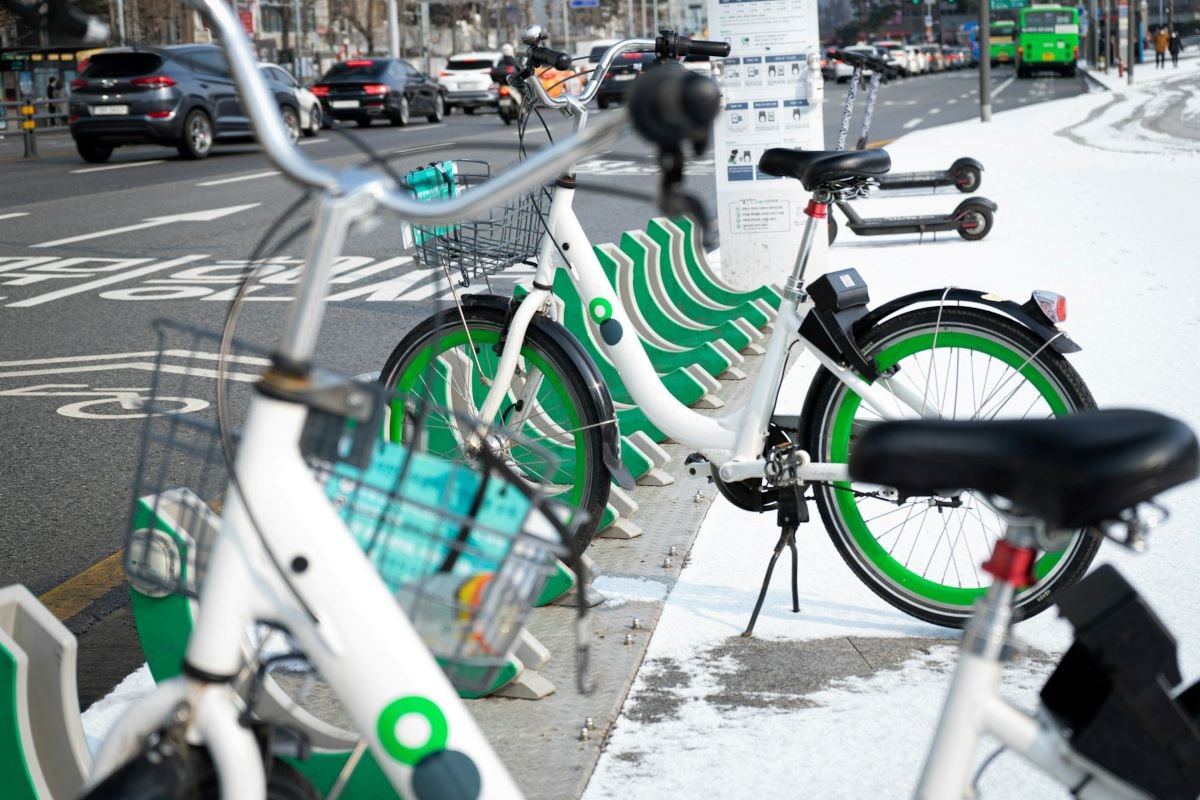
You can get one at any major subway station, but sadly this card only covers public transportation in Seoul for now, so keep that in mind before buying.
If you’re just looking for a good old-fashioned Tmoney card without the month-long plan, you can get one at any convenience store or subway station and charge it with cash.
8. Make Reservations in Advance if Possible
When it comes to accommodations or more popular restaurants/cafés, it can be difficult in Seoul to simply show up to a place and expect to find an open spot, especially in high season.
This is a country where it’s best to make your reservations beforehand. If you don’t, there’s a very good chance that you’re going to miss out and get turned away.
9. Try Seoul’s amazing street food
Korean cuisine has plenty of tasty street snacks that are quick and cheap, making this one way to cut costs in Seoul! There’s no shortage of markets and stalls offering a quick bite, so be sure to check them out.
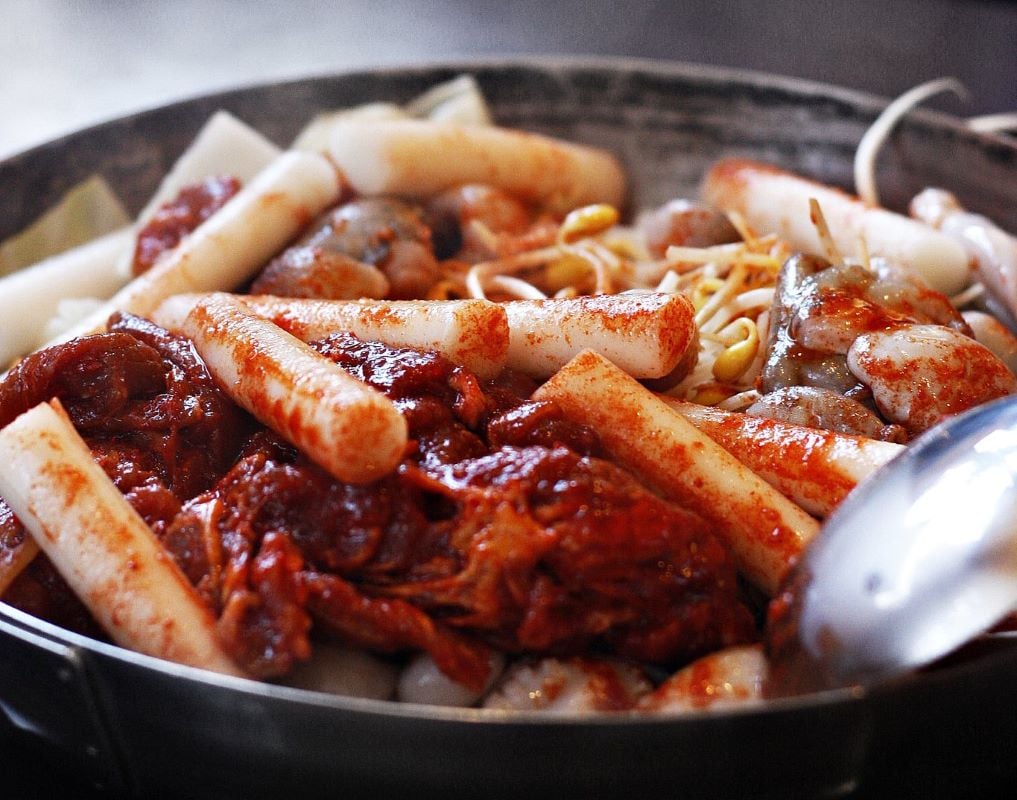
Kimbap and tteokbokki are two classic Korean eats that are cheap, delicious, and filling.
10. Understand Internet and Data in South Korea
Wifi is everywhere and internet speeds are lightning fast, but you’ll still want to stay connected when you’re on the move!
SIM cards and data plans tend to be pricy by Asian standards, and while you can get Korean e-SIMs at the airports, there’s a better option: a WiFi Egg rental.
You can check out a list of rental options here , and any of them will keep you connected to Korea’s ridiculously fast internet while you’re on the go without breaking the bank.
11. Korea Isn’t Cheap
Expenses in Korea aren’t quite as scary as Western Europe in summer but this isn’t Thailand either, so you need to be prepared to spend a little more.
Hostels will cost at least $15 USD/night but usually a bit more, and proper meals will start at around $8.
Public transportation is cheap, but going to a different city is going to cost a bit more: between $10-$50 depending on how far you’re going.

We’ve tested countless backpacks over the years, but there’s one that has always been the best and remains the best buy for adventurers: the broke backpacker-approved Osprey Aether and Ariel series.
Want more deetz on why these packs are so damn perfect? Then read our comprehensive review for the inside scoop!
12. Bring Masks to Protect Yourself from Pollution
Korea and neighboring China are heavily dependent on coal for their energy needs, and as a result, the skies can occasionally have dangerous levels of smog, especially in big cities.
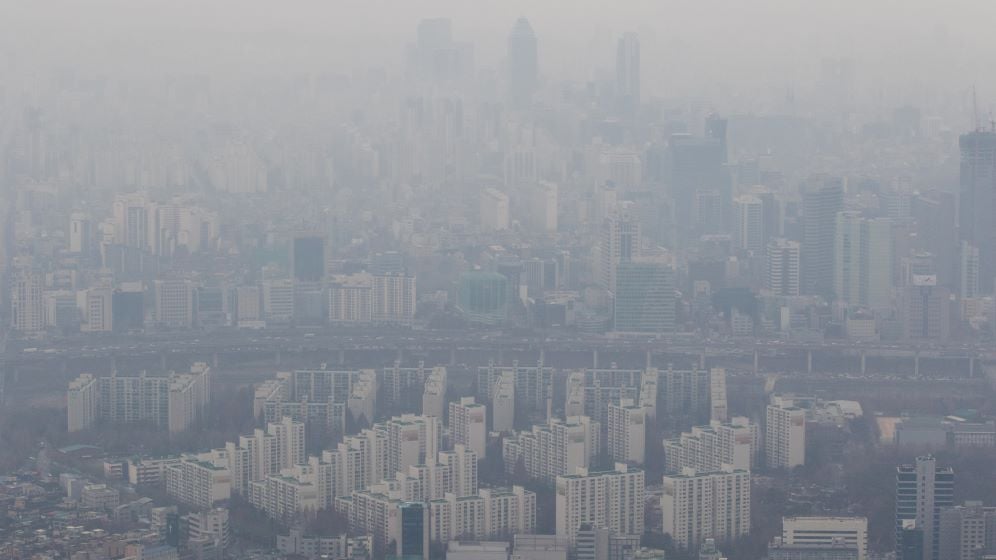
Masks are technically not an essential, but you’re going to want to have a few masks on hand to help you deal with this problem.
Just to give you an idea of how bad this can be sometimes: I’ve had an easier time breathing whilst hiking in difficult conditions at 5000m+ altitudes than I’ve had while just sitting outdoors at a café in Seoul trying to enjoy my coffee on a day when the pollution is at its worst.
13. Pay Attention to the Rules
Koreans are meticulous rule-followers, and it’s very important to keep this in mind when planning a trip to South Korea.
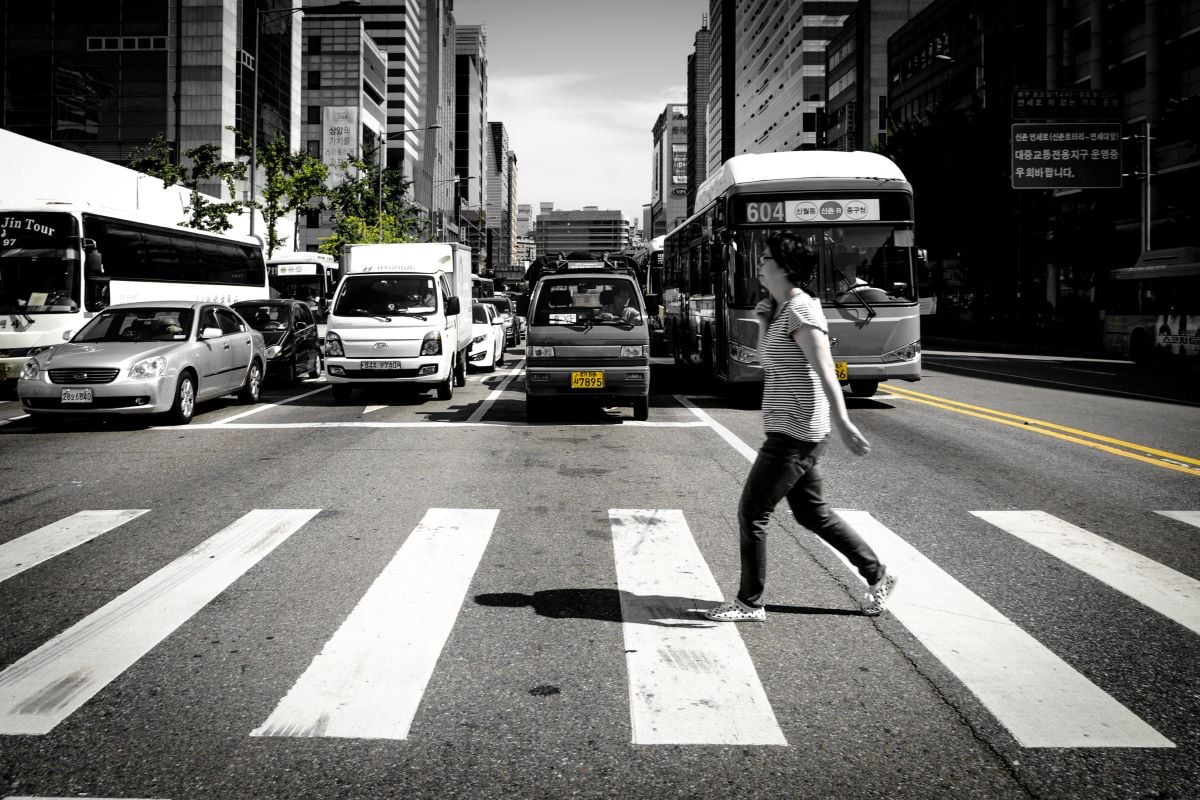
No matter how ridiculous a rule might seem to you, Koreans will obey it almost without exception. Even if it’s 3am and the roads are completely empty, a pedestrian is going to wait until the crosswalk turns green before they think about venturing out onto the empty road while the sign is red.
Many countries are really loose with the law but this is not one of them, so make sure that you’re completely respectful of the rules when you’re visiting South Korea.
A Few South Korea Cultural Travel Tips
Respecting Korean societal norms are SUPER important. Let’s get into a few of them…
14. Don’t tip
This might come as a huge relief to visitors, especially for Americans, but it’s important to know that tipping isn’t really a thing in Korea. Very rarely a place will ask for tips for its workers, but otherwise you should avoid tipping in all situations.
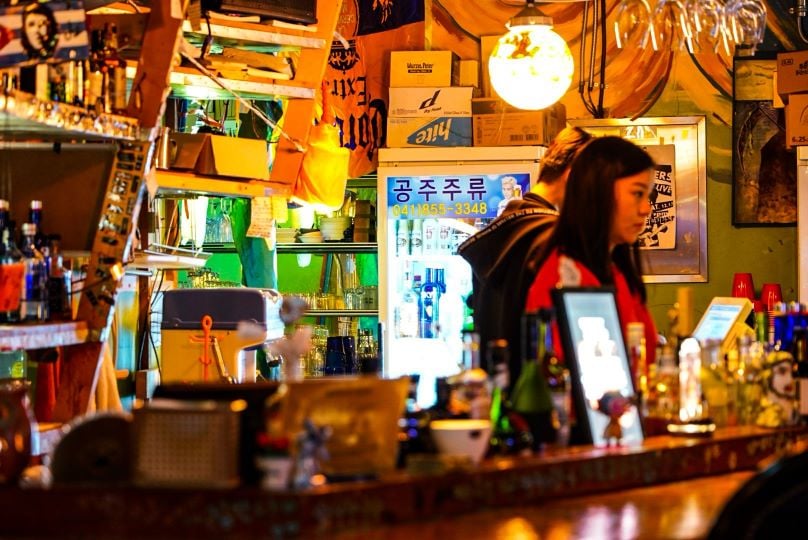
15. Politeness and respect are non-negotiable
Korean culture is deeply rooted in visibly showing respect for others, and it’s important to adopt that attitude while you’re visiting South Korea. Sass and sarcasm are looked down upon in nearly all situations so it’s best to avoid using those entirely.
16. Koreans tend to be reserved
While Koreans are very polite and hospitable, they are usually pretty reserved and it takes awhile for them to open up, so don’t worry if it seems like they’re not too friendly at first!
17. Learn to Read Korean
Okay, I realize this might sound insane, but hear me out!
Hangul – the name for the Korean alphabet – is incredibly easy to learn how to read and will take you an hour or two max to get the basics down.

Just a bit of study goes a long way in helping you read signs and menus, making this a great return on investment for your time.
Even if learning languages isn’t your thing, I promise you that this is way easier than it sounds and strongly recommend giving it a try!
18. Understand When to Visit South Korea
Autumn and Spring are majestic.
Japan gets a lot of recognition for its stunning seasonal colors (and rightly so!) but these seasons in Korea are just as magical and can’t be missed.
It’s also way less crowded than Japan, and the colors you’ll see here are simply unreal.
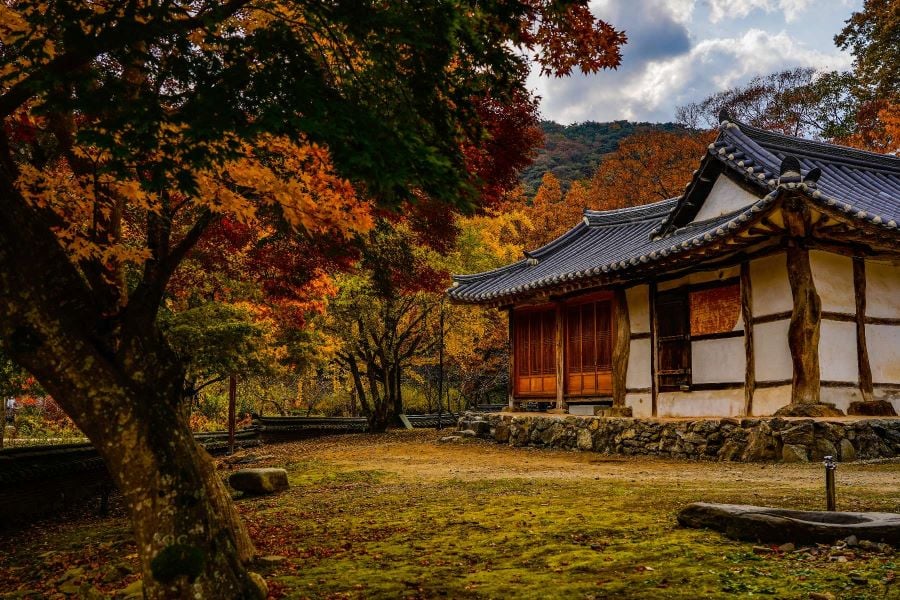
These are not busy seasons in Korea as far as foreign tourism is concerned, so you’ll have a lot more space than you would in summer.
You’ll have to get out of the city to see these colors at their best, and Magoksa Temple is one of the most stunning locations in Korea during peak foliage!
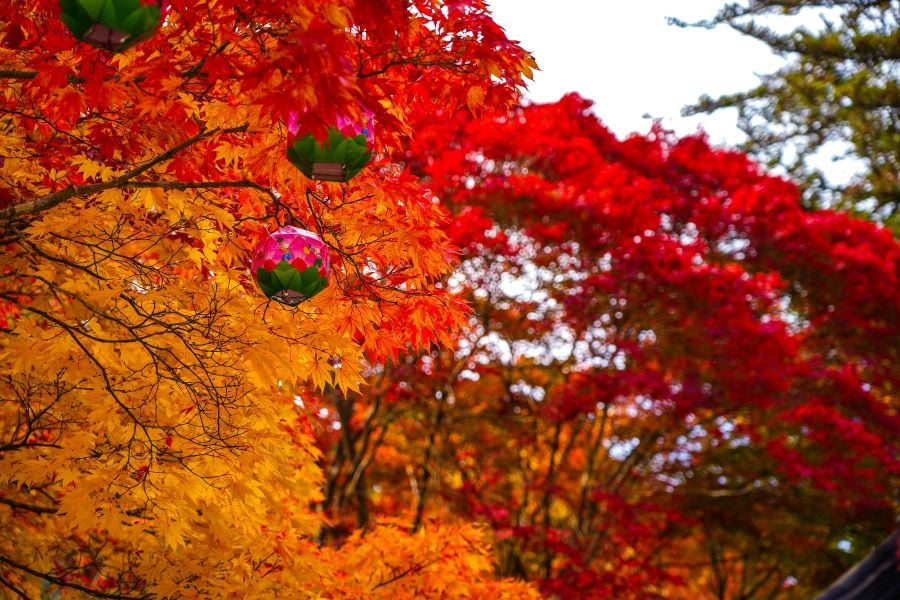
Magoksa Temple is not too far from Seoul so it’s very accessible. If you’re in Korea during Autumn, this spot is a can’t-miss.
If you’re keen on visiting South Korea during Spring, you will see spellbinding cherry blossoms pretty much everywhere you go, but Seoraksan National Park on the east coast is one of the best spots in the country this time of year.
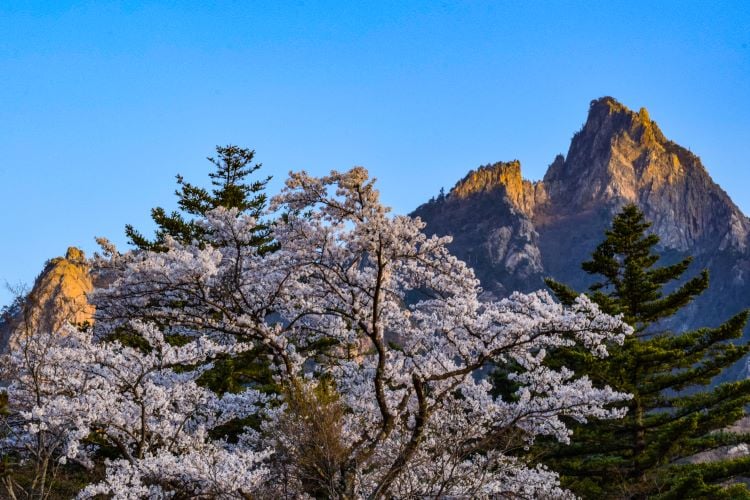
This one’s a bit further out of the way as it’s a 3-hour bus ride from Seoul, but it’s more than worth it! I’ve made the trip out to Seoraksan multiple times and it still isn’t enough.
Going to South Korea in summer is going to be a non-stop sweatfest and while winter can be utterly breathtaking, it’s freezing cold, so Autumn and Spring are the ideal seasons to visit Korea.

Stash your cash safely with this money belt. It will keep your valuables safely concealed, no matter where you go.
It looks exactly like a normal belt except for a SECRET interior pocket perfectly designed to hide a wad of cash, a passport photocopy or anything else you may wish to hide. Never get caught with your pants down again! (Unless you want to…)
19. Seoul is a Foodie’s Paradise
Not only does Seoul have tons of excellent spots for trying Korean food, but the capital is also home to cuisines from all over the world! Italian, Japanese, Mexican, barbecue of all kinds, and so much more: you name it, Seoul has it.
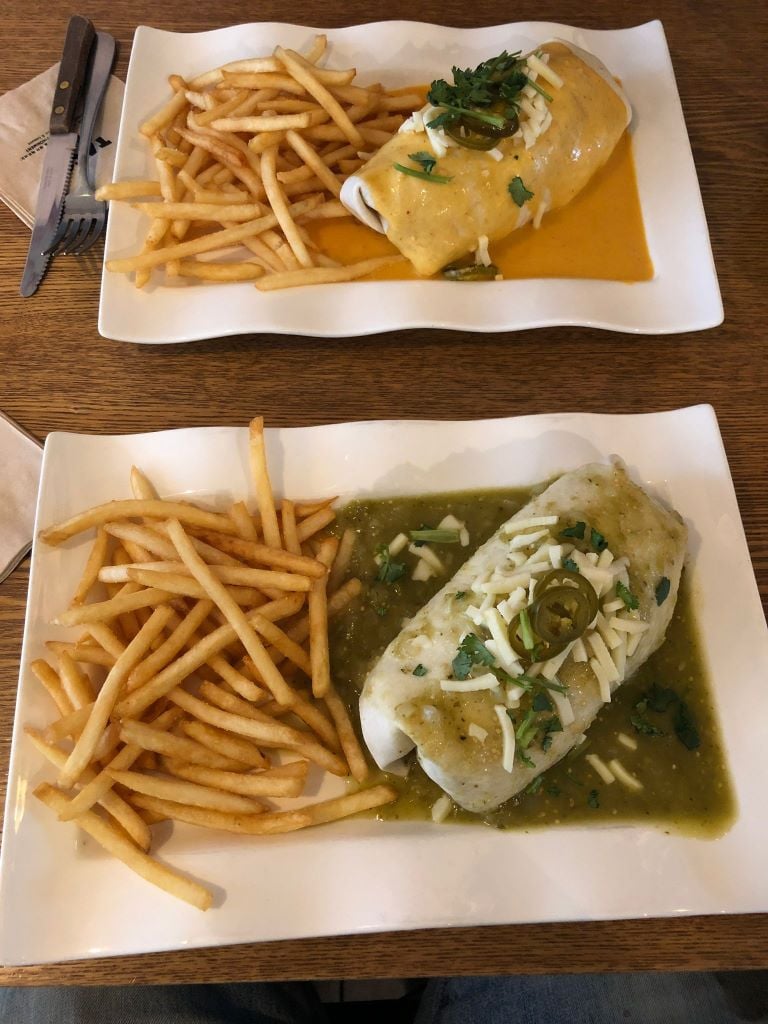
While you could easily dedicate an entire book to Seoul’s many restaurants, here are a few highlights!
One of the best Mexican restaurants I’ve found anywhere in East Asia is Taco Amigo , located right in the heart of Itaewon.
Just up the road and right on Itaewon’s main street is Vatos , a Mexican fusion restaurant that has a seemingly infinite number of delicious meals to try out.
If you’re craving some classic Texas BBQ, Low and Slow Itaewon has got you covered.
The Royal Food and Drink is a cliffside restaurant with a stunning view of Seoul and serves a majestic brunch that will send you into a food coma.
Not only one of the best brunch places in Seoul but one of the best I’ve been to anywhere, meals here are unforgettable.
Whether you’re looking for izakayas, Levantine restaurants, kebabs, Mexican, or pretty much anything else: this city is a paradise of cosmopolitan cuisine, and taking advantage of that is a must.
Seoul does have unforgettable KBBQ restaurants and countless more excellent Korean restaurants, but the best (and cheapest) Korean food will be found beyond Seoul’s expansive boundaries!
20. Being Vegetarian or Vegan in Korea Isn’t Easy
As with a lot of Asian countries, it can be a challenge to navigate the food scene if you’re vegetarian or vegan. When visiting Busan , Seoul, Daegu, and other larger cities, many restaurants can cater to your diet but in the countryside, you’ll find that your options are much more limited.
Thankfully, Korean food does have some options for those of you who don’t eat meat!
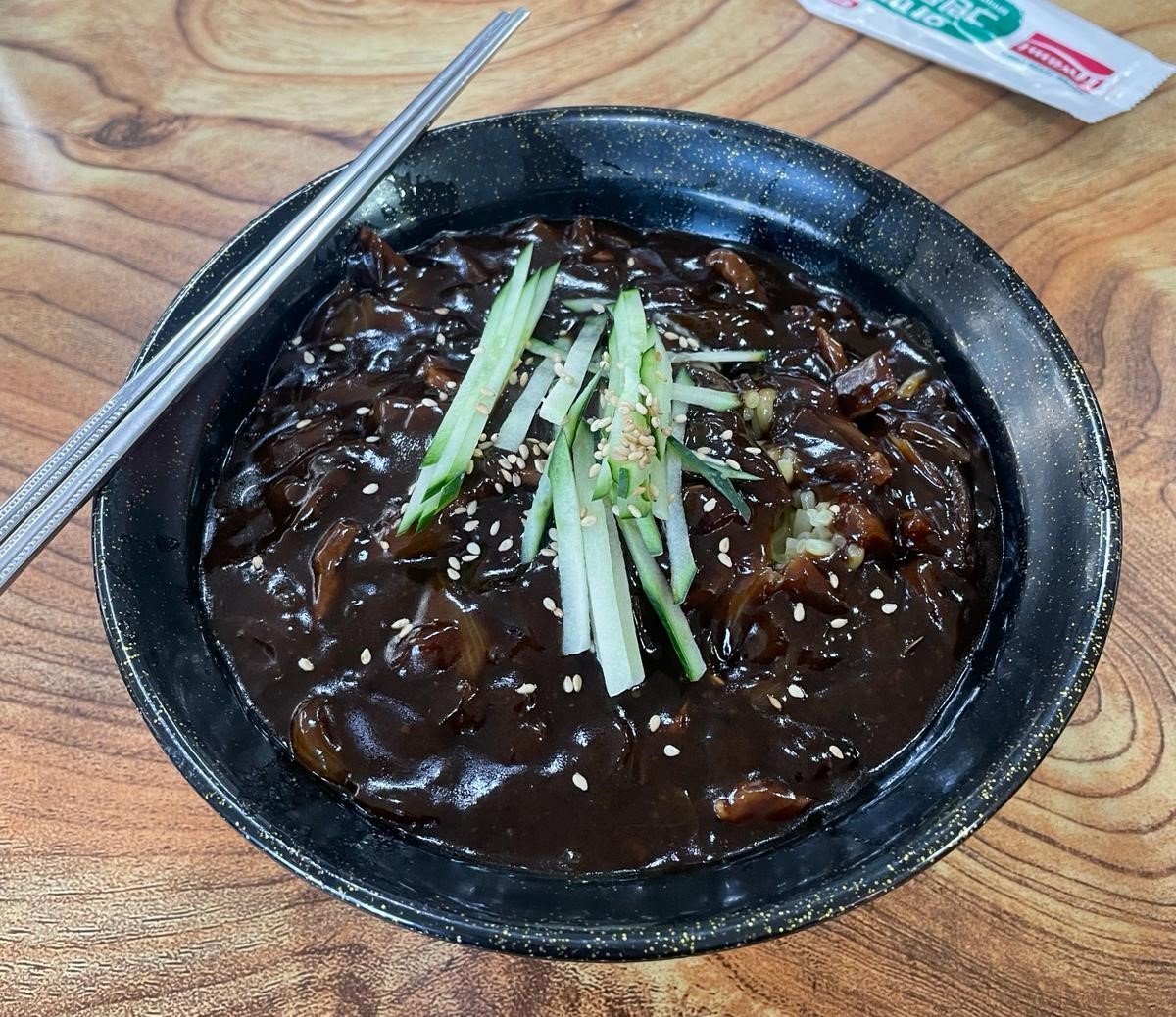
Vegetarian mandu (dumplings), kimbap, and bibimbap are all tasty vegetarian dishes that you can’t miss out on, and jjajangmyeon is one of my personal favorites.
If you’re at a restaurant and ordering food that may or may not come with meat, like dumplings, just ask the waiter for “gogi opsoyo” (“no meat”) and you’ll be all set.
21. Explore Korea’s Amazing Café Scene
Going to South Korea means you get to explore a café scene which is second to none. A massively diverse range of cafés awaits travelers from the traditional to ultra-modern and quirky.
Seoul itself is home to countless unique, very photogenic cafés that you could probably spend a lifetime venturing through.
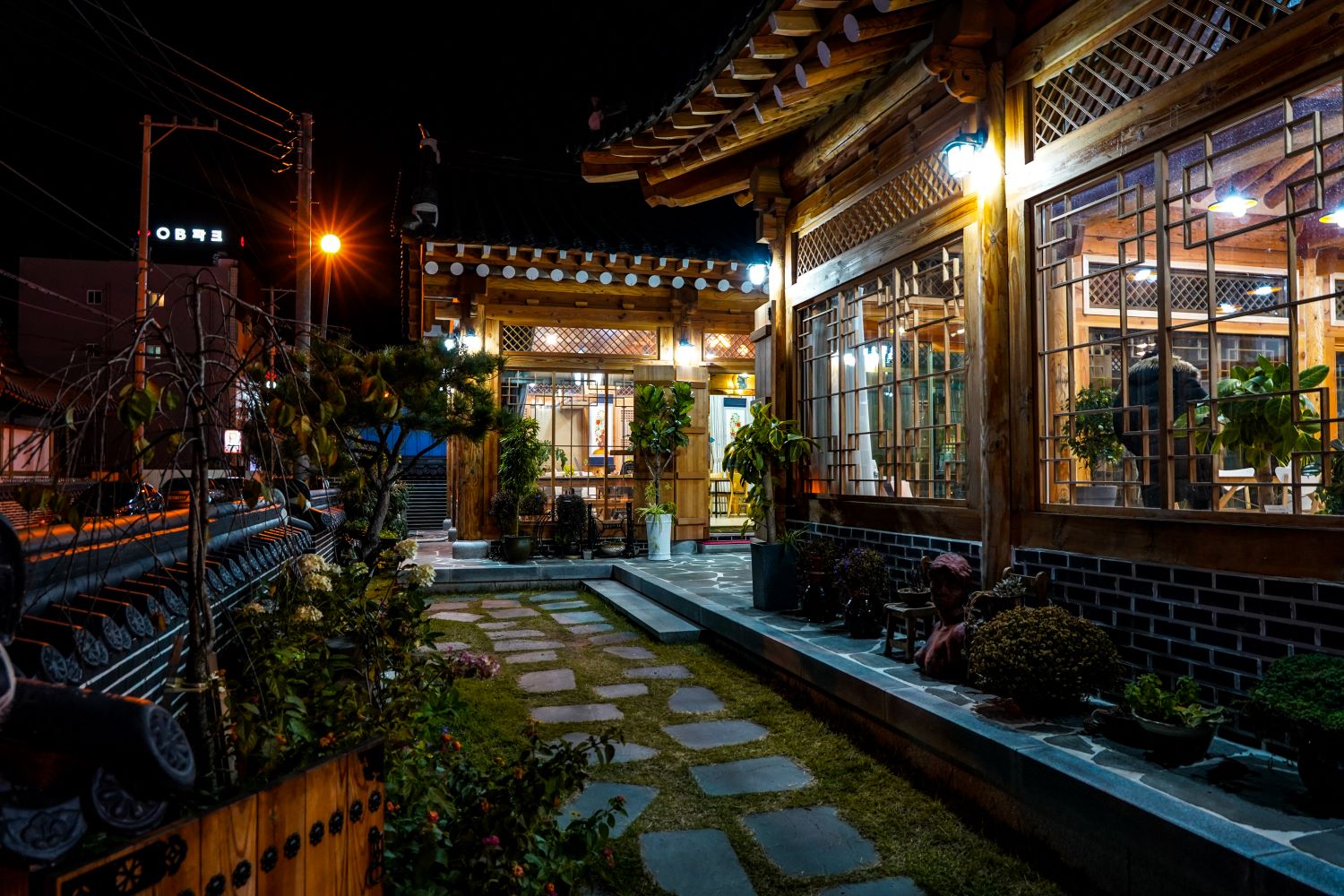
One of the capital’s most iconic spots is C.Through Café, which you’ll find here . Not only are the drinks delicious, but they also look so good that you almost feel bad for drinking them.
The coffee itself may or may not be what you’re looking for depending on your own personal tastes, but Korea’s cafés and teahouses are so diverse and incredible that I highly recommend you spend some time exploring what they have to offer!
22. Discover Korean Meals You Might Not Know Of!
Korean BBQ, samgyupsal, and kimchi are famous Korean culinary exports for good reason, but there are so many more Korean dishes that any backpacker worth their salt has got to try at least once.
Dakkalbi is a truly epic dish served in a massive pan that contains meat, rice cakes (called dak), vegetables, spices, and more depending on what you request.
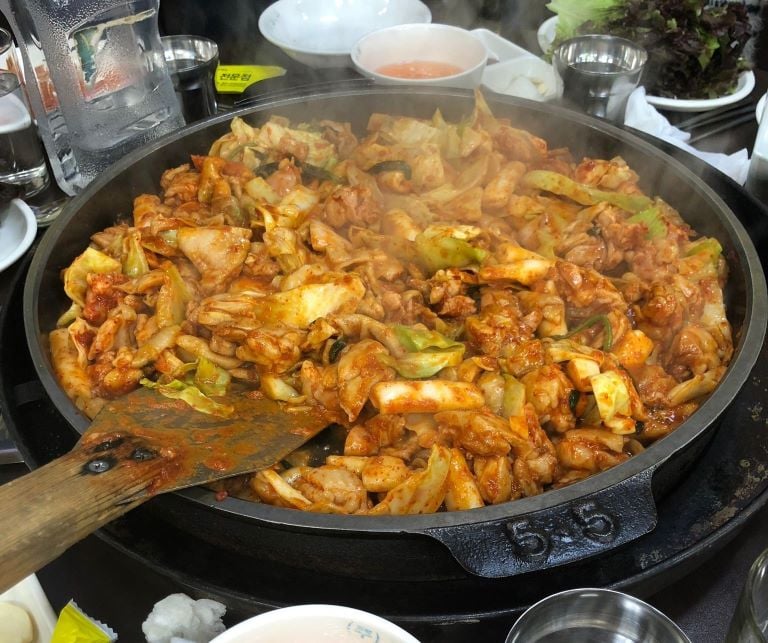
This is the perfect meal to have after you’ve worked up a huge appetite from exploring all day, and best to share with friends.
Quite possibly my favorite Korean meal is jjimdak. Often served in an enormous pan, this dish consisting at its core of chicken, glass noodles, rice, spices, and onions is a gluttonous, decadent meal that everyone should reward themselves with, and you can add more to the pan to mix things up a little.
Hint : add cheese.
23. Get Lost in Seoul’s Insane Nightlife
Seoul’s nightlife is famous and for very good reason: it’s amazing .
Coming out of a difficult few years due to the COVID pandemic, the capital’s bars and clubs are slowly returning to their former glory.
Gangnam, Itaewon, and Hongdae each have an endless supply of bars, restaurants, and clubs to explore that are wild fun, and a visit to Seoul is incomplete without at least a few sleepless nights spent in these districts.
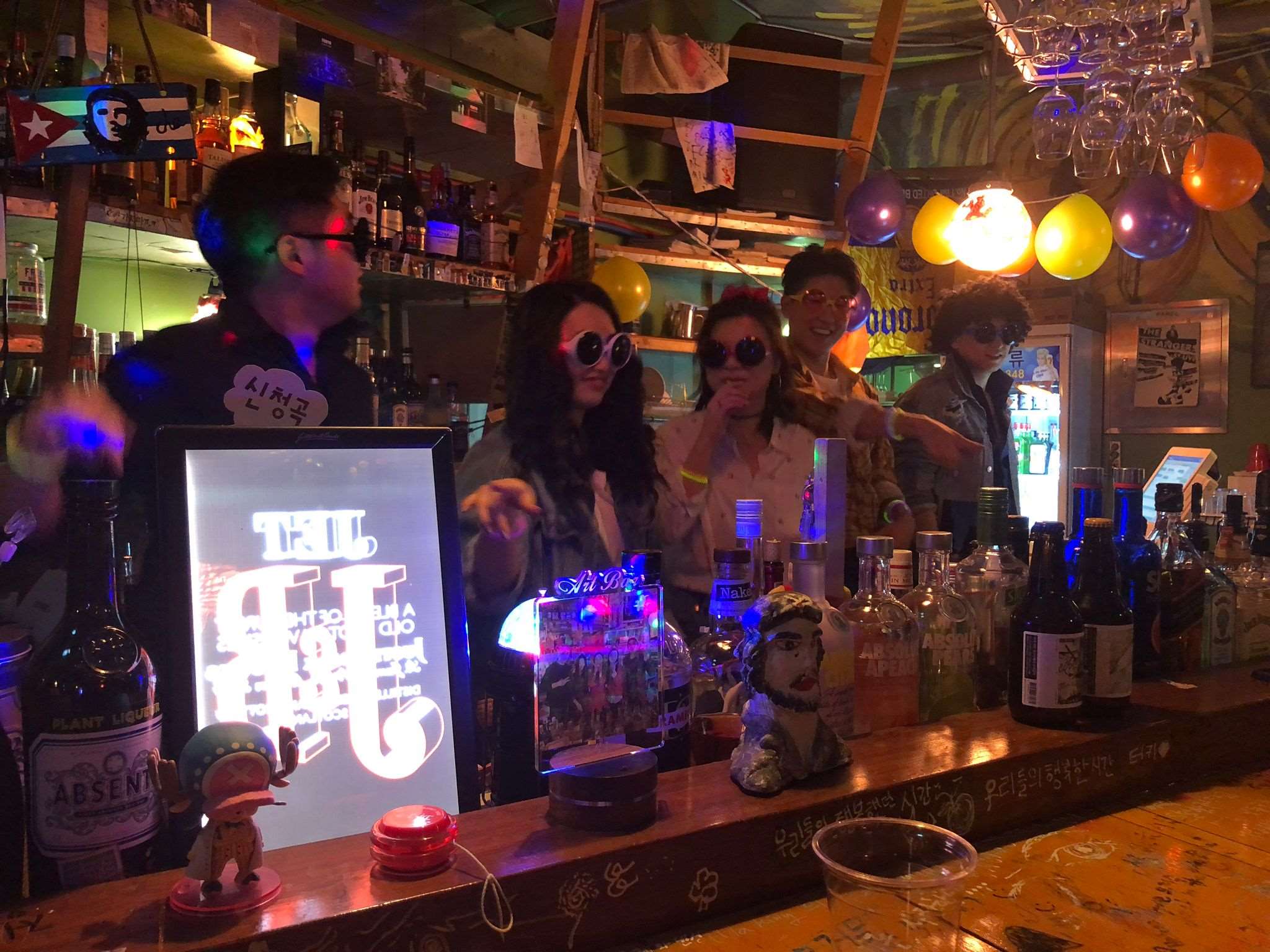
You’ll also find unique escape rooms, board game cafés, and more.
It’s simply not possible to list all the things you can do in Seoul, which is exactly why you should get hopelessly lost in wandering through this amazing city’s nightlife.
24. Get Off the Beaten Path
South Korea is rightly well-known for being a haven of futuristic cities, shopping, and lightning-fast internet, but it’s so much more than that!
This is a country where ancient wonders mix with natural beauty in a way that doesn’t happen anywhere else, and one of the best tips for traveling to South Korea I can give you is to journey away from the typical tourist loop of Seoul, Busan, and Jeju.
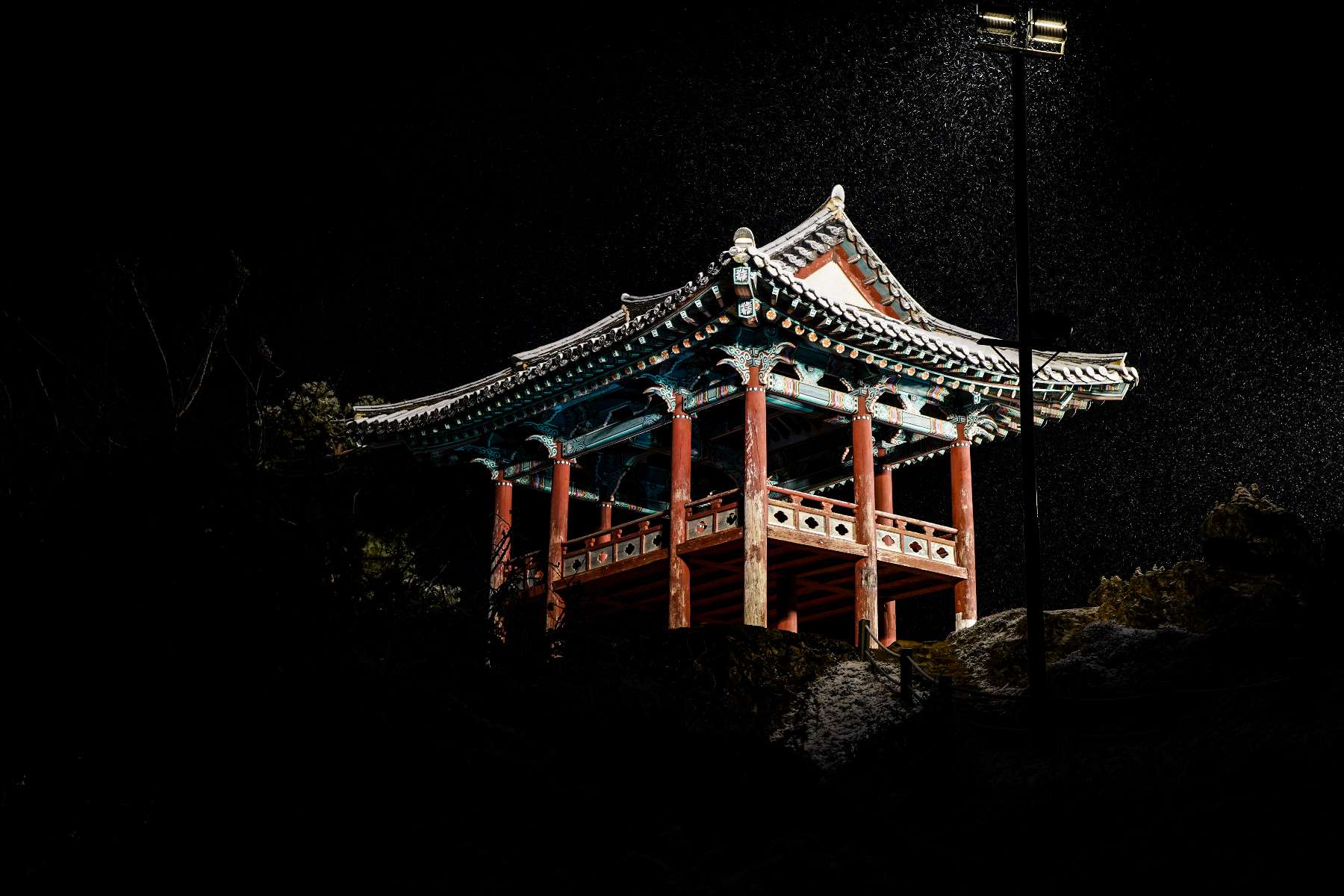
That might seem like hard advice to follow in a tiny country that’s so modernized, but venture beyond the confines of the cities and you’ll find a side of Korea that most people don’t see.
Experiencing Korea’s ancient, rich culture and all the gems hiding in its many hills simply can’t be missed out on, and this is what makes going to South Korea an unforgettable experience, far more so than a night out in Seoul or Busan.
25. Know Which Places to Stay/Avoid
Korea has no shortage of great hostels to stay at that range from cozy and classy to social and wild, but here are just a few to keep in mind:
If you’re looking for a good time in Seoul that doesn’t involve much sleeping, The Time Traveler’s Party Hostel in Hongdae is hard to beat. Fun and social with a downstairs bar and a crew that goes out into Hongdae’s vibrant nightlife every night, this is the place to be for all kinds of partiers.
Its sister hostel, Time Travelers’ Relax Guesthouse , is for backpackers looking for something more low-key and restful. Also in Hongdae, this hostel is in a quiet neighborhood that’s just a short distance from the district’s unbelievable nightlife scene, so it gives you the best of both worlds.
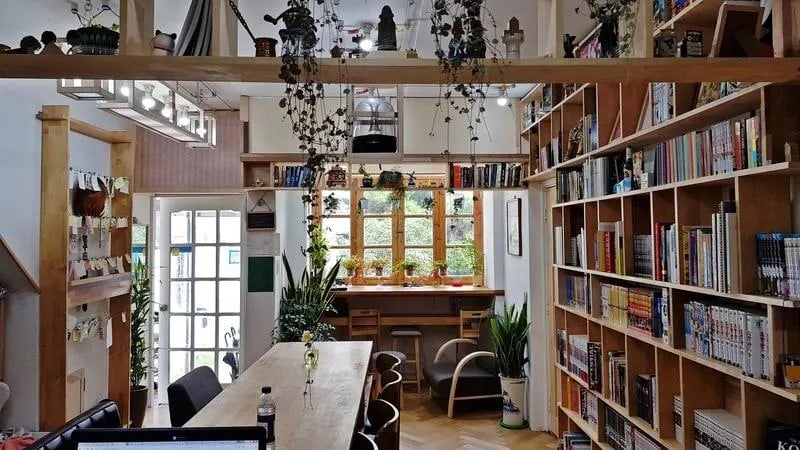
Seoul Cube Itaewon is also an incredible hostel with a great reputation, and its location right in the center of Itaewon is basically unbeatable!
When it comes to Seoul – and Korea in general – pretty much any hostel or guesthouse you choose is going to be solid with one exception: the Hongdae Bird’s Nest Hostel. This is the one place I recommend you absolutely avoid at all costs unless you have no other choice.
You might be tempted by its low prices and convenient location (I was!), but the facilities are less than ideal and the management is strange, unhelpful, and at times very unfriendly to guests. Avoid, avoid, avoid.
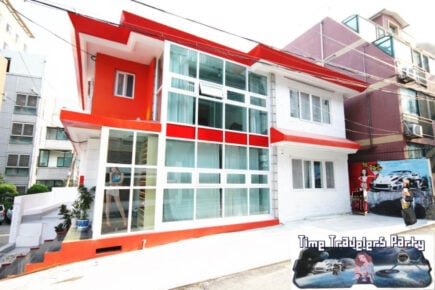
Time Traveler's Party Hostel
With a basement bar and a perfect location just 7 minutes from Seoul's Hongdae neighborhood, this is the best hostel for those looking to get the most out of the city's epic nightlife. It's super social, and you can even get a taste of authentic Korean BBQ every Friday night at their weekly group dinners.
26. Travel With Good Insurance!
Travel insurance is one of the most essential items all travelers simply should not go without, and you need to make sure you’re covered in the event a disaster happens!
Korean healthcare is some of the best – and most affordable – in the world, but you still don’t want to be stuck paying for 100% of a hospital bill.
That’s where SafetyWings comes in: at $40 per month and contract-free, this is an excellent choice for travelers and digital nomads.
Having that peace of mind that you’re covered in case of emergencies is priceless, so don’t forget to sign up before you set out on your travels: it could make all the difference.
ALWAYS sort out your backpacker insurance before your trip. There’s plenty to choose from in that department, but a good place to start is Safety Wing .
They offer month-to-month payments, no lock-in contracts, and require absolutely no itineraries: that’s the exact kind of insurance long-term travellers and digital nomads need.

SafetyWing is cheap, easy, and admin-free: just sign up lickety-split so you can get back to it!
Click the button below to learn more about SafetyWing’s setup or read our insider review for the full tasty scoop.
So is South Korea Worth Visiting?
100%, absolutely, undeniably yes. Not only is it more than worth the effort, I stand by the fact that Korea is one of Asia’s greatest countries to travel in.
Temples, towers, unforgettable nights, delicious food and more await travelers who make the trip to this unique land caught at a crossroads.
Going to South Korea is the experience of a lifetime and when your trip is at an end, no matter how long it is, you’ll find yourself wanting more.
I hope you’ve learned something from these South Korea travel tips. Now all that’s left is to book that ticket.
A wild ride awaits!
- Become a MASTER traveler with our epic travel tips.
- Embrace your backpacker spirit and travel off the beaten path , because… why not?
- Our killer guide to living in hostels will transform your stay. Check it out!
- Get off the couch and into the great outdoors with our hiking guide .
- Or… explore more of the region and go backpack Japan .
- See what most backpackers do not with an epic trip to China .
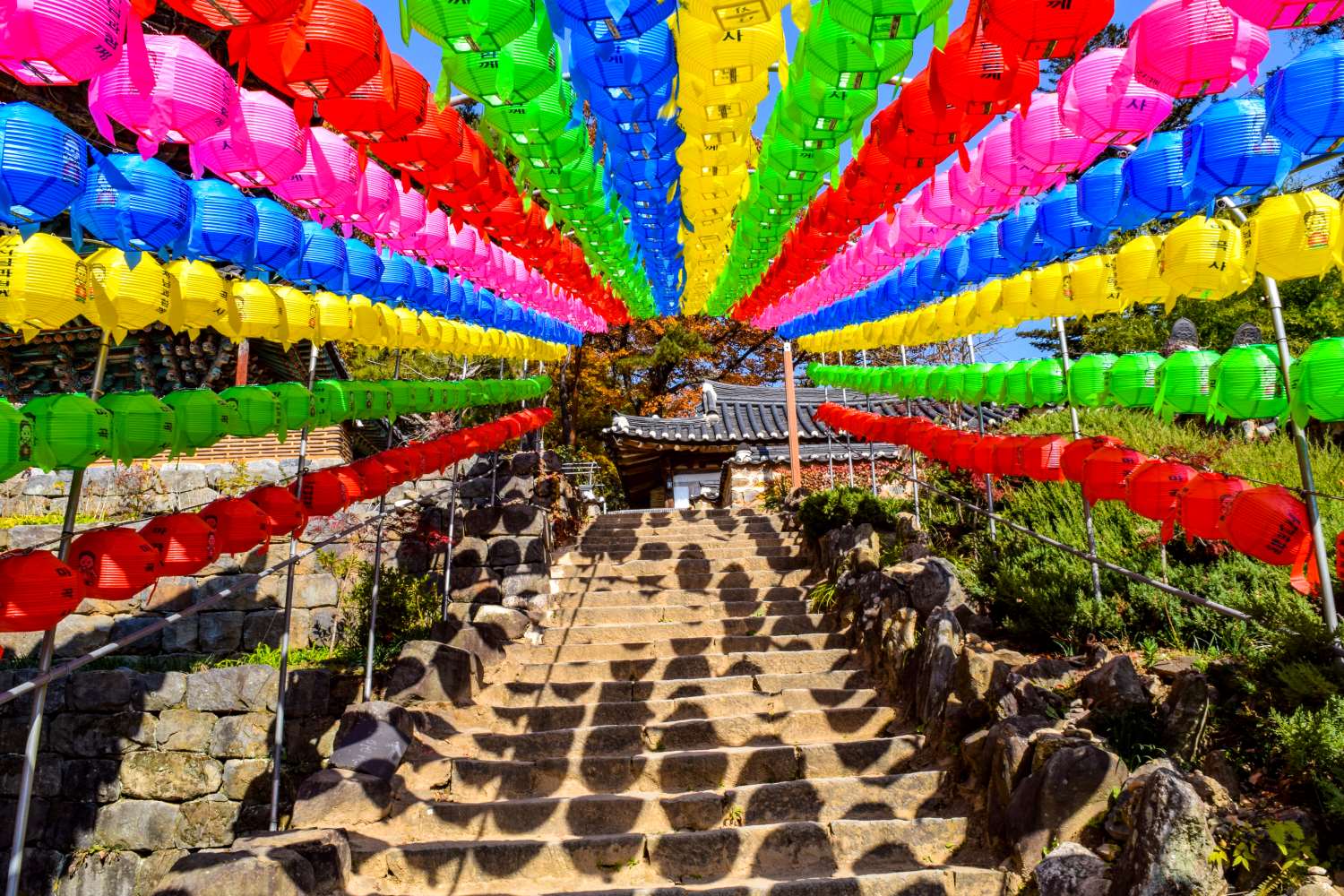
Nathan Jordan
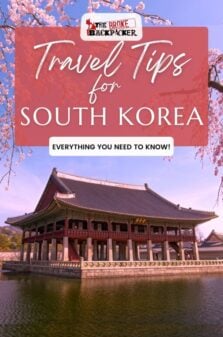
Share or save this post

Leave a Reply Cancel reply
Your email address will not be published. Required fields are marked *
Save my name, email, and website in this browser for the next time I comment.
Notify me of followup comments via e-mail.
Change location
- UK / International
- Call toll-free until 8pm EDT 617-223-4521 617-861-6421 or
- REQUEST A QUOTE
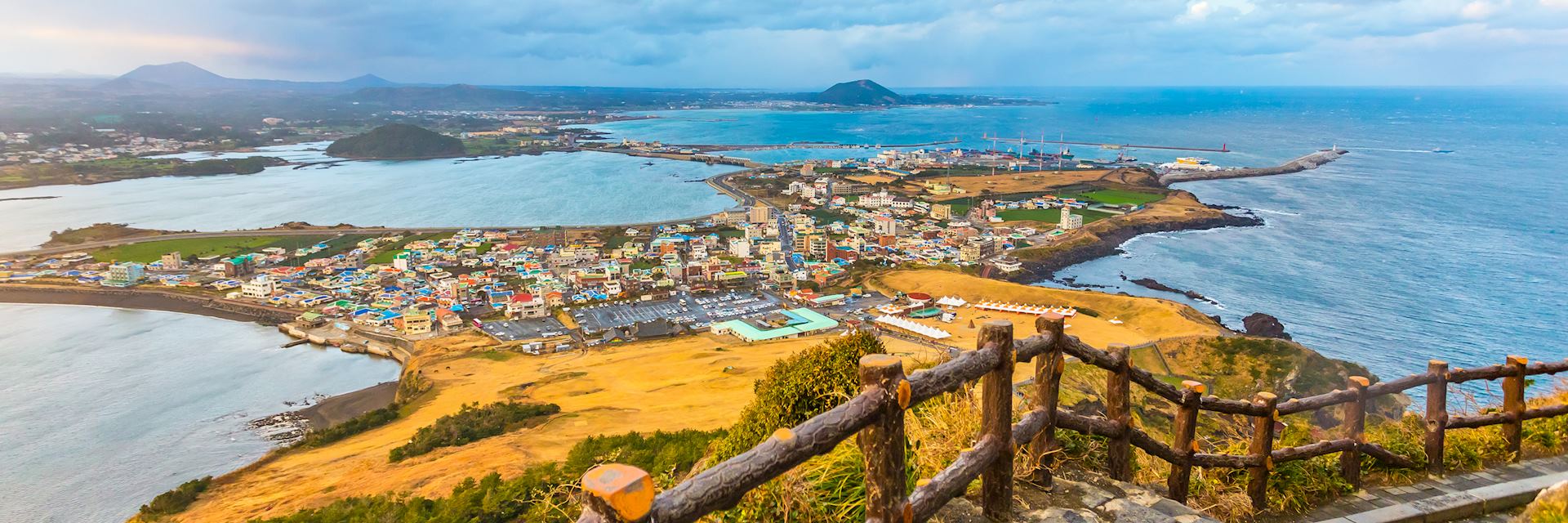
What to do in South Korea: our highlights guide
- Jeju island
By South Korea specialist Rory
South Korea appeals to me because it isn’t easy to define. Its wealth of culinary opportunities echo Southeast Asia, while the modern city architecture rivals Japan. There’s a Chinese flair to the Buddhist-era temples, and a coastline of volcanic geology you’re more likely to find in Indonesia.
I’ve picked out my highlights of South Korea in this guide. They fit together nicely into a two-week trip across the country, from the capital, Seoul, to the coastline and the volcanic islands beyond.
Start your South Korea trip in Seoul
Everyone seems to see Tokyo as this crazy futuristic city, but you should see Seoul . It’s a starkly modern metropolis with a man-made river winding through its core. It makes sense to start your trip to South Korea here — flight connections are good, and the city’s scope of experiences act as an introduction to Korean culture.
Explore Seoul with a local
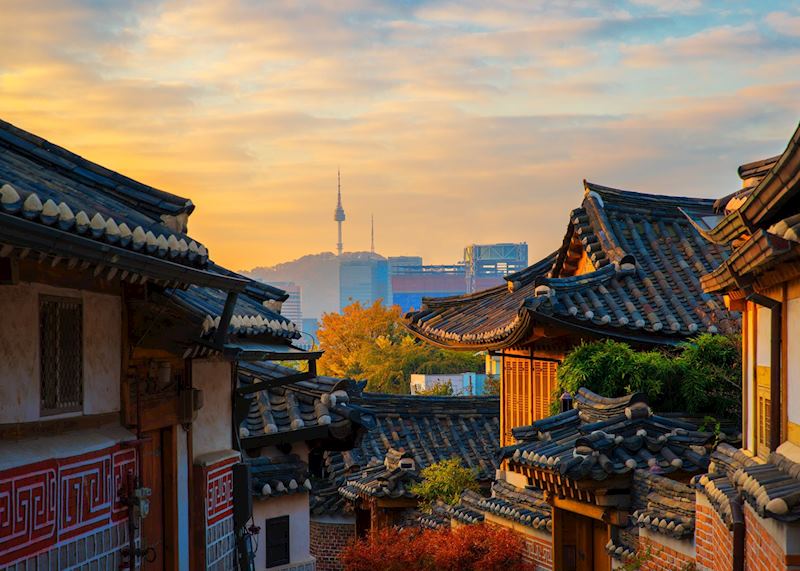
One thing to note is that, due to South Korea’s various occupations and dictatorships, many historical buildings and sights have been destroyed. Instead, you’ll often see remnants or memorials. I strongly advocate having a guide, who can bring them to life.
My guide for Seoul, Kim, had been born in the city and was particularly eager to make sure I experienced every cultural facet, from helping me pick out the best culinary delicacies to divulging her family history.
For an insight into Seoul’s former glory, we visited Gyeongbokgung Palace, a royal palace originally built in 1395. It was systematically destroyed by the Japanese but has since been rebuilt in its original style. It now houses a series of museums and a reconstruction of the royal court.
One part of the city that’s well preserved is the Bukchon Hanok Village, a 600-year-old collection of traditional Korean houses that line a warren of narrow, cobbled lanes. Its residents are used to visitors wandering their streets and are likely to invite you in to peek inside.
After exploring the city, I suggest joining your guide for the Korean national pastime: hiking. Seoul is cradled by mountains — so much so that walls were built between the valleys to protect the city. You can walk along the city walls or venture out into the mountains themselves.
Seoul’s food and drink
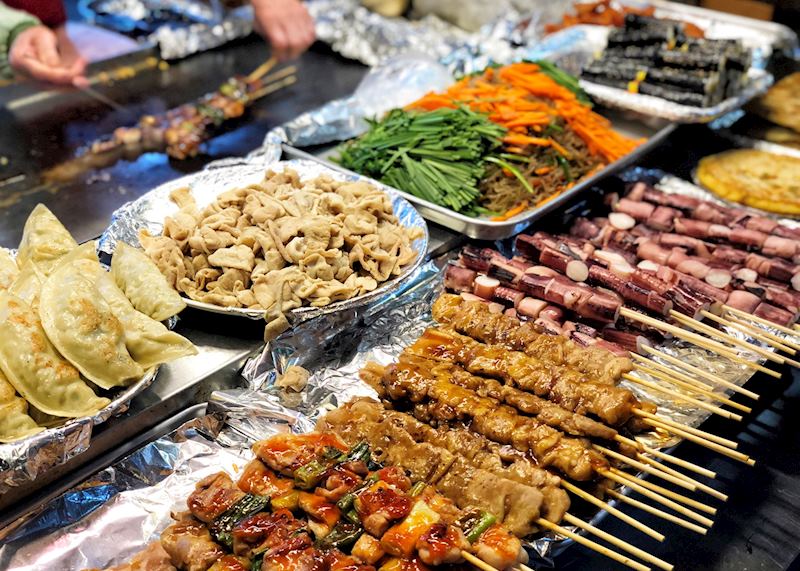
What I love about Korean food is that it hasn’t had a massive boom worldwide, so you’ll get a chance to try dishes you’re unlikely to find anywhere else. There’s everything from traditional Korean barbecue to niche (and often for the brave) seafood.
Again (and I’ll bang this drum for the whole country) you’ll have the best experience if you’re accompanied by a local food enthusiast who can help you navigate the innovative food scene. For example, bindaetteok, savory mung bean pancakes, sound simple. But, it’s a competitive industry, so you’ll find a line of chefs competing to make the best, most creative dish. Your guide will know which chefs are the real deal.
If you’re after a traditional tipple, ask your guide to take you to a local bar for a glass of soju, a clear rice wine that’s surprisingly drinkable (especially if you’re used to the Southeast Asian equivalents).
Tour the Demilitarized Zone (DMZ)
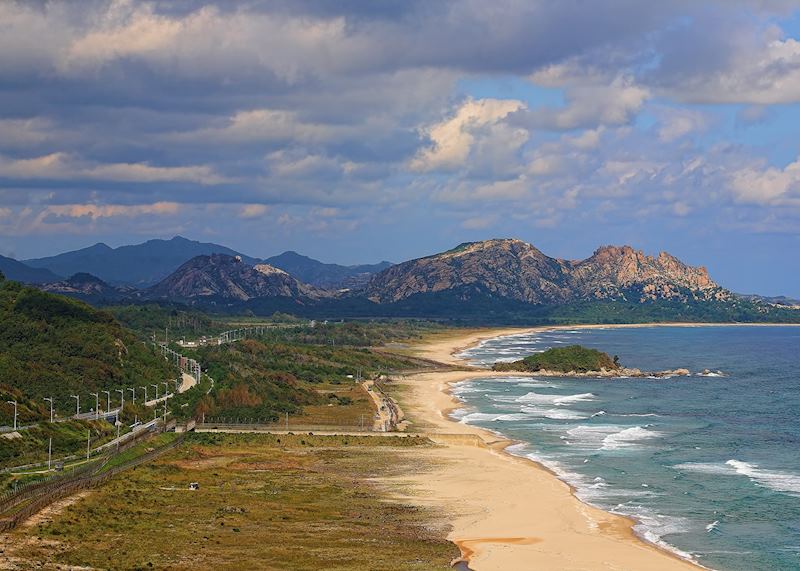
It's tricky to predict exactly what will happen on a tour of the DMZ, as public access to specific areas can be revoked at any time. I think that makes it all the more fascinating.
While you must visit as part of a group coach tour, I suggest having your own guide accompany you as the tour guide tends to be there to usher the group rather than provide information.
You’ll be shown an amphitheater where peace concerts are regularly held, the Freedom Bridge and a battered train carriage — the last train to make it out of North Korea.
There’s an observatory where you’ll be encouraged to peer into North Korea with binoculars and you’ll also see the villages stuck in limbo between the two countries. You could choose to do an all-day tour which will (probably) take you to the infamous blue-hutted joint security area, or just a half day option which incorporates everything else.
Visit Gyeongju: a former ancient kingdom
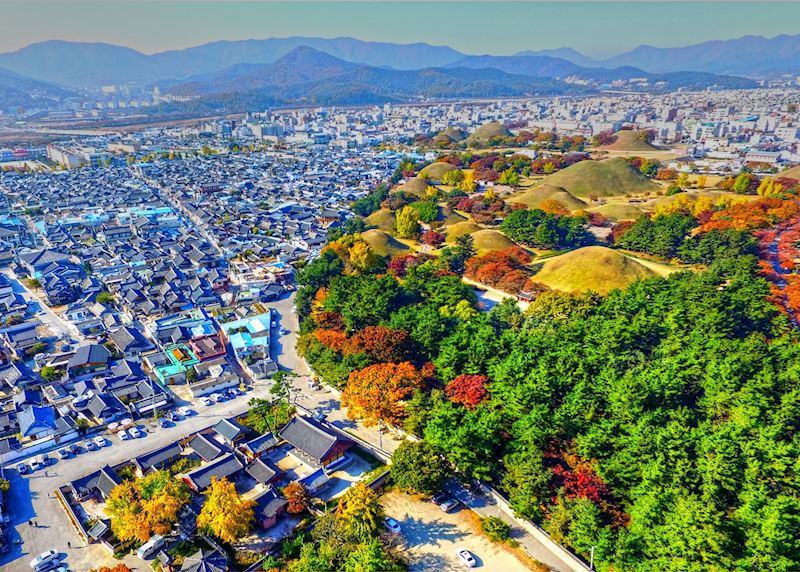
The lakeside city of Gyeongju is a two-hour train ride from Seoul. This was the capital of the Silla dynasty, which ruled the Korean Peninsula from 57 BC – 935 AD. During this period, the city was one of the largest metropolises in the world.
You’ll need two or three nights here to explore the archaeological remnants of the kingdom, as well as its legacy of temples, shrines and pagodas .
Gyeongju’s historical highlights
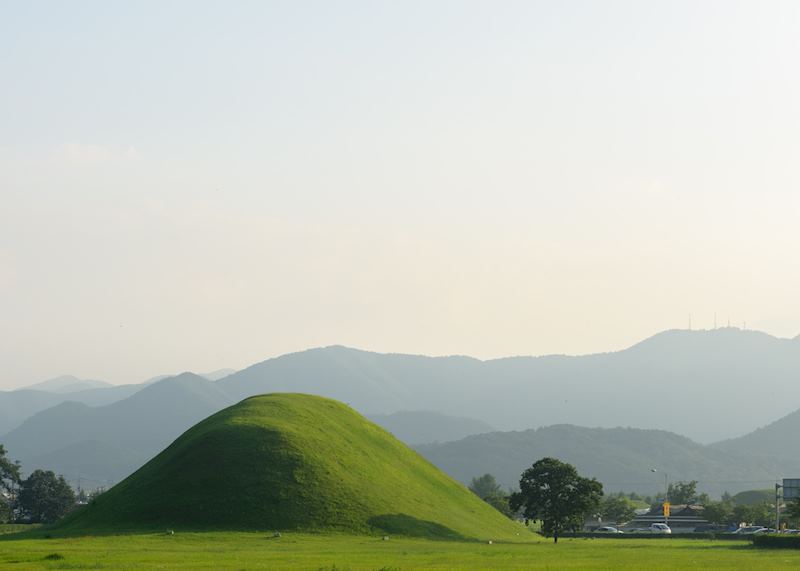
Right in the middle of the city, a cluster of small hills rise from a neatly gardened park. These are the Royal Tombs, a series of Silla-dynasty burial chambers dug into almost perfectly conical man-made mounds.
At first glance that might not seem as particularly dramatic as, say, similar regal burial chambers in Egypt or India . But, I found something striking in their simplicity and elegance, and a series of customs related to the mounds still continue today — including blue-robed attendants who visit the mounds daily to perform a series of Buddhist traditions.
My guide, Truman, brought these curves of earth to life. He explained that the size of the mound doesn’t really reflect the importance of the king inside — rather, the might of his firstborn son who built it.
Other Silla-era sites include the Cheomseongdae tower, one of the world’s oldest observatories, which stands in a park popular with kite-flying children and picnicking families.
For a sample of the dynasty’s architectural prowess, look to the Donggung Palace, which has been partly restored, or the Bulguksa Temple, a UNESCO World Heritage Site and South Korea’s finest example of Buddhist temple construction.
Visit Busan: a vibrant port city

The architects of Busan have no qualms about tall buildings. It’s a one-hour drive from Gyeongju, and you’ll be greeted with a skyscraper city that’s fringed with stretches of beach.
It’s worth visiting one of the golden-sand coastlines (Haeundae is my top choice) but I’d suggest staying in the middle of the city where you’ll find food markets, Buddhist shrines and sleek architecture.
One day with a guide and driver gives you enough time to explore. To get a feel for the city, peer across it from the Busan Tower observation deck, before dipping into delicately painted shrines and historical sites. You can also take a cruise around the bay, which is an interesting mix of scenic coastline and industrial container ships.
Jagalchi Fish Market

Seafood is popular across Korea: you’ll see just how high the demand is as you stroll through Jagalchi Fish Market. Sprawling stalls outside are piled with rows of dried fish, while in the more modern (and pungent) indoor market you’ll find fresh seafood for sale. If something catches your eye, one of the restaurants on the floor above will prepare it for you.
Gamcheon culture village
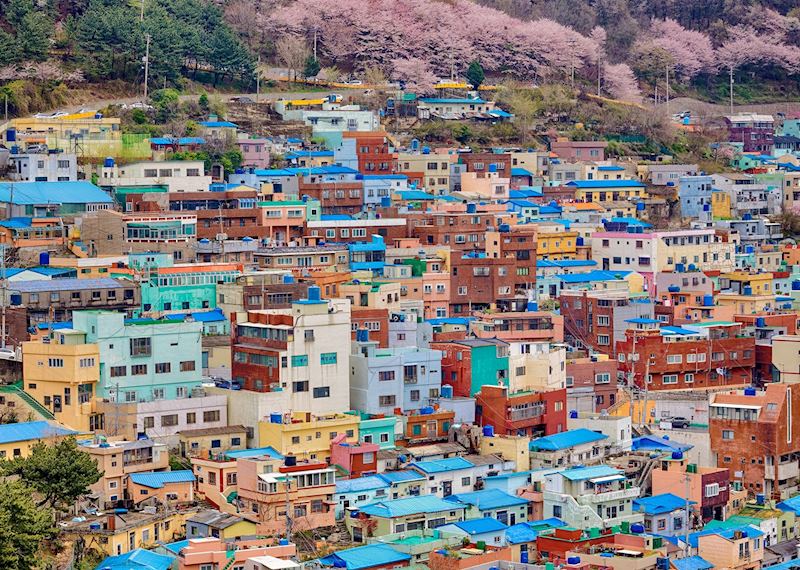
This brightly painted collection of tiny homes looks like (and now partly is) an art installation. But this settlement, surrounded by hills to the west of the city, was actually once a refugee camp. Korean families pushed out of their towns by Japanese occupation in the 1920s were forced to squeeze into this small region.
It’s now flourished into a proud community, with art galleries, artisanal cafés and shops. On taking a guided tour, I found its residents eager to talk and share the collective history of their home.
Jeju Island
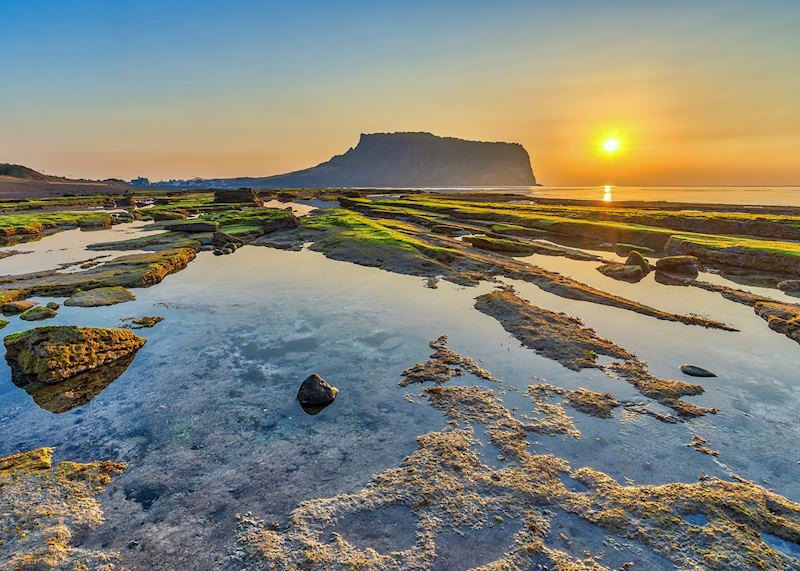
This isn’t the sort of destination you end with a relaxing beach break — but in my book a volcanic island with a gnarled, rural coastline is even better. Jeju Island is a single-coned volcanic island a short flight from the mainland.
There’s a small palace and a few architecturally notable government buildings, but you’re here for the scenery. Do a little research on the island, though, and one of the first things that comes up is Love Land, an erotic sculpture park. Not recommended if you’re with children, but its kitsch, eye-widening artworks are worth a visit for the curious .
Some of the best coastal scenery is in tiny Udo, a satellite island a short ferry ride from Jeju. I hired a bike and found it flat enough to cycle around. You can stop to stroll along its volcanic coastline. The black lava stone blends into soft-sand beaches edged with sheer cliffs that rival those of Indonesia .
Hiking on Jeju Island
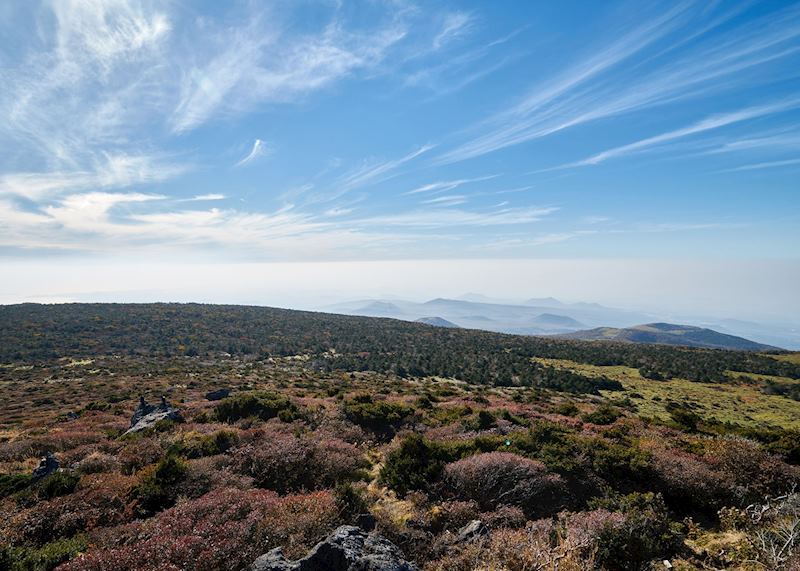
The island’s volcanic cone is the UNESCO World Heritage Site of Hallasan National Park, crowned by Hallasan, South Korea’s highest peak.
I’d say that the ultimate hike on the island is summiting the caldera’s rim. You’ll need to be prepared for an eight-and-a-half-hour return journey, but there’s something very special about being on top of the skyline’s only peak, surrounded by a serrated coastline and the East China Sea.
The route’s clearly marked so you don’t necessarily need a guide, but we can provide you with detailed notes to refer to along the way, particularly as the water refill points can be easy to miss. Make it to the summit and you can walk around the edge of the caldera, peering into the inky-blue lake inside.
If you’re after an easier walk, Seongsan, known as sunrise peak, is the remains of a smaller secondary volcano — just the caldera is left. This almost bowl-shaped piece of rock is filled with a circle of bright green grass. It’s a short, steep climb to its highest point, and, funnily enough, is ideal for catching the sunrise.
Start planning your trip to South Korea
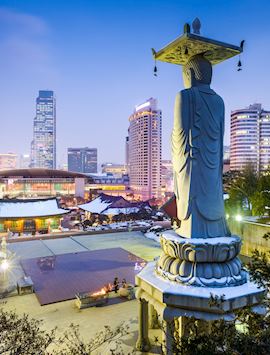
South Korea in a snapshot
9 days from $3,810pp

Luxury South Korea
9 days from $5,735pp
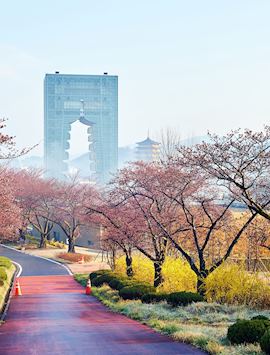
Classic South Korea tour
12 days from $6,950pp
Start thinking about your experience. These itineraries are simply suggestions for how you could enjoy some of the same experiences as our specialists. They’re just for inspiration, because your trip will be created around your particular tastes.
Further reading
- A brief introduction to Korean food
- Surfing the Hallyu: a guide to South Korea’s pop culture
- What to do in Japan: our highlights guide
- Japan’s seasons: cherry blossom and beyond
- What to do in China: our highlights guide
Plan your trip
Tell us about your plans and one of our specialists will plan a unique trip for you...
Request our brochure, The World Your Way

Order your digital copy via email.

- Accomodation
- Attractions
- Food & Drink
- K-Entertainment Tours
- Korean Culture
- Shopping Destinations
- Transportation
- Travel Essentials
- Travel Tips
- Travel News in Korea
- Gyeonggi-do
- North Gyeongsang (Gyeongsangbuk-do)
- North Jeolla (Jeollabuk-do)
- South Chungcheong (Chungcheongnam-do)
- South Gyeongsang (Gyeongsangnam-do)
- South Jeolla (Jeollanam-do)

First-Timer’s Ultimate South Korea Travel Guide – Things to Know Before Traveling to South Korea

5,128 total views, 2 views today

Before making your travel plans South Korea, check out this South Korea travel guide that will help you in finalizing your travel itinerary!
South Korea is a country of juxtaposition. You can find serene mountain valleys bumping against pulsing lights and rush of 24-hour cities. Korean tradition collides with ultra-modern fashion and design. To experience the depth and vibrancy of the country, you must see the serene countryside as well as rapidly changing cities.
There is something for everyone in the country, whether you like city-life, mountains, beaches, or anything in between. Planning can become a bit difficult as there is so much to see and do in South Korea.
Traveling to a new country like South Korea can be very exciting. It’s a whole new adventure waiting for you, but the entire planning and going to a different country can be a bit distressing. The culture, the people, and the laws governing the country are probably very different from where you are from. This is why we have compiled a guide for you of what to expect when you visit South Korea for the first time.
Table of Contents
South Korea Travel Guide
Most travelers do not need to get a visa to travel to South Korea. You can check the visa requirements on your country’s State Department website. Citizens from many countries have visa-free entry for a limited period under certain conditions. To check whether you can enter Korea without a visa issuance, please contact a Korean Embassy or consular offices in your country or visit the Ministry of Foreign Affairs to confirm.
There are some changes to visa requirements for Jeju Island in lieu of COVID-19 situation worldwide.
The local language is Korean, and it script is Hangeul. But there is no need to worry! There are lots of signs in and around the city in English as well. A lot of restaurant menus also include translations of main dish ingredients.
You can always learn a little Korean before you travel from apps like Duolingo . The locals are definitely going to appreciate your efforts!
Money Matters
The official currency of South Korea is ‘ Korean Won .’ Most places accept credit cards too. Small stores and mom-n-pop food outlets generally accept cash only.
Getting around in South Korea is very easy. There are domestic airlines, trains, and intercity buses. It’s easy to move around within the country. Even intercity travel is very convenient with all the available public transportation.
We have covered transportation in detail in the guide about understanding Korean culture.

Travel Apps
For first time travelers to South Korea, travel Apps are handy and can be useful as guide. The train and bus maps might look complicated, but you can use maps with English translations. Apps like KAKAO Maps and Naver Maps are especially for use in South Korea and are the preferred travel Apps. For more traveling tips, you can download the VisitKorea App. It can provide you with suggestions regarding food, tourist destinations, and many more.
Read More: 10 Best Apps for South Korea Trip You Must Download
There are quite a number of public toilets wherever we go, and they are generally clean. If you can’t find one right away, you can search in any of the travel map Apps “화장실,” which means toilet in Korean. On the other hand, it is challenging to find dustbins around, so you may have to carry your trash for quite a distance before you find one bin.
Read More: Understanding Korean Culture: Hygiene Culture in South Korea
South Korea has four distinct seasons — Spring, Summer, Fall, and Winter. Each season has something unique to offer visitors to the country, but depending on what you want out of your Korean experience, sometimes are better to travel than others. The best time of year to visit South Korea is generally the spring months of April, May & June, and the autumn months of September, October & November. During these two seasons, days are typically sunny and dry with comfortable average temperatures.
Read More: South Korea Travel Guide – When is The Best Time of Year to Visit South Korea?
Drinking-Water
Tap water in South Korea is drinkable. If you are not comfortable with it, you can purchase bottles of water from convenience stores or vending machines.
Accommodation
No matter what your budget is, you will find amazing places to stay during your trip to Korea. You can stay anywhere, ranging from a youth hostel to a luxurious hotel. For a unique cultural experience, you can also arrange a homestay like hanok stay via the Korea Tourism Organization.

Tour and Travel Services
Some places are only accessible with a tour guide or a tour bus to bring you around. The added benefit is that you can relax on the bus while you are going from one destination to the next.
Internet Connectivity
South Korea is a well-connected country. Wherever you are, you will have access to mobile data and public Wi-Fi. Did you know that you can get free WiFi in most of the buses in Seoul?
Read More: Korean Sim Card Guide for All the Travelers
Most tourists are familiar with Korean barbeque and look forward to having the authentic dish right from the source. You can find it in abundance no matter where you go in Korea! To avoid any goof-ups in restaurants, you can check out our restaurant guide . You can also check out the post on Netflix-fame street food places.

Read More: What to Eat in Seoul – Best Korean Food
Shopping Tips
The prices are pretty much fixed in stores. Most store owners hardly speak in English, even in tourist places. You won’t face such problems in popular shopping areas with big brand stores. Some of the shopping places in Seoul include Myeongdong, Dongdaemun, Common Ground , and many others.
Read More: 10 Exquisite Handmade Gifts You Can Buy in Seoul
Travel During COVID-19
The South Korean government raised the coronavirus disease threat alert level to its highest on February 23, 2020. Many attractions have been temporarily closed, and festivals have been postponed or canceled throughout the country. Travelers are recommended to check the attractions’ official website before visiting.
Korea aggressively maps and tracks infected cases. Self-quarantine is strictly monitored and enforced. The country also prohibits individuals who have been in contact with confirmed cases from exiting Korea during the day 14-day self-quarantine period. Korea provides advanced medical care to confirmed patients. The treatment is free-of-charge for both Koreans and foreign nationals.
The KCDC has urged everyone to participate in an enhanced social distancing campaign for the next 15 days (March 22 – April 5). The KCDC strongly recommended that all non-urgent international travel plans be canceled or postponed. Persons who are unable to avoid traveling for a critical reason are advised to refrain from visiting any enclosed facilities or healthcare facilities.
Starting March 22, the KCDC is conducting COVID-19 diagnostic testing for every inbound traveler entering from Europe. Asymptomatic Korean nationals (with domestic residence) will be directed into self-quarantine at home and get tested at their local public health center within 3 days of arrival. Foreigners will be quarantined at the facility and tested.
Apps to Track COVID-19 in South Korea
You can use a locally developed App like ‘Corona 100m,’ which, as its name implies, alerts users if they breach a 100-meter (328-foot) radius of the latest tracked whereabouts of the coronavirus patient. The person using the app can see how close they are to coronavirus patients. It also allows people to see the date that a coronavirus patient was confirmed to have the disease, along with that patient’s nationality, gender, age, and where the patient visited. It was launched on February 11 and had a million downloads in the first 17 days.
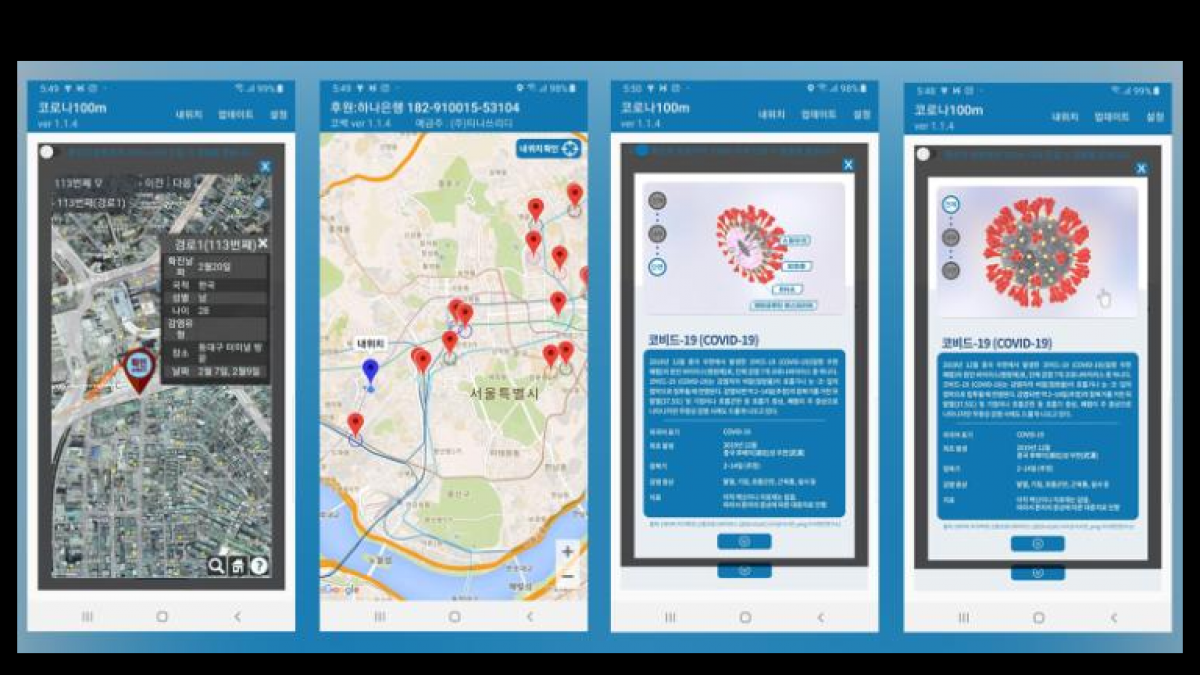
‘Corona Map’ is another such app that tracks the locations of people know to have COVID-19. Like Corona 100m, Corona Map plots the places where people known to have had COVID-19 have been, to make avoiding these areas easier.
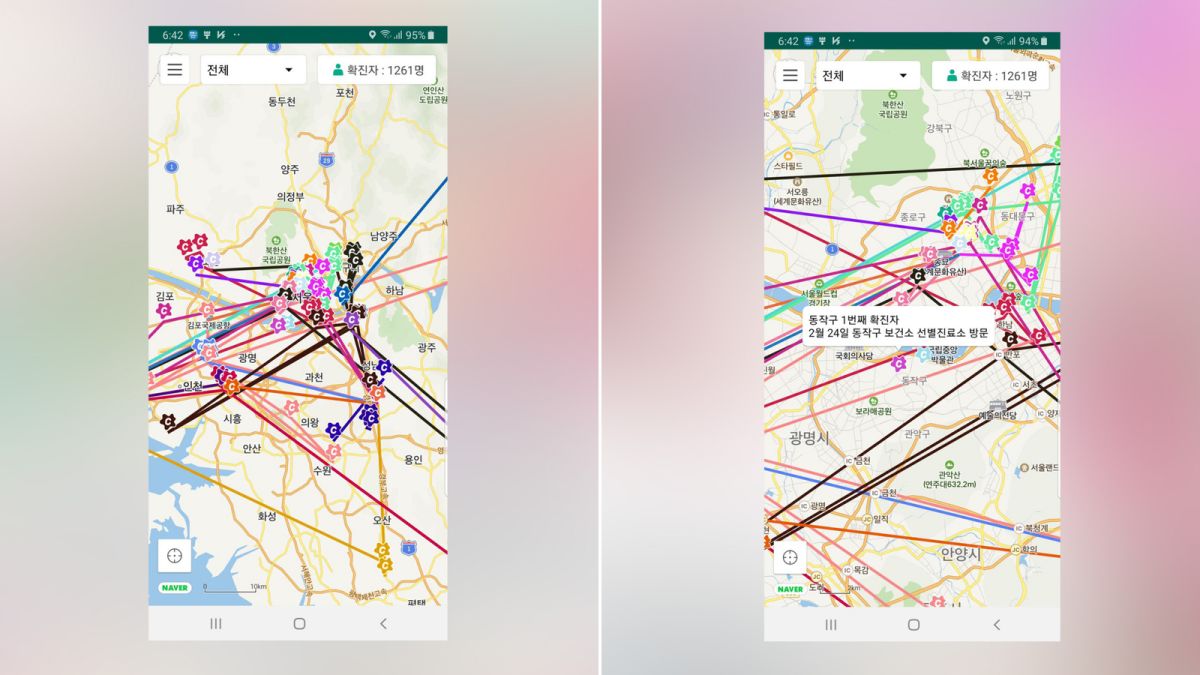
These are some of the essentials that you need to know before making your travel plans to South Korea and this travel guide will be helpful in making your itinerary!
KoreaTravelPost Editor
Hello there! I'm the Features Editor for KoreaTravelPost.
Related Posts
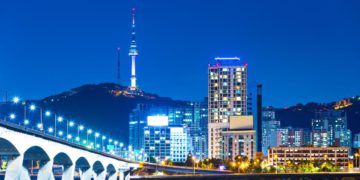
Explore Korea Like a Boss with InterparkTriple TRIPLE Korea
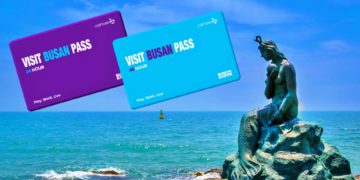
Temporary Suspension of VISIT BUSAN PASS Sales – Important Information for Travelers

Seoul Trip PASS App: Your Ultimate Travel Companion for Hassle-Free ID, Seamless Payments, and Instant Tax Refunds!
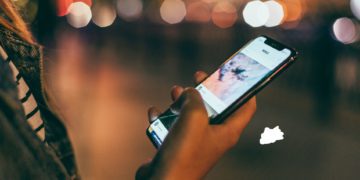
Best Korean to English Translation Apps for Your Korea Trip
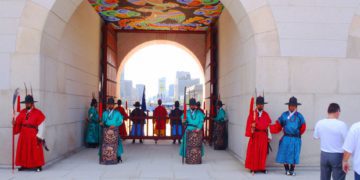
Discover South Korea with the Best: Top 10 Tour Operators
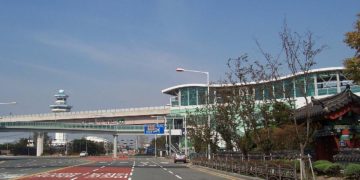
A Complete Guide to Gimhae International Airport

5 Best National Parks in South Korea
Leave a reply cancel reply.
Your email address will not be published. Required fields are marked *
Save my name, email, and website in this browser for the next time I comment.

TESSAN Germany France Travel Power Adapter

Lonely Planet Korea 12

Korean Snack Box Variety Pack

OSULLOC Lovely Tea Gift Box Set
More from our network.

- Medical Tourism
FREE NEWSLETTER
Copyright © 2024 About Us| Terms of Use |Privacy Policy| Cookie Policy| Contact : [email protected]
Login to your account below
Fill the forms bellow to register
Retrieve your password
Please enter your username or email address to reset your password.
May 20, 2024
5 Reasons You Must See “The Shape of…
The gold gala: oscar winners, olympians and business…, all the 2024 baeksang arts award winners for…, ready, set, binge the 10 best k-dramas on…, “beyond utopia”: fleeing from paradise.
Join Our Newsletter

- Korean Childbirth Traditions
- HWANGAP 60TH BIRTHDAY
- LEARN THE KOREAN LANGUAGE
- KOREAN ZODIAC
- Korean Weddings
- TRAVEL GUIDE
- RESTAURANTS
- FOOD STORIES
- K-DRAMA & MOVIE
- South Korea Travel Guide
Where to Go, What to See & How to Stay on Budget
By Patricia Liu and Joel Marinan
There has never been a better time to visit South Korea. Clean, modern, sophisticated, and ultra safe, Korea is a destination that you will want to come back to again and again. With the rise of Korean culture and entertainment throughout the world, the country is experiencing a renaissance of sorts, especially for foreigners who wish to experience all that Korea has to offer.
Korea has always been a fascinating country to visit and deserves a place on everyone’s travel bucket list. Known for its stunning blend of tradition and modernity, Korea features futuristic technology, bustling markets, and a thriving pop culture scene. There are no guns or drugs allowed in Korea, and visitors can expect a high level of safety and cleanliness while exploring the country. Also of note is that Korea is a no tipping culture, so savoring the delicious cuisine is extra affordable, as are the cab rides to restaurants and other destinations.
Speaking of affordability, the exchange rate between the Korean won and the US Dollar has been very favorable for Westerners, which is another perk of traveling to Korea right now.
Our South Korea Travel Guide shows you where to go, what to see, and when to travel. Start your journey with itinerary ideas and pre-travel tips, the best day trips, and lots more essential Korean travel advice. Let’s go!
Here are some of our most popular articles that will help you make the most of your trip to South Korea.

A Local’s Guide to Gyeongju
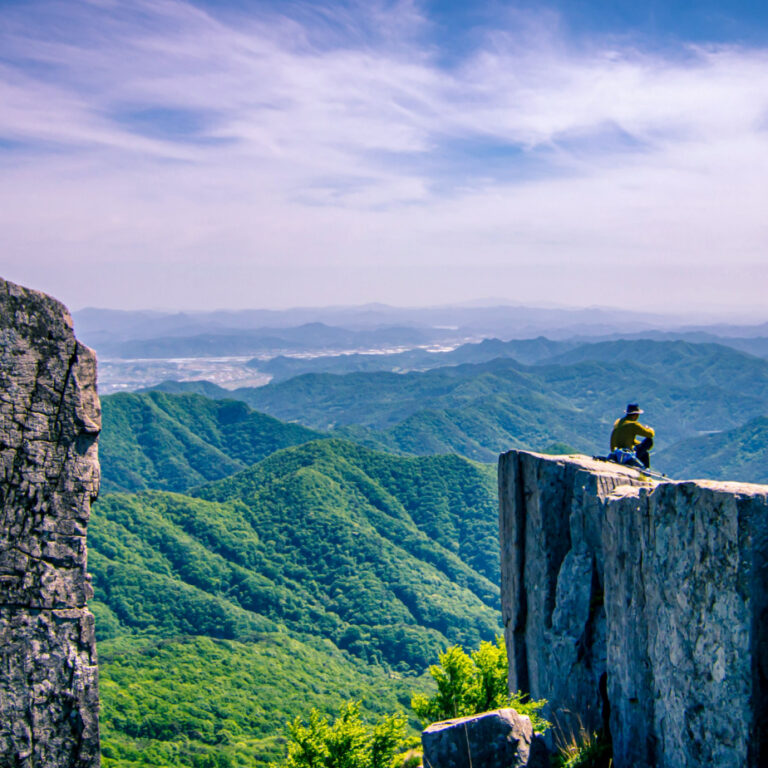
What To Do in Korea in May: The Family Month
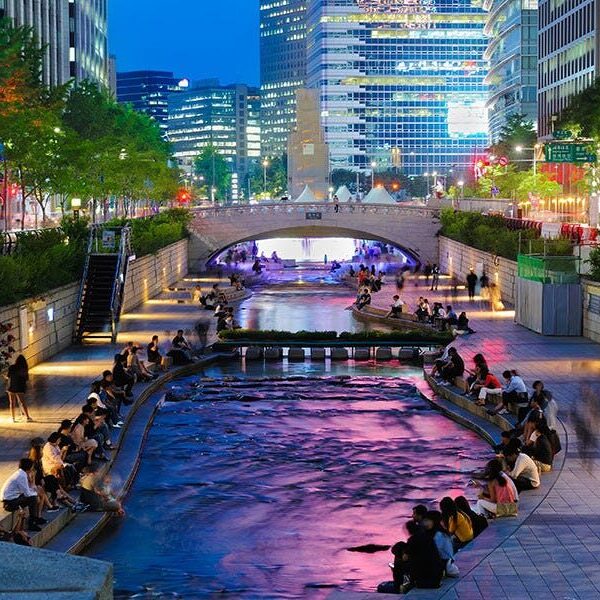
19 Did-You-Knows About Korea
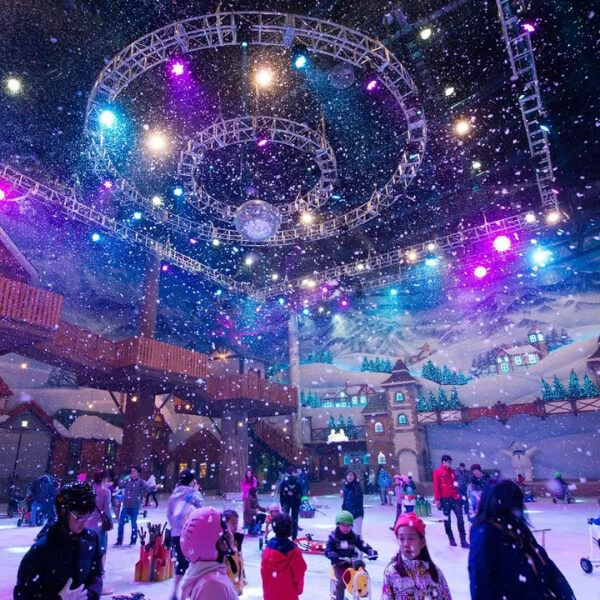
10 Ways to Spend a Magical Christmas in Korea

Hiking in Seoul, the Top 5 Mountains You Must Try

Jeju Island: Top 10 Places You Must See
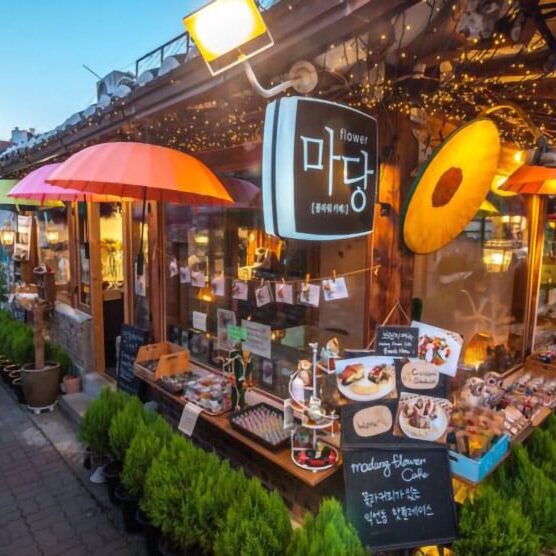
19 Best Things to Do in Seoul Right Now- An Insider’s Guide
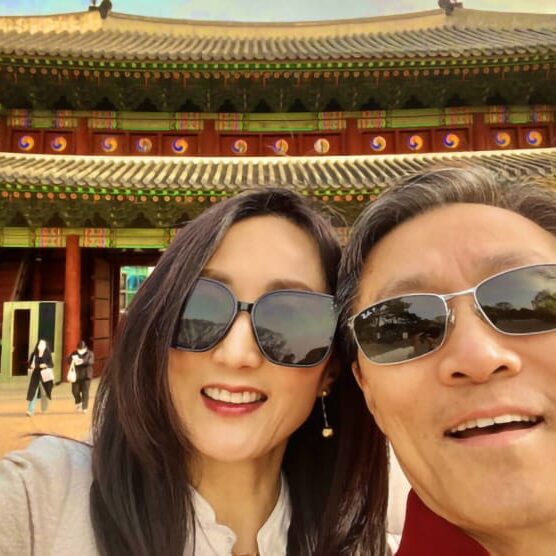
23 Reasons Seoul Will Be Your New Favorite City
Latest travel updates.
- Vaccination is NOT a requirement for entry into Korea.
- There is no requirement on the passport’s remainder validity for entry. You may travel to Korea as long as your passport remains valid throughout your stay in Korea.
- From April 1st, 2023, travelers from the USA, Canada, and 21 other countries no longer need to apply for the K-ETA to travel to Korea. This will run at least until 31st December, 2024 and is designed to make it easier to travel to Korea.

Planning Your Trip To Korea
Check the Korean Embassy for any possible travel restrictions.
- If you’re not sure where to stay, check out our guide to the best hotels in Seoul . You can find our recommendations for the best luxury, mid-range, and budget hotels in Seoul, as well as long-term apartments that you’ll love.
- For the best flight deals to South Korea, Best of Korea recommends Skyscanner and Expedia . You can find the cheapest prices and most convenient flights and buy the one that suits you best.
- For the best hotel prices in Seoul, Best of Korea recommends Klook 0r Agoda – they cover most hotels in Seoul and the rest of Korea and offer great prices without hidden fees.
- Before you travel to Korea, it’s a good idea to order an eSim card, regular sim card or portable WiFi router to collect at the airport so you’re connected as soon as you arrive. You can change a small bit of money before you travel, but you can also use the airport ATM to get some Korean won.
- There are large differences in exchange rates so you will need to do some comparing before you exchange a large sum of money. You can exchange USD to KRW easily at banks or money exchange shops in all major tourist areas like central Seoul (Myeongdong and Namdaemun are good places but the Coex Center also offers money exchange. You can also negotiate the exchange rate with the vendor if you think it is too high.
- You can withdraw cash from bank ATMs. Alternatively, use a pre-paid travel card like the one offered by Wise , which allows ATM withdrawals and payments and works perfectly in Korea.
- Don’t forget to bring a travel adapter for your electronics and leave plenty of extra space in your suitcase for the many Korean souvenirs and goodies you’ll buy on your tri
Do US Citizens Need A Tourist Visa?
No, travelers from the USA don’t need a tourist visa to enter South Korea. You can visit for up to 90 days visa-free.
Current COVID-19 Rules In Korea
Most COVID-19 rules in Korea have been dropped and now there are only 2 main rules to be aware of. First, face masks are mandatory when visiting medical facilities (hospitals). There is no longer a 7-day mandatory quarantine for people in South Korea. If you’re infected with COVID, the Korean government recommends a 5 day self-quarantine, but it’s not enforced. Travelers to Korea should follow the current restrictions or may be liable for fines or deportation.
Korean Tourism Support Hotline
If you have any concerns or problems when traveling in Korea, you can call 1330 . This is a dedicated tourism support hotline where trained specialists provide tourist assistance and is available in Korean, English, Japanese, Chinese, Russian, Vietnamese, Thai, and Malay.
US Government Travel Advisory For Korea
The U.S. Department of State currently has a level 1 travel advisory (Exercise Normal Precautions) for the Republic of Korea (ROK). Find out more about current travel advisories for South Korea on the Department of State website.

6 Best Destinations In Korea
South Korea is truly a country of contrasts. From the bustling, modern city of Seoul , with cutting-edge designer buildings, VR labs, and AI robots, to peaceful UNESCO World Heritage cities like Jeonju and Gyeongju , there are many unique places to explore.
There’s nothing worse than coming back from vacation and hearing about incredible places you missed that you wished you’d seen, such as a beautiful Buddhist temple by the beach (Haedong Yonggungsa Temple) or a leafy island getaway where deer and rabbits roam freely (Nami Island).
Here are 6 of the best destinations in Korea that you absolutely must visit, as well as some of the sights you’ll want to check out while you’re there. We’ll be bringing you lots more detailed destination guides in the future, so be sure to visit again soon.
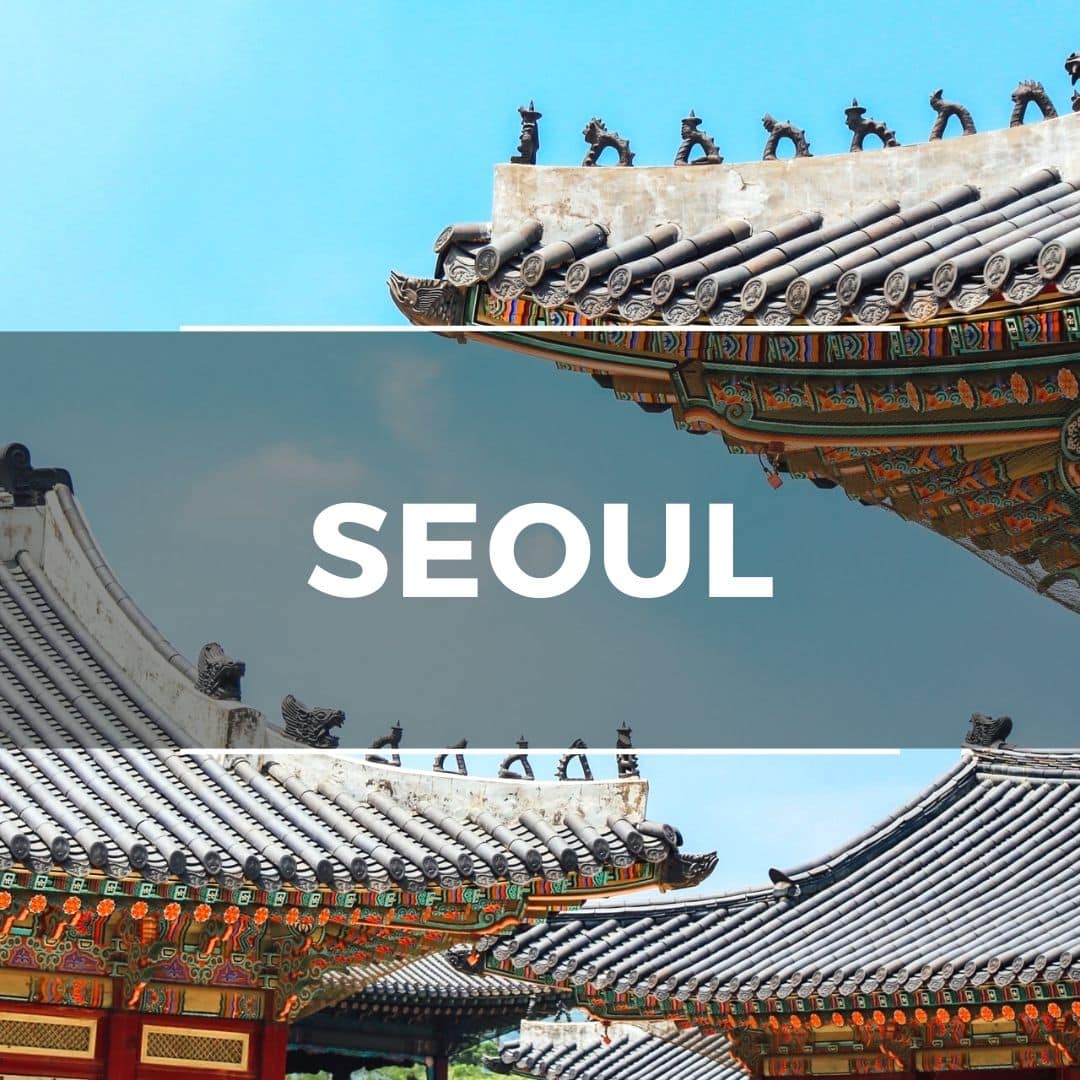
Korea’s Busy Capital
Seoul is Korea’s largest city, capital, and first, stop for most travelers to Korea. There are many beautiful places in Seoul , including landmarks, relics from ancient kingdoms, towering skyscrapers, Buddhist temples, Michelin-starred restaurants, and some of the best street food you’ll find in the world. If you see only one city in Korea, you should definitely visit Seoul.
You’ll never be bored in Seoul. Whether you’re traveling as a family, as a couple, or by yourself, there’s so much to do. Be sure to plan lots of time to check out Korea’s capital.
This Full Day Tour of Seoul will show you some of the hottest spots in the city, while this Customized Private Tour of Seoul will allow you to choose where to go.
Here are 10 of the best Seoul attractions:
- Gyeongbokgung Palace
- Bukchon Hanok Village
- Starfield COEX Mall
- Bukhansan National Park
- Myeongdong Street Markets
- Lotte World Tower
- Secret Garden (Changdeokgung Palace)
- Dongdaemun Design Plaza
- N Seoul Tower
- Yeouido Hangang Park

Korea’s Second City
Busan, Korea’s second city, is a thriving port city far away from Seoul both physically and culturally. This popular summer destination features some of Korea’s most popular beaches and bars. Explore Busan and you’ll find sprawling markets, fresh seafood, film festivals, the world’s largest shopping mall, coastal temples, and lots more.
Busan is a city with some very photogenic sights. See the sunrise on the beach, hike around leafy coastal streets on the side of cliffs, and marvel at the wide range of (living!) seafood in the markets.
This Full Day Tour of Busan will show you the best beaches, markets, and local sights, while this Customized Private Tour of Busan will allow you to choose where to go.
Here are 10 of the best Busan attractions:
- Haeundae Beach
- Gwangbokdong Food Street
- Haedong Yonggungsa Temple
- Huinnyeoul Culture Village
- Gamcheon Culture Village
- Oryukdo Sky Walk
- Lotte World Busan
- Jagalchi Fish Market
- BIFF Square & Centum City Mall
- Taejongdae Resort Park
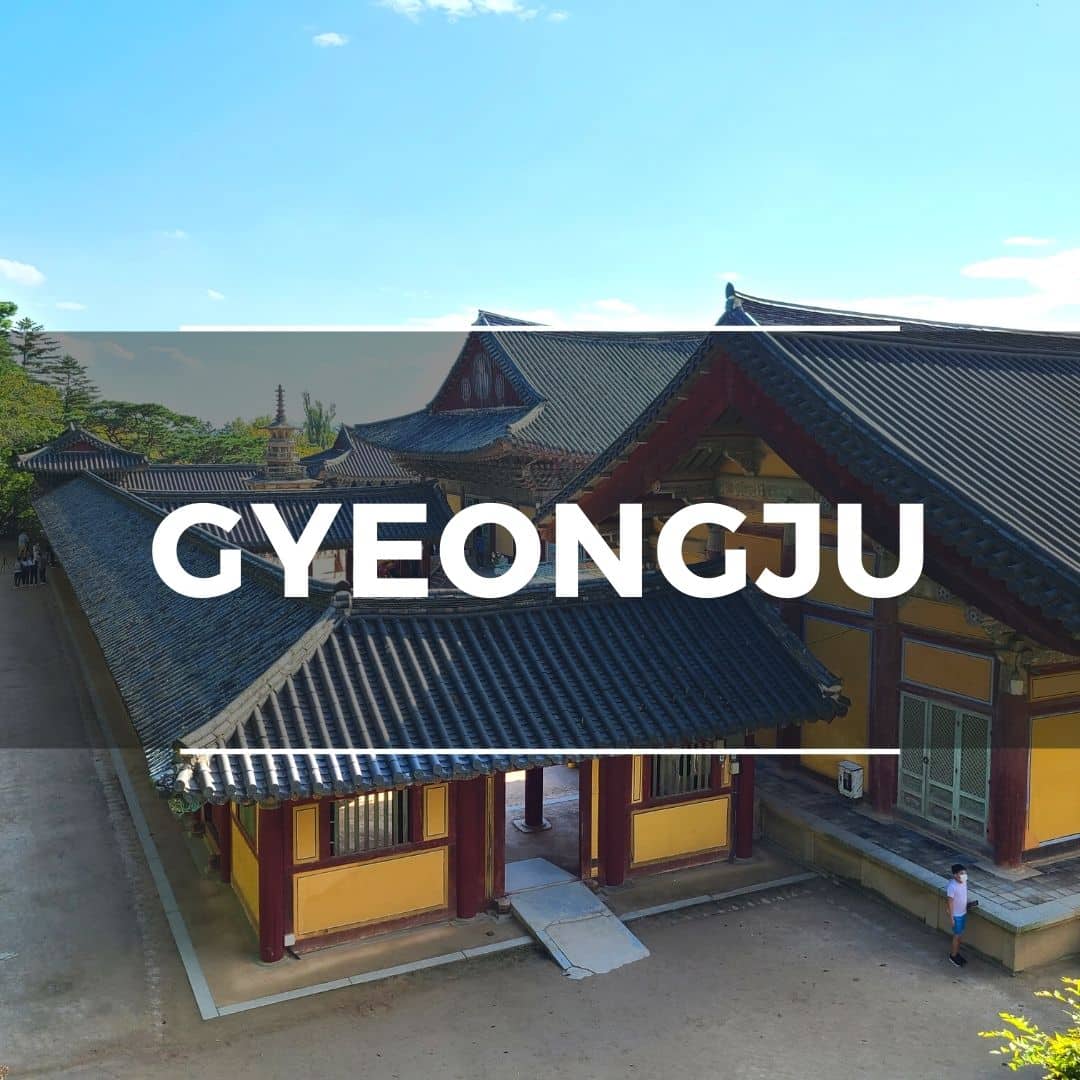
UNESCO City
Gyeongju is the former capital of the Silla Kingdom, part of the Three Kingdoms part of Korean history. These days, Gyeongju is an open air museum housing Korea’s finest history and monument. This UNESCO World Heritage City is a must-see for those who want to learn more about Korea’s deep cultural past.
Gyeongju is packed with temples, palaces, historical sights, and monuments. But it’s not just the history that draws the crowds, the city is an area of natural beauty, lined with cherry blossoms and shadowed by misty mountains.
This Full Day Tour of Gyeongju from Busan will take you around Korea’s open-air museum city, showing the top UNESCO sites along the way, while this Customized Private Tour of Gyeongju will allow you to choose where to go.
Here are 10 of the best Gyeongju attractions:
- Gyeongju Historic Area
- Bomun Lake Tourist Complex
- Bulguksa Temple & Seokguram Shrine
- Donggung Palace & Wolji Pond
- Yangdong Folk Village
- Cheomseongdae Astronomical Observatory
- Gyeongju National Museum
- Gyochon Traditional Hanok Village
- Woljeonggyo Bridge
- Gyeongju National Park
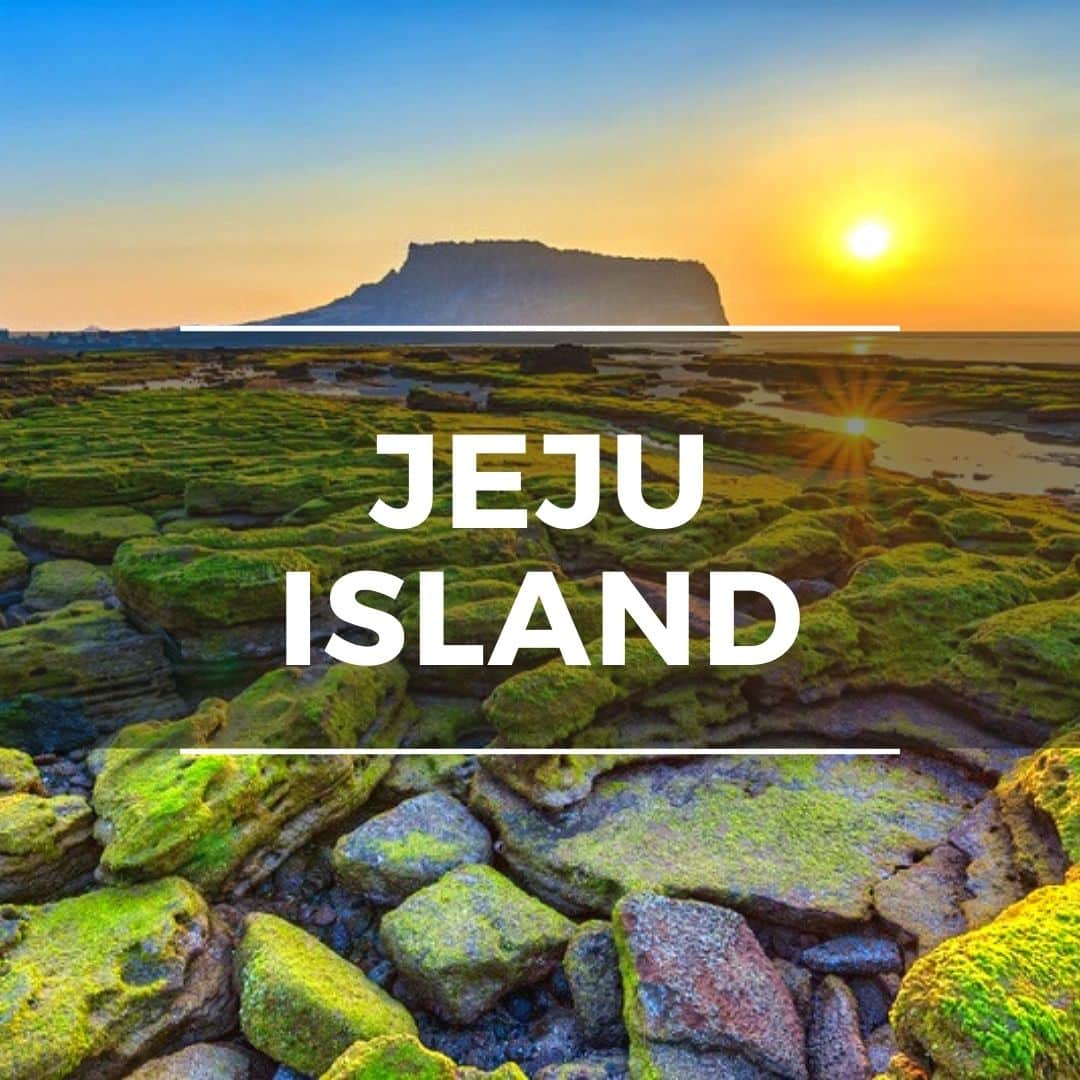
Natural Wonder
Jeju Island is Korea’s semi-tropical island that’s a popular vacation destination for locals and tourists alike. This area of outstanding natural beauty offers up rugged coastal walks, sandy beaches, green hills, and a volcano to hike up for those who enjoy a challenge. Culture and cafe lovers will also find Jeju Island a charm.
From snorkelling under the sea, to hiking above the clouds, sampling Jeju’s black pork BBQ, and drinking local green tea, there’s so many exciting activities, sights, tastes, and experiences waiting for you on Jeju Island.
This Full Day Tour of Jeju Island will show you some of the most incredible UNESCO World Heritage sites on Jeju’s East Coast, while this Customized Private Tour of Jeju Island will allow you to choose where to go.
Here are 10 of the best Jeju Island attractions:
- Seongsan Ilchulbong Sunrise Peak
- Jusangjeolli Hexagonal Lava Cliff
- Hallasan Mountain (Volcano)
- Hamdeok Beach
- Jeju Folk Village
- Hyeopjae & Geumneung Beach Areas
- Cheonjeyeon & Jeongbang Waterfalls
- Udo Traditional Island
- Yakcheonnsa Coastal Buddhist Temple
- O’Sulloc Green Tea Fields
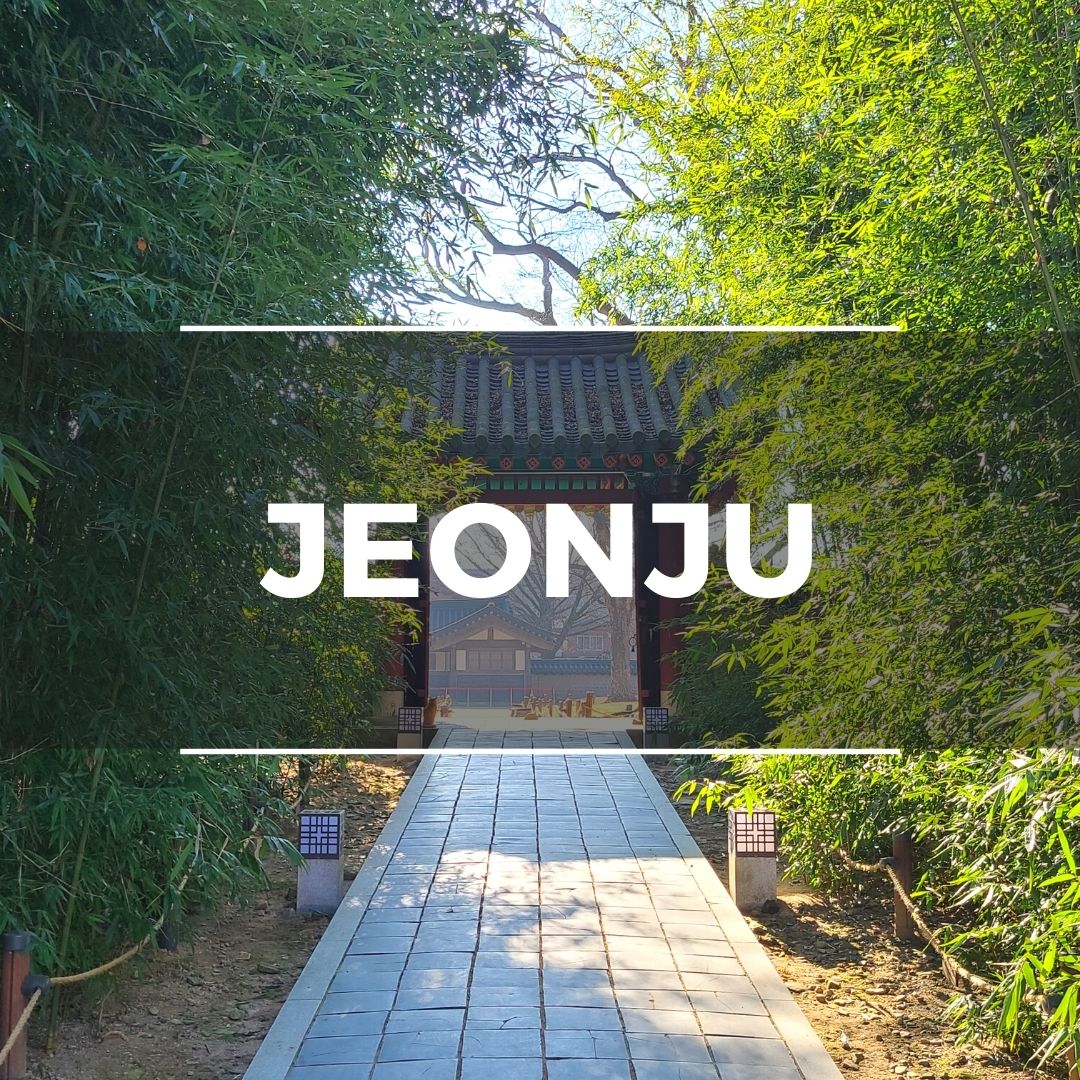
Traditional Korea
Jeonju is famous for its historical and cultural sights, including the sprawling Jeonju Hanok Village, packed with more than 700 traditional hanok houses. Jeonju’s many impressive sights are close to each other and perfect for a day trip from Seoul or Busan. You can even stay overnight in one of the traditional houses.
Jeonju is a tourist hotspot so there are plenty of things to keep travelers entertained and places to experience traditional Korean food and drinks. Be sure to check out the Jeonju bibimbap, one of Korea’s national dishes. Rent hanbok (traditional clothes), take lots of pictures, and see the sights.
This Full Day Tour of Jeonju will show you around the beautiful hanok houses and traditional Korean restaurants, while this 2-Day Tour of Jeonju includes an overnight stay in a hanok and lots of delicious Korean meals.
Here are 10 of the best Jeonju attractions:
- Jeonju Hanok Village
- Gyeonggijeon Shrine & Portrait Museum
- Jeongdon Catholic Church
- Jeonju Hyanggyo Confucian School
- Nambu Traditional Market
- Jaman Mural Village
- Omokdae Viewpoint
- Deokjin Park
- Hanbyeokdang Pavilion
- Taiji-ro & Hyangoyo-gil Shopping Streets
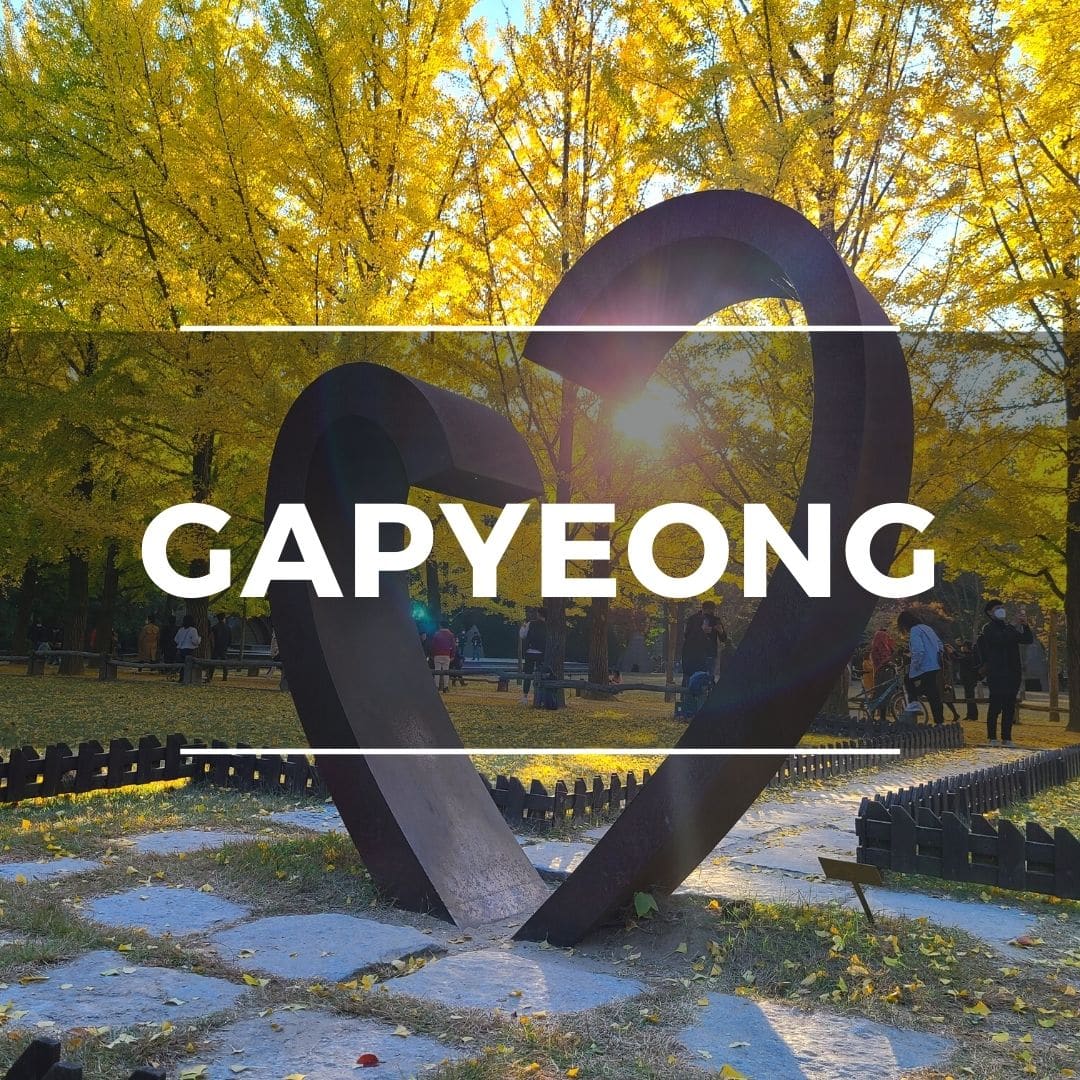
Rural Attractions
Gapyeong County is an area just outside of Seoul that’s home to several interesting attractions celebrating Korean and foreign culture. The lush green hills and blue rivers of Gapyeong make it a great place to immerse in Korean nature.
You’ll find some of the hottest day trip locations here. Explore Gapyeong County on a day trip from Seoul. You can see romantic tree-lined streets and cafes on Nami Island, explore one of Korea’s most beautiful gardens, take a trip to Petite France, and enjoy cycling through the hills on an abandoned railway track.
This Full Day Tour of Gapyeong will show you around Nami Island, Garden of Morning Calm, and the Rail Bike Park.
Here are 10 of the best Gapyeong attractions:
- Nami Island
- Garden of Morning Calm
- Petite France
- Ganchon Rail Bike Park
- Edelweiss Swiss Village
- Cheongpyeong Lake
- Jarasum Island
- Kalbongsan Recreational Forest
- Gapyeong Sledding Hills
- Nami Island Zip Line

There are loads of locations to visit in Korea that make for a perfect day trip from Seoul. Hop on a coach, train, or tour bus in the morning and explore one or more of these unique destinations.
Here are 10 of the best day trips from Seoul to discover on your next journey to Korea:
- DMZ (North Korean Border)
- Suwon Hwaseong Fortress
- Everland Theme Park
- Jeonju Historic City
- Seoraksan National Park
- Korean Folk Village
- Alpaca World
- Gwangmyeong Cave
Most travelers to Korea arrive at Incheon Airport and then travel into Seoul (it’s only 40 minutes away) to begin their journey. Seoul is certainly an incredible place to start traveling, but it definitely shouldn’t be your only destination. Korea has a lot to offer, including a lot of seasonal activities and events that you should take into consideration.
Spring and fall are the best seasons to visit Korea and during these times the traditional cities like Gyeongju and Jeonju look amazing. They’re covered with cherry blossoms or fall foliage and this creates some postcard-like scenes. Gapyeong area is packed full of natural sights to enjoy, so definitely check out these areas.
If you’re visiting during summer, head towards the coastal areas, including the north-east coastal towns of Gangneung & Sokcho, or the south-east coastal areas of Busan and the nearby islands, such as Geoje, Tongyeong, and Yeosu. You’ll find lots of winter activities to enjoy in these areas.
Winter is cold and dry and, ironically, a great time to visit Jeju Island. This semi-tropical island is warmer than the mainland, but still gets snow on the mighty Hallasan Mountain. You can sit on a sunny beach one day and then hike knee-deep in snow the next. Jeju is also famous for its citrus, with thousands of tangerine trees dropping their juicy fruits in early winter.

Where To Stay In Seoul
South Korea is truly a country of contrasts. From the bustling, modern city of Seoul , with cutting-edge designer buildings, VR labs, and AI robots, to peaceful UNESCO World Heritage cities like Jeonju and Gyeongju , there are many unique places to explore. If you’ve decided on Seoul, here are some of the best hotels that are well located and highly reviewed.
Choosing the best destinations to visit in Korea can be a challenge, especially if you don’t know what there is to see. You might not have heard of some of these destinations, which is not surprising. Korea is a country of undiscovered wonders that are waiting to be found.
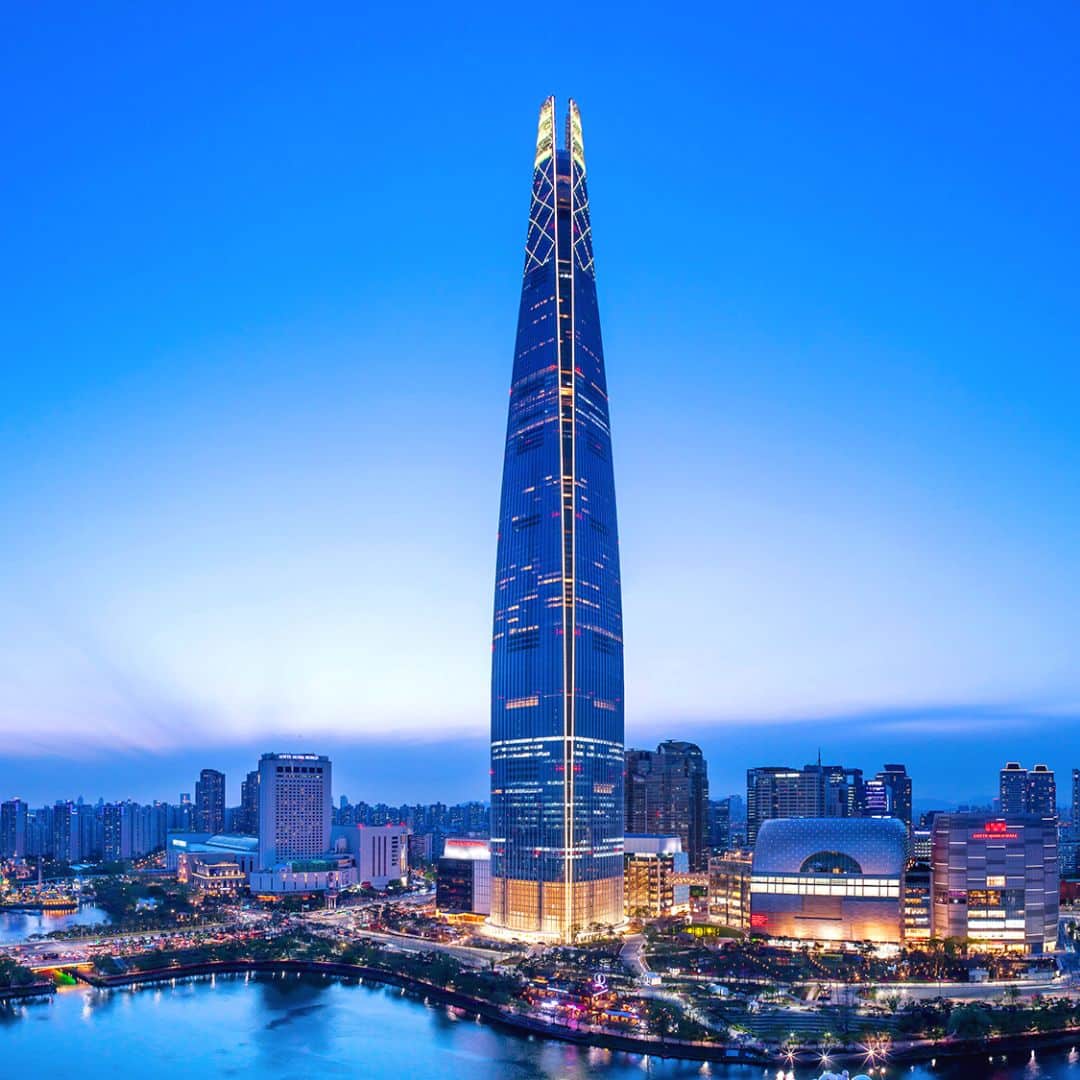
If you want the best Seoul has to offer, these luxury hotels are for you. Located in Seoul’s glitziest neighborhoods, these hotels are within walking distance of Michelin-starred restaurants, chic boutiques, galleries, museums, and the finest shopping experiences available.
Expect nothing but the best in terms of service and style at these luxury hotels. Silky soft sheets, immaculate rooms with the finest fixtures and fittings, and true 5-star service from the hotel staff. These hotels have sports, dining, and entertainment facilities to make you comfortable during your stay.
Airport transfers are available with these hotels, making your journey into and out of Seoul a breeze. Located in popular upmarket districts in Seoul, these neighborhoods have lots of local charm for you to discover, as well as allow easy access to other parts of the city with excellent transport options nearby.
Not only are these beautiful, comfortable hotels inside, but they are also located in some of the most iconic buildings or districts and provide amazing views over some of Seoul’s most interesting districts. The view from the first hotel is worth the cost alone.
Recommended Luxury Hotels In Seoul
Here are 3 of the best luxury hotels in Seoul that we recommend for an unforgettable stay in Korea’s capital:
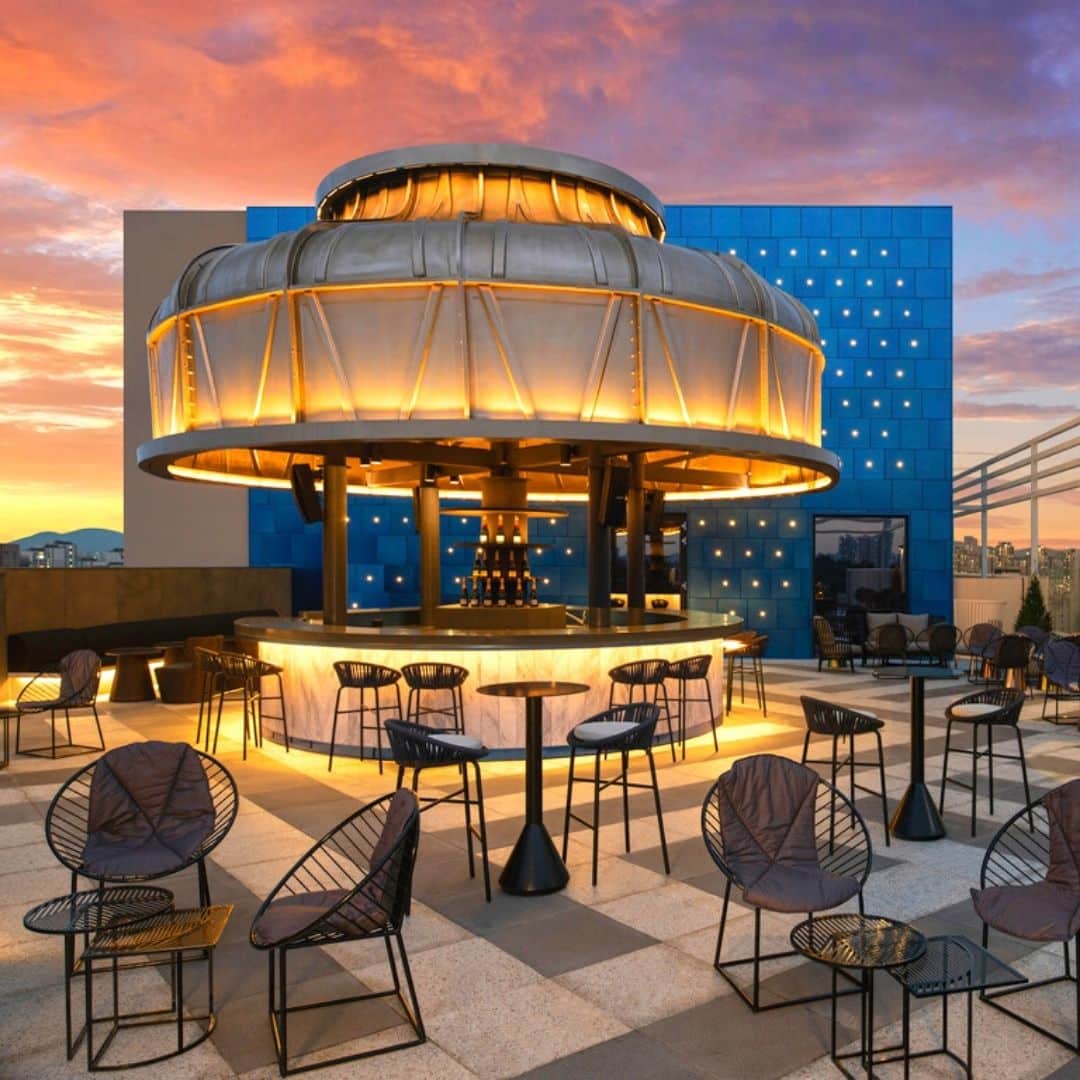
Families. couples and other travelers that want to experience the best of Seoul without breaking the bank can sleep easy with these mid-range hotel recommendations in some of Seoul’s trendy, vibrant districts, including Hongdae, Gangnam, and Myeongdong.
Encounter stylish accommodation in Seoul’s Hongdae districts, which is full of street culture and artistic scenes from the district’s eponymous Hongik University – one of Korea’s leading art centers.
Fashion lovers and shoppers will find lots to love in downtown Gangnam, with its wide streets and glassy storefronts bracketing narrow side streets and hidden delicacies.
Myeongdong is famous for its budget and mid-range accommodation options, including several hotels by the famous Lotte chain – one of Korea’s best mid-range brands.
Whichever mid-range hotel you choose in Seoul, you can be sure you’ll have fantastic city views, convenient subway access, and lots of unique cultural sights, sounds, and tastes to experience.
Recommended Mid-Range Hotels In Seoul
Here are 3 of the best mid-range hotels in Seoul that we recommend for an comfortable stay in Korea’s capital:
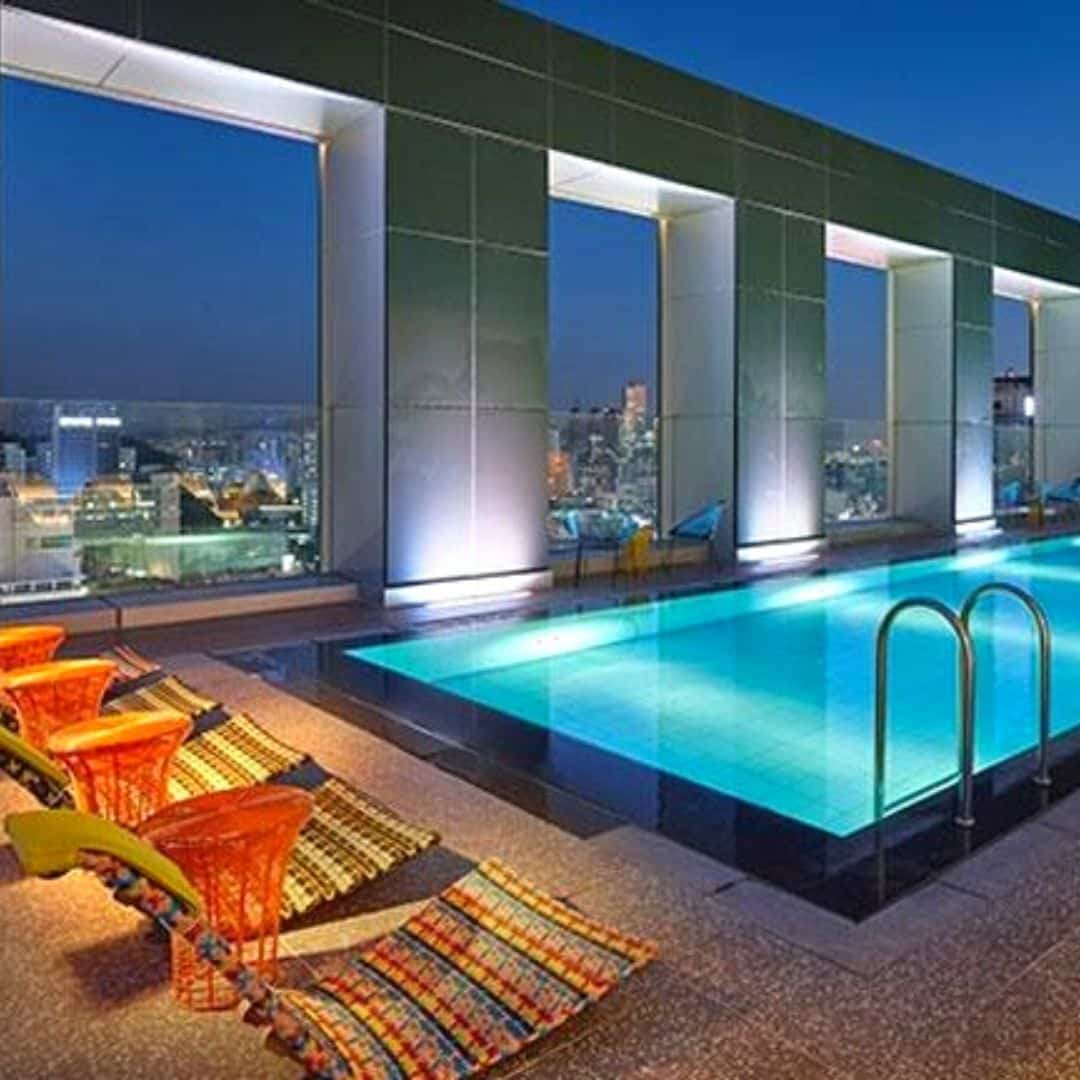
Seoul has a wealth of budget accommodation options that will help make your money go further. These hotels are all around $100 or less but offer the comfort and convenience that you’d expect to find in a mid-range hotel. One even has a beautiful rooftop pool.
Although these hotels are cheaper, don’t lower your expectations. You’ll always find great service in Korea. Save on sleeping to spend more on shopping, souvenirs, sights, and all the other fun things there are to do in Seoul.
These budget hotels in Seoul are also in great locations for shopping, enjoying local culture, and seeing the real side of Seoul and Korea. Hongdae offers bargain hunters the chance to get boutique fashion at market prices, Gangnam has plenty of cafes and cheap eats tucked away off the main avenues, and Myeongdong is a budget traveler’s paradise full of $1 street food and bargain souvenirs.
You won’t be disappointed with a night at any of these hotels. If you want to make your budget go further so you can spend more on some of the incredible day trips Seoul has to offer, definitely book a night at one of these hotels.
Recommended Budget Hotels In Seoul
Here are 3 of the best budget hotels in Seoul that we recommend for an affordable stay in Korea’s capital:

Korean Travel Tips
Korea is a unique country with a written language that looks nothing like English, fascinating etiquette rules , and an always busy lifestyle. Travelers may be lost trying to do even the simplest things.
These travel tips include the best options for staying connected, how to use public transportation easily and cheaply, great discount cards that will save you money as you travel, where to exchange money, and how to learn some basic Korean phrases for when you travel.
These essential Korean travel tips have been crafted by experienced travelers who love to save time and money. Only the best quality services and products are recommended here.
Here are our Korea travel essentials that’ll help you get around more easily, save you money, and let you get the most out of your trip.
Plan ahead now and you’ll have fewer troubles on your travels, giving you more time to enjoy your time in Korea.
If you’re traveling to Korea, you’re almost certainly going to want to get access to the internet to help you navigate, translate Korean, or even book tickets to attractions. Korea has one of the world’s best mobile internet and the prices are very reasonable. 5G mobile internet services are available across the country and Korea was one of the first to get the super-fast service. You won’t have problems connecting with a sim card or WiFi router when you travel.
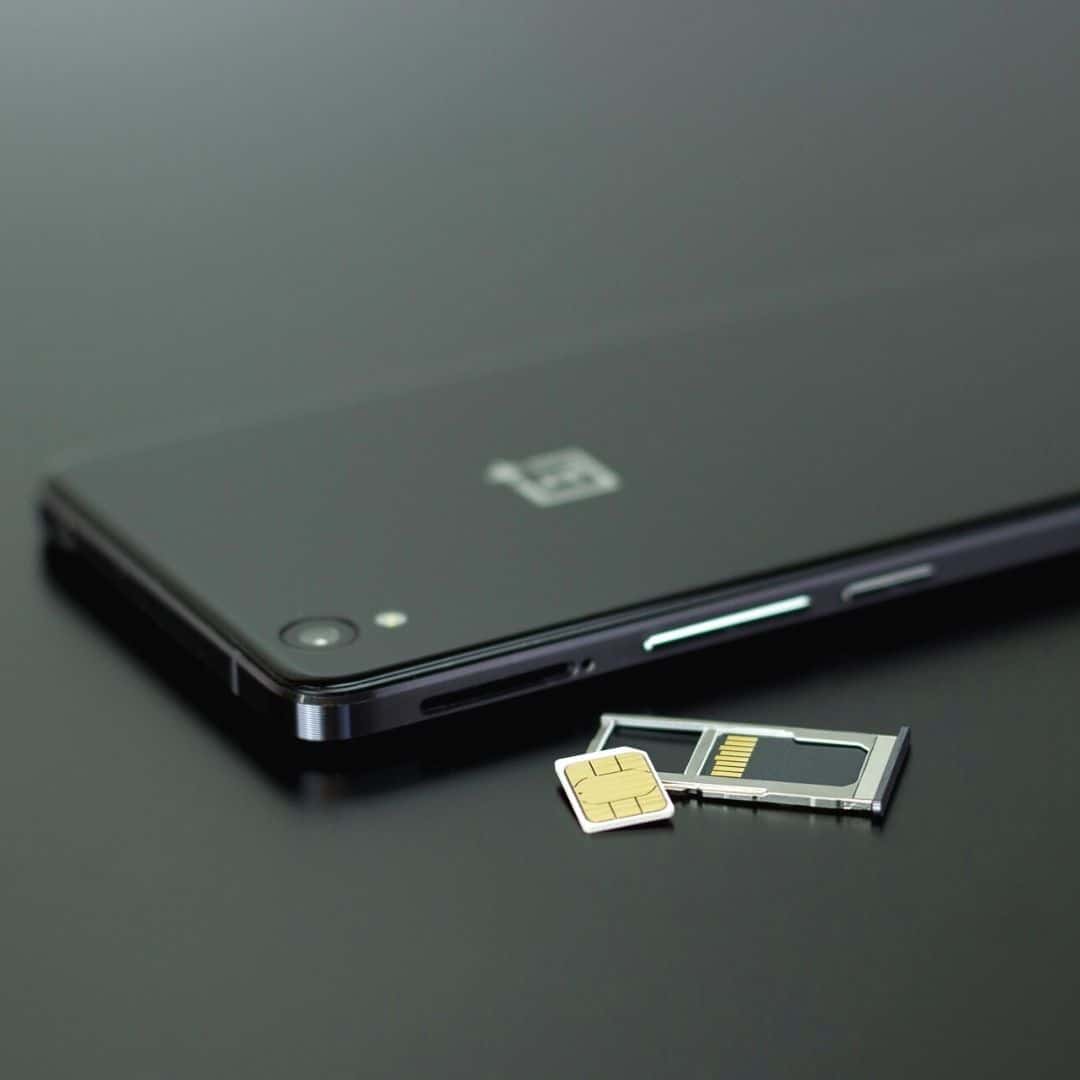
Sim Cards & Data Plans
A Korean sim card is a great way to get access to all your usual cellphone services when you travel to Korea. Sim cards come with data-only packages, or data and phone services combined.
Buying a Korean sim card will give you access to a Korean phone number, which is useful when using Korean apps. If you want to order food online in Korea, you need to have a Korean phone number to complete the order.
Korean Sim Card Costs
Prices start at W5,900 ($5) for a 1-day sim. You can also get 10-day sim cards (W34,700/$28) and 30-day sim cards (64,400/$52). These all come with unlimited data, domestic calls, and texts.
You can purchase a Korean Sim Card From Klook and collect it at the airport. This is a very convenient option as you can use it immediately to help navigate and check in back home.

Portable WiFi Routers
A Korean portable WiFi router will give you access to mobile internet throughout Korea by connecting to WiFi hotspots run by the major phone companies in Korea and comes with great coverage.
The major benefits of a portable WiFi router include a lower cost than a Korean sim card and also the ability to connect up to 3 devices to 1 router. That means that families and groups will be able to share the service.
Korean Portable WiFi Router Costs
The cost of a Korean portable pocket WiFi router is W3,200 ($2.60) per day. You can rent the WiFi router for as many days as you require and pay in advance and pay any excess days when you return it.
You can also purchase a Korean Portable WiFi Router From Klook and collect it at the airport. You can book online before you travel so that it’s guaranteed to be waiting for you.
Should I Get A Sim Card Or WiFi Router In Korea?
Both a sim card and WiFi router are great options for travelers to Korea and will almost guarantee a great reception for mobile internet. The choice between whether you should get a sim card or WiFi router in Korea really comes down to the costs involved and if you need a Korean phone number.
WiFi routers are cheaper and allow you to connect 3 devices, so they’re perfect for families. However, a sim card gives you a Korean phone number, which means you can call people and also register for Korean apps which require a phone number.
Check out our detailed article about the Best Sim Card & Portable WiFi options for traveling to Korea.
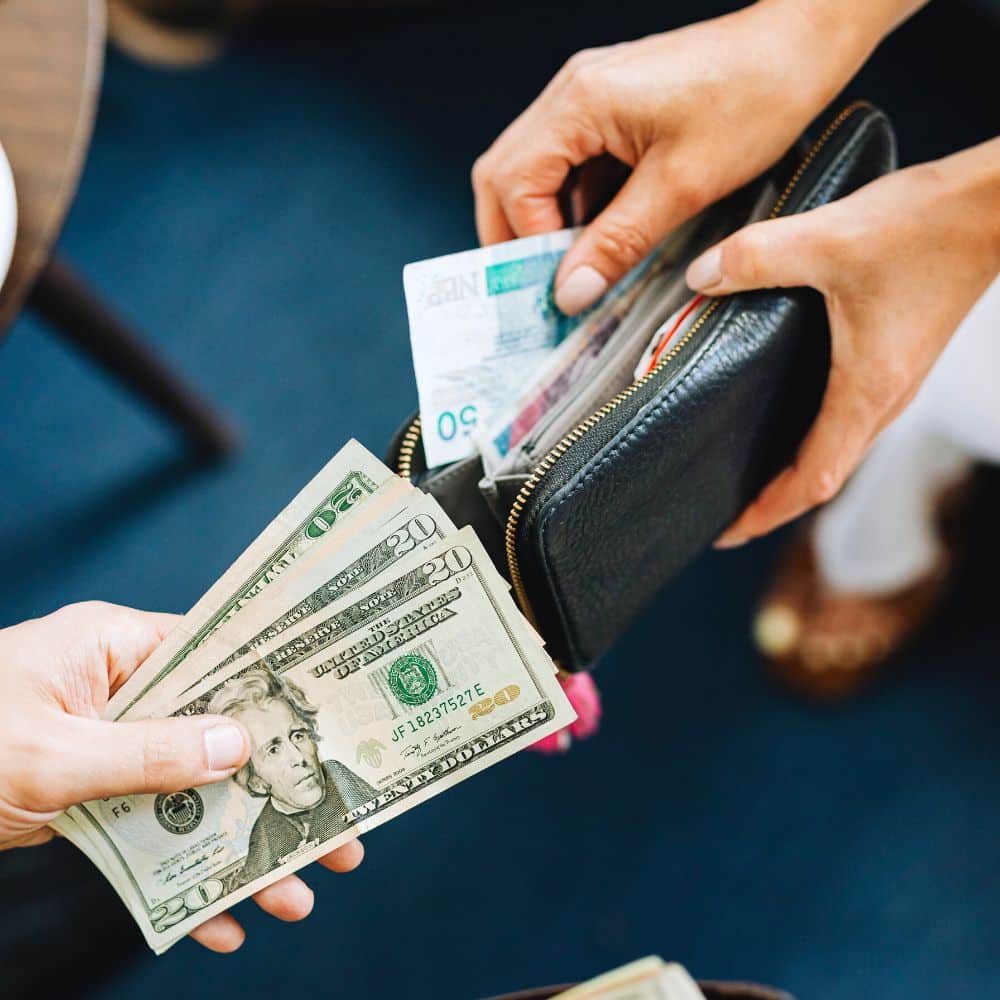
Korea is a safe, modern country and one that has pushed hard for the mass adoption of cards. Almost every location that deals with money is required to accept card payments. This is great news for travelers to Korea as you can use a card to pay for meals out, entrance tickets, trains, and lots more.
Cash is still needed for some things, such as topping up transportation cards like the T-Money Card (more on that soon) and for paying for small things like street food. Please note, as Korea doesn’t have a tipping culture, you don’t need cash for leaving a tip. In fact, if you try to leave a cash tip, it’ll be returned to you in most places.
Read on to find the best tips to avoid getting ripped off when exchanging money and how to pay the lowest fees when you use a card to pay in Korea. Be a smart traveler and save more money for shopping and souvenirs.
Korean Money Exchange Options
Once you arrive in Korea, there are several options for exchanging money. First, you can exchange money at a money changer in tourist areas such as Myeongdong. These money changers used to have the best rates in Seoul.
However, a better option these days is to use the currency exchange machines from WOW Exchange. These machines are located all over Seoul’s most popular tourist spots, stations, and hotels. They allow you to exchange foreign cash directly to Korean won, with better rates than at the airport. You can also use these machines to claim a tax refund for your shopping before heading to the airport. Both options require a passport.
Should I Change Money At The Airport?
Exchanging money at the airport is easy and convenient as you can instantly get cash to use for shopping, transportation, and general use. However, the exchange rate at the airport is usually much worse than you’ll find in other places in Korea, as mentioned previously. If you need cash as soon as you land, withdraw a small amount ($50) and then exchange the rest in Seoul.

Travel Money Cards For Korea
While cash is useful and familiar when traveling, a much better option is to use a travel money card (also known as a currency card). Travel money cards, such as the Wise Travel Money Card, allow you to pay for travel expenses without the need to carry cash or convert money.
A travel money card offers the convenience of using a credit card without high fees that a regular bank could charge. It also allows you to withdraw cash from an ATM without a fee (up to a limit), so you can avoid carrying any cash on the flight or using a money exchange. The exchange rate is the mid-market rate, meaning it’s better than you’ll find even at the money exchanges listed before.
Can I Use My Bank Card In Korea?
Credit cards are widely accepted in Korea. Visa and Mastercard users shouldn’t face a problem, but other cards aren’t as widely accepted. Debit cards and cash withdrawals might not work depending on the bank. Your bank may charge a fee when using it overseas, or give a bad exchange rate. Check with your bank before traveling.
The best option for travel money in Korea is to have a mixture of cash and cards, with a backup credit card just in case. Taking some USD with you is always a good option as you can find plenty of places to exchange it to Korean won and probably at a better rate than you’ll get in the US. If you want to withdraw money in Korea, look for the global ATMs in tourist areas.
Taking a travel money card will be safer, cheaper, and more convenient than relying on your own bank or credit card, too. These cards offer competitive rates and are widely accepted around the world so you can use them to visit other countries, too. If you use a travel money card and it gets lost or stolen, you can freeze the card instantly with the app and not have to worry about losing the balance on the card.
When you visit Korea, you’ll notice that most people pay for goods with a card or payment app, even for small purchases like a bottle of water. Unfortunately, the payment apps that are common in the US, such as Apple Pay or Google Pay, aren’t available in Korea. Korean apps, such as Kakao Pay, require a Korean bank account, and therefore aren’t an option for travelers.
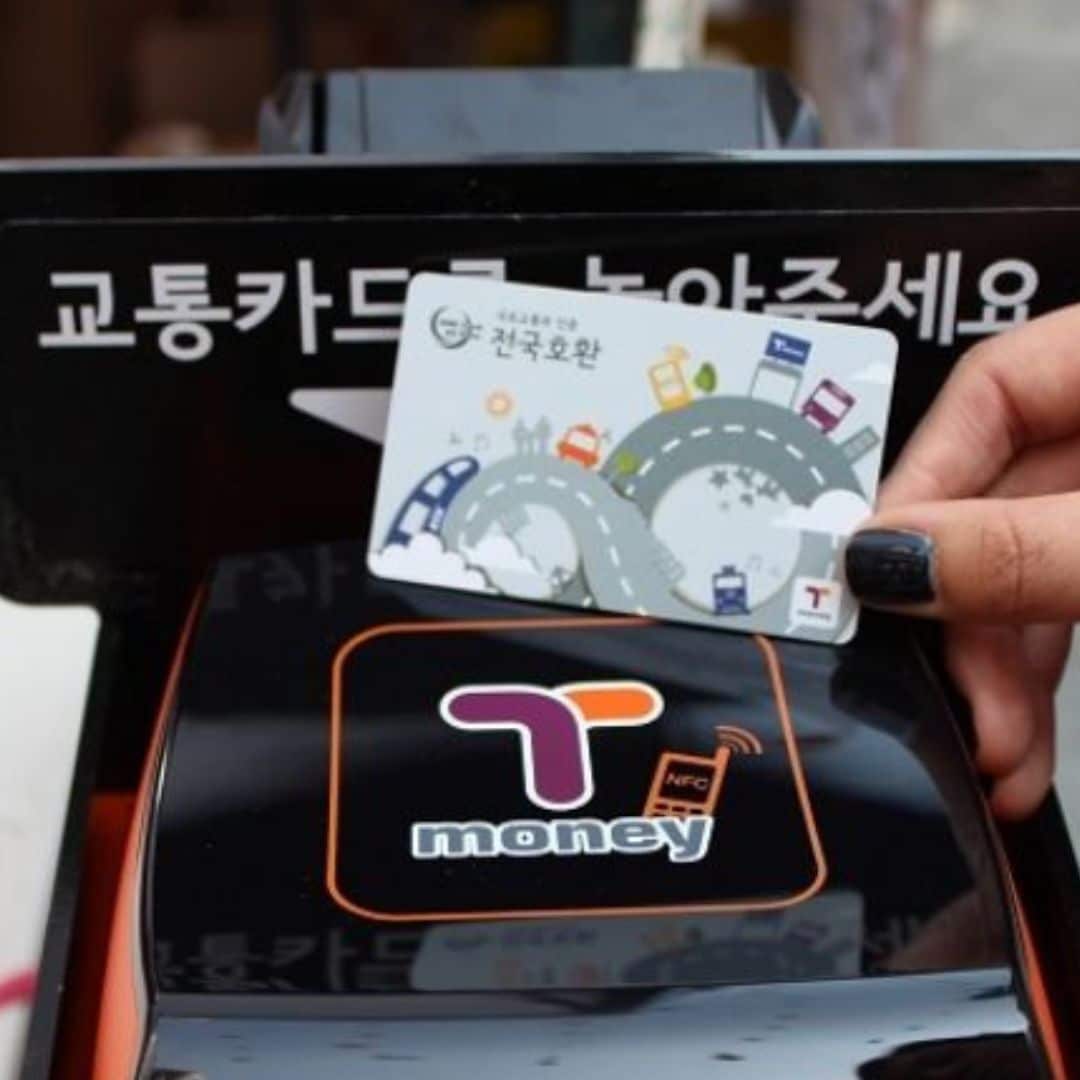
T-Money For Public Transport
The T-Money Card is an essential purchase for every traveler to Korea. The T-Money Card is a transportation card that allows contactless travel on Korea’s buses and subways. Simply buy a T-Money Card, top-up the card, then use it to travel.
Not only is this transportation card really convenient, it also saves you money. You’ll receive a discount on every bus or subway journey when you pay with the T-Money Card. These discounted fares are available in all cities across Korea, not just Seoul.
This isn’t the only use of the T-Money Card. You can also use to buy a coffee from Starbucks, get lunch in McDonald’s, shop for Korean cosmetics, and even to watch a baseball game. It’s a very useful card that can be used anywhere you see the T-Money Card.
You can get the T-Money Card in Korea from subway stations and at certain transport centers, including Seoul Station and Incheon Airport. The card costs 2,500 KRW. You can buy the card with a credit card, but to top-up the card, you need to use cash. If you buy a Discover Seoul Pass, this card includes the T-Money functions.
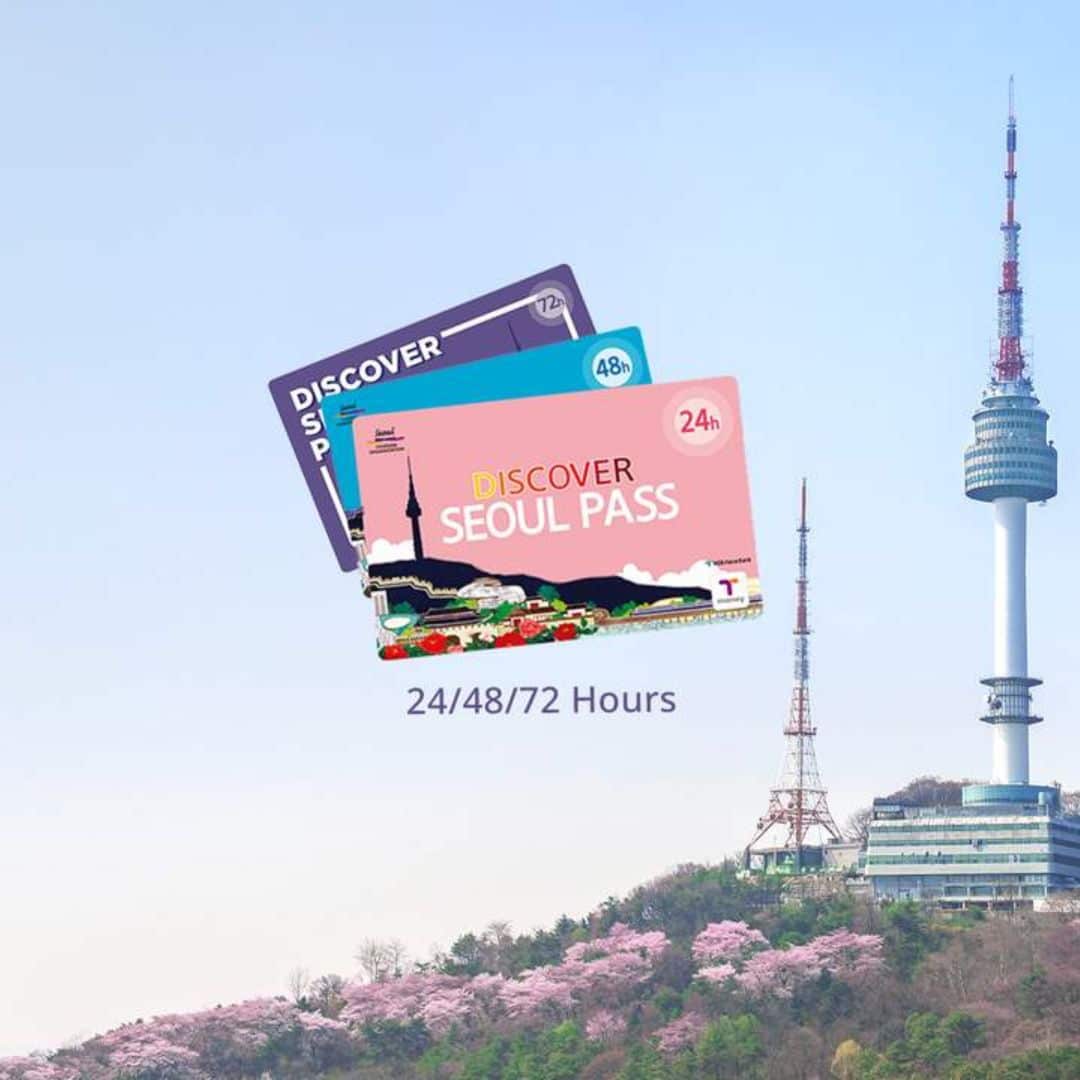
Save With The Discover Seoul Pass
Travelers to Seoul have a lot of options for incredible attractions to enjoy and experience. However, tourists, especially families, can find that the cost of these attractions quickly add up, especially when you are visiting many locations in a short time.
A great way to save money when you travel in Seoul is to buy a Discover Seoul Pass – a special card that offers you big savings on some of Seoul’s top attractions, as well as other benefits.
If you plan to visit Seoul’s Royal Palaces, N Seoul Tower, Lotte World Adventure Theme Park, the COEX Aquarium, Alive Museum, Seoul Zoo, or other premium attractions, you can gain free entry when you purchase a Discover Seoul Pass.
Not only that, you can also get a free river cruise, free hanbok rental, free ride on the Airport Express from Incheon Airport to Seoul, free City Tour Bus Ride, free T-Money Card and lots more.
The Discover Seoul Pass is valid for 24 | 48 | 72 hours and is valid from the moment you first use it until that many hours later.

Things To See & Do In Korea
If you want to build your own itinerary for South Korea, then this section of the South Korea Travel Guide will provide the building blocks you need to craft the perfect trip.
South Korea is a country packed with famous landmarks and sights, unique culture – modern & historical, family-fun activities, outdoor adventures, cozy cafe districts, and natural wonders. There’s more to do in Korea than you could imagine and it’s impossible to explore it all in one trip. Try to plan your itinerary by cities and locations. For example, plan your day in Seoul stay by district.
Here are some of the best things to see and do in South Korea, broken down into different themes so you can find things that interest you the most. The location of each of these attractions is included, too, so you can create a city by city itinerary, seeing the best South Korea has to offer.
These attractions are available all year round so whenever you go to Korea, you can enjoy them. There are plenty of things to see and do in Korea that only happen during certain seasons. Check out the Season Guide in this South Korea Travel Guide for more information about Korean festivals and seasonal events.
Here are 10 of the best Korean landmarks:
- Lotte World Tower (Seoul)
- Bukchon Hanok Village (Seoul)
- Nami Island (Gapyeong)
- Banwol ‘Purple Island’ (West Coast)
- N Seoul Tower (Seoul)
- Dongdaemun Design Plaza (Seoul)
- Seoraksan National Park (Gangwon Province)
- Hwaseong Fortress (Suwon)
- Cheonggyecheon Stream (Seoul)
- Gamcheon Cultural Village (Busan)
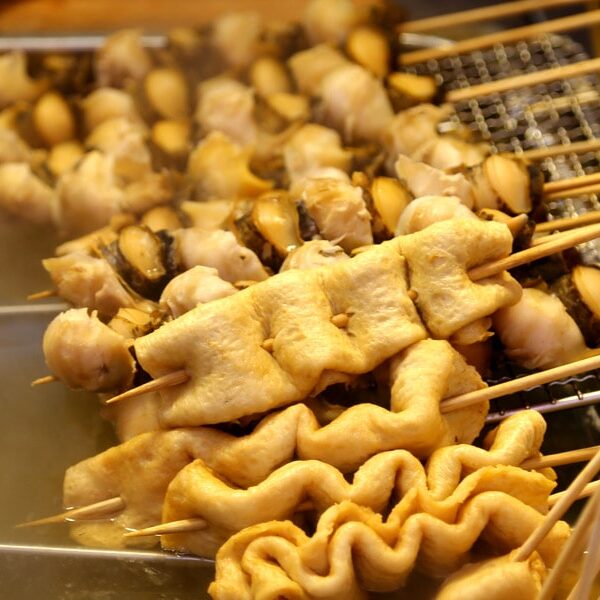
Why travel to a diverse country such as Korea and not embrace the local culture? Here are 10 of the best unique Korean experiences you can only enjoy fully in Korea. Be brave, try something new and create lasting memories of your Korean adventure.
Here are 10 of the best uniquely Korean experiences:
- Wear Traditional Korean Hanbok (Royal Palaces)
- Sing In A Korean Noraebang (Everywhere)
- Sleep In A Korean Hanok House (Hanok Villages)
- Visit The Kimchi Museum (Seoul)
- Eat Street Food (Traditional Markets)
- Experience A Korean Temple Stay (National Parks)
- Drink Makgeolli – Korean Rice Wine (Everywhere)
- Visit The World’s Most Dangerous Border – The DMZ
- Relax In A Korean Sauna (Everywhere)
- Visit A Korean Green Tea Field (Boseong, Jeju)

Here are 10 of the best Korean historic sights:
- Gyeongbokgung Palace (Seoul)
- The Secret Garden (Seoul)
- Bulguksa Temple (Gyeongju)
- Jeonju Hanok Village (Jeonju)
- Seoul Fortress Walls (Seoul)
- Haedong Yonggungsa Temple (Busan)
- Andong Hahoe Folk Village (Andong)
- Gyeongju Historic Area (Gyeongju)
- Baekje Historic Area (Gongju, Buyeo)
- Jangsaengpo Whale Museum (Ulsan)

Here are 10 of the best modern K-Culture spots:
- K-Pop Headquarters (Seoul)
- HYBE Insight (Seoul)
- COEX Artium (Seoul)
- K-Style Hub (Seoul)
- Hongdae Shopping Street (Seoul)
- Hallyu K-Star Road (Seoul)
- Asia Culture Center (Gwangju)
- Busan International Film Festival Square (Busan)
- MBC World Theme Park (Seoul)
As you’ll see, there’s just so much to see and do in Korea. You could spend a whole week in Seoul and not run out of exciting activities to do and sights to explore. Our advice is to try to avoid planning to do too many things in one day and adding in plenty of free time.
There’ll be many random things that catch your eye, such as a curious side street, or your nose, like the delicious smells from a food stall. Make sure you’ve got flexibility in your schedule to investigate these surprises and to take a rest if you need to – walking and traveling for days on end can get tiring.
Korea comes alive at night and markets and city streets are often best explored after the sun goes down. Drab concrete buildings come alive with neon signs, lanterns, and electric lights and are quite a sight to be seen. Visit popular tourist attractions such as the royal palaces and hanok villages during the morning as they’ll be less crowded.
If you plan to visit the Secret Garden in Changdeokgung Palace (you really should!), tickets are available on the day and sell out fast. Getting to these places early can guarantee you get tickets, see the sights unobstructed, and have time in the evening to soak up the night life and culture.
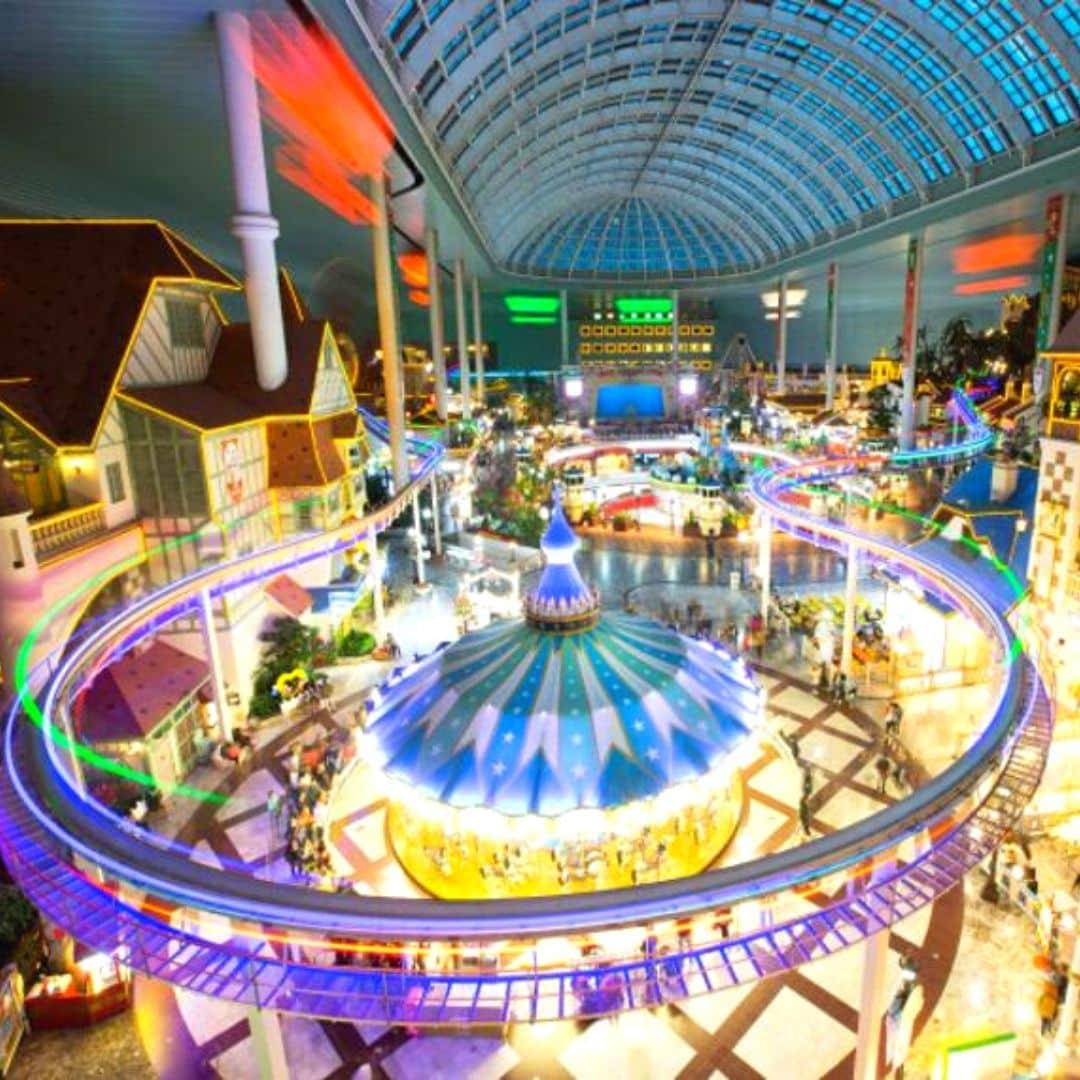
Here are the 10 best family-friendly activities in Korea:
- Nami Island & Garden of Morning Calm (Gapyeong)
- Seoul Grand Park & Zoo (Seoul)
- Lotte World Adventure (Seoul, Busan)
- Alive Museum & Dynamic Maze (Seoul)
- Seoul Children’s Grand Park (Seoul)
- Seoul Children’s Museum (Seoul)
- Everland & Caribbean Bay Theme Parks (Near Seoul)
- Sea Life Busan Aquarium
- Jeju Dinosaur Island (Jeju)
- Alpaca World (Gangwon Province)
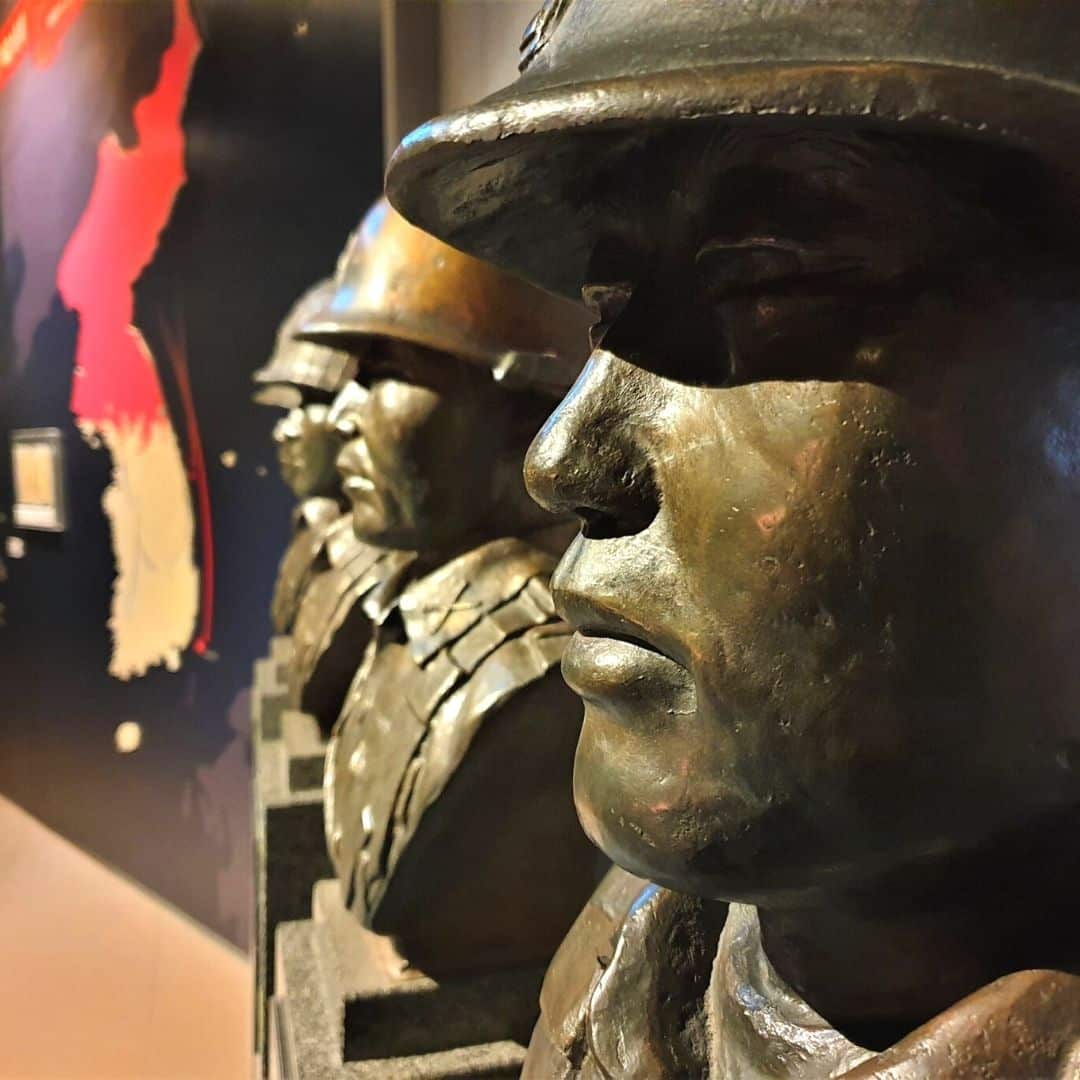
Here are the 10 best museums & galleries in Korea:
- National Museum of Korea (Seoul)
- Seoul Museum of Art (Seoul)
- Gyeongju National Museum (Gyeongju)
- War Memorial of Korea (Seoul)
- National Folk Museum of Korea (Seoul)
- National Maritime Museum (Busan)
- Seodaemun Prison History Museum (Seoul)
- Seoul Museum of History (Seoul)
- Museum Kimchikan (Seoul)
- Daegu Art Museum (Daegu)

Here are the 10 best cafe areas in Korea:
- Ikseondong Hanok Village (Seoul)
- Gyeongui Line Hongdae (Seoul)
- Samcheondong Cafe Street (Seoul)
- Jeonpo Cafe Street (Busan)
- Hwangnidan-Gil (Gyeongju)
- Gangneung Coffee Street (Gangneung)
- Sinsa-Dong / Garosugil Road (Seoul)
- Jukjeon Cafe Street (Seoul)
- Hwaseong Haenggung Area (Suwon)
- Kim Kwang Seok Gil Street (Daegu)

Here are 10 of the best Korean markets and shopping areas:
- Gwangjang Market (Seoul)
- Myeongdong Market Area (Seoul)
- Jagalchi Fish Market (Busan)
- Centum City Mall (Busan)
- IFC Mall (Seoul)
- Starfield COEX Mall (Seoul)
- Nambu Market (Jeonju)
- Seomyeong Underground Shopping Center (Busan)
- Seogwipo Maeil Olle Market (Jeju)
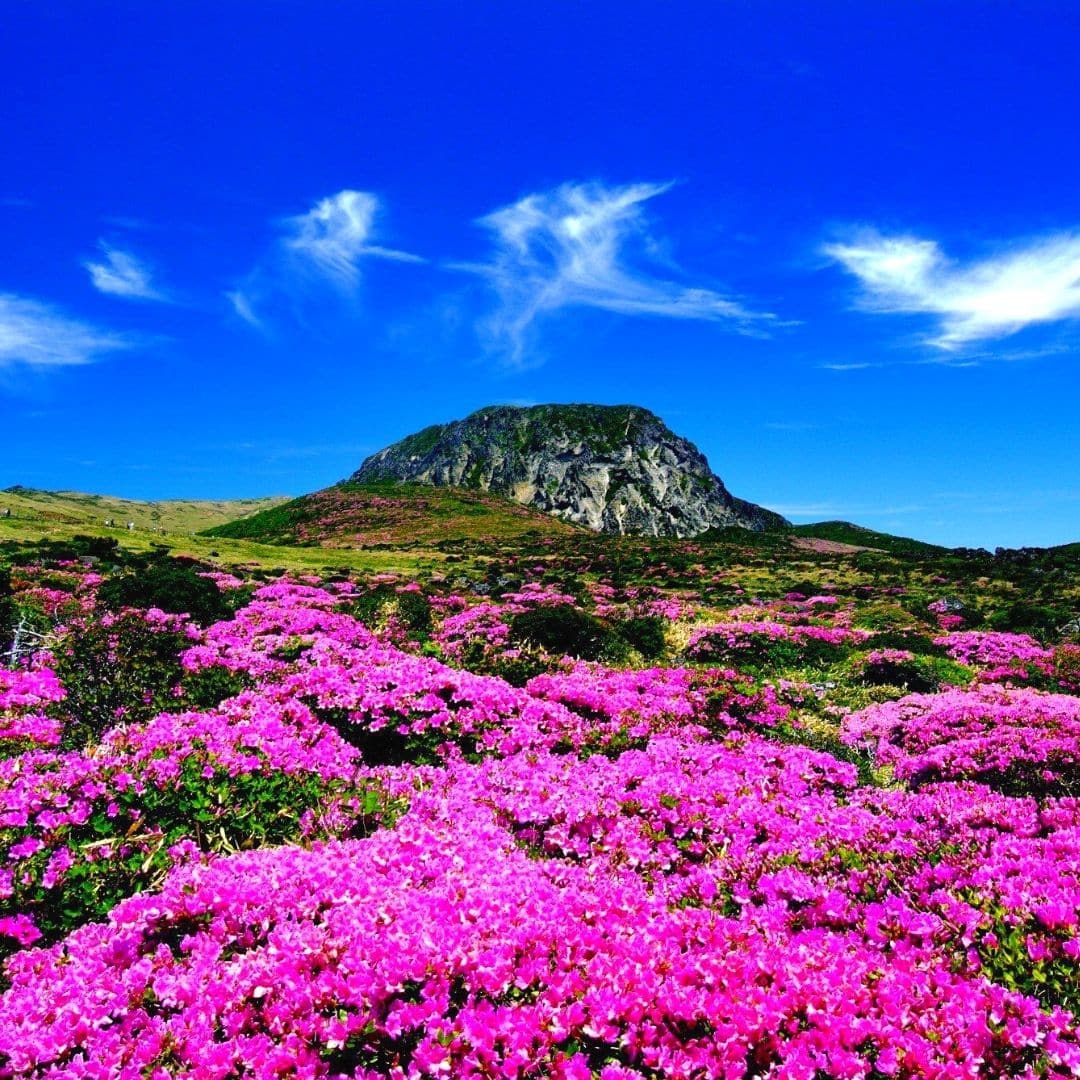
Here are 10 of the best natural sights in Korea:
- Hallasan Mountain (Jeju)
- Jirisan National Park (Jeollanam Provice)
- Seoraksan National Park (Gyeonggi Province)
- Seongsan Ilchulbong Sunrise Peak (Jeju)
- Damyang Juknokwon Bamboo Forest (Damyang)
- Boseong Green Tea Plantation (Boseong)
- Haeundae Beach (Busan)
- Udo Island (Jeju)
- Hwaamdonggul Cave (Gangwon Province)

Travel Itinerary For Korea
When planning a travel itinerary for South Korea, it’s best to think about what kind of experience you want when you travel to South Korea and build your itinerary from that. What kind of traveler are you and what do you want to take away from your Korea trip? Are you planning a trip for yourself, for your family, or as a romantic escape?
Do you want to learn about traditional Korean culture and history? Are you visiting to immerse yourself in modern Korean culture and maybe meet your idols? Are you planning to get out into Korea’s mountains to hike and join a Buddhist Temple Stay? Or are you going to eat, drink, shop, and make the most of Korea’s discounted goods? Or all of the above?
This section of this South Korea Travel Guide will offer some of the best one-week and two-week itineraries for South Korea. These itineraries are rough guides, created to help you begin planning your trip. Feel free to pick and choose the parts from them that you like to create your own travel itinerary for South Korea. We’ll be adding more great itineraries soon, be sure to check back for the latest ideas.
Classic 1 Week Itinerary For Korea: Seoul, Busan, Gyeongju
This is one of the most popular of the 1-week itineraries for South Korea and will take you to the most famous and interesting places that are top of most travelers’ South Korea bucket lists. Starting in Seoul, Korea’s capital, you’ll explore the best sights in this city before taking a day trip out to the lovely Gapyeong County to get a breath of fresh Korean countryside air.
From day 4, zip across the whole of Korea on the high-speed KTX train and explore Korea’s second city, Busan. See coastal temples, fish markets, wide beaches, and more in Busan before taking a day trip to Korea’s historic UNESCO World Heritage City, Gyeongju. On the last day, it’s time to return to Seoul to pack your bags full of the best souvenirs and snacks and say farewell in the highest part of the city.

Afternoon : Dressed in your hanbok, enjoy more traditional Seoul with a walk around the narrow streets of the Bukchon Hanok Village. Visit traditional Korean teahouses, galleries, markets, and more.
Evening : Check out the stalls and shops of artsy Insadong, contemplate Jeogyesa Temple, and take an evening stroll along the Cheonggyecheon Stream before dining in Myeongdong or the Jonggak Avenue of Youth. This Full Day Tour of Seoul will show you some of the hottest spots in the city, while this Customized Private Tour of Seoul will allow you to choose where to go.
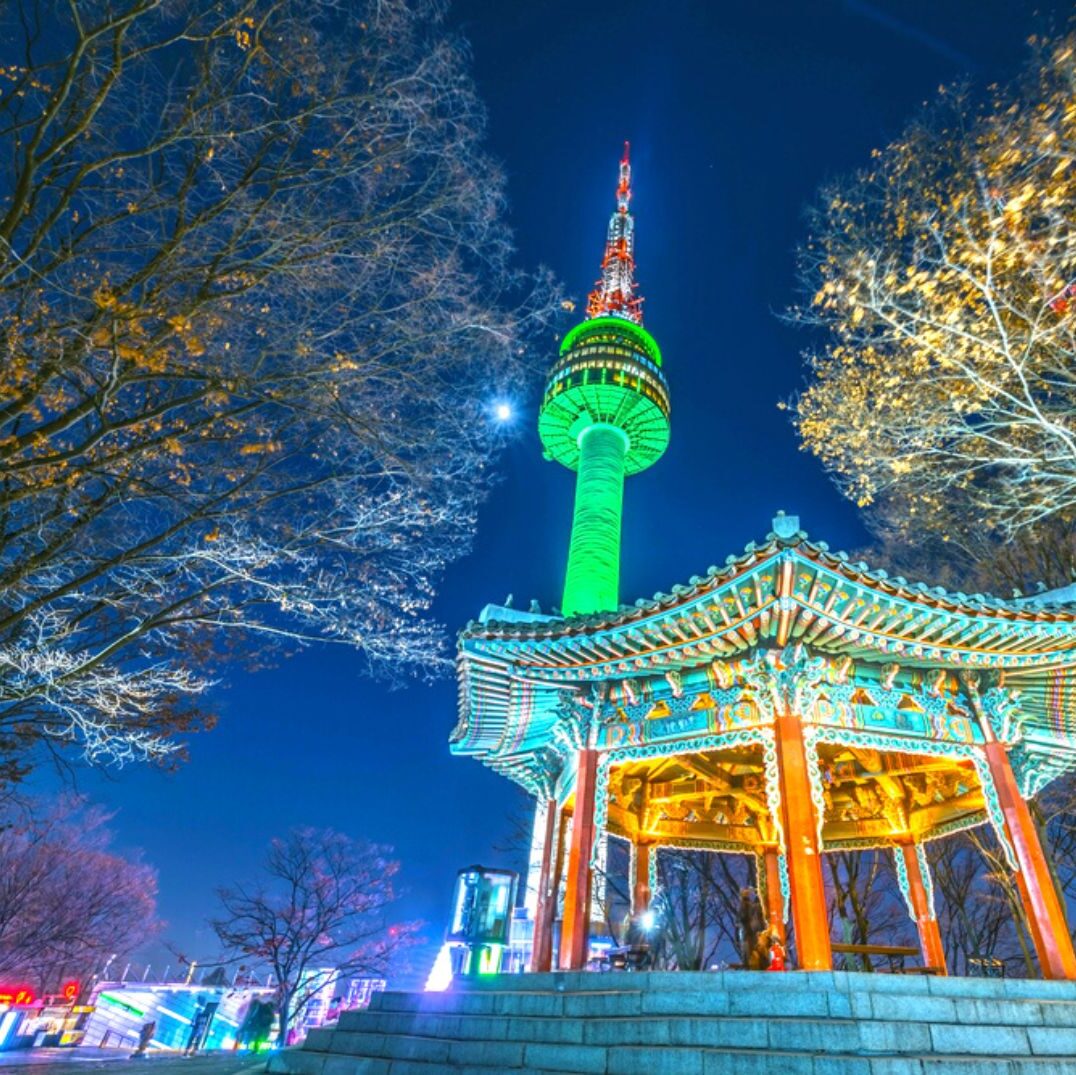
Afternoon : Head back to central Seoul and witness the bustling sights and delicious smells of Seoul’s traditional Gwangjang and Dongdaemun Markets. Try delectable Korean street foods here.
Evening : Take the Namsam Cable Car to the top of Namsan Mountain and watch the sunset from N Seoul Tower. See some of Seoul’s fortress walls before heading back down to go late-night shopping at Myeongdong Market.
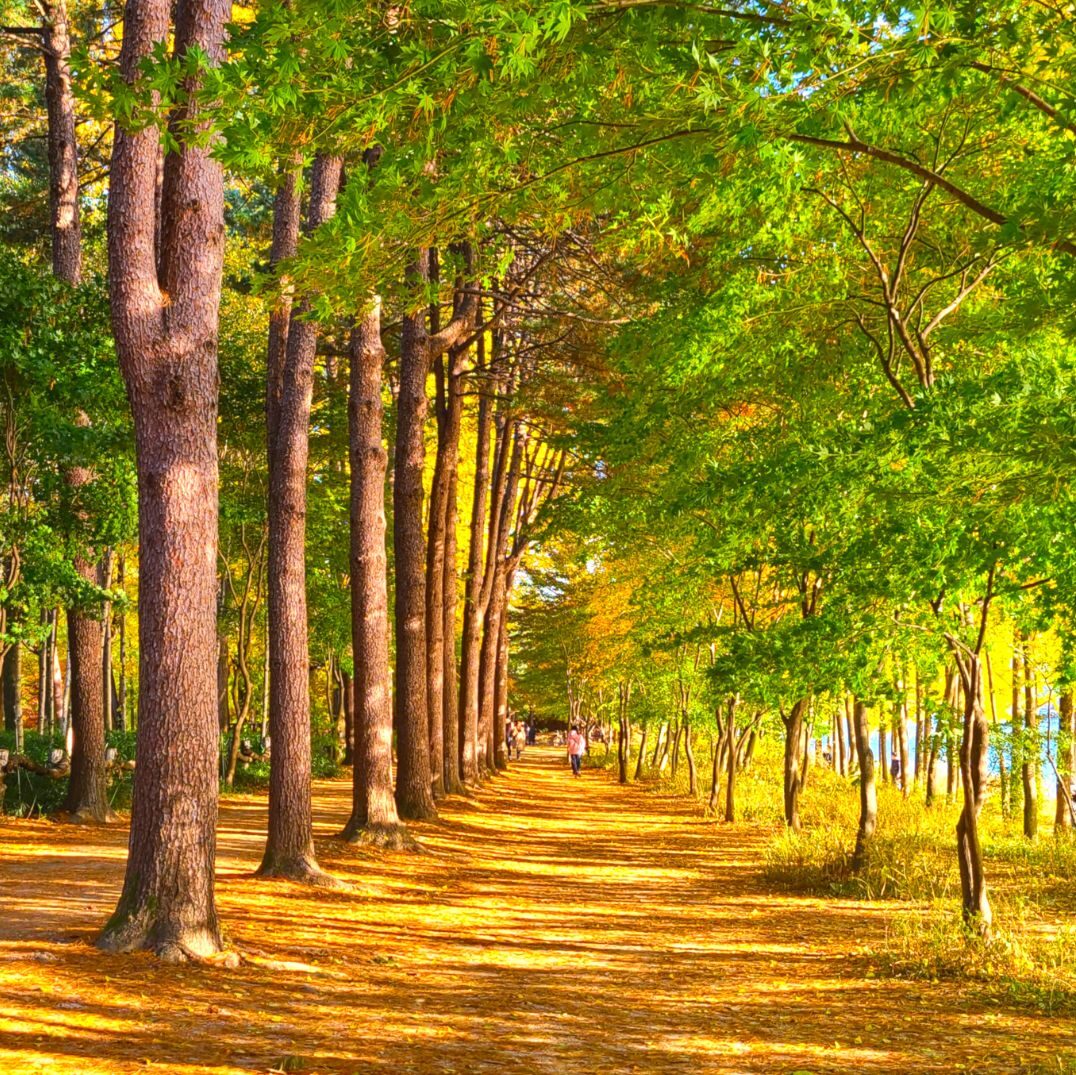
Afternoon : Zip line or sail over to Nami Island for impressive nature, bike rides, leafy walks, and cozy cafes. See popular scenes from K-dramas and even some wild animals, like deer and rabbits.
Evening : Pedal your way along an abandoned railway at the Gangchon Rail Bike Park before heading back to Seoul for fine dining in Gangnam’s Apgujeong Rodeo district.
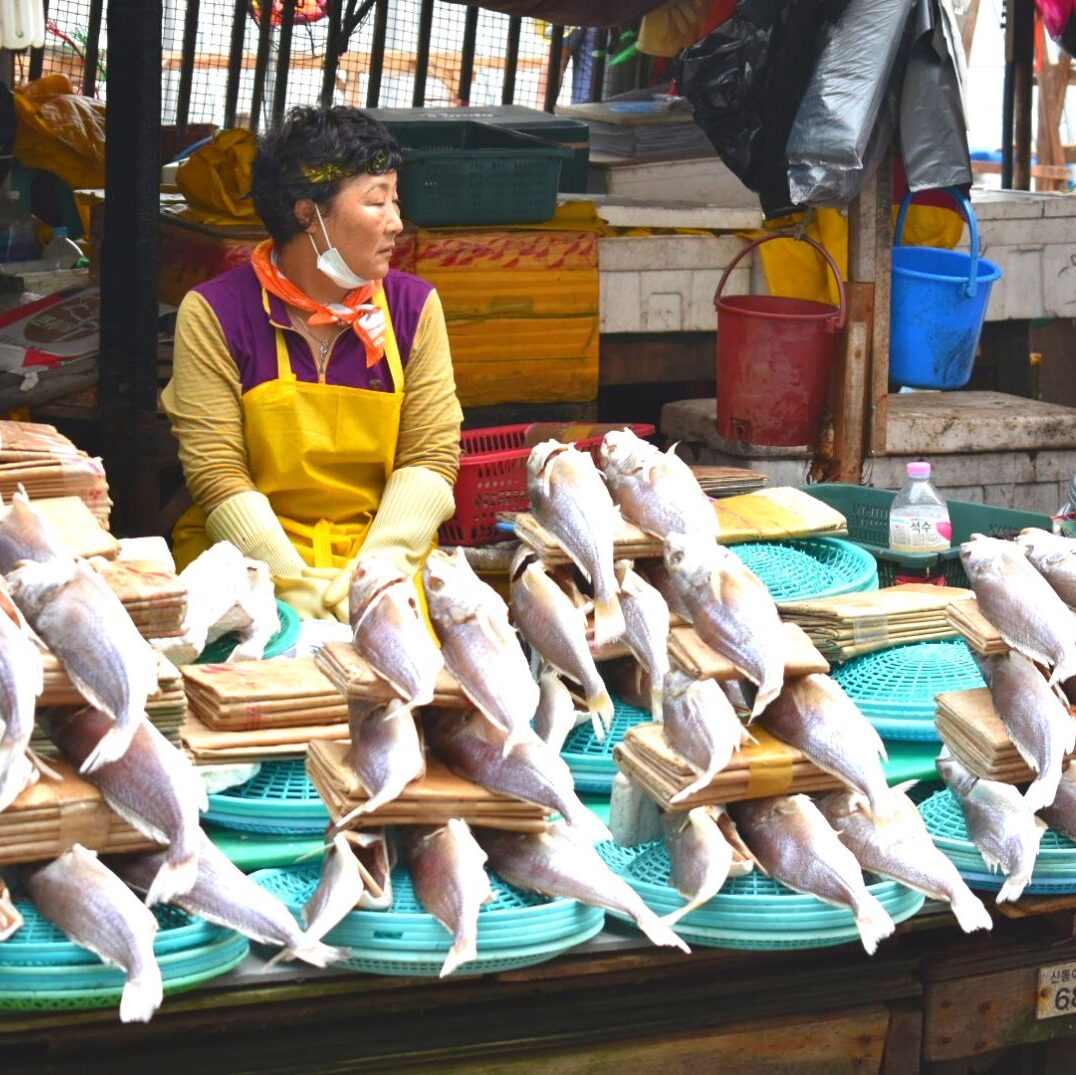
Afternoon : Head to the Nampo-dong near Busan Station and visit Jagalchi Market for a fresh seafood lunch. Then explore cosy Bosu-dong Book Alley or take a taxi to the Huinnyeoul Culture Village.
Evening : Take the subway up to Haeundae Beach for Busan’s best night-scenes. Grab dinner overlooking the beach, or at one of the market stalls. If you’re feeling brave, visit BUSAN X the SKY to see breathtaking views over the coast and city.

Afternoon : Head to the Gyeongju Gyochon Traditional Village for a traditional meal and to see the stunning Woljeonggyo Bridge. Gyeongju National Museum is nearby, too.
Evening : See the tranquil night views of Wolji Pond where palace buildings reflect perfectly in still waters. Stop at Hwangnidan-gil area for dinner and drinks before returning to Busan.
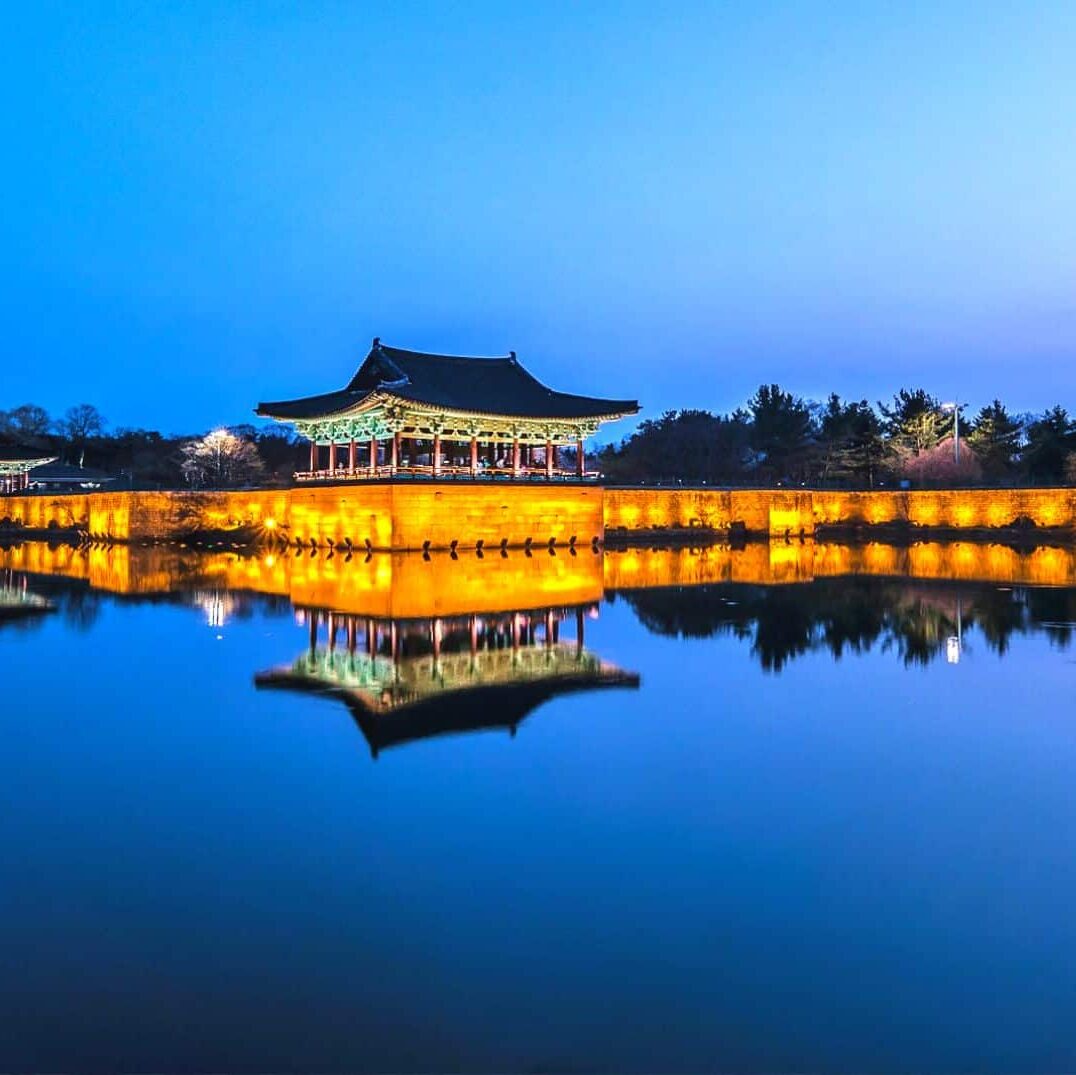
Afternoon : Explore the artistic shopping streets of Hongdae for last minute souvenirs and gifts for yourself. Take a break in one of the unique animal or artsy cafes.
Evening : Either take a night cruise along the Han River from Yeouido Hangang Park or dine in style at the Lotte World Tower in Jamsil, the world’s 6th tallest building. Both offer great night views of Seoul and unforgettable memories to take home.

Korean Seasons Guide
The best time to visit South Korea is during the warm spring or fall seasons. The weather is mild and clear, there’s a range of festivals and seasonal activities to enjoy, and you can travel to Korea comfortably.
The best months to visit are April, May, September, and October. These months are all during the Korean school semester, so there won’t be as many local travelers around during the weekdays. However, expect the weekends to be busy as people leave the cities to travel within Korea.
Large public holidays, including Chuseok (mid-autumn festival) in September / October) and Buddha’s Birthday (May), provides travelers with the opportunity to experience Korean culture and celebrations. These holidays change each year based on the lunar calendar.
Korean Weather & Climate
South Korea is a country that experiences four very distinct seasons, with temperatures ranging from 100 Fahrenheit in the summer to below 0 Fahrenheit in the winter. Each of South Korea’s seasons brings opportunities to see unique natural views and enjoy the different climates in Korea.
Spring has some of the gentlest weather, with light rain and a quick jump in temperature to the 60s and 70s by late March. Summer begins with the rainy season in late June and becomes extremely humid and hot throughout July and August before cooling again in September.
Fall has the best weather in Korea, with many warm, sunny days. Cold winter weather appears very quickly in mid-November and the first snow usually appears by late November. Winter is dry and sunny with the lowest chance of rainfall but is also very cold. Snow isn’t constant, but can fall for several weeks on and off during winter.
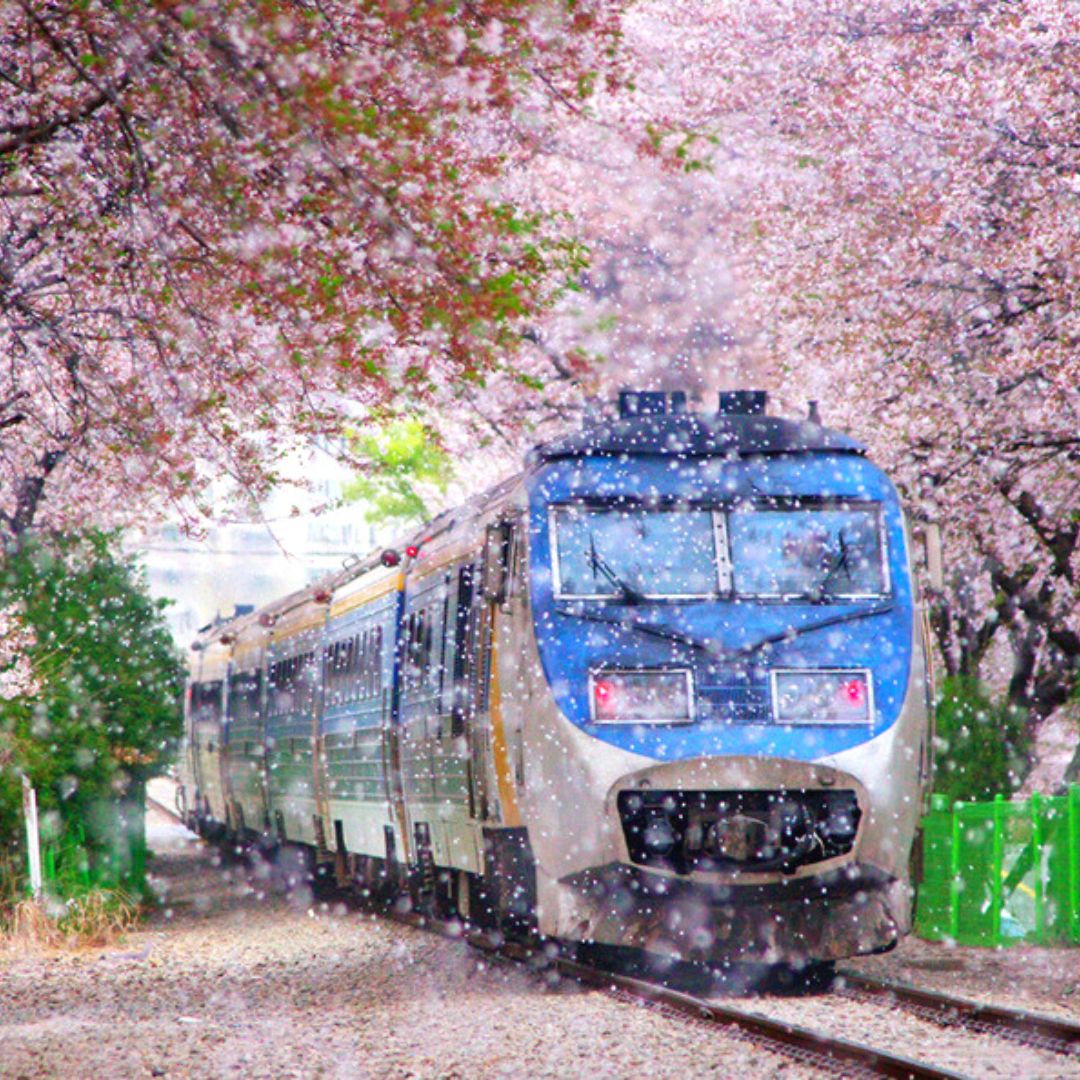
Visiting in spring offers the chance to see beautiful cherry blossoms stretch across the country, as well as many other spring flowers that brighten up Korea after a cold winter.
Spring starts in late March with the awakening of the cherry blossoms and ends in early June with the start of the rainy season. South Korea is a country with a close connection to nature, which can be witnessed in the many spring festivals and celebrations that happen throughout the year.
Some of the best spring festivals include the Jinhae Cherry Blossom Festival, Damyang Bamboo Forest Festival, Yeon Deung Hoe Lotus Lantern Festival, Jindo Sea Parting Festival, and Boseong Green Tea Plantation Festival.

The weather in summer is perfect for getting outside and relaxing on one of Korea’s many beaches. Some of the best activities include spending a weekend camping or glamping by the beach, hiking in shaded valleys in the national parks, and water sports such as surfing, kayaking, and scuba diving.
Unfortunately, the heat may put off some travelers, and high humidity makes it uncomfortable to move around too much. Fortunately, Korea is a modern country with lots of air-conditioning and ways to deal with the hot weather, including delicious summer dishes.
Cool down with a bowl of Korean bingsu (shaved ice dessert) or a cool latte in one of the many cozy Korean cafes in popular beach destinations.

Travelers to Korea in the fall are treated to spectacular fall foliage creeping far and wide. You can see it falling on palace grounds, sprawled on mountains in national parks, and along city streets.
The start of the fall foliage season in Korea coincides with the end of the hot and humid summer, with clear skies and cool weather, making it the perfect time to travel in Korea. Like spring, the fall season in Korea is one of the festivals and celebrations.
The Chuseok holidays in late September / early October are the biggest public holidays of the year, with cultural events held in popular tourist destinations. There’s also a range of cultural festivals, such as the Andong Mask Festival, Baekje Culture Festival, Jinju Namdang Yudeung Lantern Festival, Jeonju Bibimbap Festival, and the Seoul Kimchi Festival.

Winter, like summer, has more extreme weather than spring and fall, with temperatures often in the 20s and 30s and below. This season, however, is also one of the best for travelers who want to see clear, blue skies and experience good weather.
Winter is the driest season and it very rarely rains. If you don’t mind the cold weather, it’s perfect for traveling around South Korea. One of the biggest draws during winter is the chance to see snowy Korean landscapes, from snow-bedecked royal palaces to frosty peaks atop Korea’s many mountains.
Winter sports are popular in Korea, with ski and snowboard resorts aplenty. Winter also offers the chance for family fun with winter attractions including sledding, winter illuminations, and Christmas parades.

Cost To Travel To Korea
The cost to travel in South Korea largely depends on your personal style of travel. You can travel on a low budget in Korea, for under $50 per day, or you could also travel for 10 times that amount if you wished to.
Food costs range from a few dollars for a bowl of jajang (black soybean) noodles to hundreds for premium hanwoo (Korean beef) steak. The same applies to accommodation, with budget hostels costing $10 per night and premium 5 stars hotels costing hundreds.
Most travelers to Korea will already know what they want to prioritize their spending on. Some travel to Korea to eat, others to shop, and many more to experience the unique culture and history that Korea has to offer.
The costs in this section of our South Korea Travel Guide are based on the latest costs in Korea from this year. Examples of different costs have been covered to give you an idea of what to expect when you try to budget.
Please note, these prices are based on traveling in Seoul during non-peak times. Prices may be higher in peak times, which include cherry blossom season (Apr) and fall foliage season (Oct). Popular tourist cities, such as Gyeongju and Jeonju, may also have higher prices on weekends.
How Much Does It Cost To Travel In South Korea?
Travelers may find they want to spend more on hotels and less on eating out, or vice-versa, so don’t feel like you have to only follow the costs for one section. This is only a guideline to help you plan based on your own personal preferences.
To make it easier to figure out your expected costs to travel in Korea, this South Korea Travel Guide has broken down the costs into 3 different categories. These categories loosely fit 3 different types of travelers, as described below:
- Accommodation: $200+ per night, per room (double)
Korea has a wide range of luxurious hotel options, including rooms in the Lotte World Tower, historic hanok houses, and glamping for those who want to escape to the countryside.
- Food & Drink: $100+ per day, per person
It’s easy to spend a lot on food and drink in Korea as there are so many delectable restaurants. Fresh seafood, Korean steak, or the finest foreign foods are all available.
- Transportation: $20+ per day, per person
Taxis and transportation are relatively cheap in Korea. A taxi journey across Seoul can cost less than $20 for 30 minutes and even the 1st class options on Korea’s high-speed trains are under $100 for the longest journey (Seoul to Busan).
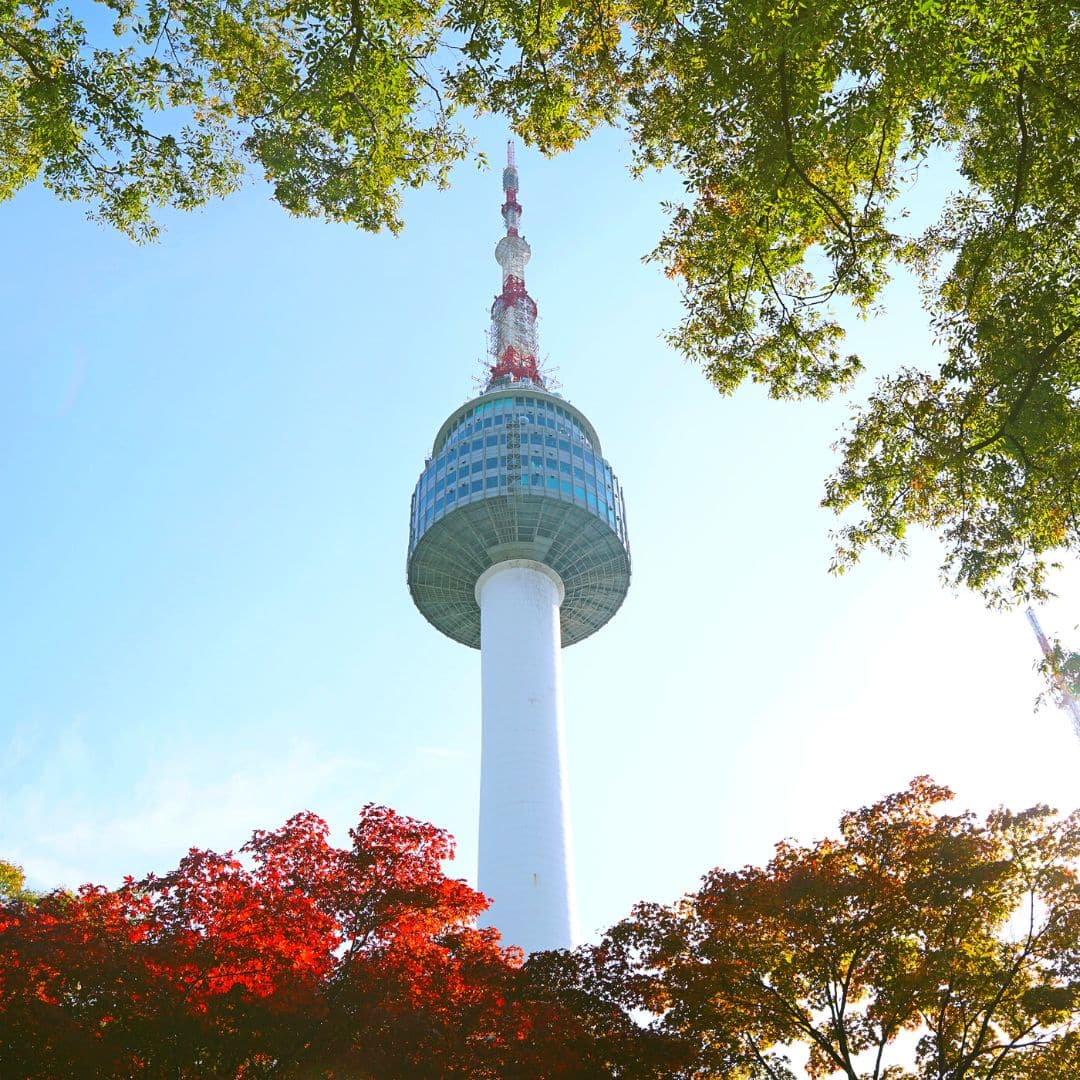
- Accommodation: $100 ~ $200 per night, per room (double)
You can book 4-star hotels in Seoul for very reasonable prices and enjoy both comfort and lower prices than you’d find at home. Korea has a wide range of comfortable mid-priced hotels.
- Food & Drink: $50+ per day, per person
With all-you-can-eat Korean restaurants that serve unlimited Korean BBQ and other dishes for under $20 or $30 per person, it’s easy to enjoy the best food Korea has to offer without breaking the bank.
- Transportation: up to $15 per day, per person
Use the subway and buses to get around the big cities and trains to travel further around Korea without breaking the bank. You can even splash out on a taxi and pay only a few dollars per person when traveling as a group for a few dollars extra.
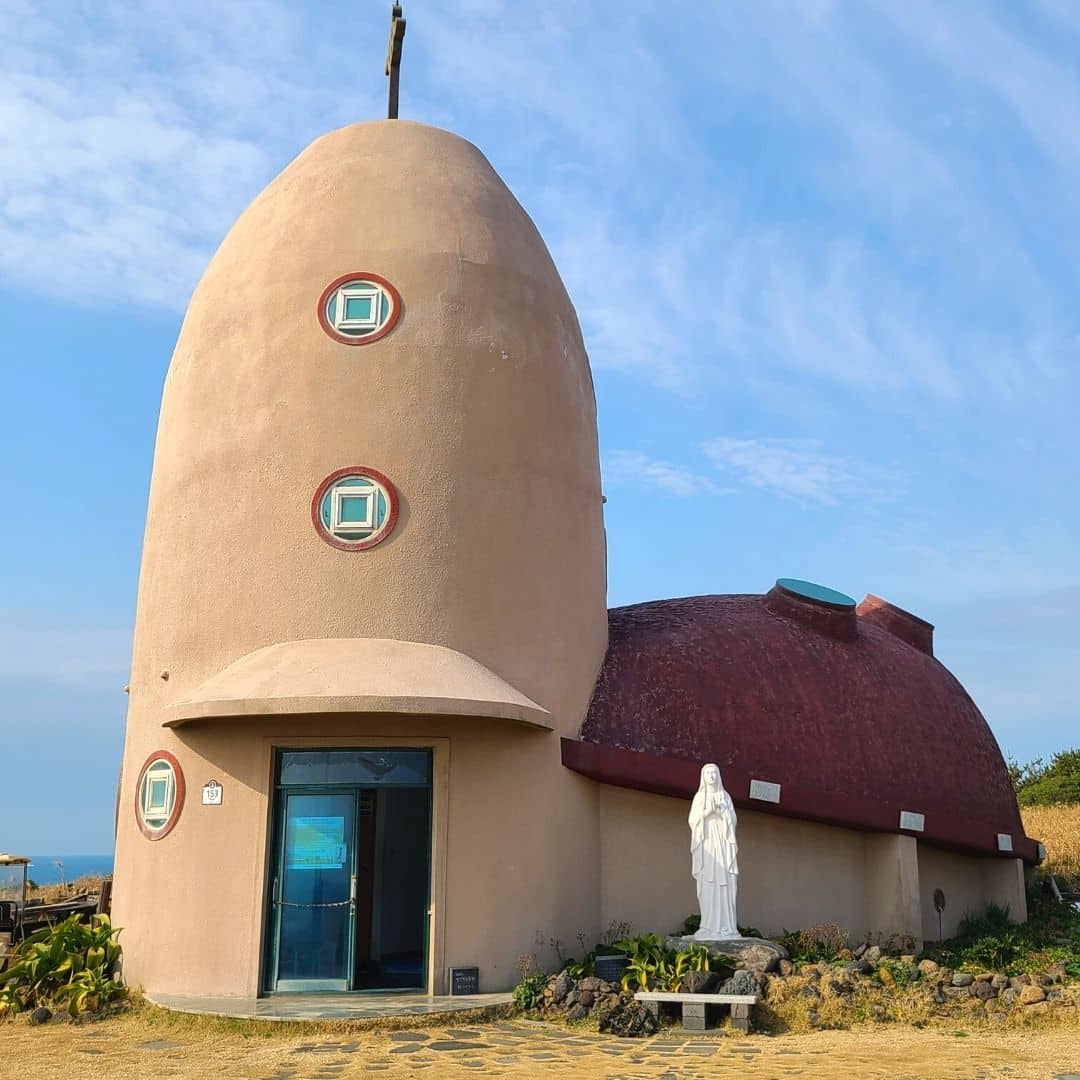
- Accommodation: up to $100 per night, per room (double)
Hostels and guesthouses can be found for under $50 per night and are perfect for somewhere to rest and recharge. If that’s all you need, save money here and spend it elsewhere.
- Food & Drink: $20 – $30 per day, per person
If you budget well and stick to street food, free hotel breakfasts, and convenience store foods, you can eat well and still have enough to splurge on good food for dinner.
- Transportation: up to $10 per day, per person
Walking and buses are cheap and convenient ways to travel around Korea’s biggest cities. Traveling from city to city is also cheap, with intercity buses costing less than $10 for 1-2 hour journeys.

Further Costs To Travel In South Korea
Besides these everyday costs to travel in South Korea, there are other costs that you’ll need to cover from time to time. These costs include internet & phone access, day trips, activities, souvenirs, travel insurance, and flights. These costs will be broken down into low and high-end costs that you can expect to pay in Korea.

Museums and galleries offer unique (and authentic) Korean souvenirs such as pottery, painting, tea & soju sets, and more. If you want something a bit more special, head to the underground markets near Gwangjang Market in Seoul and get your own handmade hanbok, which you can get posted back home to save luggage space.
- Small Souvenirs: $5+
- Korean Cosmetics: $5+
- Korean Artworks: $10+
- Korean Tea (box of): $10 to $20
- Korean Soju Set: $10 to $20
- Korean Handcrafts: $10+
- Tailored Hanbok: $200+
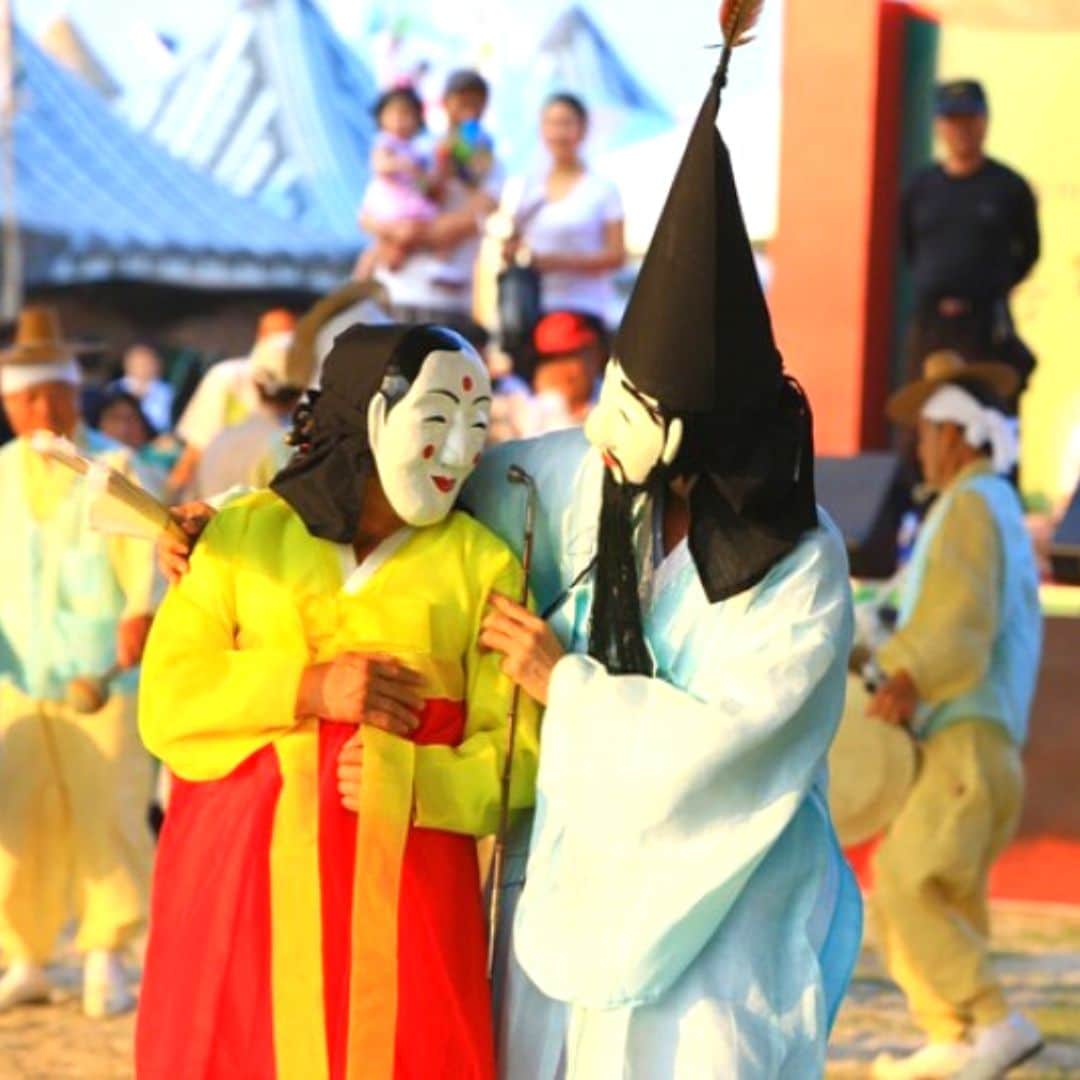
The day trip prices quoted below are the prices you can expect to pay with a reputable tour company like Klook or Trazy . Hiring a private guide will be a lot more expensive and might come to $200+ per day.
Please note: The prices quoted below are estimates and may change depending on the season or tour services.
- DMZ Tour – $50 to $120
- Nami Island Area – $40 to $70
- Everland Theme Park – $30 to $50
- Jeonju Hanok Village – $50 to $70
- Korean Folk Village – $50 to $60
- Seoraksan Mountain – $70 to $150
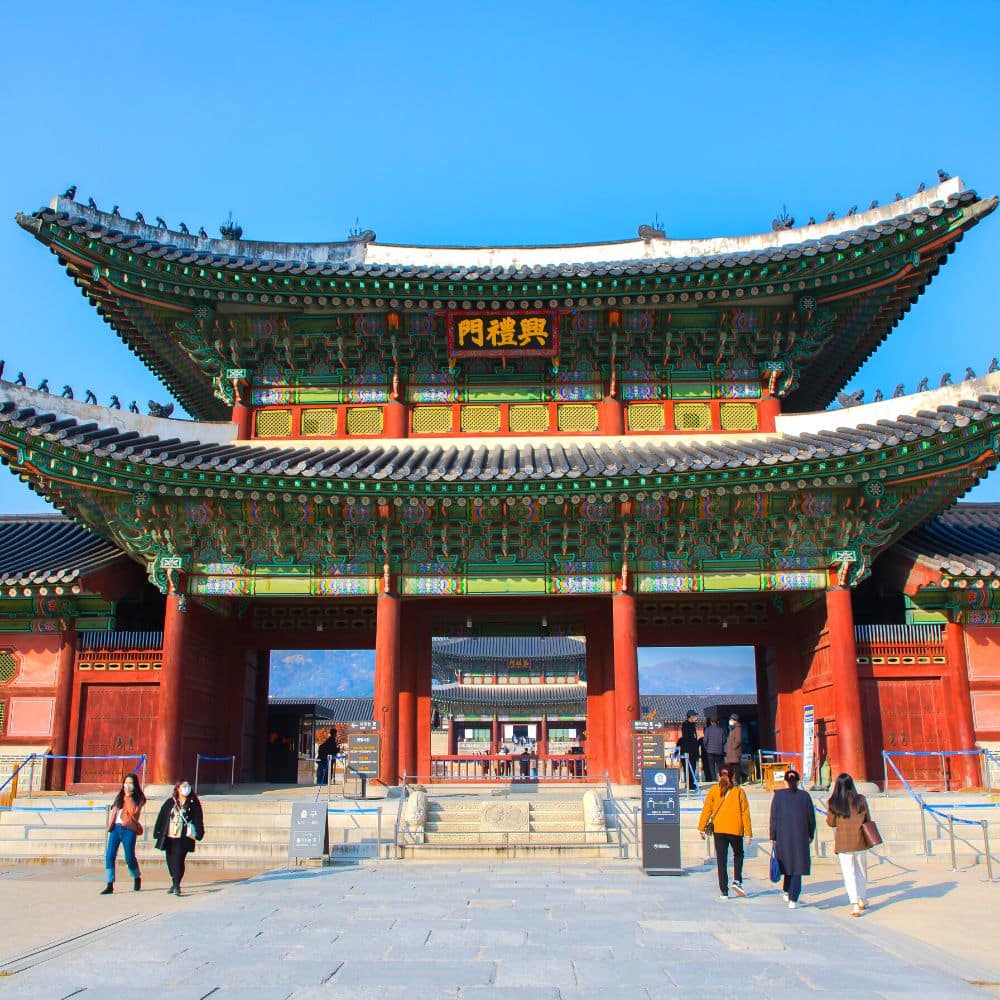
As mentioned earlier in this South Korea Travel Guide, buying a Discover Seoul Pass is a great way to save money on Seoul’s premium attractions.
- Royal Palaces – $3
- N Seoul Tower – $10
- Hanbok Rental – $10+
- Seoul City Tour Bus – $10
- Han River Cruise – $15 to $30
- Seoul Sky Observatory – $30 to $50
- Aquariums – $20 to $30
- Seoul Zoo & Seoul Grand Park $10
- Amusement Parks – $30 to $40
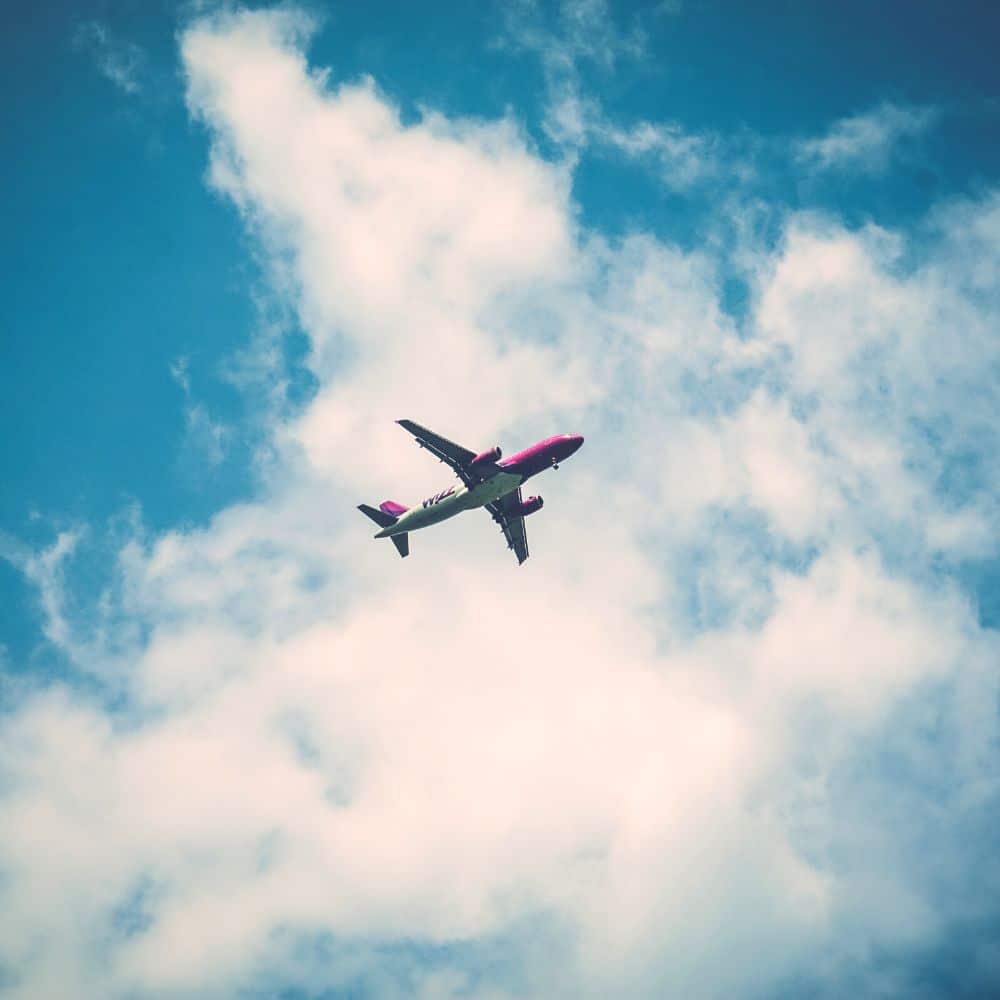
The cost to fly to Korea is more than twice the normal price right now. Fortunately, Korea ended the restrictions on the number of flights into the country from June 2022 and flight costs and availability should be improved in the near future.
Best of Korea recommends Skyscanner and Expedia for the best flight deals to Korea.

Why Travel To South Korea?
In recent years, travelers from around the world have been increasingly drawn to South Korea. The country is a must-see destination in Asia, with more than 17 million travelers in 2019. After reading this South Korea Travel Guide, you’ll understand what draws so many people to the Land of The Morning Calm, as Korea is also known.
There are myriad reasons why people visit Korea. Many come to experience life in a unique country, packed with historical and cultural sights that you won’t find elsewhere in the world. In the afternoon you can walk through a royal palace dressed in hanbok (traditional Korean clothes), sip green tea in a hanok (traditional Korean house), and pass Buddhist monks walking peacefully through an ancient temple.
Modern South Korean culture is conquering the world, with chart-topping acts that include BTS and Black Pink, Oscar-winning movies like Parasite, and phenomenally successful TV shows like Squid Game. This brings in legions of fans flocking to shooting locations and film sets to relive their favorite K-Culture moments. Some lucky travelers even get to catch sight of their favorite K-Stars walking around Gangnam, a hotspot for Korea’s most famous citizens.
Not only is Korea a beautiful country, it’s a country that will make you beautiful, with some of the world’s best fashion and beauty shops. Korea is famous for its K-Beauty products and is a beauty and fashion shoppers paradise. From the street fashions of Hongdae, to the luxurious fashion malls of Gangnam, and the wall-to-wall malls with discount clothes in Dongdaemun, you’re guaranteed to find something you can’t resist at a great price. If you prefer a cultural shopping experience, there are traditional markets all over Korea, where you can experience street food, buy novel gifts, and see how locals live and socialize.
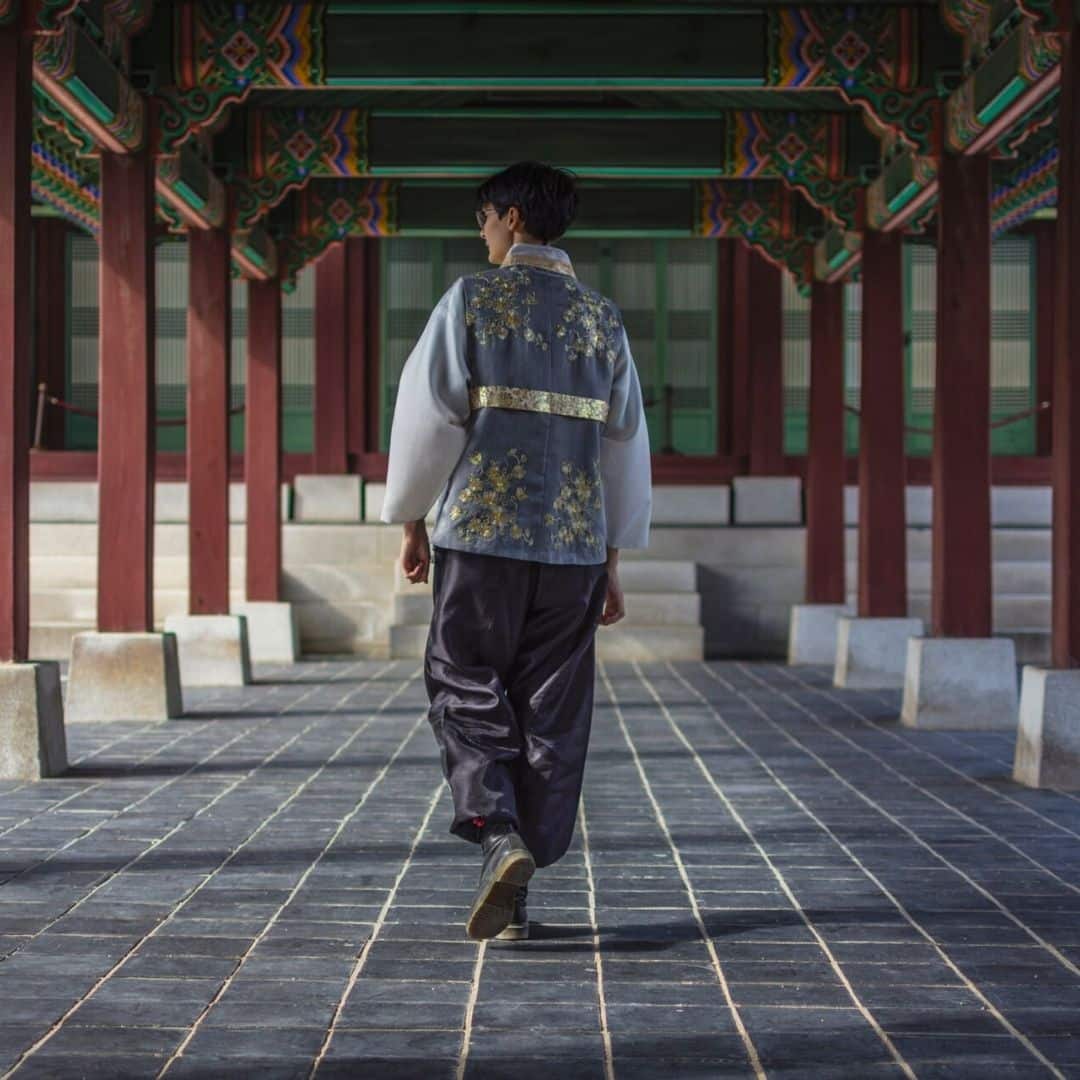
There’s so much more to South Korea than what you’ll find in the cities, however. South Korea, a country that’s 70% mountainous with coasts on three sides, offers so much to nature and adventure lovers. Hiking, South Korea’s national pastime, is a popular way to see more of the Korean countryside, looking down over rice fields, forested valleys, and pockets of urbanization. Skydiving, parasailing, scuba diving, water sports, cycling, rock climbing, white water rafting, and lots more are on offer and very reasonably priced. South Korea is a great place to enjoy the great outdoors.
The real jewel in South Korea’s natural crown, however, has to be Jeju Island – one of the New 7 Wonders of the Natural World. Explore lava caves, hike to the peak of the central dormant volcano (Hallasan Mountain), trek around the rugged coast, relax on a sandy beach in a modern cafe, and even try your hand at horse riding.
Whatever your reason to travel to South Korea, you’re sure to find more and more reasons to return again and again. Let this South Korea Travel Guide whet your appetite for your first trip, inspire you to plan a follow-up trip, and guide you to the best things to see and do in South Korea.

South Korea Travel Guide FAQs
Not sure about the South Korea travel restrictions and want to know more about visas, vaccinations, and what the rules are? This next section covers some of the most frequently asked questions about traveling to Korea now. If you have more questions that aren’t covered below, feel free to write to us on the Best of Korea Facebook page.
Do I need a visa to travel to South Korea?
US citizens and tourists from 111 other countries, including Canada and Mexico, don’t need a visa to travel to South Korea. The US government and South Korea have a visa-free travel arrangement and tourists can stay for up to 90 days.
What happens when I arrive in South Korea?
From September 2022 onwards it is no longer necessary to provide any vaccination status or take any PCR or RAT tests. A mandatory health check will be required, but this is only a simple form you can fill in on arrival.
What happens if I get a positive PCR result?
If you test positive for COVID-19 while in Korea, you will need to quarantine for 7 days at government facilities. Travelers who break the quarantine rules are subject to deportation or fines.
Can I travel to Korea if I'm unvaccinated?
Yes, you can still travel to South Korea if you’re unvaccinated. South Korea no longer restricts travel based on vaccination status (as of October 2022).
However, if a traveler (vaccinated or unvaccinated) tests positive for COVID-19 in Korea, they will have to self-quarantine until negative.
South Korea is a dynamic and culturally rich country that deserves a place on everyone’s travel bucket list. Known for its stunning blend of tradition and modernity, Korea features futuristic technology, bustling markets, and a thriving pop culture scene. Perhaps most importantly, visitors can expect a high level of safety and cleanliness while exploring the country and savoring its delicious cuisine.
This South Korea Travel Guide shows you where to go, what to see, and when to travel. Start your journey with itinerary ideas and pre-travel tips, the best day trips, and lots more essential Korean travel advice. Let’s go!
LATEST KOREA TRAVEL UPDATES
How to travel to korea, best destinations in korea, where to stay in seoul, korean travel tips, things to see & do, travel itineraries for korea, korean season guide, cost to travel to korea, further costs to korea, why travel to korea now, south korea travel faqs.
6/1/23 From June 1st, 2023, there is no longer any mandatory quarantine for COVID-infected people in Korea – both locals and travellers. The Korean government now recommends that infected people showing symptoms should self-isolate (voluntarily) for 5 days.
4/1/23 From April 1st, 2023, travelers from the USA and 21 other countries no longer need to apply for the K-ETA to travel to Korea. This will run until 31st December, 2024 and is designed to make it easier to travel to Korea.
3/20/23 From March 20th, 2023, the indoor mask mandate has been removed for public transport, including buses, trains, subway, taxis, and flights. The only remaining mask mandate is for medical facilities, including hospitals, care homes, and pharmacies.
How To Travel To Korea
Current Travel Restrictions For South Korea 2023
If you’re suspected of infection when you arrive (high temperature, feverish signs), you may be asked to take a PCR test. PCR tests are now free for travelers suspected of being COVID-19 positive within the first 3 days of arrival. This South Korea Travel Guide is regularly updated with the latest Korean travel restrictions.
Requirements To Travel To Korea
Here’s a simple 2-step guide about how to travel to Korea right now. Most restrictions have been lifted so travel to Korea is easier than ever. This applies to travelers from the US, Canada, and many other countries . As mentioned, it doesn’t matter whether you’re vaccinated or not.
Check the Korean Embassy if you’re not sure in either situation.
- When you travel to Korea, you will be asked to complete a self-check health questionnaire to show you’re not sick. You can do this when you arrive or complete it before you depart on the Q-Code website .
- You don’t need to do any testing before you fly, but it is a good idea to take a self-test to make sure you’re safe. If you’re infected in Korea, it’s necessary to do 7 days self-quarantine. You don’t need to bring copies of your vaccination records but printing a copy of the K-ETA is recommended.
No, travelers from the USA don’t need a tourist visa to enter South Korea. You can visit for up to 90 days visa-free. However, you must apply for the K-ETA before traveling and upload your travel plans and hotel details.
Here are 6 of the best destinations in Korea that you absolutely must visit, as well as some of the sights you’ll want to check out while you’re there. We’ll be bringing you lots more detailed destination guides in the future, so be sure to visit again soon

This Full Day Tour of Seoul will show you some of the hottest spots in the city, while this Customized Private Tour of Seoul will allow you to choose where to go.

Korea is a unique country with a written language that looks nothing like English, interesting Korean Cultural And Etiquette Rules , and an always busy lifestyle. Travelers may be lost trying to do even the simplest things.
If you’re traveling to Korea, you’re almost certainly going to want to get access to the internet to help you navigate, translate Korean, or even book tickets to attractions. Korea has one of the world’s best mobile internet and the prices are very reasonable. 5G mobile internet services are available across the country and Korea was one of the first to get the super-fast service. You won’t have problems connecting with a sim card or WiFi router when you travel
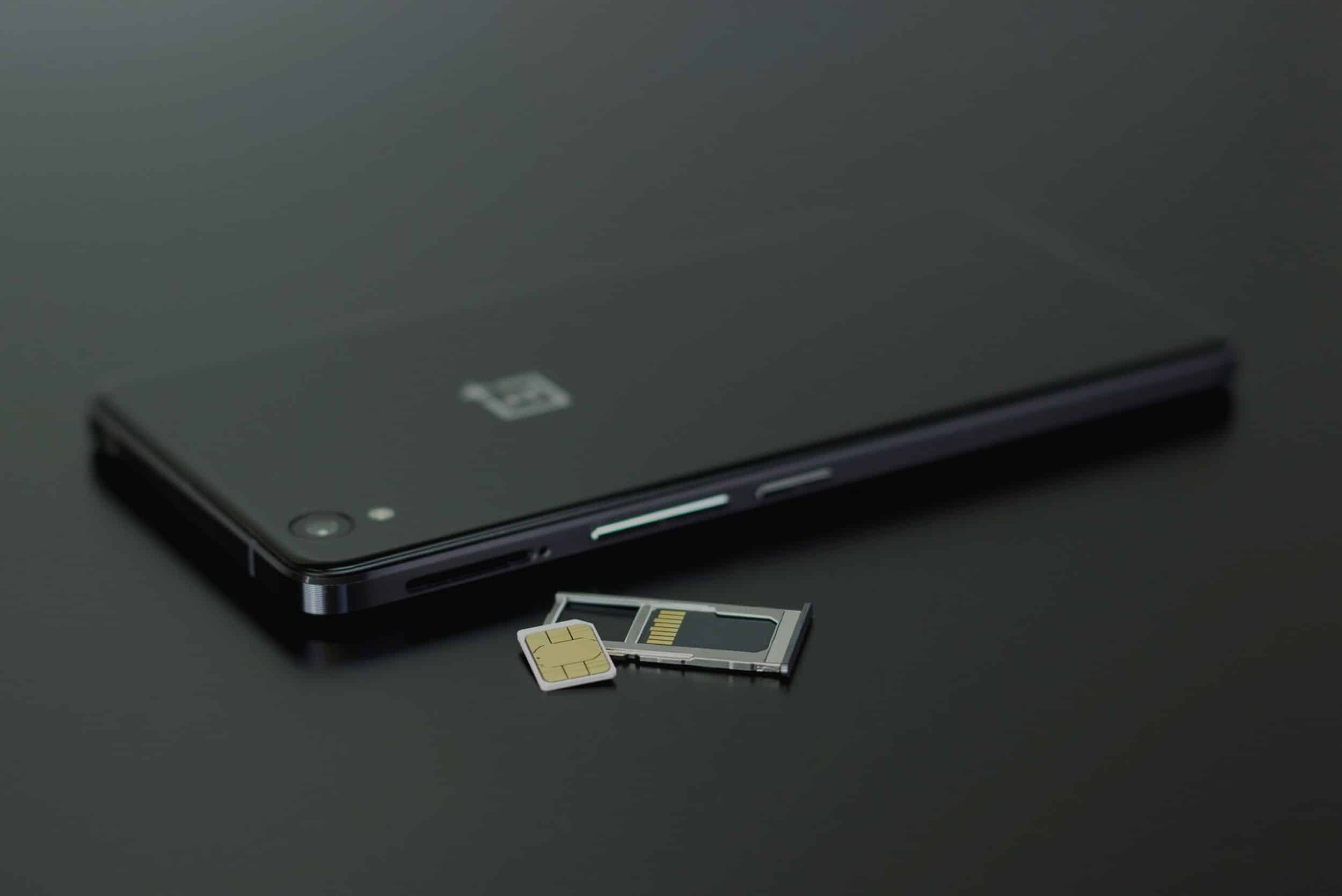
Traveling to any country involves potential scams, bad exchange rates, mistakes, and confusion when it comes to dealing with foreign currency. Fortunately, travelers to Korea have a wide range of options for travel money both before and while they travel.

South Korea is a country packed with famous landmarks and sights, unique culture – modern & historical, family-fun activities, outdoor adventures, cozy cafe districts, and natural wonders. There’s more to do in Korea than you could imagine and it’s impossible to explore it all in one trip. Try to plan your itinerary by cities and locations. For example, plan your day in Seoul and stay by the district.
Here are some of the best things to see and do in South Korea, broken down into different themes so you can find things that interest you the most. The location of each of these attractions is included, too, so you can create a city-by-city itinerary, seeing the best South Korea has to offer.
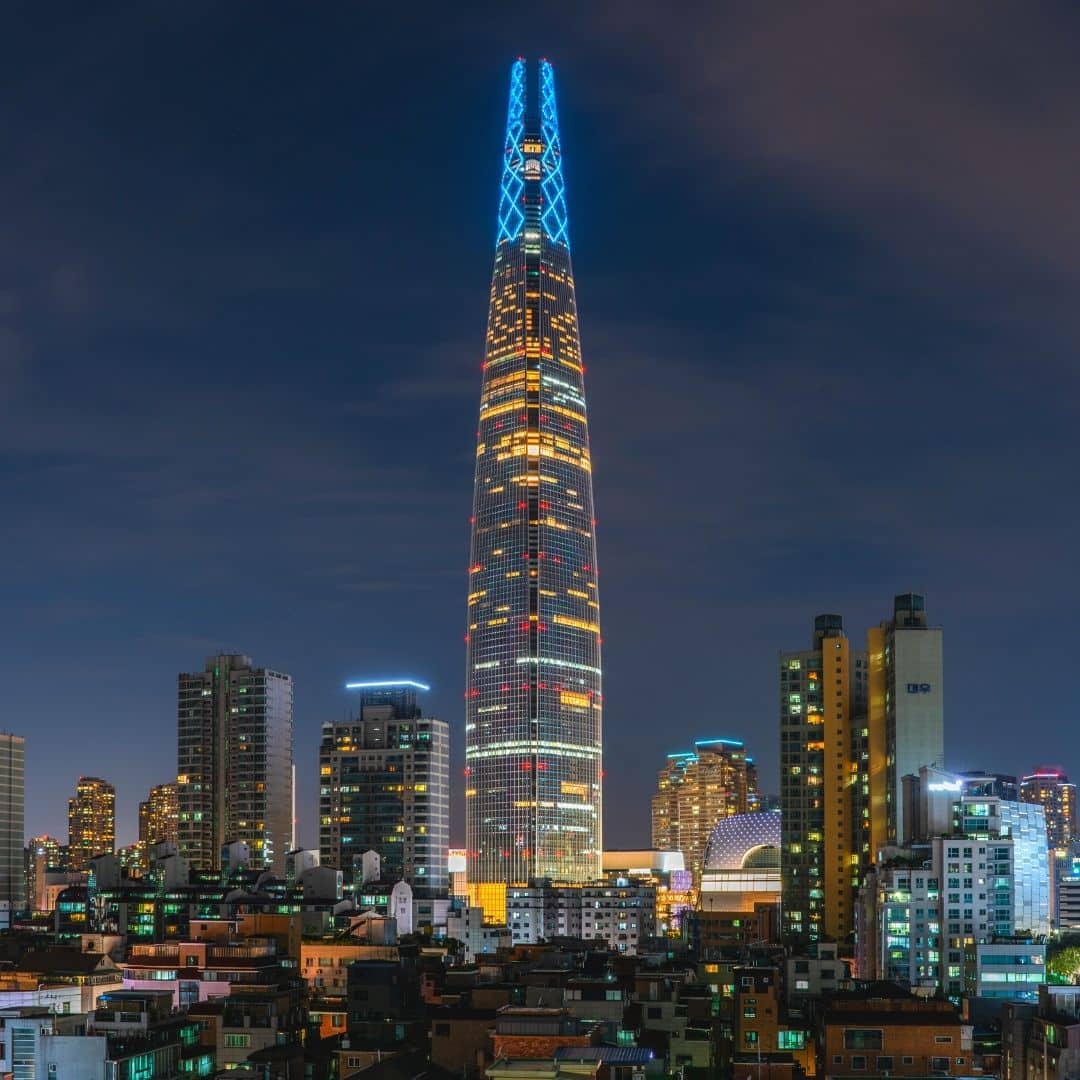
Any South Korea Travel Guide would be incomplete without thee top landmarks & famous areas in Korea. These unmissable Korean attractions offer some of the best sights in Korea, showing you Korean history, culture, design, and sense of humor.
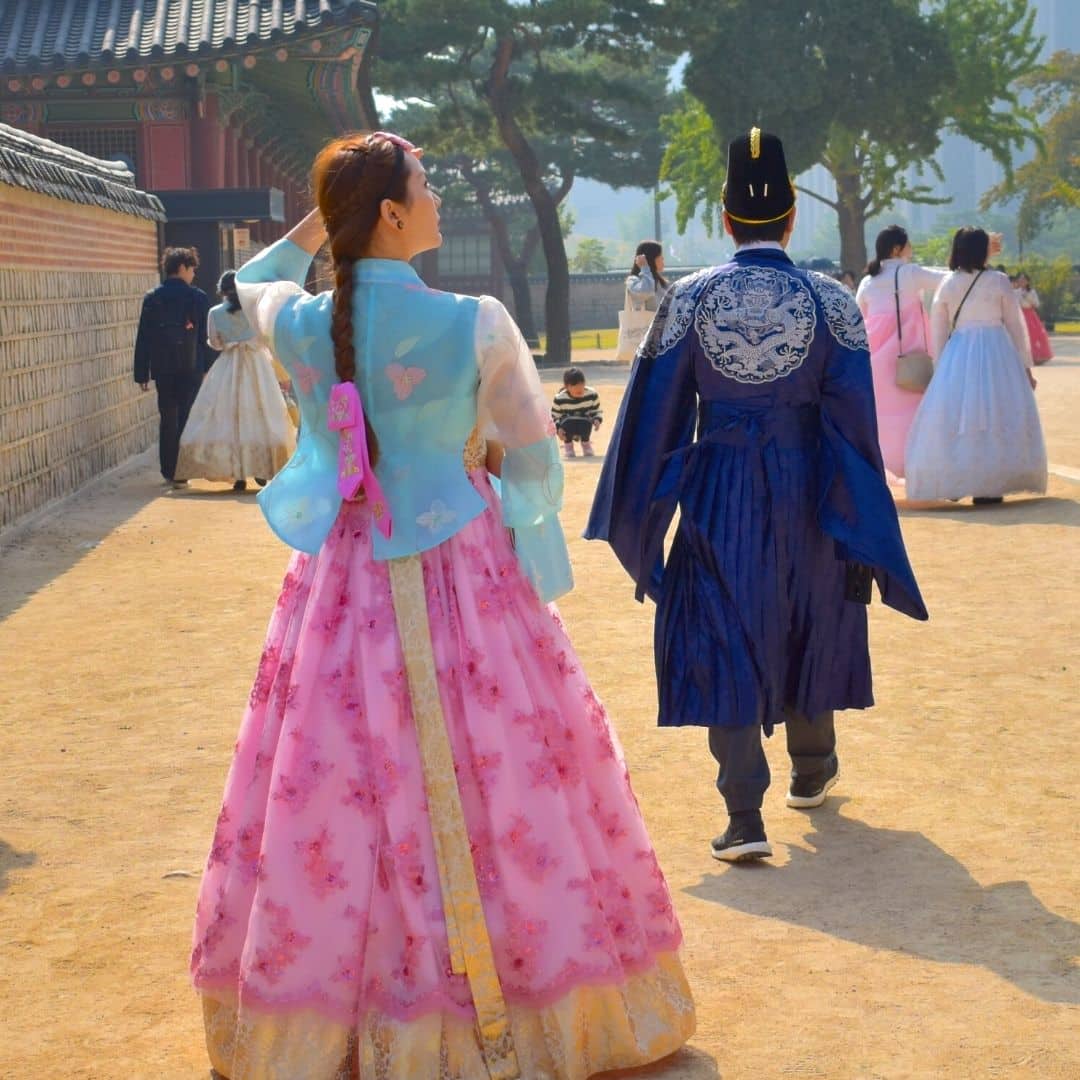
Learning about Korea’s past is not only enjoyable, it’ll also open your eyes to how modern Korean culture has evolved. Witness the majesty of grand palaces and the humble Buddhist temples and gain an insight into life in Korea with these fascination historical sights.

Are you a fan of Korean culture? Then check out these 10 modern K-Culture locations in Korea. Whether you’re ARMY or an arthouse cinema fan, you’ll love these sights. K-Drama fans, check out these K-Drama Filming Spots in Seoul .

If you’re traveling to Korea with your family, you don’t need to worry about the kids getting bored. There are plenty of family-fun attractions in Korea to keep them amused and to show them what Korea’s really like.

Culture lovers will find no shortage of places to learn about Korean, Asian, and world history & culture. Korea has a rich history and displays this through a range of museums. Learn about traditional life, Korean wars, the democracy struggles, and even kimchi .

Once a land of teahouses, Korea has now fully embraced coffee culture. Korea’s late-night culture makes cafes a great place to gather and chat. The rise of social media has also led to hundreds of insta-worthy cafes with photogenic decor, unusual coffee designs, and delicious desserts.

Many people travel to Korea just to shop, thanks to the low prices, haggling in the markets, and good quality items. From traditional markets to high-end designer goods, there’s somewhere to shop for everyone. Be sure to try authentic Korean street foods in the markets, too.

Korea is a country surrounded by sea on 3 sides and 70% mountainous, giving it a wealth of natural beauty. Besides Korean cherry blossoms , flowers, and fall foliage, there are sculpted gardens, shimmering ponds, riverside parks, and a volcano to see.

Morning : Explore Seoul’s historic royal palaces starting with Gyeongbokgung or Changdeokgung Palace in central Seoul. You get free entry if you’re wearing a Korean hanbok, so be sure to pick one up from the rental shops outside.
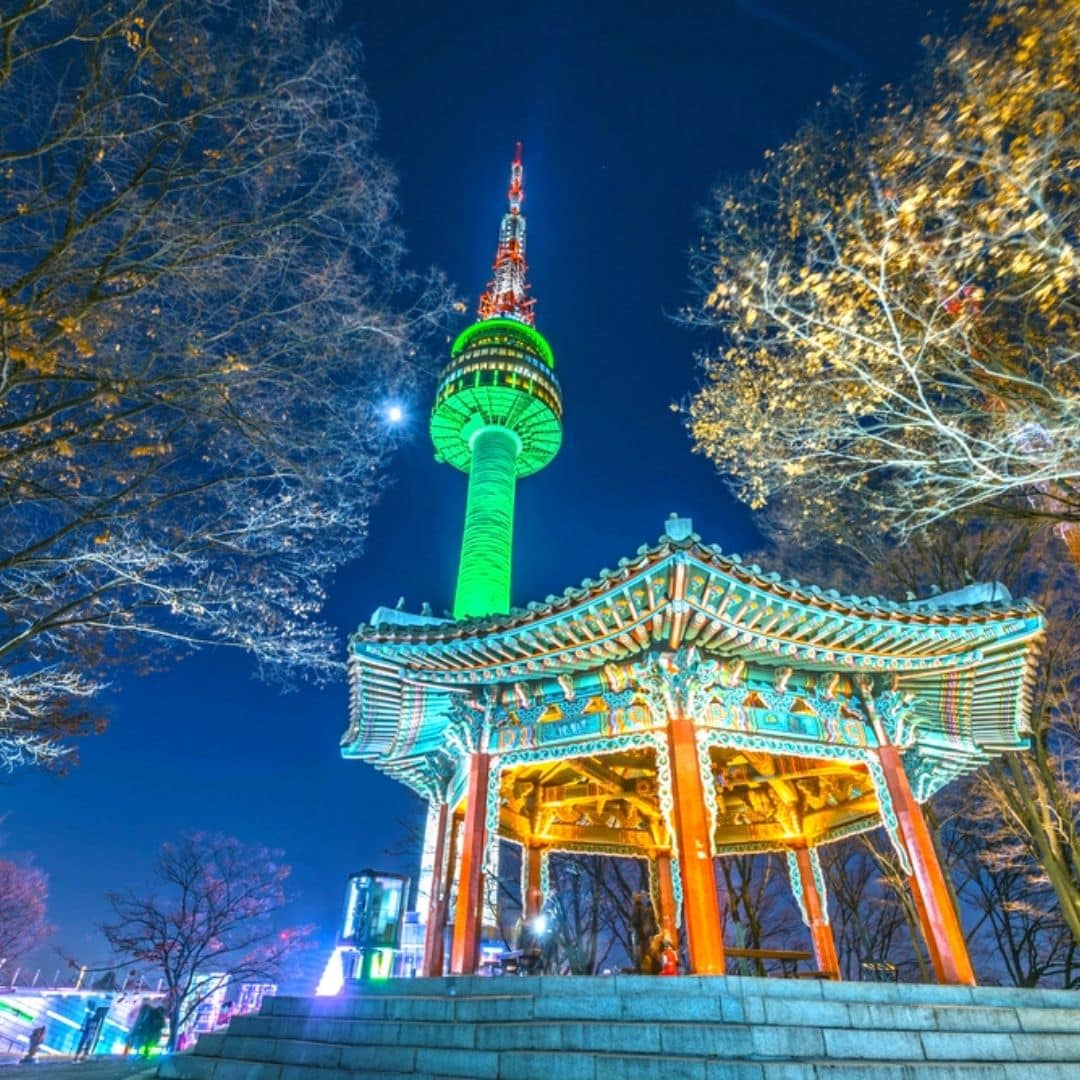
Morning : Learn about Korea’s history at the National Museum or War Memorial in Yeongsan. These fascinating museums have interactive exhibits and feature 1000’s of years of Korean history.

Morning : Take a day trip from Seoul to explore Gapyeong County. See the wonders of the Garden of Morning Calm and its idyllic nature. This is one of the most beautiful gardens in Korea.

Morning : Grab an early breakfast at Seoul Station and ride the high-speed KTX train directly to Seoul. It takes less than 4 hours and rides past rice fields, mountains, and the Korean countryside.

Morning : Take a day trip to the UNESCO World Heritage City of Gyeongju and roam the Gyeongju Historic Area. See Daereungwon Tomb Complex and Cheomseongdae Observatory.

Morning : Pack your bags and ride the KTX back to Seoul. Head to Hongdae for street food snacks or Michelin-starred delights in famous restaurants.

March to May

June To August

September to November

December to February
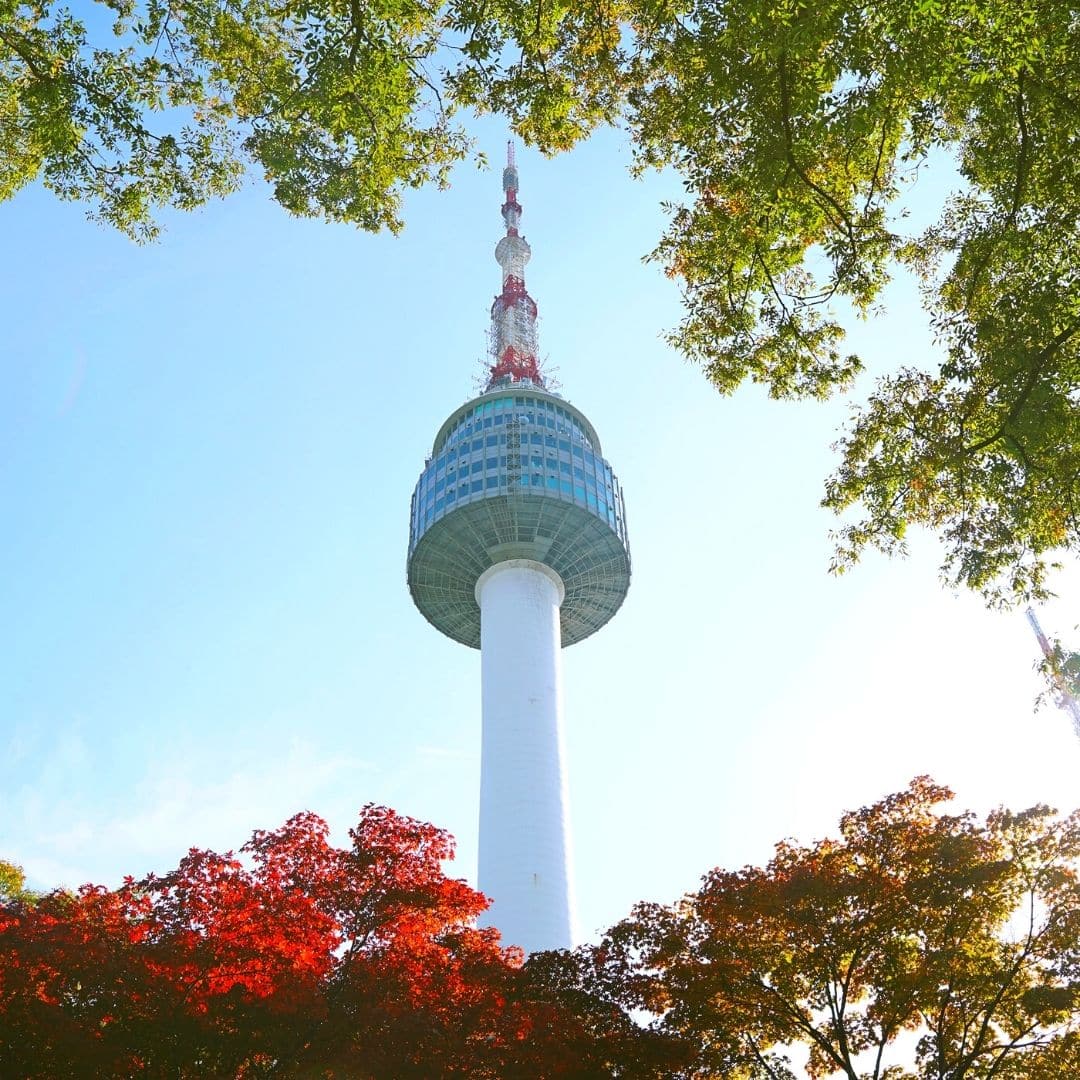
Korean Souvenir Costs
The best places to buy souvenirs in Korea are in the traditional markets and tourist areas. Insadong in Seoul has a lot of art and souvenir shops, as do the market streets around Bukchon Hanok Village. Hongdae offers lots of bargain snacks and souvenirs to take home.

Day Trip Costs From Seoul
A day trip from Seoul is a must to see a different side of Korea from what you’ll experience in the capital. Taking a day trip is a great chance to experience Korea’s countryside, nature, and hard-to-reach cultural attractions.

Korean Activity Costs
Seoul and other Korean cities have so much to offer to tourists. From historical palaces to exciting theme parks and attractions, it’s easy to have fun, explore, and discover more about Korea’s history.

Flight Costs To Korea
Flight costs depend on which airports you’re traveling from. A flight from Los Angeles to Incheon Airport (Korea’s main airport) costs around $1370 right now. Flight costs vary depending on the season and time of day.
Welcome to Best of Korea!
Please Sign Up for Updates
We hate spam. You can unsubscribe anytime.
In My Korea
Complete South Korea Travel Guide 2024: Korean Travel Tips
Planning a trip to Korea but not sure where to start? First-time traveller who isn’t sure if Korea is the right country for your next trip? Worried about travelling to Korea and facing problems with the Korean language, culture, money, Internet, transportation, hotels, food, or etiquette? Then this complete South Korea travel guide is packed full of tips that you’ll certainly need.
You’ll find all the best Korean travel tips and advice in this article. Whether you’re a first-time traveller to Korea, or you’ve visited before, this South Korea travel guide will show what to see, when to travel, and which places to visit, as well as help you avoid any difficult situations or surprising culture shocks.
This guide is designed to walk you through everything you need to know to prepare for your trip to Korea. You can use it to plan your itinerary, to pre-book travel essentials, to learn about what festivals and seasonal events are on, and to find more reasons to want to travel to Korea right now.
Table of Contents
Affiliate Disclaimer : This site contains affiliate links and I may earn commission for purchases made after clicking these links.
What’s In This South Korea Travel Guide
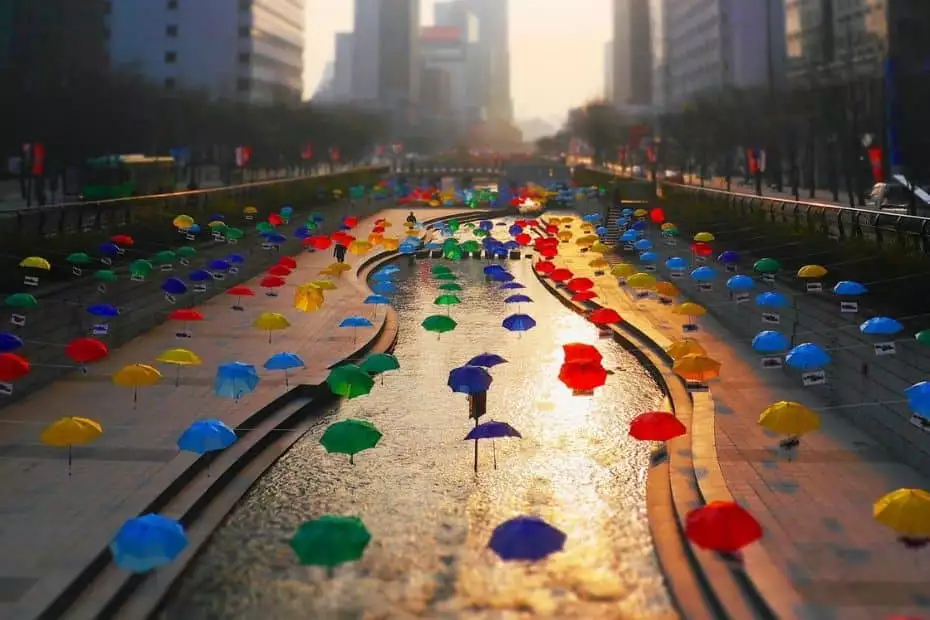
This South Korea travel guide covers all the essential information you need to plan a trip to Korea. This is useful for first-time travellers to Korea who might not be aware of uniquely Korean cultural and travel issues. Even if you’ve visited Korea before, I’m sure you can learn a lot from this travel guide.
This article contains lots of insights and knowledge about travelling to Korea and is quite long. I’ve added links in each section to articles that provide more information about each topic. Therefore, I suggest viewing this South Korea travel guide on a desktop computer as it will be easier to read.
What Are You Looking For?
To help make it easier for you to find what you’re looking for, I’ve broken this article into the following sections. Click the quick links below to jump straight there or keep reading through all parts.

Latest Travel News
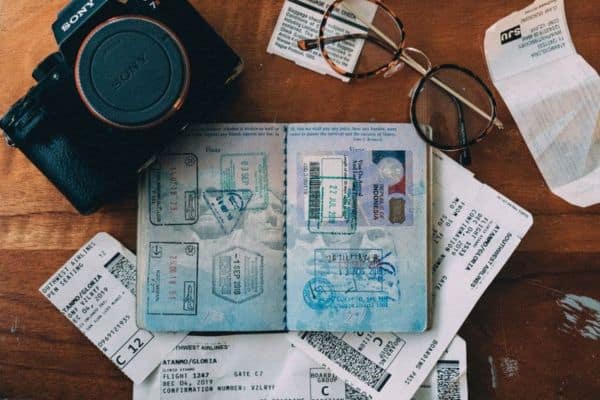
Entry Requirements
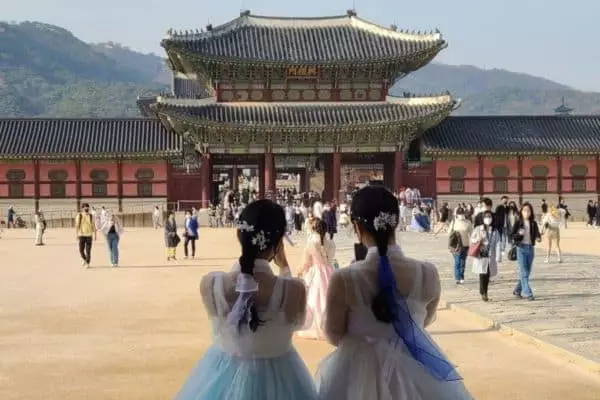
Why Visit Korea
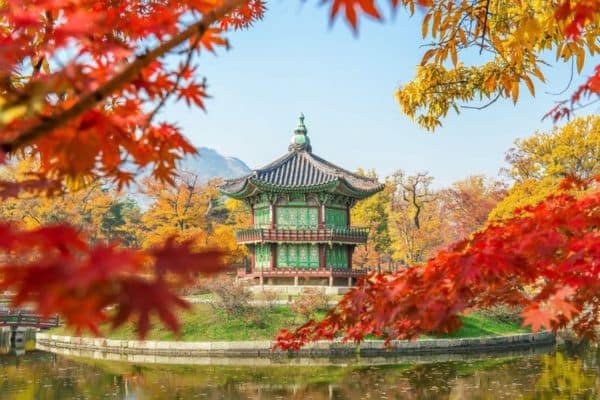
When To Visit
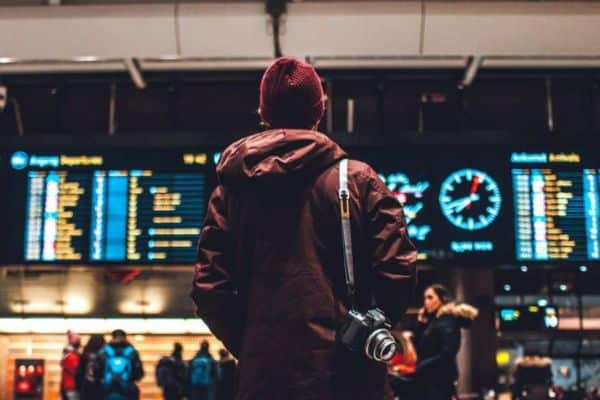
Flights To Korea
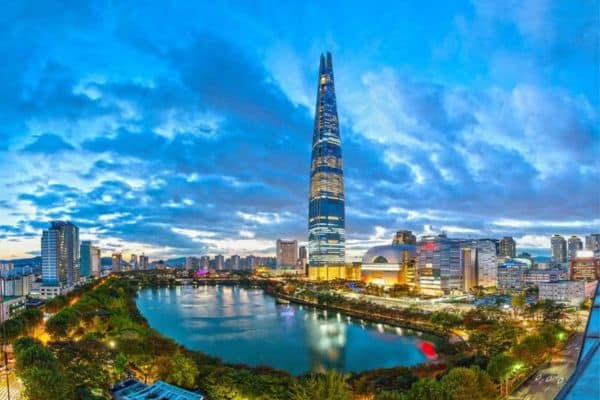
Where To Stay

Korea Travel Costs
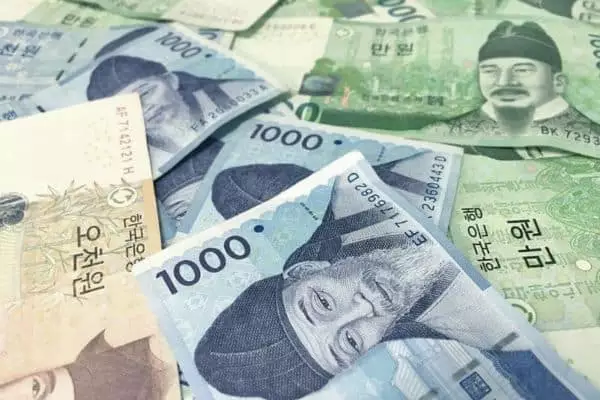
Travel Money
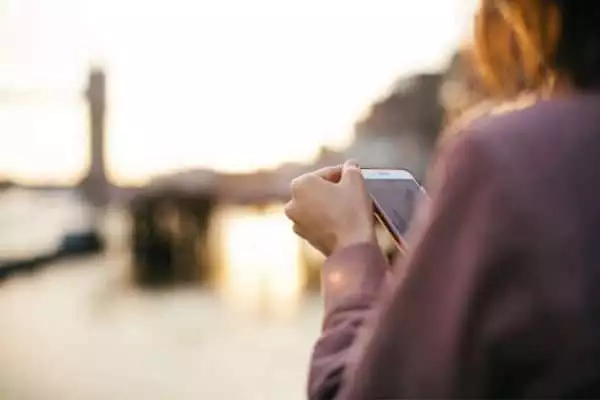
Phones & Internet
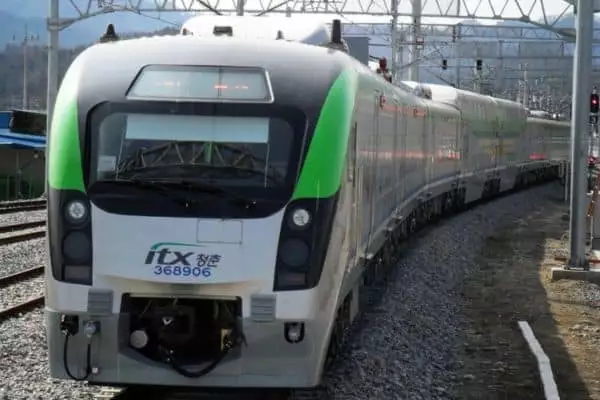
Public Transport
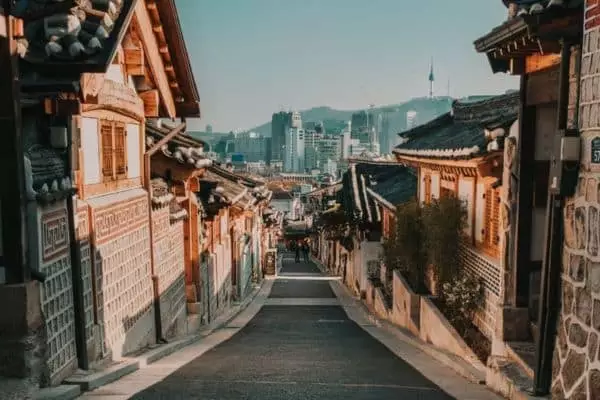
Where To Visit
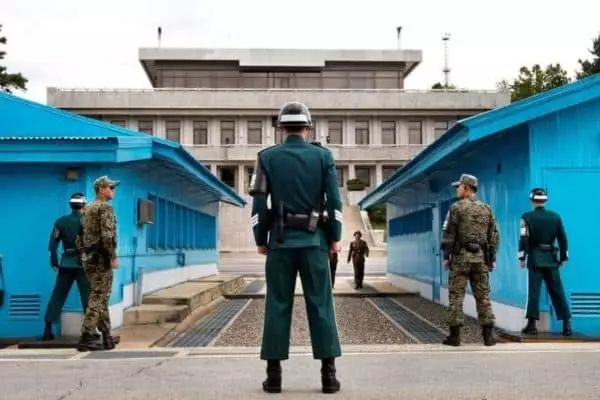
Seoul Day Tours
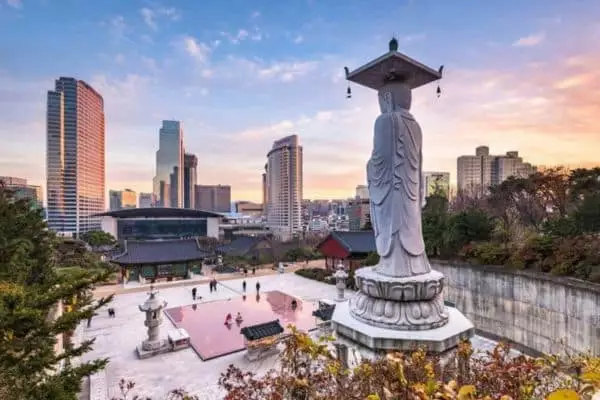
Sightseeing Spots
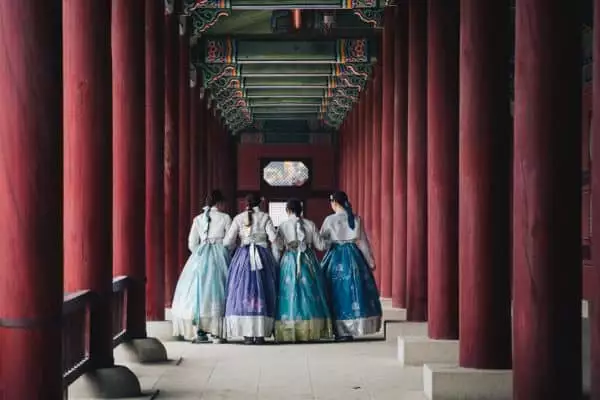
Korean Activities
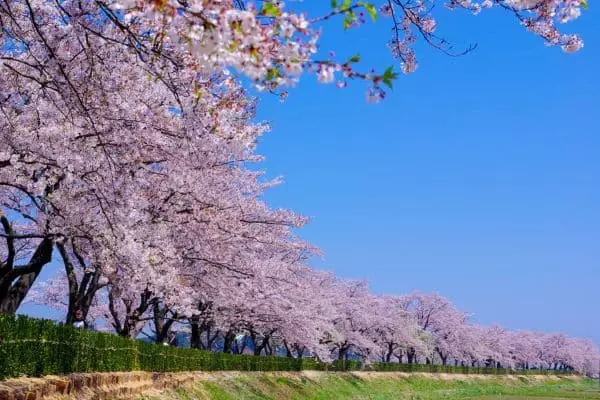
Korean Festivals
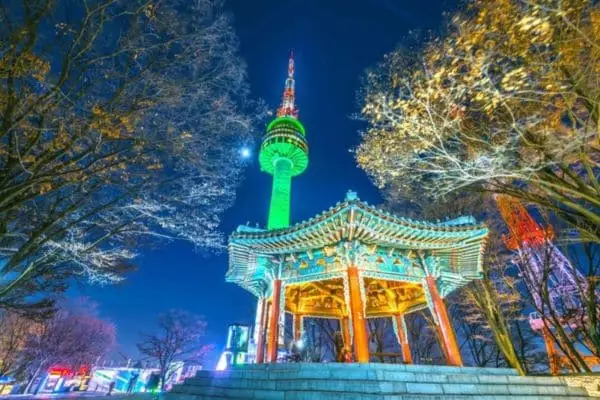
1-Week Itinerary
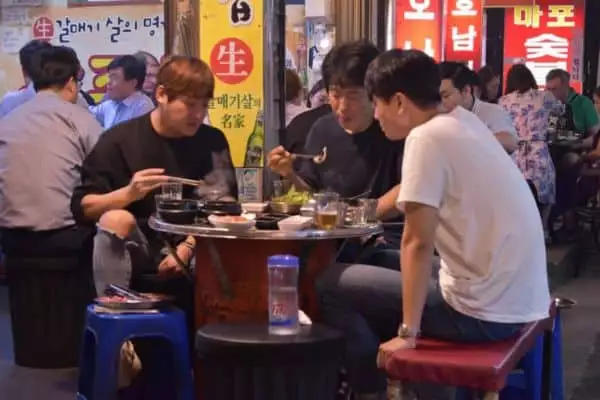
Culture Issues
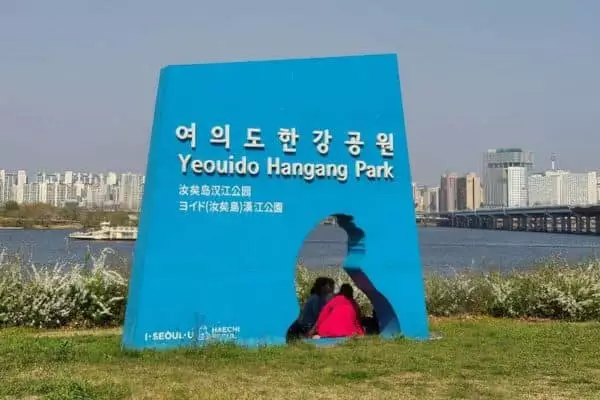
Language Issues
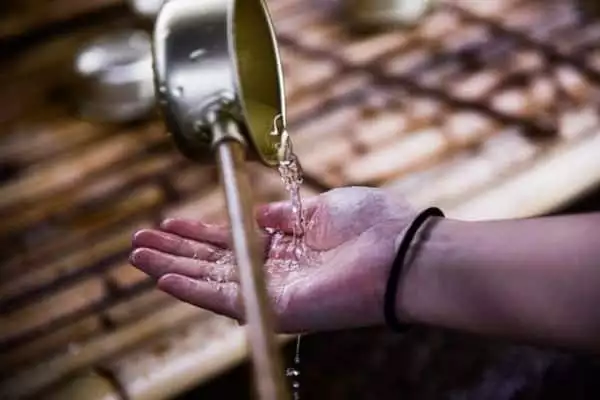
Health & Safety
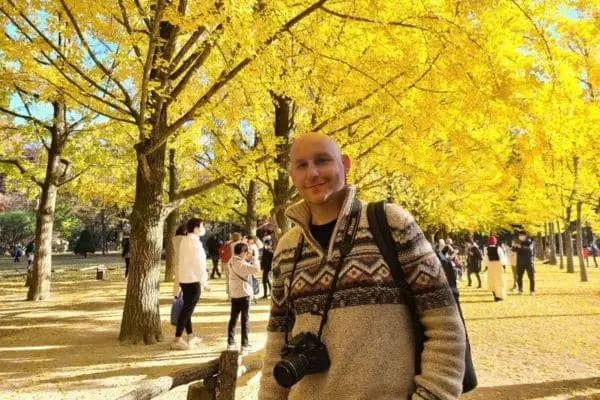
Korean Travel Tips
Korean Travel News And Travel Restrictions 2024

This section of the South Korea travel guide will show you the latest travel news and restriction updates, including any temporary or permanent changes to the entry process, visa changes, and other things that might affect travel to Korea. COVID-related updates will also be posted here.
Latest Korean Travel News In 2024
This section will detail any interesting or important travel news that could affect travellers to Korea, such as price increases in public transport, travel changes, new services, or closures.
The Korean government is aiming to boost tourism to Korea by doubling the amount travellers can claim back in tax when shopping in Korea. From 2024, travellers will be able to claim up to 5,000,000 KRW on eligible purchases with a limit of 1,000,000 KRW tax back per transaction. Source : Korea Herald
From August 2023, the price to travel on buses in Seoul is set to rise. Bus fares will rise to 1,500 KRW per journey. From October 7th, 2023, Seoul’s subway fares will rise to 1,400 KRW per journey. Other cities in Korea will enact similar rises throughout 2023 to cover higher costs of public transportation. Source : Korea Herald
From July 15th, 2023, the requirement to register your health condition through the Q-Code portal will be scrapped. Source : Korea Times
From July 3rd, 2023, children aged 17 years and younger, as well as adults aged 65 and older, will no longer need to apply for a K-ETA to travel to Korea. Furthermore, the validity period has been increased from 2 years to 3 years to make travelling to Korea easier. Source: K-ETA website .
From June 2023, Korea will end almost all pandemic-related restrictions for tourists and locals. Masks will no longer be necessary except in hospitals and infected people no longer face mandatory self-isolation (although the government still recommends 5 days self-isolation). Q-Code requirements haven’t been mentioned, however. Source : Korea Herald .
From April 2023 until December 2024, travellers from 22 countries won’t have to complete a K-ETA when visiting Korea, saving time and money for citizens of those countries. People from other countries still need a K-ETA. Source : K-ETA
The 22 countries temporarily excluded from the K-ETA requirement are Australia, Austria, Belgium, Canada, Denmark, Finland, France, Germany, Hong Kong, Italy, Japan, Macao, Netherlands, New Zealand, Norway, Poland, Singapore, Spain, Sweden, Taiwan, UK, US (including Guam).
From April 2023, all foreigners under 19 years old (18 and under) can now enter major royal palaces and tombs, including Seoul’s Gyeongbokgung Palace, for free. Previously, all foreigners were made to pay a fee to enter. Source : Korea Herald
From March 2023, a quarter of all buses in Seoul will refuse cash payments and allow only card payments using transportation cards, such as the T-Money card. Seoul’s night buses won’t be included for now, and 262 of Seoul’s 370 bus routes will still accept cash. Expect further increases in cash-free buses in the future. Source : Korea Herald
From February 2023, the base fare for a taxi journey in Korea has increased by 1,000 won to a minimum of 4,800 won. The distance that the base fare applies has also been shortened from 2km to 1.6km, which will make fares more expensive. Source : Korea Times
What Are the Current COVID Restrictions In Korea In 2024?
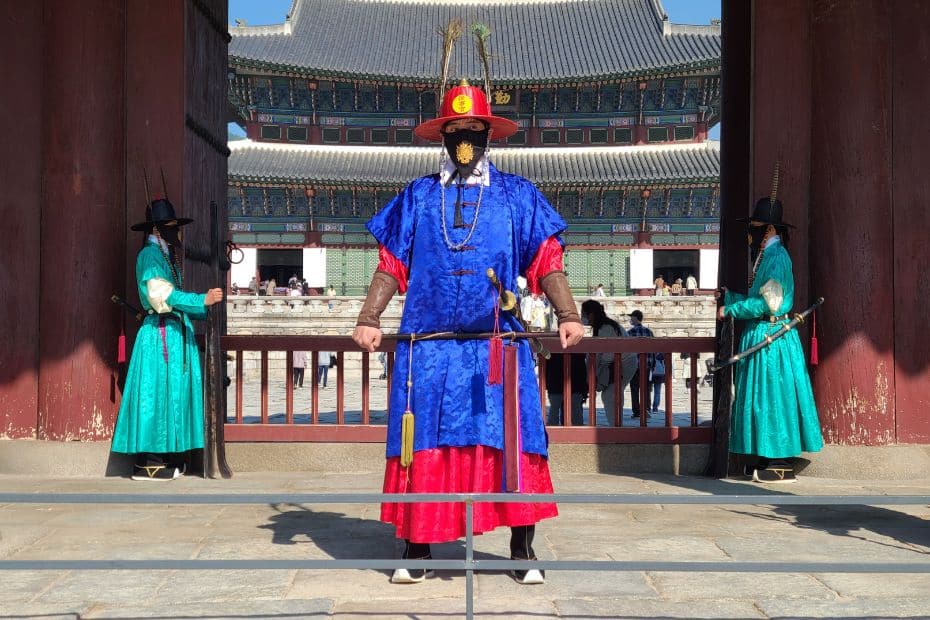
Korea has been removing COVID-related restrictions in the country throughout 2022 and 2023. It is no longer necessary to show a QR code to enter a building and restrictions involving masks and health checks have mostly gone. The latest COVID-related rules for Korea are as follows .
Masks : From Monday, March 20th, Korea has removed the mandatory mask rule for public transport, one of the final places that masks were required for the general public. The only places that require a face mask (from June 1st) are in medical facilities (hospitals). Masks are not mandatory elsewhere, including in schools, shops, restaurants or anywhere outside. Source : Korea Herald
Self-Quarantine : From June 1st, Korea will no longer impose a mandatory self-isolation period on infected people. The government instead ‘recommends’ a period of self-isolation for 5 days to reduce the chance of transmission to other people. Source : Korea Herald
For further details about the latest COVID requirements for entering or travelling in Korea, check out the second section of this South Korea travel guide, which has a list of all the updated entry requirements, including visas, tests, and other considerations.
Planning to visit Korea? These travel essentials will help you plan your trip, get the best deals, and save you time and money before and during your Korean adventure.
Visas & K-ETA: Some travellers to Korea need a Tourist Visa , but most can travel with a Korean Electronic Travel Authorisation (K-ETA). Currently 22 Countries don’t need either one.
How To Stay Connected : Pre-order a Korean Sim Card or a WiFi Router to collect on-arrival at Incheon Airport (desks open 24-hours). Alternatively, download a Korean eSIM for you travels.
Where To Stay : For Seoul, I recommend Myeongdong (convenient), Hongdae (cool culture) or Gangnam (shopping). For Busan, Haeundae (Beach) or Seomyeon (Downtown).
Incheon Airport To Seoul : Take the Airport Express (AREX) to Seoul Station or a Limo Bus across Seoul. Book an Incheon Airport Private Transfer and relax to or from the airport.
Korean Tour Operators : Tour companies that have a big presence in Korea include Klook , Trazy , Viator , and Get Your Guide . These sites offer discounted entry tickets for top attractions.
Seoul City Passes : Visit Seoul’s top attractions for free with a Discover Seoul Pass or Go City Seoul Pass . These passes are great for families and couples visiting Seoul – you can save lots.
How To Get Around : For public transport, grab a T-Money Card . Save money on Korea’s high speed trains with a Korea Rail Pass . To see more of Korea, there are many rental car options from Klook , EconomyBookings , and RentalCars .
Travel Money : Use money exchanges near Myeongdong and Hongdae subway stations for the best exchange rates. Order a Wise Card or WOWPASS to pay by card across Korea.
Flights To Korea : I use flight comparison sites such as Expedia and Skyscanner to find the best flights to Korea from any country. Air Asia is a good option for budget flights from Asia.
Travel Insurance : It is important to insure your trips to protect yourself against the unexpected. World Nomad is a specialized travel insurance provider with options for different coverage for travellers from around the world. You can also purchase cover when you are already travelling.
How To Learn Korean : The language course from 90 Day Korean or Korean Class 101 both have well-structured lessons and lots of useful resources to help you learn Korean.

Current Requirements To Travel To Korea In 2024
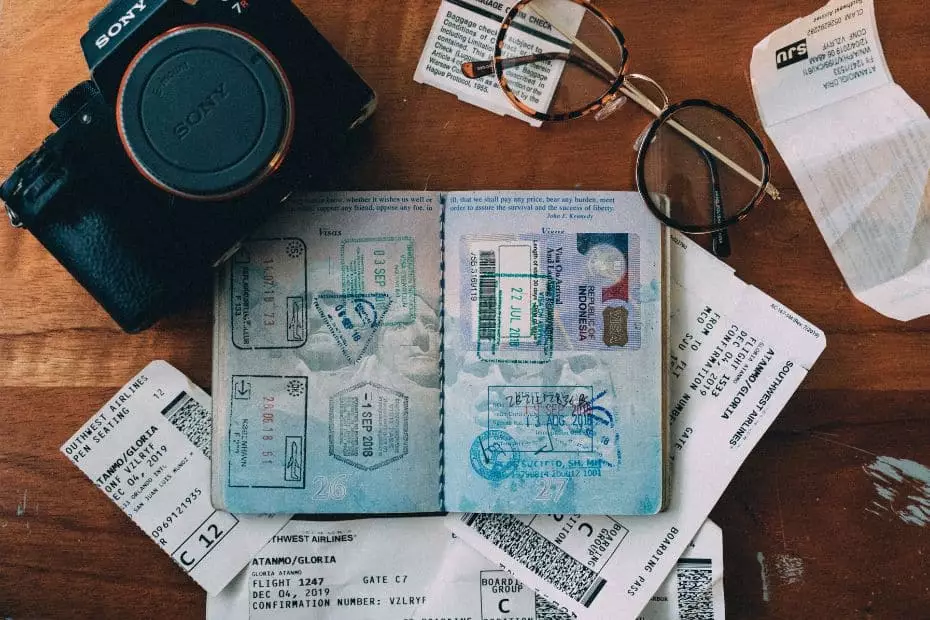
This part of the South Korea travel guide is for tourists . If you plan to travel for business, employment, or other reasons, check your nearest Korean embassy for the latest travel requirements.
Most of the restrictions and requirements for travelling to Korea have now been scrapped. You can see what entry and travel rules are in place for Korea in the table below:
The following section provides more information and exceptions about these requirements:
COVID-positive travellers should avoid travelling to Korea : To avoid infecting others on the way to Korea, as well as in Korea, the Korean government recommends that you shouldn’t travel to Korea if you exhibit COVID-symptoms or have tested positive. Self-quarantine is mandatory in Korea.
There are no PCR or other testing requirements : It is not necessary to take a PCR or other test before travelling to Korea. However, you will be asked to take a test if you show symptoms of COVID or similar illnesses when travelling to or arriving in Korea.
There is no quarantine on arrival : Travellers to Korea no longer need to quarantine when entering Korea. From June 1st, there is only a ‘recommended’ 5 day self-isolation period for infected travellers, but this is not enforced.
Complete the self-health check before or on arrival : From July 15th, 2023, travellers to Korea no longer need to complete a Q-Code self-health check or declare their health status on arrival.
Apply for a K-ETA or tourist visa before travelling : You need to apply for either a K-ETA or tourist visa for South Korea before flying to the country. Entry will be prohibited without the correct one. From April 1st, 2023 until December 31st, 2024, 22 countries are excluded from the K-ETA.
If you’re not sure which of these you need to apply for, more information is provided in the next section of this South Korea travel guide about the K-ETA and tourist visa for Korea.
K-ETA (Korean Electronic Travel Authorisation)
The K-ETA (Korean Electronic Travel Authorisation) is an online travel authorisation that visa-free foreign visitors aged 18 to 65 must obtain before entering the Korea for tourism, visiting relatives, participating in events or meetings, and for business purposes other than profitable activities.
Tourists from 112 eligible countries need to apply for a K-ETA before travelling to Korea and won’t be allowed to board a flight to Korea without it. The approval process isn’t difficult, but requires accommodation details, travel dates, and personal details such as passport number, etc.
From April 1st, 2023 until December 31st, 2024, the Korean government has decided to suspend the K-ETA requirement for travellers from the following 22 countries:
Australia, Austria, Belgium, Canada, Denmark, Finland, France, Germany, Hong Kong, Italy, Japan, Macao, Netherlands, New Zealand, Norway, Poland, Singapore, Spain, Sweden, Taiwan, UK, US (including Guam).
The aim is to reduce the burden of travellers coming to Korea and to encourage more people to visit Korea during the ‘Visit Korea Year’, which runs during 2023 and 2024.
Source : K-ETA website news .
From July 3rd, 2023, the Korean government will no longer ask for travellers who are 17 years and younger, or 65 years and older, to apply for a K-ETA when visiting Korea. These are ages based on the time you travel to Korea, not the age when you apply to travel.
Furthermore, the validity period of the K-ETA is now 3 years, not 2 years. The Korean government has decided to extend the validity period to make it easier for people to travel to Korea.
The K-ETA is based on your nationality , not the country you’re travelling from. That means, if you require a tourist visa from your home country (e.g. the Philippines), but are travelling from a country that requires a K-ETA (e.g. the USA), you can’t use the K-ETA to travel to Korea.
Tourists should apply as far in advance as possible at the official K-ETA website. If you would like to know more about the K-ETA, check out my article explaining what is the K-ETA . The K-ETA costs 10,000 KRW (about $9.00 USD). If you are charged more than this, you’re on the wrong site.
Official K-ETA website
Not sure if you need a K-ETA? Check out this infographic to find out.
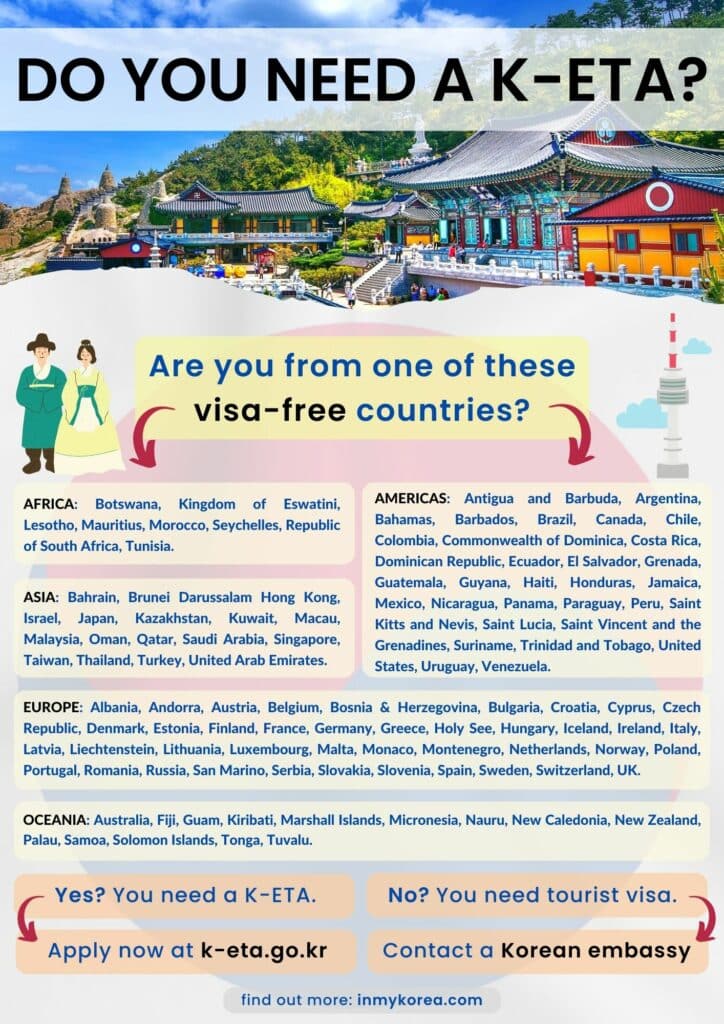
Will The K-ETA End In The Future?
The K-ETA will continue for the indefinite future. It is not a pandemic-related travel restriction but a permanent feature that just happened to start in 2021. The Korean government have stated that the K-ETA will be ongoing and other countries and areas, such as the EU, are planning similar ETAs.
Update : In July 2023, the Korean government stopped requiring children 17 years and younger and adults 65 years and older to apply for a K-ETA. The validity period was also increased to 3 years.
Update : In April 2023, the Korean government suspended the K-ETA for travellers from 22 countries (listed previously). This is in an effort to reduce the burden on travellers visiting Korea during the ‘Visit Korea Years’ of 2023 and 2024. This lasts until December 2024, but could possibly go on longer.
Tourist Visas For South Korea
Tourists that aren’t from one of the 112 countries that require a K-ETA to travel to Korea will need to apply for a tourist visa. This includes nationals from countries such India, Indonesia, Pakistan, and the Philippines. Tourist visas are based on nationality (passport), not country of residence.
The process to apply for a tourist visa differs depending on the country and may be as simple as submitting an application at the Korean embassy in the country you live in. For other countries, it may be necessary to submit extra information like bank statements and a full itinerary.
If you need a tourist visa for South Korea, contact your nearest Korean embassy as soon as you can to start the process. Tourist visas may be rejected, delayed, or take longer than expected. For some countries, such as the Philippines, it is necessary to apply through a specialist visa agency.
Transit Tour Visas For South Korea
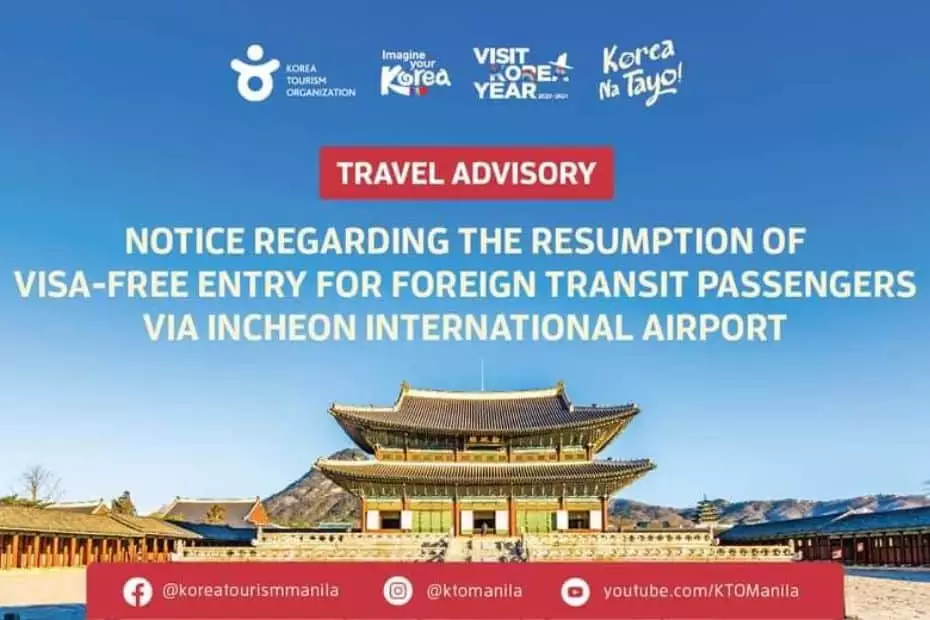
Visa-free entry for foreign transit passengers at Incheon Airport will resume from May 2023 after being suspended for 3 years during the pandemic. There are two types of visa-free transit entry methods for travellers to Korea, they differ in length, requirements, and eligibility.
The first type of visa-free entry for transit passengers is open to all travellers to Korea and allows entry for 3 days, as long as they take a transit tour from Incheon Airport. The second type of visa-free entry for transit passengers is available for 30 days, but only from travellers from 36 select countries.
Visa-Free Entry For Transit Passengers (3 Days)
From May 15, 2023, travellers from any country can travel from Incheon Airport to the Seoul Metropolitan area for up to 3 days, as long as they book at least 1 transit tour from Incheon Airport. If Korea is not their final destination, they’re free to explore more of Seoul after the tour.
There are a wide range of transit tours available from Incheon Airport, including cultural, historic, food, shopping, and entertainment tours. See the sights of Seoul’s most popular places in a few hours, or stay for longer and see more. You can find out more about transit tours from the Visit Korea website .
Requirements : To be eligible for a transit tour visa, travellers must:
- Have an onward flight to their home country or a 3rd country after Korea.
- Participate in a transit tour program by a designated travel agency.
- Stay within the Seoul Metropolitan area only.
- Have more than 2 hours between connecting flights.
Eligible countries : Visa-free entry with a transit tour is open to passengers of all countries, as long as they meet the above requirements.
Tip : If you have a transit tour in Korea, I recommend staying in Hongdae , as there is a direct train from Incheon Airport to Hongdae called the All-Stop Airport Line. Hongdae is also a really fun place where you can see lots of culture, try Korean dishes, and pack your suitcase with Korean souvenirs.
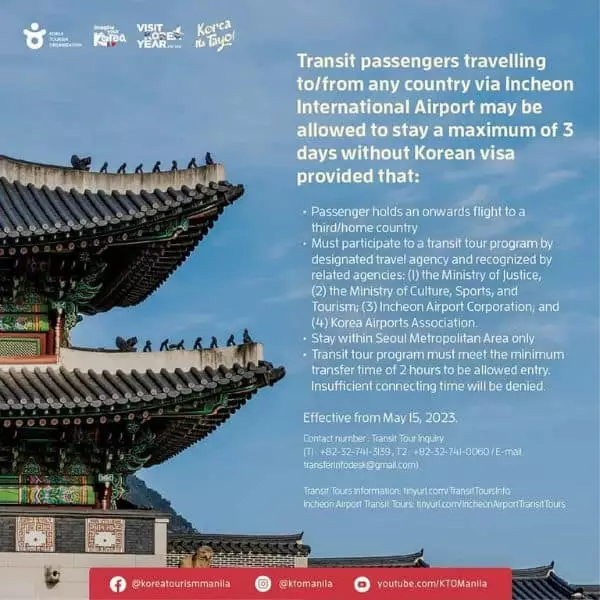
Visa-Free Entry For Transit Passengers (30 Days)
This will allow travellers from 36 countries to enter and stay in Korea for up to 30 days without a Korean visa. Travellers must be travelling to or from one of these 36 countries to be eligible to stay in Korea without a visa. This includes passengers who are not citizens of those countries.
Requirements : To be eligible for a visa-free entry as a transit passenger, travellers must:
- Hold an onward flight to any of the 36 countries mentioned below.
- Have no illegal stay records of any kind, nor have been denied entry to Korea.
- Not have exceeded a maximum of 3 days stay in any other transit airport.
Eligible countries : Travellers from the USA, Canada, Australia, New Zealand, and 32 EU countries (see picture below) can stay for up to 30 days, as long as the above-mentioned requirements are met.
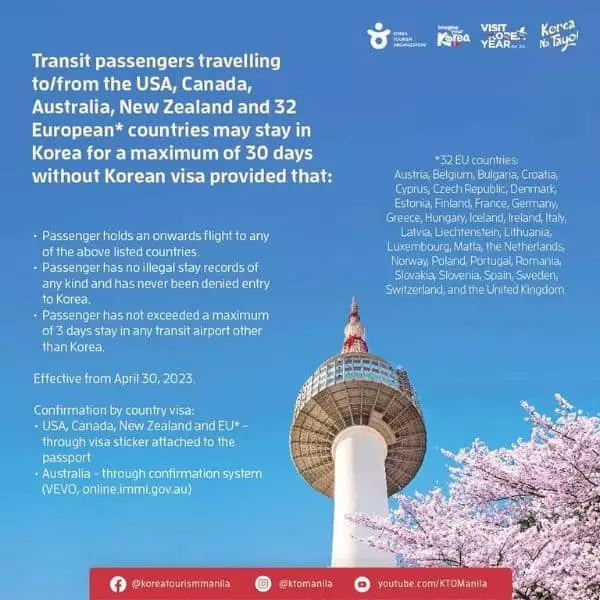
Why You Should Travel To Korea In 2024
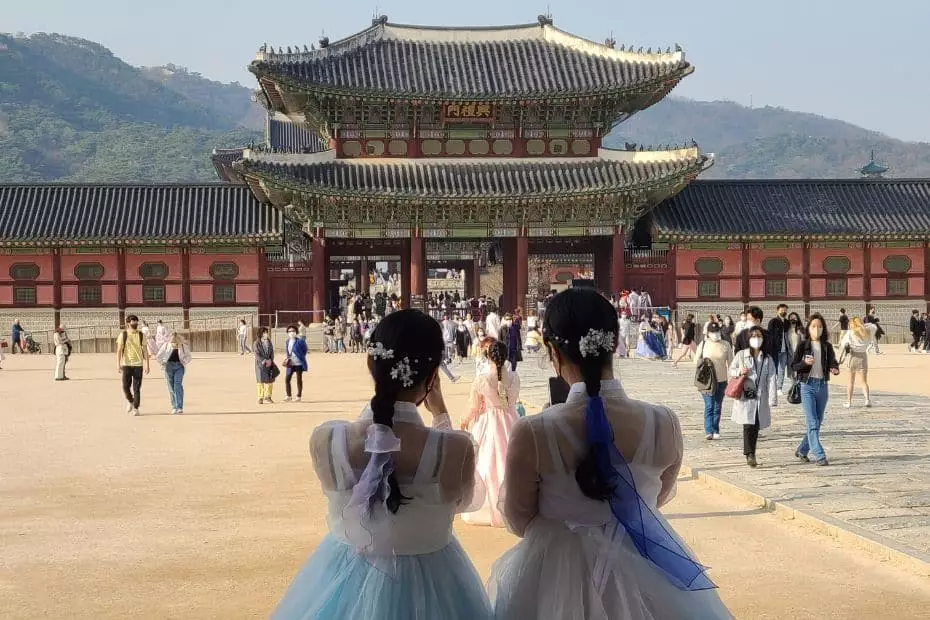
There’s not enough space in this South Korea travel guide to write down all of the reasons why you should travel to South Korea. Korea is an under-appreciated gem that has so much to discover and experience that’s completely different from what you’ll find in other countries.
Much the way that Japan has a very distinct culture and history, Korea has lots of unique, appealing places to see, people to meet, history to learn about, and natural sights to appreciate. Many people only see a small slice of Korean culture and beauty through modern media, but there’s a lot more.
Here are some of the reasons you should travel to Korea:
- Delicious foods and tasty seasonal dishes.
- Four distinct seasons that offer a variety of views.
- Fascinating history to learn about and explore.
- Stunning mountains and beaches for outdoor lovers.
- Unique and unusual festivals throughout the year.
- Friendly locals and a safe country to travel around.
- Modern, high-tech cities that are clean and efficient.
- Welcoming Buddhist temples and temple stays.
- Cheaper than most other developed countries.
- A shopper’s paradise with many markets and malls .
- Korea really wants you to come and visit.
Korea wants you to visit so much that they declared 2023-2024 the Visit Korea Year . This two-year period, confusingly referred to as a single year, is set to feature loads of events and activities to draw tourists to Korea, and includes promotions for discounted flights, accommodation, and food.
Some of the events you can expect to see during the Visit Korea Year(s) include K-Pop concerts, e-sports competitions, food festivals, and cultural celebrations. There’ll be K-Cultural stars involved, too, including your favourite K-Pop and K-Drama stars. Get ready to travel to Korea soon!
Want to know what you can do in Korea that you can’t do in other countries? Check out these amazing unique Korean experiences that should definitely be on your Korean bucket list.
The Best Time To Visit Korea
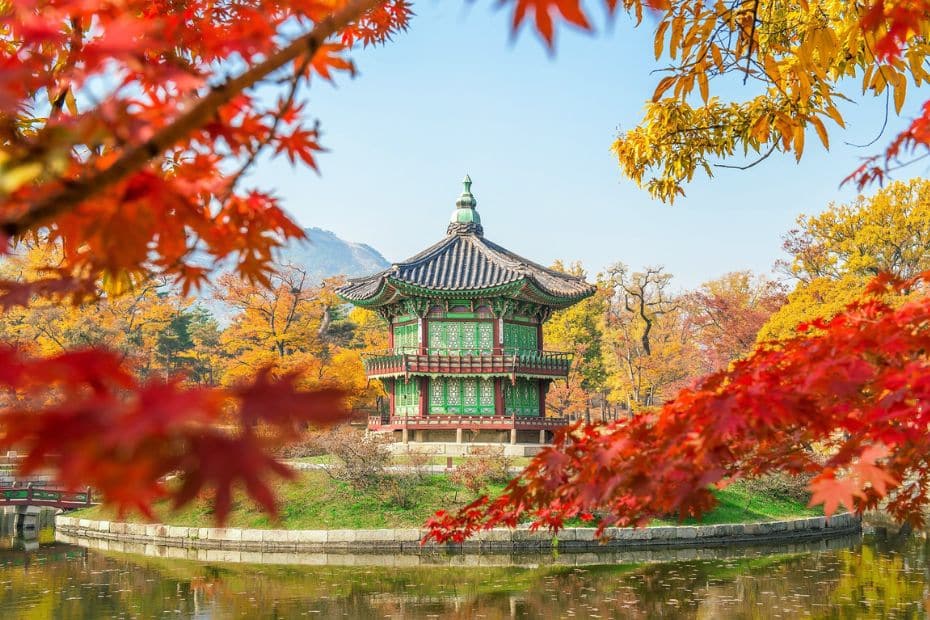
The best time to visit Korea is in spring (late-March to May) or autumn (mid-September until mid-November). These seasons have the most comfortable weather, ranging from 10 to 30 degrees Celsius, an average amount of rain, and also have the most festivals and events.
My favourite months to travel in Korea are April and October . Early-April is when cherry blossoms come out and the weather warms up enough to stop wearing a jacket. October in Korea is a beautiful month when autumn foliage sweeps across the country and the weather is warm and calm.
When you travel to Korea, the season you travel in can have a big impact on what you can see, eat, and do. This section of the South Korea travel guide is one of the most important and if you want to travel to Korea in the future, I recommend learning about Korea’s seasons before making plans.
What Can You See In Korea Each Season?
Although spring and autumn are undoubtedly the best time to visit Korea, there are plenty of reasons to visit in other seasons, too. Visitors to Korea who are restricted to travelling during certain times, such as during school or work holidays, needn’t be put off by travelling in summer or winter.
Here’s a summary of what you can see and do in each season in Korea:
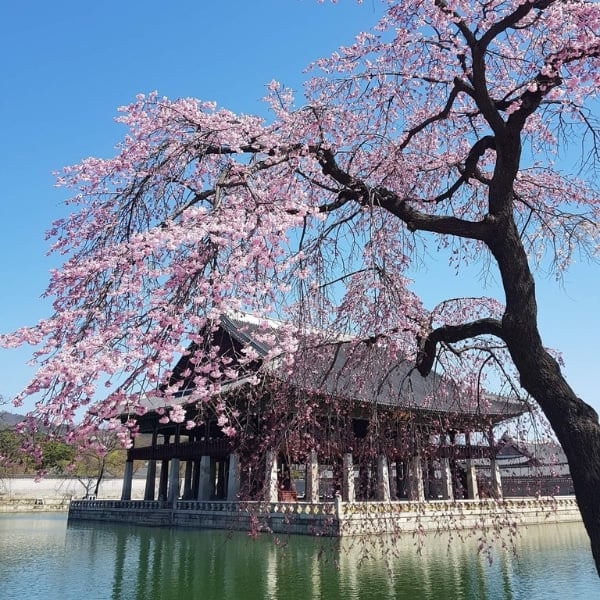
Spring: Cherry Blossoms, Blooming Nature, Culture Festivals
Spring is an amazing season to travel in Korea as you can see colourful plum blossoms (Mar), cherry blossoms (Mar-Apr), and many other bright sights. The warm weather allows people go out more to enjoy cultural activities and spring festivals , such as the Lotus Lantern Festival and Jindo Sea-Parting Festival, and also trekking, hiking, and cycling. Spring is one of the most popular times to travel in Korea for locals, so expect places to be busy, especially around cherry blossom season.
Check out my cherry blossom guide for the best places to see cherry blossoms in Korea.
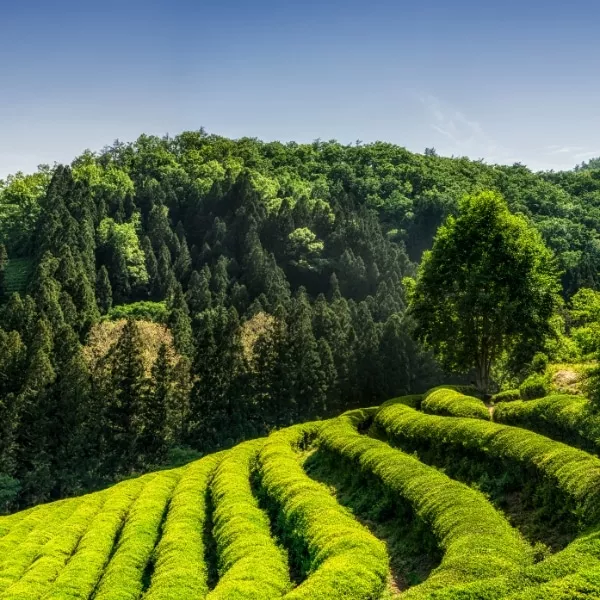
Summer: Beaches, Korean Desserts, Water Sports, Camping
Summer is a difficult season for travellers due to the high humidity and heat. June and July are rainy season in Korea and it may rain for days on end, causing people to change travel plans to indoor activities. In late July and August it gets very hot, which is good for going to the beach and enjoying water sports or water parks, which Korea has many of. Evening activities like hiking, drinking in rooftop bars, and visiting night markets are great ways to get out in summer when it’s not as hot.
Check out my guide to Korean summer activities for the best places to have fun during summer and rainy day activities in Busan in case the weather isn’t so good.
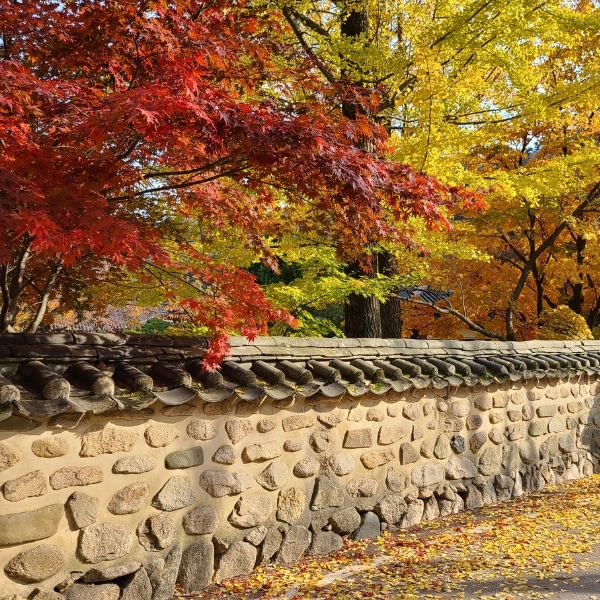
Autumn: Foliage, Festivals, Fresh Foods, Harvest Festivals
Autumn is another incredibly popular time to travel in Korea, especially in October when the autumn foliage is at its best. The foliage really brings everything to life, adding shades of colour to plain palace walls, mountains, and parks. The calm weather is warm with clear skies, making it perfect for going into nature to see the fresh fruits and other harvest goods, as well as join in harvest and cultural festivals. Enjoy local Korean dishes, fresh from the farm to your table.
Check out my guide to autumn foliage in Korea for the best places to see the leaves.
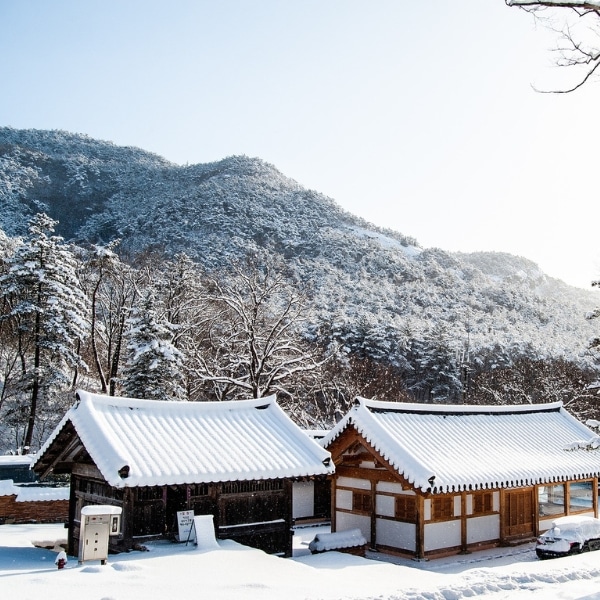
Winter: Snow, Winter Sports, Ice Fishing, Light Festivals
Winter in Korea is often neglected due to the cold weather, but is actually a very nice time to travel with delicious winter foods to try. It’s the driest time of year with blue skies making everything bright and beautiful. When it snows, sights look even more incredible. Jeju Island is a great place to visit during winter as it has fresh citrus and colourful camellia flowers to see. You can enjoy winter sports, festivals and activities, such as ice fishing, ice skating, sledding, and more.
Check out my guide to Korean winter activities for the best places to have fun during winter.
What Is The Weather Like In Korea?
The weather in Korea follows a similar pattern each year, spread over five distinct seasons. As well as spring, summer, autumn, and winter, Korea also has a rainy season, which starts around mid-June and finishes mid-July. It doesn’t constantly rain during rainy season, but may do for several days.
There’s always something to do in Korea, no matter what the season. Even rainy season in Korea is fine for travelling, as long as you plan lots of indoor activities and can be flexible with your schedule. Don’t let the weather in Korea put you off visiting, you’ll find plenty to do in each season.
Here’s a summary of the weather in Korea each season:
The graph below shows you the average temperature each month in Seoul. This is an average temperature, so some days will be much hotter and others much colder. I’ve experienced summer temperatures of over 35 degrees and winter nights of -20, so be prepared for both.
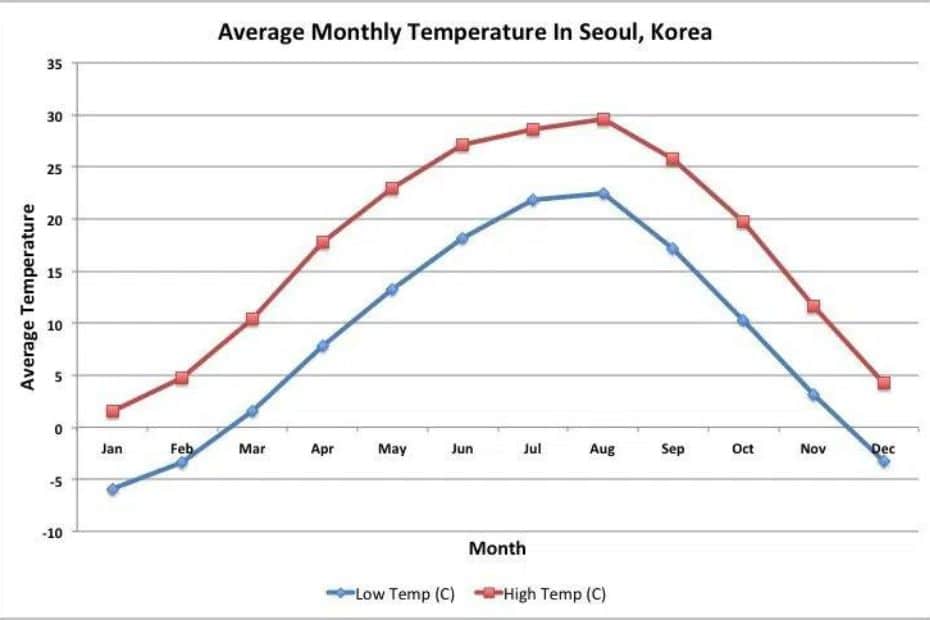
The table below shows the average rainfall for each month in Korea, based on records from climate-data.org . The summer months have the most, while winter in Korea is very dry. The rainfall in the winter months can turn to snow when it’s cold enough, too.
There will be more information about the sights, festivals, and events you can enjoy in Korea in later parts of this South Korea travel guide. Check them out for travel ideas for your trip to Korea.
How To Book Flights To Korea
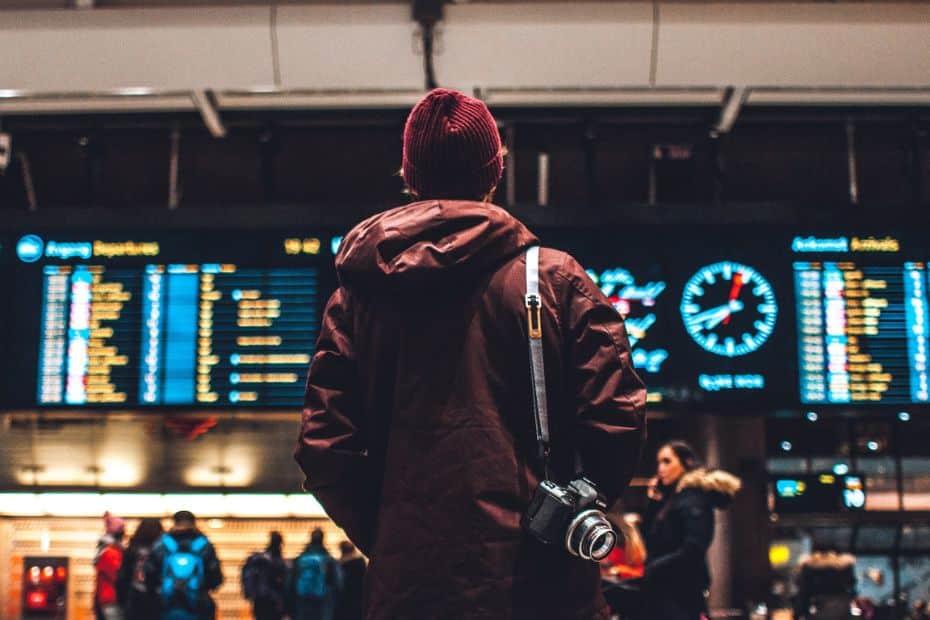
Flying to Korea in 2024 is getting easier with more airlines offering direct or connecting flights to Korea and budget airlines adding more routes to Korea from other parts of Asia and as far away as the USA. There aren’t as many routes as there were in 2019, but they are returning month by month.
Booking a flight to Korea is one of the first things most people do and finding the right flight can really affect your travels. Choosing the right flight not only affects how much money you need to spend, but also when you’ll arrive, how you’ll get to your hotel, and where you’ll arrive in Korea.
Check out my guide to booking flights to Korea to discover the best ways to book a flight to Korea, including the best time to book (21 to 127 days before travel), where to get cheap flights, the various airlines that offer flights to Korea, and lots more.
Arriving At Incheon Airport
Most flights to Korea arrive at Incheon Airport, which is near Seoul. It takes about an hour to get to the centre of Seoul from Incheon Airport and there are various transportation options including a high-speed train, subway, limo buses, taxis, and private transfers.
The best option for transferring from Incheon Airport to your hotel is usually a limo bus as these run to popular areas of Seoul, such as Myeongdong, Hongdae, Gangnam, and Insadong. There’s also a direct train to Seoul Station and a subway that goes to Seoul Station via Hongdae.
Arriving during the daytime gives you the best options for getting from Incheon Airport into Seoul, while nighttime flights will leave you fewer options. There are a few night buses that run, but late arrivals will either need to stay at the airport or book a private transfer or taxi instead. More details about taking a taxi from Incheon Airport can be found in my guide to taxis in Korea .
If you want to book a private transfer direct to your hotel from Incheon Airport, contact Jerry Heng , a freelance driver. I want to recommend Jerry as he has years of experience organising airport pick-ups and drop-offs, as well as personalised tours around Korea. He’s also a friendly guy.
Recommended Flight Comparison Sites
I suggest checking at least one flight comparison website before booking any flights. You can alter the arrival and departure times, flight duration, choose direct or indirect flights, and sort by price to find the perfect flight for you. Skyscanner is my preferred comparison site, but they’re all useful.
Take time to change the dates and flight times to find the most suitable flights for you. Cheaper flights often have inconvenient arrival times, so you should decide whether it’s worth the hassle to save a bit of money. Sometimes spending more for the right flight is worth it, especially when time is limited.
I try to go for a balance of convenience and savings and avoid flights that arrive late at night or leave too early in the morning. These flights require you to book an extra night at the airport or make you lose time when you could be travelling and doing more interesting things.
Here are 4 of the best flight comparison sites for booking flights to Korea:

Skyscanner is one of the most popular flight aggregators and offers flights, hotels, and other travel bookings for all major destinations. Skyscanner shows airline environmental ratings and which flights are practical or difficult.

Expedia is a large US travel company that offers tours, flights, hotels, and other services around the world. You can book hotel and flights together, to save you time and effort when travelling. A good place to start your flight search.
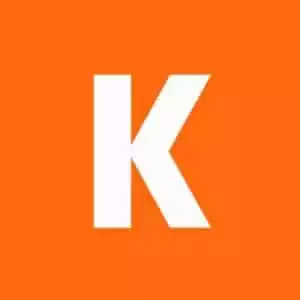
Kayak is great for people looking for cheap flights to Korea. You can see price trends for your flight to Korea to see when the best prices are available. There are also lots of budget travel options on the site that can save you more.

WayAway is a flight comparison site for the modern generation, with Instagram tips & travel advice as well as a good selection of cheap flights. You can get cashback on bookings with their premium service.
Where To Stay In Seoul

Incheon Airport is the main arrival destination for most travellers visiting Korea, with more than 71 million travellers passing through the airport in 2019, making it the world’s 14th busiest airport . It’s close to Seoul and has lots of transportation options to get into Korea’s capital.
Seoul is the first place people visit, not only because it’s close to Incheon Airport, but because it’s undeniably the heart and soul of Korea. The greater Seoul area includes about 50% of Korea’s population (25 million people) and is by far the biggest, most vibrant, and fun city in Korea.
To travel to Korea you need either a K-ETA or tourist visa . One of the requirements to apply for these is the address of the first place you’ll be staying in Korea. Therefore, you should book at least your first hotel in Korea so you can begin those applications. Seoul is an ideal first place to stay.
Best Neighbourhoods To Stay In Seoul
Deciding where to stay in Seoul can be difficult because there are so many unique neighbourhoods, each offering something interesting for travellers to experience. Knowing which has the best sights, entertainment, culture, shopping, transport, markets, restaurants, cafes, etc., is useful.
Seoul’s neighbourhoods typically contain a mixture of several of these elements and will appeal to different types of travellers. Below is a very rough guide for which neighbourhood each type of traveller might enjoy. Of course, there are plenty of other things to do in each area.
As you can see from the list above, both Hongdae and Myeongdong have a lot to offer and I would definitely recommend either of these neighbourhoods for first time travellers to Seoul. Even people who have travelled to Korea before will find lots of reasons to stay there. They’re where I usually stay.
I have detailed guides to hotels in the two best districts for staying in Seoul – Hongdae and Myeongdong. My guide to hotels in Hongdae includes a range of hotels for all types of travellers, while my guide to hotels in Myeongdong highlights Myeongdong’s best budget to mid-range hotels.
Each neighbourhood feels unique and offers something to discover, from traditional markets and eateries, modern Insta-worthy cafe districts, peaceful parks and lakes, world-class skyscrapers, and many fun activities. Wherever you choose to stay, you’re sure to find something you enjoy.
I’ve included the 8 best neighbourhoods in Seoul in this South Korea travel guide, along with a small summary about what you can expect in each area. These are the most popular areas for tourists to stay in, but certainly not the only places to stay. There are also links to hotels in these areas.
Here are the 8 best neighbourhoods in Seoul:

Myeongdong is arguably one of the best places to stay in Seoul for any traveller. It has the best range of budget and mid-range hotels in Seoul and is conveniently located for sights, activities, and public transport. It’s close to popular tourist sites, such as the N Seoul Tower and royal palaces. There are traditional markets and Myeongdong’s famous street food alley to check out. As Myeongdong is popular with tourists, you’ll find more people that can speak English and places to exchange money.

Hongdae is one of the coolest neighbourhoods in Seoul and a must-see for any traveller to the city. This area has emerged as a creative hotbed for the latest Korean fashion, art, food, and culture, thanks to innovations from students of nearby universities. Youth culture is on display in Hongdae’s main and side streets, with boutique shops, trendy bars and cafes, inventive restaurants, street art, and live performances. If you want to see a vibrant, colourful side of Seoul, then Hongdae is the place for you.
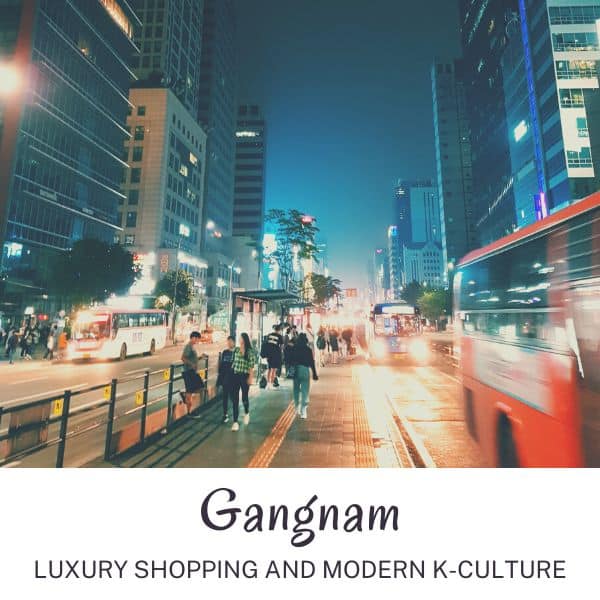
Gangnam is an upscale area of Seoul that’s home to some of Korea’s biggest stars. This area was where K-Pop was invented, as can be seen by the golden Gangnam Style statue outside COEX Mall. Gangnam is a lot more than that, and is a powerful business area with Seoul’s best shopping and dining experiences, as well as some of the city’s finest cafes and bars. Gangnam has a host of upmarket hotels that provide outstanding luxury, but also has a selection of budget and mid-range hotels making it accessible for all travellers.
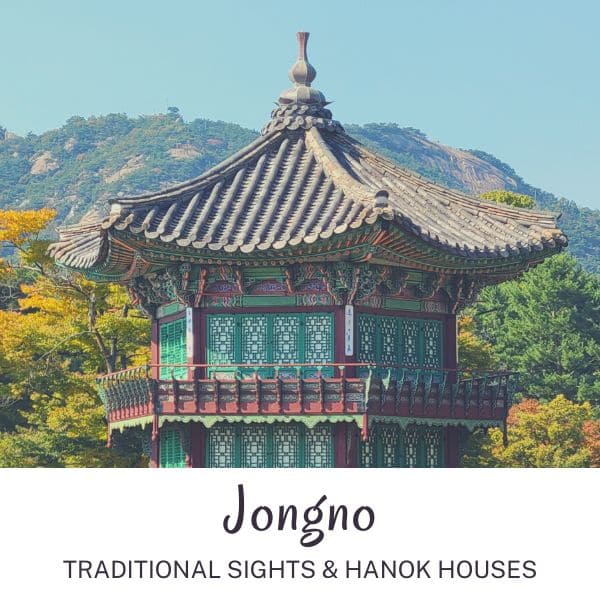
Jongno is the area north of Myeongdong that includes Insadong, Bukchon Hanok Village, Ikseongdong Hanok Village, Jogyesa Temple, 4 of Seoul’s royal palaces, the presidential Blue House, and lots more. This area is packed full of interesting sights and traditional restaurants and tea houses to explore. You can find a good range of hotels in Insadong, Seoul’s artistic area that is home to artists and tourist-friendly attractions. There are also guesthouses and apartments to rent in the residential areas of Jongno that offer a more homely stay.
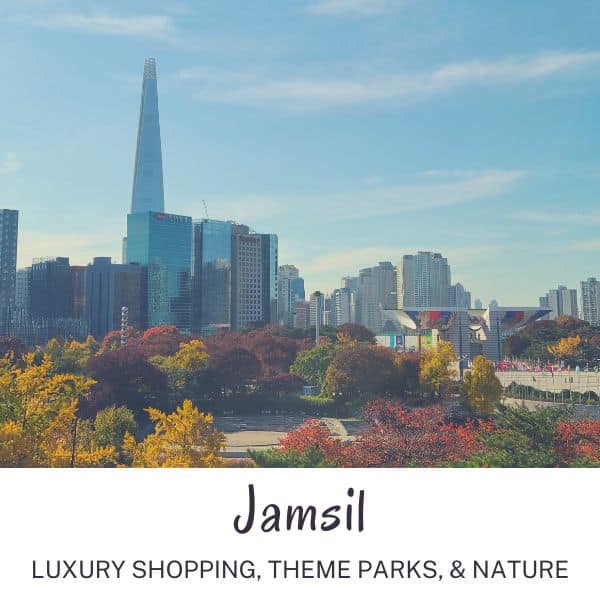
Jamsil is an upmarket residential neigbourhood close to Gangnam that’s home to one of Korea’s largest companies, Lotte. You’ll find the Lotte World Tower, Lotte World Theme Park, and Lotte Aquarium in this area, as well as the beautiful Seokchon Lake and leafy Olympic Park. Jamsil is a great base for people visiting for cherry blossoms in spring as the Seokchon Lake Cherry Blossom Festival is one of Seoul’s best. There are lots of trendy cafes and bars near the lake and it’s a relaxed part of the city to stay in.
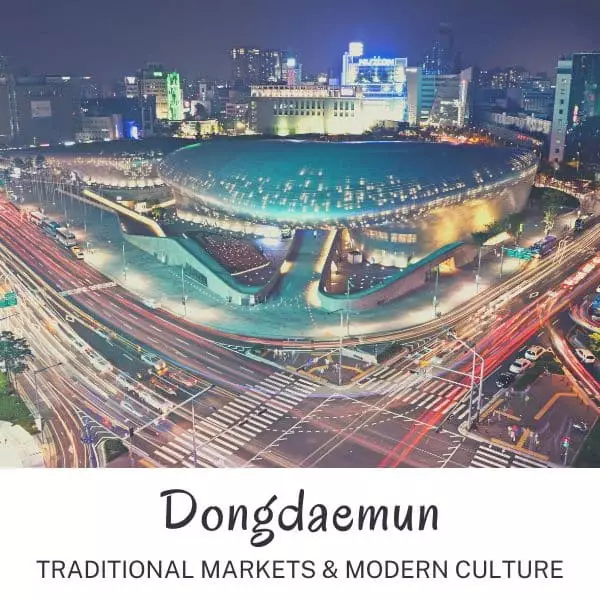
Dongdaemun is known for both its traditional markets, where you can buy a range of goods, as well as the futuristic Dongdaemun Design Plaza (DDP). The area is an unusual mix of traditional Seoul, with Gwangjang Market offering some of Seoul’s best Korean street food, and modern culture, displayed by the night markets and art installations at the DDP. There are lots of cheap eats and bargain markets and malls in this area, making it a great place to stay if you plan to do a lot of bargain shopping in Seoul.
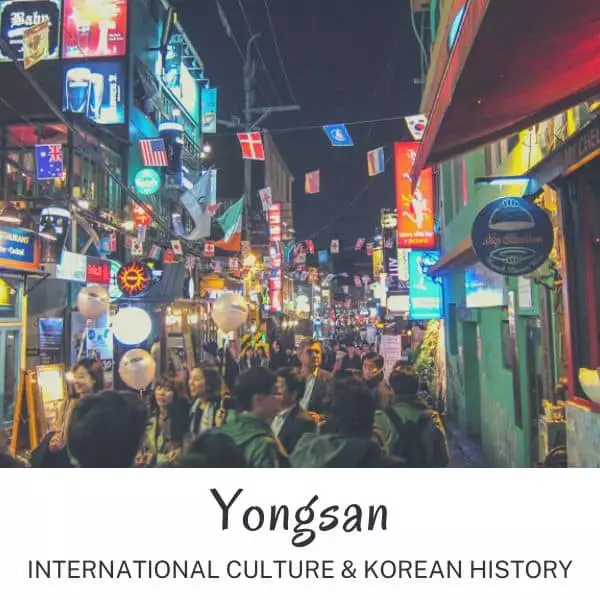
Yongsan is the area encompassing the N Seoul Tower, the popular international area of Itaewon, the trendy hilltop area of Haebangchon (HBC), Seoul Station, the National Museum of Seoul, and many riverside parks. Yongsan has a busy train station with towering skyscrapers and hotels around it catering to business and luxury travellers, as well as shoppers. This quiet business and residential area has good transport links and fewer crowds than other parts of Seoul, as well as interesting cultural attractions.
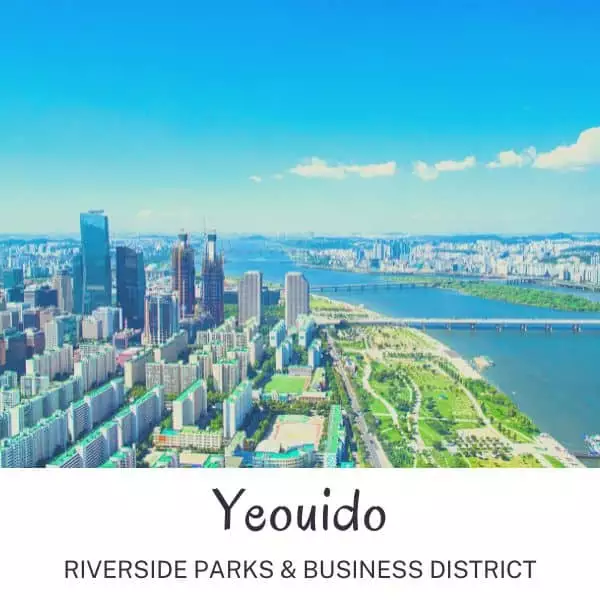
Yeouido is a large island that rests in the Han River, overlooking Hongdae and Yongsan. It has some of the best parks in Seoul and is a popular place for locals to walk along the river on weekends and at night. These parks are home to Seoul’s biggest cherry blossom festivals, as well as summer night markets, fireworks performances, live music, and people enjoying life outside of work. Yeouido is the upmarket financial centre of Seoul, making it an ideal base for business, luxury, and family travellers.
Seoul’s neighbourhoods are informal designations, not necessarily the official district name. For example, Hongdae is a neighbourhood in the Mapo-gu district and Myeongdong a neighbourhood in the Jung-gu district. Whereas Jongno is both the neighbourhood and district name (Jongno-gu).
You might see some areas referred to differently. However, the terms I’ve used in this section are the names most commonly used to describe these areas by tourists and expats. Koreans will certainly know which area of Seoul you’re talking about when you use these names.
Learn more : If you want to know more about Seoul’s best districts and figure out where the best place to stay for your trip to Korea, then check out my detailed guide about where to stay in Seoul . It’s packed with useful info about each neighbourhood, hotel recommendations for different budgets, and tips about booking accommodation in Seoul. Also learn more about the Han River Boat Service launching in 2024 to connect Yeoudio, Jamsil and other riverside destinations.
Hotel Recommendations For Seoul
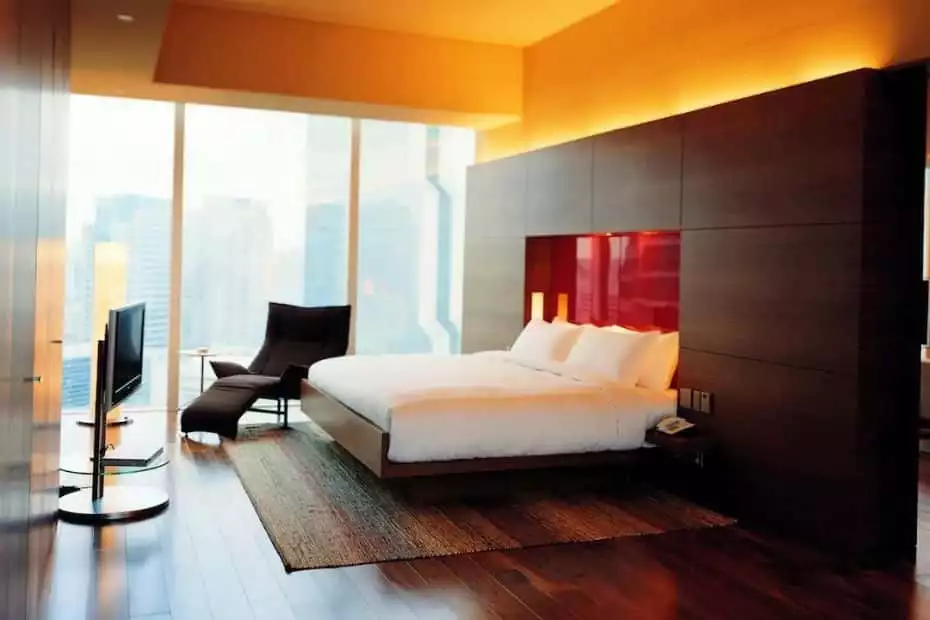
There are hundreds (maybe thousands) of hotels in Seoul to choose from ranging from multi-person dorm rooms to the height of luxury looking down over Seoul from a 5-star hotel room in the Lotte World Tower . Whatever your budget or requirements, there’ll be somewhere to stay in Seoul for you.
To save you time searching for the best places to stay in Seoul, I’ve created a list of the 9 best luxury, mid-range, and budget hotels in Seoul, as well as 6 long-stay serviced apartments. This list has been created based on customer reviews, location, facilities, amenities, reputation, and quality.
I live outside of Seoul, so often book hotels when I’m visiting Seoul for the weekend . I’ve stayed at quite a few of these, so can personally recommend them based on my own experience. I’ve had both good and bad hotel experiences in Seoul and only want to recommend the best to you.
Recommended Luxury Hotels
Seoul has some incredible luxury hotels to enjoy, each with a true 5-star service, excellent amenities, and delectable restaurants. Many of Seoul’s best luxury hotels are located in Gangnam, Seoul’s wealthiest district, where you can find top restaurants and designer brand shopping.
Recommended Mid-Range Hotels
If you want to experience a luxurious stay in Seoul without breaking the bank, then these mid-range hotels will be perfect for you. These unique, 4-star hotels are reasonably priced and provide stylish, comfortable rooms that you’ll sleep easily in after a busy day exploring Seoul.
Recommended Budget Hotels
Seoul has a wide range of excellent budget hotels with prices that might surprise you for a large city. These are some of my favourite places to stay in Seoul when I visit for the weekend and are popular with travellers due to their convenient location, facilities, and comfortable beds.
Recommended Serviced Apartments
If you plan to stay in Seoul for a month or more, these serviced apartments will provide you all the comforts of home with the benefits of staying at a hotel. These excellent serviced apartments come with cleaning services, health facilities, cooking facilities, and are value for money.
Cost To Travel In South Korea In 2024
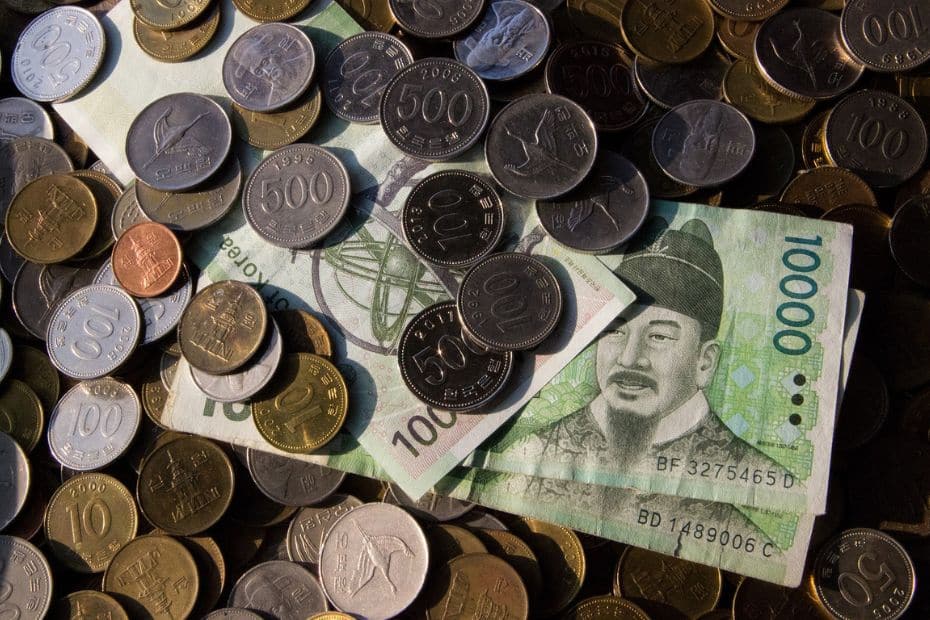
This part of the South Korea travel guide will help you understand some of your expected costs to travel to Korea. The costs to travel to Korea include flights, accommodation, food, drinks, transportation, activities, sim cards, visas, souvenirs, travel insurance, and lots more.
The costs you will pay when you travel vary massively depending on what type of traveller you are and what style of travel you can afford. If you want 5-star luxury and fine-dining, your budget will be very different from someone eating ramyeon from 7-11 and staying in a budget guesthouse.
Therefore, I will try to provide expected costs for 3 different types of traveller – budget , mid-range , and luxury . These aren’t exact figures, but should give you a rough idea of how much you’ll spend.
Daily Costs To Travel In Korea
There are costs that you will pay each day when travelling in Korea that can be averaged out to give you a daily cost. Knowing these figures will help you plan your budget for Korea and to see where you can afford to spend more for the one-off costs to travel, which will be covered next.
The daily costs are accommodation, food & drinks, transportation, attractions & tours, and miscellaneous expenses that can pop up unexpectedly. These miscellaneous costs might include getting a street food snack, an unexpected entrance fee, or a few extra drinks in the evening.
Transportation will be covered later in this South Korea travel guide and there are some useful tips to reduce your transportation costs. You will also be able to see some of the best attractions, tours, and activities in Korea and you’ll be able to work out how much you’ll spend on those.
Here are the daily costs per person to travel in Korea:
Please note : These are costs per day, per person . Couples and families sharing a room will have lower costs as double rooms aren’t much more expensive than single rooms. Some days will be cheaper, some much more expensive, especially if you take day trips or visit premium attractions.
There are also one-off costs not included in these daily costs. These can be pre-travel costs, such as flights and a K-ETA or tourist visa (already covered), travel insurance, vaccinations, and such like. Pre-travel costs are different for each traveller and depend on your country of residence.
Other one-off costs during travel in Korea may include day tours, souvenirs, shopping, celebrations, medical costs, and expenses that you don’t normally pay each day. Again, these vary for each traveller and are difficult to calculate as people’s budgets are so different.
Is Korea A Cheap Country To Travel In?

Korea is relatively cheap country to visit, but certainly isn’t always a budget destination. The cost to travel to Korea has risen over the last few years and might be more expensive than you think, even if you’ve previously visited Korea. Flying to Korea is certainly more expensive now.
Food costs rose by 7.5% in 2022 alone and these costs have been passed on to restaurants, which now charge higher prices for meals. Transportation costs rose by about 20% in 2023 for buses and subways, although these are still relatively cheap compared to some countries.
Despite these price increases, travelling in Korea is still cheaper than travelling in most other high-income industrialised countries such as Japan, the USA, and Western Europe. If you’re from countries such as the Philippines, Thailand, Indonesia, or Malaysia, Korea may seem expensive.
City Passes That Save You Money In Seoul
There are a number of city passes that can save you money when visiting Seoul by offering free or discounted entry to some of the best attractions in the city for a single price. The original city pass for Seoul is the Discover Seoul Pass, but now there is also the Go City Pass and Klook Pass Seoul.
Here’s a summary of each of these Seoul city passes:
Discover Seoul Pass : Available in 24 | 48 | 72 hour periods, allows entry to top attractions in Seoul such as Lotte World Adventure, N Seoul Tower, COEX Aquarium, Alive Museum, Zoolung Zoolung, Sealala Sauna, Gyeongbokgung Palace, and more. Prices start at 50,000 KRW .
Go City Seoul Pass : Available as 1 – 5 day passes or a flexible pass for up to 7 attractions. Covers a wider amount of attractions than the DSP, including a DMZ Tour, Nanta Cookin’ Musical, Seoul Land, Seoul Pub Crawl, Seoul Ghost Tour, and more. Prices start at 68,000 KRW .
Klook Pass Seoul : Available for use 2 – 5 attractions, including Everland or Lotte World Adventure theme parks. The Klook Pass Seoul allows free entry to selected attractions within a 30 day period. Attractions include the N Seoul Tower and Lotte World Aquarium. Prices start at 44,000 KRW .
If you’d like to know more about these passes, be sure to check out my article about the Klook Pass Seoul , as well as my suggested Discover Seoul Pass itineraries . I’ll have a review article of the Go City Seoul Pass soon, too.
How To Save Money In Korea
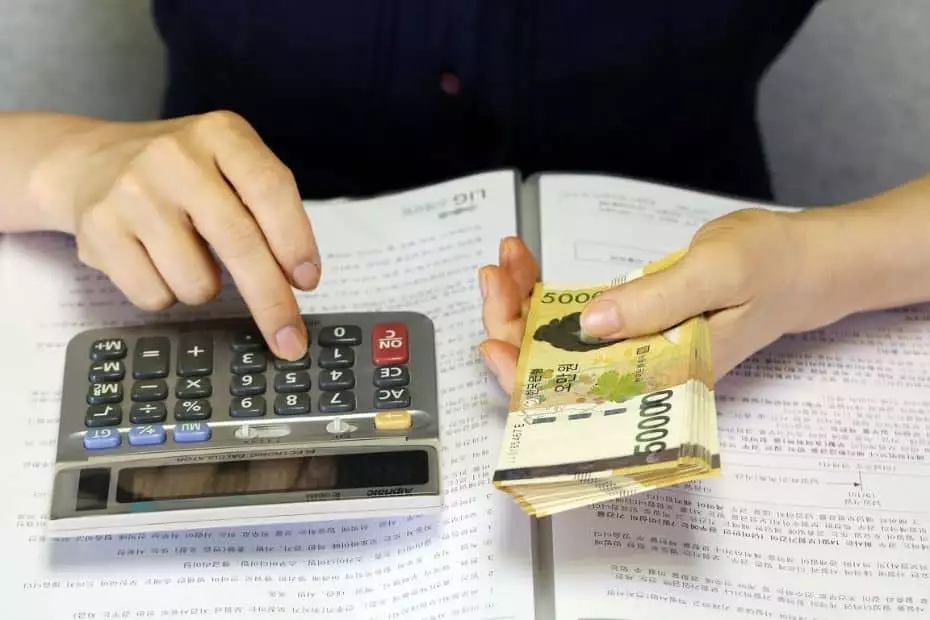
There are always ways to save money and spend less in Korea. Budget options exist for travellers and you can travel in Korea for less than 150,000 KRW per day, even as little as 50,000 KRW per day. Here are some of the ways you can save money in Korea and travel more for less:
Eat like a local : Visit the traditional markets, food stalls, and traditional Korean restaurants. These are much cheaper than eating foreign foods in Korea. University areas are usually cheap, too.
Spend less on coffee : Coffee in Korea can be expensive, but it doesn’t have to be. A latte could cost you 5,000 KRW in a chain store, but there are cheap hole-in-the-wall cafes where it’s half that.
Shop in the markets : From designer goods (possibly fake) to souvenirs, the markets of Seoul and other cities usually have the best prices. Don’t be afraid to haggle.
Use public transport : Korea has a fantastic public transport network both in cities and between cities. Don’t waste money on taxis and private transfers when you can use a bus or subway.
Book everything online : You can find discounted entry and tour tickets online that are much cheaper than the regular price. Use Klook , Get Your Guide , and Viator for the best prices.
Stay in guesthouses and hostels : You can find rooms for as little as 10,000 KRW per night in shared dorms and 20,000 KRW in guesthouses. Book ahead to find the best prices.
Take advantage of free things : There are lots of places you can visit for free in Seoul and free services, such as walking tours in Seoul, 30-minute hanbok rentals, and even free entry to the palaces.
Get your tax back : Korea makes it really easy to recover tax you’ve paid when shopping. Stores in Seoul will process tax returns for you or you can claim a refund at the airport when you leave.
You will see tips and links in this South Korea travel guide that are designed to help you save money when you visit Korea. Booking tours, attractions, and sim cards in advance can save you a lot of money, as can using a T-Money card and Wise travel card. Keep reading for more money-saving tips.
Travel Money And Money Exchanges In Korea
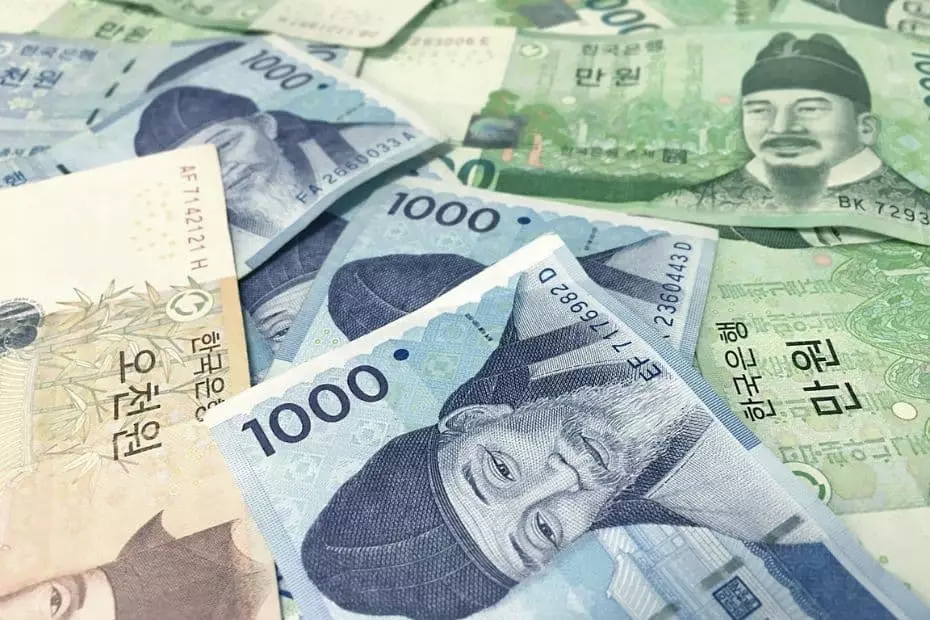
If you follow the tips in this section of this South Korea travel guide, you can certainly save yourself a lot of money and avoid unnecessary fees when spending in Korea. Learn where and how to exchange money, how to avoid ATM and card fees, and how to get tax back before you leave.
Because this section covers a lot of the common questions people ask about travel money in Korea, it will be broken down into a question and answer format. This should make it easier for you to find the information you’re looking for and discover answers you didn’t know you were looking for.
Can You Use A Foreign Card In Korea?
Almost all foreign credit cards with Visa or Mastercard will be accepted in Korea and it is possible to use these cards to pay across the country. American Express is also accepted in popular tourist areas, but not as widely as Visa or Mastercard and may have problems outside of big cities.
Foreign debit cards should work if they use Visa or Mastercard, but there may be restrictions in place with your bank when using them abroad. It is recommended that you call your bank to check before travelling. For both credit and debit cards, check your bank for any fees you’ll pay overseas.
Can You Withdraw Cash From An ATM In Korea?
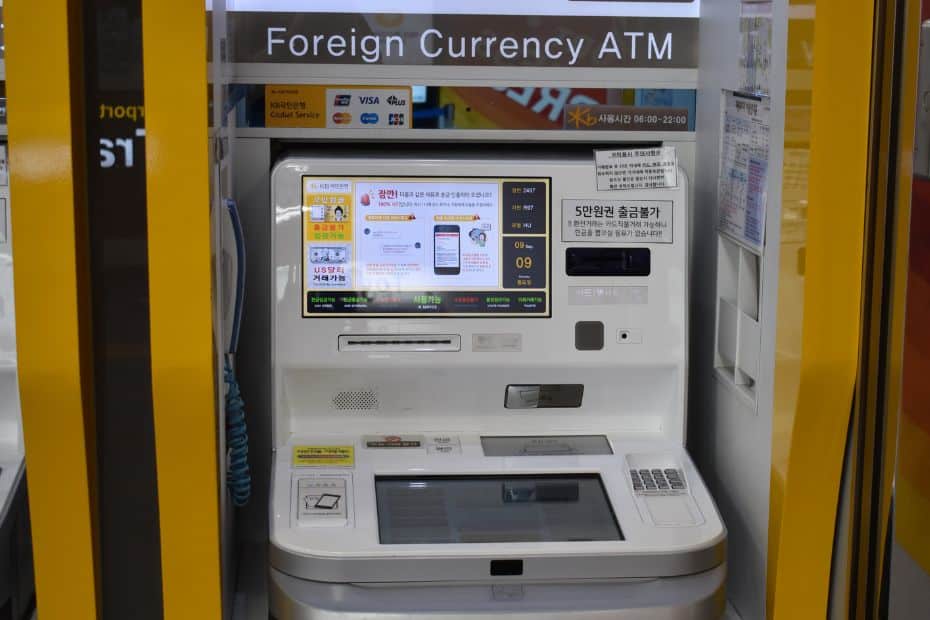
You can withdraw cash from ATMs in Korea using a debit card, but not all ATMs will accept international cards. Look for a sign saying ‘Global ATM’ or ‘Foreign Currency ATM’ to withdraw cash in Korea with a debit card. You can also withdraw cash using a credit card, but it’s more expensive.
Whether you use a debit or credit card, an ATM is likely to charge a fee to withdraw money using a foreign card. Your bank or credit card company may also charge a fee or give a bad exchange rate. These costs can add up a lot if you withdraw regularly, so try to make fewer withdrawals.
Learn more : Should you use cash or card when you visit Korea? This article about the how to pay in Korea has lots of useful information about payment methods in Korea, including alternatives to the usual mix of cash and a credit card.
How Can You Save Money When Paying By Card In Korea?
Instead of using a foreign debit or credit card in Korea, which might have expensive fees or not work in places, here are two better options. The first is the WOWPASS travel card , which offers tourist-friendly card services in Korea. The other is to apply for a travel card that can be used globally.
Both the WOWPASS and the two other travel cards offer the ability to pay by card in Korea and to withdraw cash in Korean won. They also offer better exchange rates than you’ll find in airport or local money exchanges in Korea. They each have some unique features, which will be illustrated below.
Pay Like A Local With WOWPASS
The WOWPASS is a new way to pay in Korea that combines the essential functions of a T-Money transportation card with the benefits of a local debit card. This is a prepaid card you can top up at more than 90 locations in KRW or your own currency. Just look for the bright orange WOW machines.
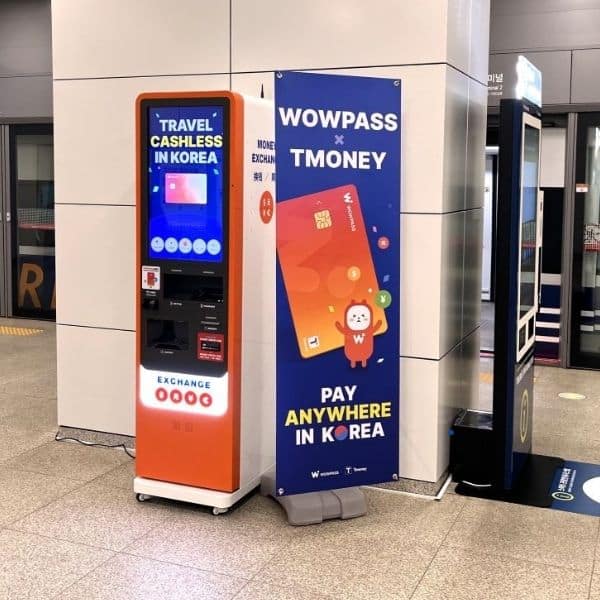
The T-Money function in the WOWPASS means it’s more useful than other travel cards as you don’t need to carry two separate cards when you travel. Please note, you still need to charge the T-Money balance of WOWPASS with cash, just like a regular T-Money card.
The WOWPASS travel card allows you to add up to 1,000,000 KRW to your card and can be used to pay for almost anything in Korea without any fees. The card is issued by a Korean company, so you can use it to withdraw cash at any WOWPASS machine located in Seoul & other cities in Korea.
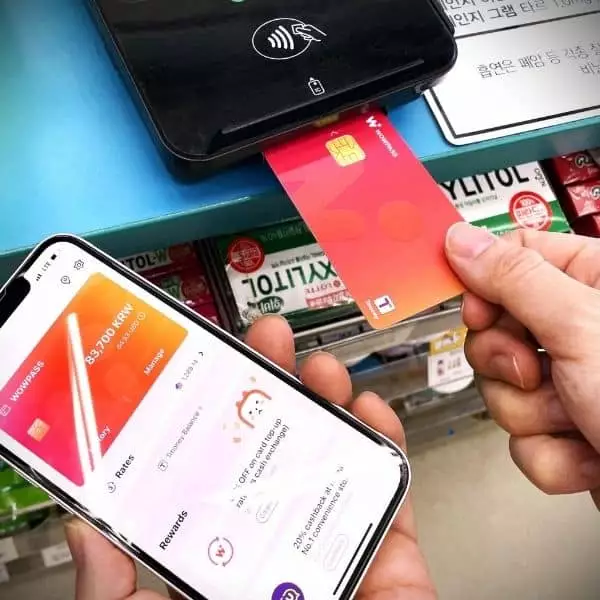
Thanks to the user-friendly WOWPASS app, users can freeze or replace their card, check their spending, add funds, and check exchange rates. Because the WOWPASS isn’t tied to your home bank account, it also reduces the damage by card fraud, in case the worst was to happen.
As well as a regular WOWPASS, you can also reserve the All-In-One Airport Package , which includes the WOWPASS, 10,000 KRW T-Money balance, and a discounted Korean sim card. This is really useful for those who want to get connected and travelling as soon as they arrive in Korea. Get the WOWPASS app for Android or Apple .
Tip : Use the invitation code INMYKOR1 to get cashback on WOWPASS top-ups in foreign currency.
Overseas Travel Cards You Can Use In Korea
Overseas travel cards are another option for spending in Korea and I use them myself to spend money from my UK bank account in Korea, as well as when travelling in other countries. They’re really simple to use and are much cheaper than paying with my foreign card or exchanging money.
Two of the leading travel card companies are Wise and Revolut . I use both of these to pay for things in Korea and have written an article about how to use the Wise card in Korea . You can use them to pay for hotels, food, drinks, transportation, taxis, attractions, and lots more. They’re really useful.
Here’s a summary of the main features of these travel cards:
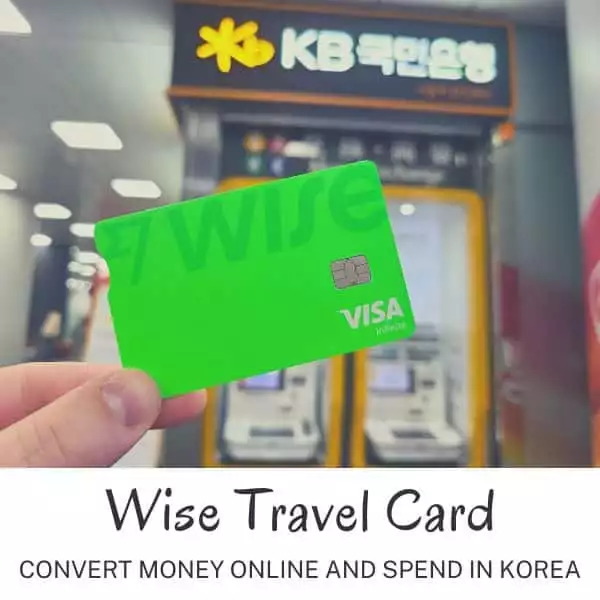
The Wise travel card allows you to easily transfer and convert money from your home bank account into dozens of other currencies and use this money to pay when you’re travelling. You only need to transfer as much as you plan to spend and can easily transfer back anything you haven’t. The exchange rate will be better than your bank or a money exchange offers, too.
A versatile, easy to use app breaks down what you’ve spent by category so you can track your travel spending. You can withdraw cash from ATMs, pay by QR code, use it for Google Pay, and pay by contactless. Even if you lose your card, you can still spend money. It’s also really safe as you can freeze your card, set spending limits, and limit how much money you transfer.
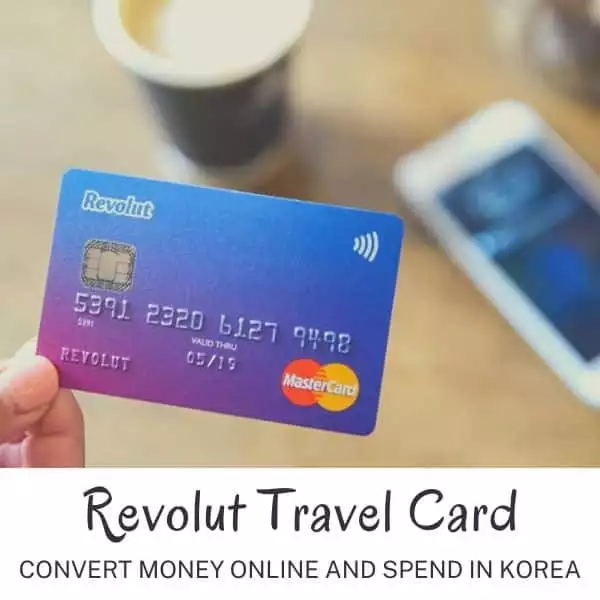
The Revolut travel card can be used in Korea to pay for a wide range of goods and services without expensive fees for spending your home currency overseas. Unlike the Wise travel card, which lets you transfer money into different currencies and then spend in a local currency, such as Korean won, the Revolut travel card lets you pay fee-free with your home currency.
The Revolut travel card comes with an easy to use app that can be used to manage your money both at home and when travelling in Korea. You can check your spending with categories and reports and set budgets for your spending. The Revolut travel card also offers cashback in the US, stock and crypto investments, and the same security features as the Wise travel card.
Can You Use Apple Pay In Korea?
Apple Pay wasn’t previously available in Korea due to a lack of approval by Korea’s financial regulator. However, in February 2023, Apple Pay received approval to begin operating in Korea through the Hyundai Card Co., allowing payments with Apple devices from March 2023 onwards.
The Apple Pay payment system has been available in Korea since March 21st , 2023 and allows Apple Pay members to pay for goods and services at NFC-enabled payment terminals. However, on the launch date of Apple Pay, there were only 70,000 NFC-enabled payment terminals in Korea.
The lack of NFC-enabled payment terminals will be a big issue for Apple Pay users in Korea as there are around 2,900,000 shops in Korea and most won’t accept Apple Pay. Franchises like Starbucks can’t accept Apple Pay and it can’t be used to pay for public transport. You’ll need a T-Money card.
Samsung Pay, which uses MST technology, not NFC, currently dominates the Korean market. NFC-enabled terminals should grow, especially in tourist areas and city-centres from 2023 onwards. This will be good news for Google Pay, which also uses NFC technology and also isn’t in use in Korea yet.
Should You Exchange Money Before Travelling To Korea?
It is not necessary to exchange money into Korean won before travelling to Korea, but it can certainly be useful to have a small amount of money. Exchange rates for Korean won outside Korea may not be as good as within Korea and changing large amounts of cash before you travel isn’t essential.
It might be hard to get Korean won from your local bank or money exchange as it’s not one of the most commonly exchanged currencies. Therefore, you might find exchange rates less favourable and extra fees applied to exchange money. Using travel cards like Wise or Revolut is a better option.
Should You Change Money At Incheon Airport?
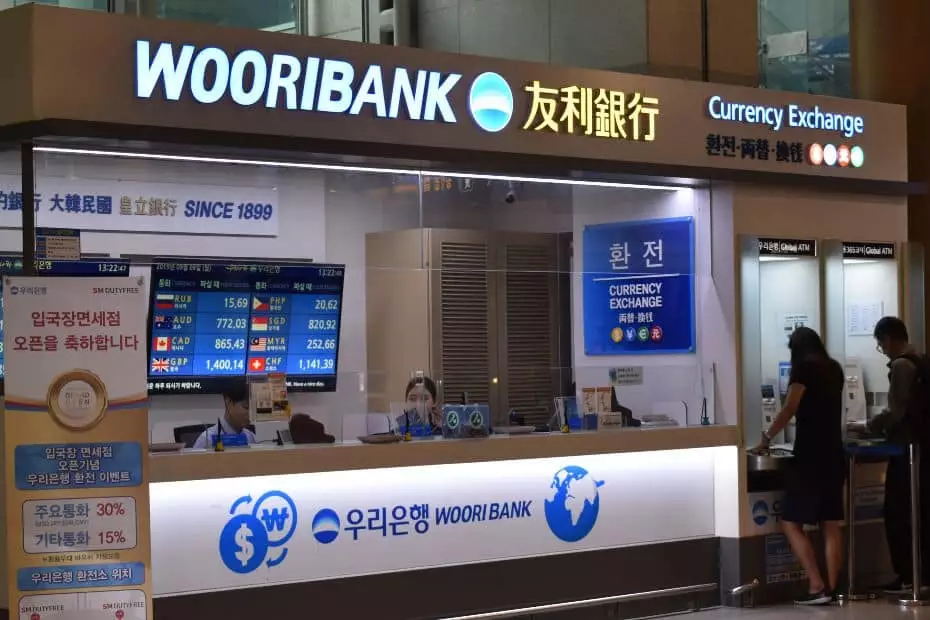
I’ve travelled around the world and always avoid exchanging money at the airport if I can help it. Airports often have the worst rates for money exchange as they know people need to get local cash, there aren’t many other options, and you need at least a bit of money to travel to your hotel.
Incheon Airport is an exception to this rule and I’ve compared travel exchange rates at several times when flying into and out of the airport. The foreign currency exchange rates at Incheon Airport aren’t that bad and are just slightly higher than what you’d find in Seoul. Not the best, but not bad.
There are also Global ATMs at Incheon Airport, so you can withdraw cash here. If you have a Wise or Revolut travel card, you can withdraw up to $200 fee-free from an ATM in Korea. However, Korean banks will charge a withdrawal fee (about 3,000 KRW), which applies to any foreign card used.
Where Can You Exchange Money In Seoul?
Seoul is the first destination for most travellers to Korea and if you want to save money on exchange rate fees, I recommend exchanging money in the capital. There are two main options for exchanging money easily and quickly in Seoul – WOW money exchange machines and money exchanges.
Here’s a summary about the two main ways to exchange money in Seoul:

The cheapest and most convenient option for exchanging money in Seoul is through a WOW money exchange machine. This automated machine gives the best exchange rates and can quickly and easily exchange foreign cash for Korean won. It doesn’t accept card payments, only cash. All you need to do is scan your passport and deposit your cash and it will convert it into Korean won immediately. There are dozens of these machines in Seoul, as well as in other cities like Busan and Daejeon.
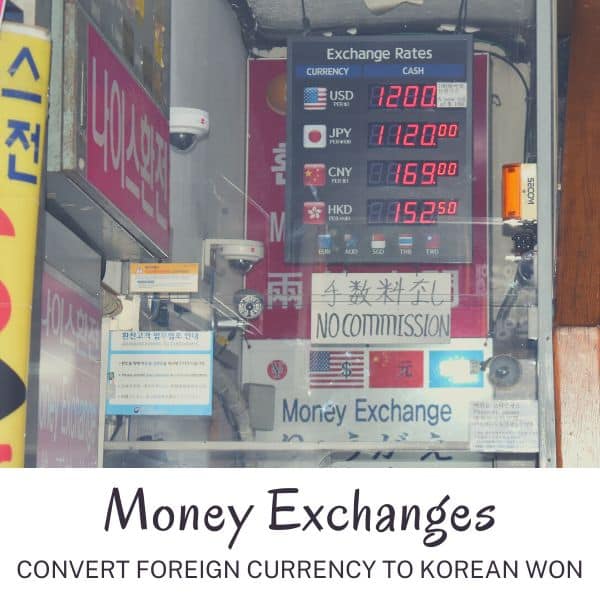
The traditional way to exchange foreign currency in Seoul was through a money exchange. You can find these in Myeongdong, where many tourists stay and visit in Seoul. There are also money exchanges inside banks and in other tourist hotspots. These used to be the best place to exchange money, until the WOW money exchanges were introduced and travel cards like Wise and Revolut made it easier to use a card. If you want to use a money exchange in Seoul, Myeongdong is the best place to do it.
Can You Get Tax Back When Shopping In Korea?
Travellers to Korea can claim tax back on eligible purchases during their trip. This can be done immediately after you purchase an item (if the shop offers the service) or at Incheon Airport or other airports in Korea before you depart.
Instant tax refunds are available at certain locations in Seoul and other big cities. These are usually department stores and large chain stores. You are able to claim tax refunds for goods up to a total value of 2,500,000 KRW (incl. tax). There is a tax refund limit of 500,000 KRW per transaction.
2024 Tax Refund Changes : From 2024, the tax refund limits will be doubled, so you will be able to claim up to 5,000,000 KRW of tax back and claim up to 1,000,000 KRW back per transaction. Source: Korea Herald .
To claim a tax refund you need:
- To show your passport
- To be a tourist in Korea
- To spend between 30,000 to 300,000 KRW in one place
- To be leaving Korea within 3 months
Tax isn’t refundable on all purchases, so be sure to check when shopping. Tax refunds can also be claimed at the airport as long as you have the receipt and the goods you’ve purchased.
Mobile Phones And Internet In Korea
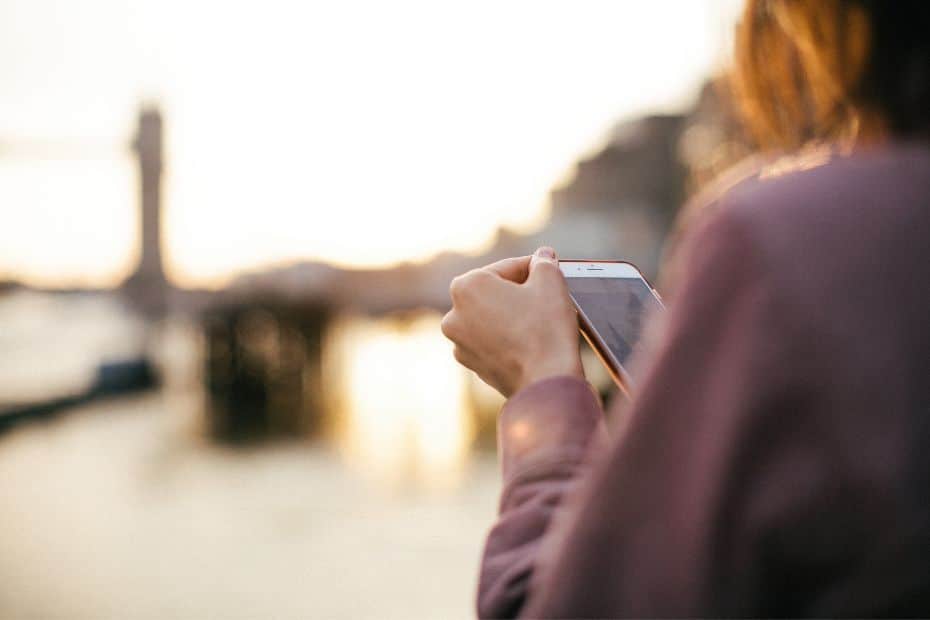
Staying connected to the Internet when visiting Korea is becoming more and more essential these days. Keeping your mobile phone, tablet, or computer connected to the web is useful not only to stay in touch with people back home, but also to help you save money and travel Korea more easily.
There are several options to stay connected in Korea when you travel. The main options for travellers are tourist SIM cards, either physical or eSIMs, portable WiFi routers, and relying on free WiFi provided in public places and hotels. All of these are good options, but there are other considerations, too.
This South Korea travel guide will cover the main differences between Korean SIM cards and portable WiFi routers and which will be most suitable for you. There are also details about why you might want a Korean phone number and which apps to use to help you travel in Korea.
Don’t forget, if you bring your phone or other mobile devices to Korea, you’ll need a travel adapter .
Should You Get A Korean SIM Card Or WiFi Router?
Both a Korean SIM card or portable WiFi router will provide access to Korea’s high-speed mobile networks and keep you connected to the Internet. They provide a secure internet connection, but do so in a different way and with different available features. Find out about the best Korean SIM card for tourists in this SK SIM card review .
Here are the main features of Korean SIM cards and WiFi routers:
Costs : SIM cards and WiFi routers are similarly priced when using them for a two week period, but they are charged in different ways. SIM cards are fixed-price and can be bought for set time periods, whereas WiFi routers are charged daily. WiFi routers are cheaper in the short-term.
Ease of use : If you purchase or pre-order a SIM card or portable WiFi router at Incheon Airport, which I highly recommend, the staff will install or setup everything for you. Once they’re activated, it’s very simple to use either one. Cancelling and returning them at the airport is also easy for both.
Here are the reasons you should get a Korean SIM card or portable WiFi router in Korea:
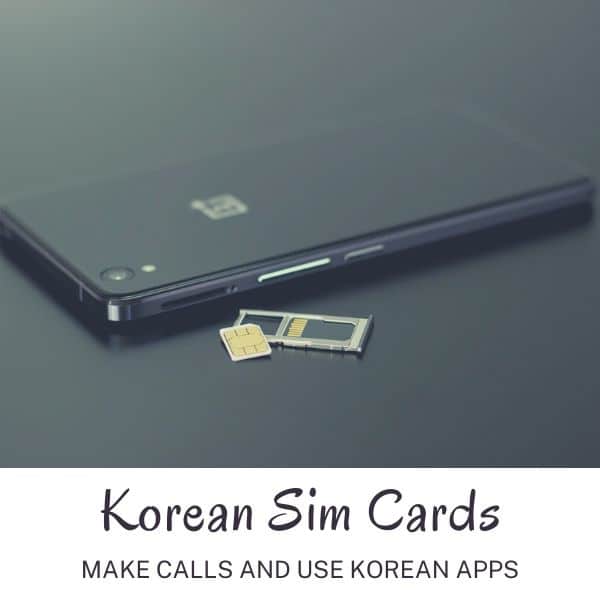
You should get a Korean SIM card when visiting Korea to get a Korean phone number. The benefits of having a Korean phone number are mainly to make calls and use Korean apps. SIM cards are also useful if you want a secure connection everywhere you go and plan to make calls or send texts. When you have a SIM card, you can tether your network connection to connect other devices you own. Korean phone coverage is amazing and you’ll get service everywhere. SIM cards don’t require you to carry any extra devices and are cheaper over the long-run than WiFi routers.

You should get a portable WiFi router if you’re travelling in a group or as a family as you can connect multiple devices to one router. This is much cheaper than getting separate SIM cards for all travellers, but also requires people stay close together. WiFi routers are charged per day and if you need additional days, they’ll be automatically added and charged when you return the router. This means you’ll never have to worry about your service suddenly ending. The main downside to using a WiFi router is the lack of Korean phone number, but that might not be an issue if you don’t need one.
Where Can You Get Korean SIM Cards Or WiFi Routers?
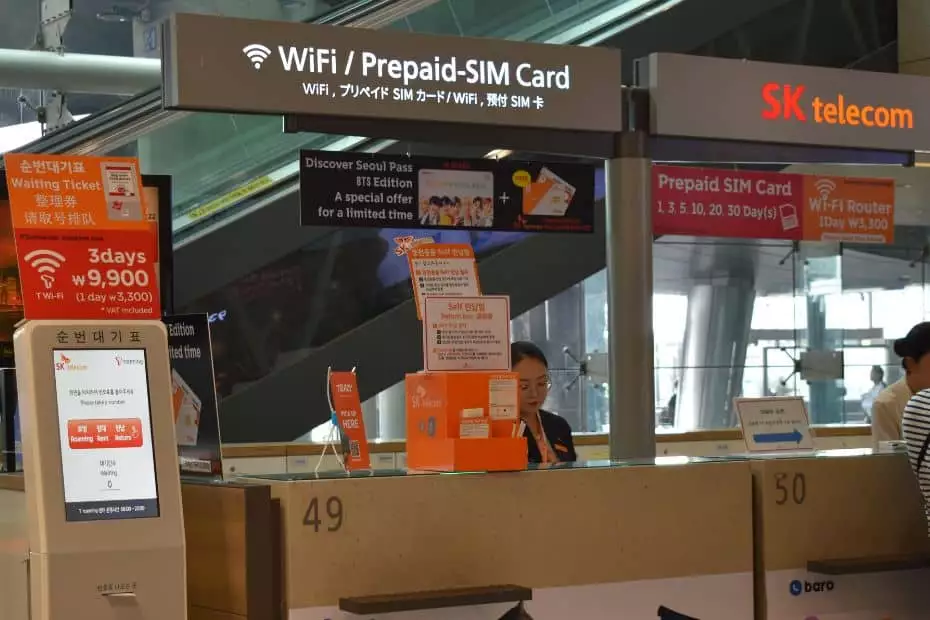
You can get a Korean SIM card or portable WiFi router in several ways. The easiest way, and one that I definitely recommend, is to purchase online through a tour company such as Klook , Viator , or Get Your Guide , and get a SIM card at Incheon Airport or other entry point into Korea when you arrive..
The main reason I recommend this method is that you can guarantee you will get a SIM card or router and it will be waiting for you when you arrive. The collection desks at Incheon Airport are open 24-hours a day and they will help you install everything you need to get started immediately.
You can also get SIM cards and WiFi routers when you arrive at the airport and you should find similar rates. However, you won’t be guaranteed a device and you will need to pay in person. When you book online, you can pay in your home currency and avoid those issues.
I don’t recommend getting a SIM card or WiFi router in Seoul or other cities. It is possible, but you may run into language issues and find less tourist-friendly options. Phone shops outside the airport usually cater to Koreans, not tourists. Airport rentals are the easiest options for visitors to Korea.
What’s The Benefit Of A Korean Phone Number For Tourists?
There are two main benefits of having a Korean phone number for tourists. The first benefit is the ability to call people when you’re in Korea. This can be useful for making reservations, keeping in touch with people, and in case of emergencies.
The second benefit of having a Korean phone number is the ability to use Korean apps . It isn’t mandatory to have a Korean phone number to use Korean apps, but most won’t let you use their services unless you sign up with a phone number. Using Korean apps makes travelling easier.
A phone number is like a form of identity in Korea, which is why you need your passport to register a SIM card. Once you have a phone number, many more services are available, including food delivery, ordering taxis, making reservations (such as for the Busan Sky Capsule ), and online messaging.
What Apps Do I Need For Travelling In Korea?
If you have a Korean phone number, you can use Korean apps. Even without a Korean number, you can still download these apps and use some of their services. Full features typically require a phone number though. There are other, non-Korean apps that will help you when travelling, too.
Here are the most useful apps to use when travelling in Korea:
Papago : This is the essential translation tool for visiting Korea. Papago’s translation services are the best and you can use the app to take pictures and translate Korean signs, menus, and other pictures.
Naver Maps : To find your way around Korea, use Naver Maps or Kakao Maps. Their systems are much more accurate in Korea than Google Maps. Use them to plan travel routes and transport times.
Kakao Taxi : Uber and Grab don’t really exist in Korea, so if you plan to take a taxi, you’ll need to use Kakao Taxi. Simple to use and takes the hassle out of trying to use Korean to give directions.
Kakao Talk : This is Korea’s most popular messaging app and is useful for keeping in touch with Korean friends, contacting businesses in Korea, and even calling abroad.
Seoul Subway : Use this app to travel around Seoul’s underground more easily. Plan your route, see when the next train is due to arrive, check connections, and see how late the trains run.
Korail Talk : This app allows you to book trains on Korea’s high-speed train network and regular train routes. This app has an English setting, so you can check train times and prices easily.
Coupang Eats : This is a food-delivery app that allows you to order almost anything edible and get it sent directly to you. You can even order convenience store goods. Useful for rainy days.
Mango Plate : Find restaurants in Korea with this app and discover the best places to go out and eat. You can also see restaurant details and get directions in Naver Maps and Kakao Maps.
WOWPASS : To use the WOWPASS to pay like a local in Korea and for T-Money functions, you’ll need the WOWPASS app. This will let you check your balances and spending and control your card.
Wise & Revolut : As mentioned in this South Korea travel guide, using a travel card to pay for items in Korea will save you money when you travel. If you use Wise or Revolut, make sure you have the app.
Klook : This company provides some of the best tours in Korea and if you make bookings through their website, you can easily manage them with the Klook app.
Intercity Bus by T-Money : This app is great for booking buses between cities in Korea. There is an English version that allows you to book tickets, check times, and see available seats.
These apps should be available on both Android and Apple. Some of these apps might default to Korean, but you should be able to change them to English in the side menu.
Is There Free WiFi In Korea?
Travellers in Korea have the option to not get a sim card or portable WiFi but still stay connected. This is thanks to the excellent Free Wifi in Korea that is provided in public transport, government buildings, restaurants, cafes, and many other places. This is mostly in the cities, however.
Hotels also provide free WiFi in most cities in Korea. If you plan to rely on free WiFi, I recommend using the hotel’s WiFi to plan routes, check opening times, and research places you want to visit. Take screenshots of these details so you can see them later, even if you don’t have Internet access.
The only warning I would give about relying on free WiFi when travelling in Korea is the increased use of mobile-dependent apps and passes in Korea. Physical tickets and passes are being phased out in favour of digital versions, which often need an active Internet connection to use.
I’ve noticed in recent years that services that impact travellers have moved to digital versions. This includes the T-Money card, Discover Seoul Pass, train and coach tickets, attraction tickets and event tickets. I believe that having a reliable net connection will be a must for most travellers soon.
Using Public Transport In Korea In 2024
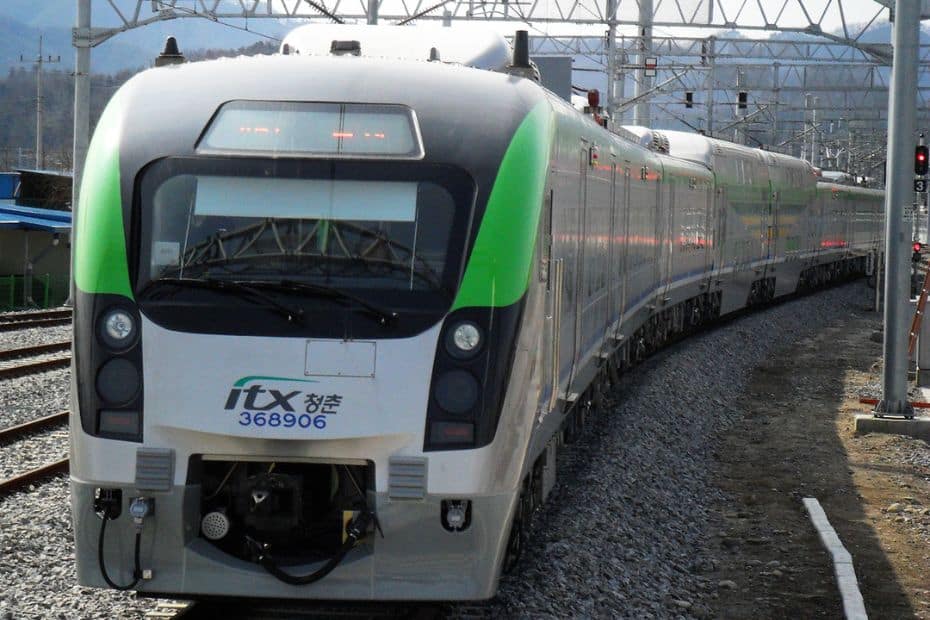
This section of the South Korea travel guide looks at Korea’s public transport system and how to navigate it as a traveller. Korea has arguably one of the best public transport systems in the world. It’s cheap, well-connected, frequent, and runs on time. Other countries could learn a lot from Korea.
The great news for tourists is that Korea’s public transport is very foreigner friendly and information is provided in English in almost all places, as well as Chinese and Japanese in popular areas such as Seoul and Busan. Travelling by public transport in Korea is cheap, easy, and convenient.
How Much Does Public Transport Cost In Korea?
The cost of public transportation in Korea is fixed, no matter what day you purchase tickets on. If you buy one month in advance, or last minute, you will pay the same price for the journey. Journeys within a city are a single price and not dependent on how far you travel, unless you leave the city limits.
All journeys are single fares and you can’t buy return tickets. You will need to buy two singles when you want to travel somewhere and back again. The cost of a single fare depends on how you pay for the ticket – by cash or with a transportation card.
Here are the costs for public transport in Korea by payment method, type and user:
Please note : The cost of subway rides is set to rise to 1,400 / 1,500 KRW in October 2023. These prices will be adjusted when this occurs.
How Do You Pay For Public Transport In Korea?
The cost of public transport in Korea depends on whether you pay with a transportation card, such as T-Money, a Korea Tour Card , or Cashbee, or in cash. This applies to both subways and buses. If you use a transportation card, you should add credit to it, then touch it to the card reader at the subway or bus to pay.
To use cash to buy a subway ticket, you will need to buy a ticket at the station. For buses, you should pay the correct fare to the driver when boarding the bus. However, since 2022, buses across Korea have started to end the use of cash and some will insist on payment by transportation card only.
In the future, bus payments are expected to become simpler with fares deducted via bluetooth-enabled phones that have the relevant app downloaded. This system has already been in place in Gyeonggi Province since March 2022 and is likely to spread to more bus routes in the future.
I highly recommend getting a T-Money card when you travel to Korea. You can use it to pay for public transportation (at a discounted rate), and it will work almost everywhere in Korea. It can also be used to buy goods from shops, cafes, and restaurants. It’s really convenient and a must-have for Korea.
Using T-Money To Pay For Public Transport In Korea
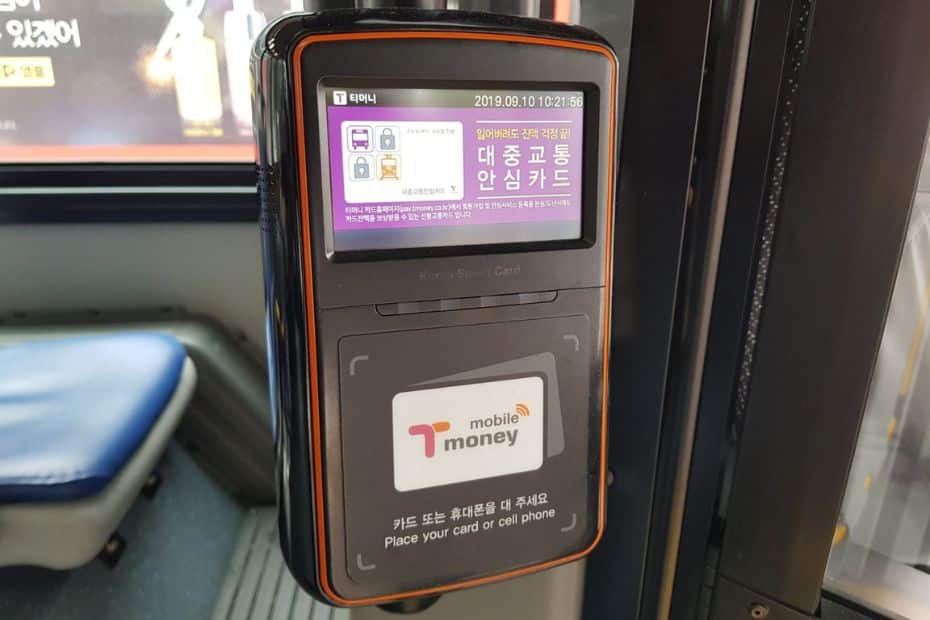
A T-Money card is the essential transportation card for using public transport in Korea. You can purchase one at Incheon Airport, subway and train stations, and convenience stores across Korea. The card can be used in many places. It never expires, so you can use it on different trips, too.
Here is how to use a T-Money card in Korea:
- Purchase a T-Money card (2,500 KRW)
- Add money to the card (cash top-up only)
- Enter the bus or subway station
- Tap the T-Money card against the card reader (see pic above)
- Tap the T-Money card again when you get off (for transfer discount)
- Recharge when necessary
I recommend adding about 10,000 KRW for each day you plan to travel in Korea. That means about 70,000 KRW for a week. You can add more money later if necessary. You can top up at convenience stores and transport stations. There is also an app version of T-Money, but the card version is better.
How Do You Use Trains In Korea?
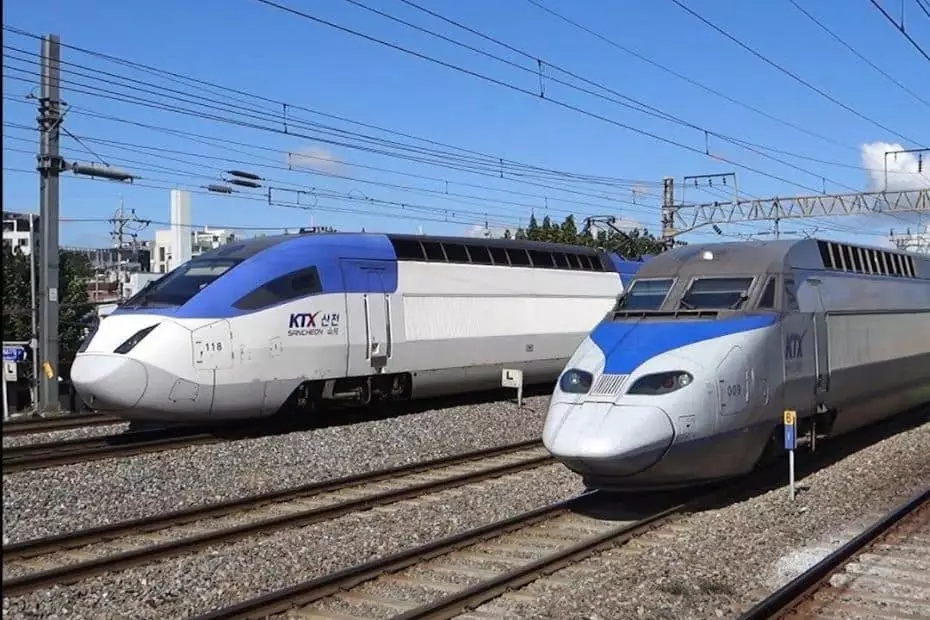
The train network in Korea is divided into high-speed trains (KTX) and regular trains (ITX and Mugunghwa). The KTX network connects major cities in Korea and is convenient for travelling around Korea quickly and cheaply. The carriages are comfortable and come with modern facilities.
Unlike other forms of public transport in Korea, transportation cards like T-Money aren’t accepted for trains. You will need to buy a train ticket to travel and all tickets are single tickets. The price to buy a ticket doesn’t change and you can refund a ticket up to the last minute for only a small fee.
You can book tickets within 30 days of travel through the official Korail website or app, or at a train station in Korea. Unfortunately, buying a train ticket online in Korea can be difficult as Korean payment systems often reject cards issued outside of Korea. Buying in person is recommended.
How To Book Korean Rail Tickets Outside Of Korea
If you want to book Korean train tickets outside of Korea, you can do it online with Trip.com , which is Korail’s exclusive overseas distributor. The price is slightly higher (about 5%) than the price you’ll pay in Korea, but it will allow you to book tickets online and secure your seat in advance.
If you plan to travel on the main KTX route between Seoul and Busan, I highly recommend booking tickets in advance. There are three types of tickets available – first class, regular, and standing. The journey takes 2:34 and you don’t want to be standing for all that time. Book ahead for comfort.
Is The Korea Rail Pass Worth The Price?
The Korea Rail Pass is a good option for tourists who plan to travel long distances by train in Korea, such as between Seoul and Busan or Seoul and Jeonju. The pass has two main options – flexible and consecutive. These mean you can use it any time (flexible) or within consecutive days.
The flexible pass is more expensive, but offers more freedom to travel around Korea over a longer period. You can use the pass to only cover big journeys and won’t feel pressured to use it again until you’re ready. The extra cost is more than worth the inconvenience of having to rush travel plans.
Will you save money with the Korea Rail Pass? That depends on your travel plans, how often you’ll be travelling by train, and how many people are travelling. If there are 2 people or more, purchase the group saver pass and save 10,000 KRW each on the pass. Group tours make it better value.
The Korea Rail Pass does not allow you to ride on the subway for free, which would make it better value. It can also be complicated to reserve tickets online using the pass and buying tickets in the regular way is more convenient. Overall, the pass isn’t essential, but might save you money.
How Do You Use Taxis In Korea?
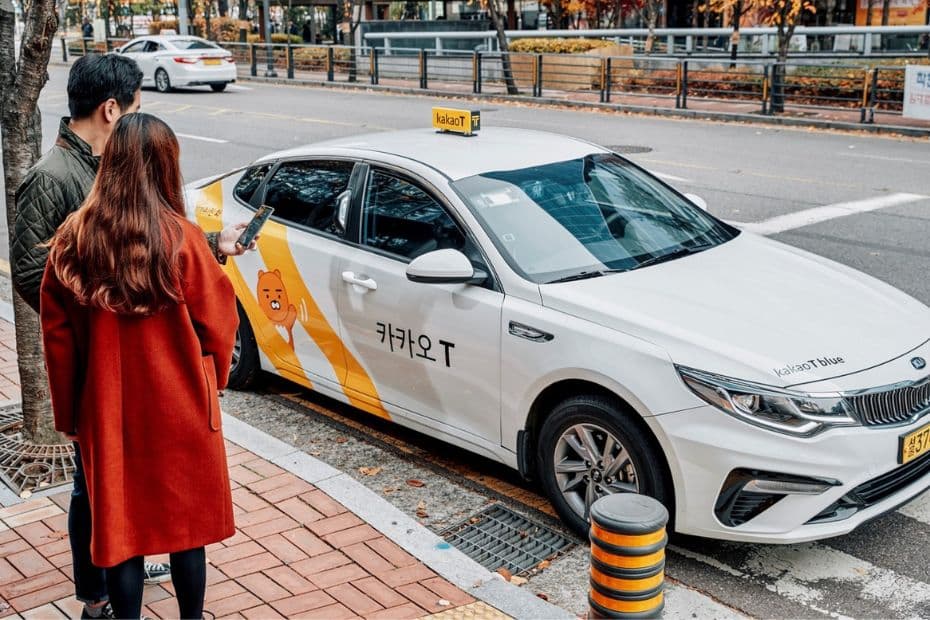
Taxis in Korea can be hailed from the street or called directly to you using apps such as Kakao Taxi . Companies like Uber and Grab don’t have a large presence in Korea and operate the same way as Kakao Taxi, by helping you find an official taxi driver. Private taxi services aren’t common.
The big issue facing the Korean taxi industry in 2024 is the lack of taxi drivers. This can make it hard to get a taxi, even when using an app like Kakao Taxi. Late night taxis are particularly difficult to find. Read this guide about how to use Kakao Taxi to help you learn how to call a taxi in Korea.
Taxi prices in Korea are reasonable, especially compared to countries like Japan and the UK. Although base taxi fares rose in 2023 to 4,800 KRW, the price is still low and relatively affordable to travel by taxi if you need to. It’s a good option if there are no direct public transport routes.
Taking a taxi to and from Incheon Airport is a convenient option if you have a lot of bags or you are travelling in a group. For solo travellers or couples, I would recommend using public transport or a limo bus, as it’s significantly cheaper and won’t take much longer than a taxi.
How Do You Use Intercity Buses In Korea?
Intercity buses in Korea operate in a similar way to trains. You can only book tickets within 30 days of travel and can only buy single tickets. Book tickets online through websites such as T-Money Bus or Bustago , through app versions of these sites, or at the bus terminal you will depart from.
You can’t walk onto intercity buses without a ticket, nor can you use transportation cards like T-Money to pay on entry. You will need to pay for and receive your ticket (physical or digital) before you can enter the bus. Ticket machines usually (but not always) have English options for buying tickets.
There are no return bus tickets in Korea and you can only buy tickets from your point of departure, unless you book online or via an app. If you’re travelling from Seoul to Gangneung, for example, you will need to buy a ticket in Seoul and then a ticket in Gangneung. You can’t buy both in Seoul.
How Can You Hire A Car In Korea?
Renting a car is a great way to see parts of Korea that aren’t covered by the train network and gives you the freedom to explore at your leisure. If you plan to travel to Jeju Island, which doesn’t have any trains, hiring a car will be a lot more convenient and is almost a must if you plan to travel inland.
Car rental in Korea isn’t that expensive and you can rent a modern car for as little as 75,000 KRW per day. I recommend booking car rentals through Klook , they will deal with the Korean car rental companies and reserve a car for you. This is easier than trying to do it in Korean.
To hire a car in Korea, you will need:
- Driver’s license (must have had it for at least 1 or 2 years)
- International Driving Permit (in some cases)
- Credit card (in the name of the main driver)
- Valid photo ID (passport)
- Printed voucher for rental (if booked online)
Here’s some more information about the International Driving Permit and rules you should follow when driving in Korea, such as the legal requirement to wear seatbelts, booster seats for under 6s, and not using your phone while driving. Be sure to read up on local rules before driving in Korea.
Best Places To Visit In Korea In 2024

The next few sections of this South Korea travel guide will help you figure out what you want to do and see on your travels. This first section will give you a brief introduction to the best places to visit in Korea, including the major cities, tourist hotspots, and unique areas that you’re sure to love.
Here are the best places to visit in Korea:

Seoul: Korea’s Capital
Seoul is Korea’s vibrant, bustling capital and truly a must-see for any first-time visitor to Korea. There is so much to see and do in Seoul that you could easily spend a week or more exploring the city and not get bored. You will find yourself falling in love with the city for different reasons. Maybe it’s the friendly people, the deliciously cheap street eats, the way things just work, the hidden murals on old buildings down side streets, the feeling of safety even in a big city, or the historic sights creeping out from modern buildings. Seoul includes everything Korea has to offer, plus a lot more you won’t find elsewhere.
What To See In Seoul
Here are 10 great places to visit in Seoul:
- Gyeongbokgung Palace
- Bukchon Hanok Village
- Myeongdong Street Markets
- Lotte World Tower & Seokchon Lake
- Dongdaemun Design Plaza & Markets
- Yeouido Han River Park & Cruise
- Secret Garden (Changdeokgung Palace)
- N Seoul Tower & Namsan Mountain
- COEX Mall & Bongeunsa Temple
- Bukhansan National Park
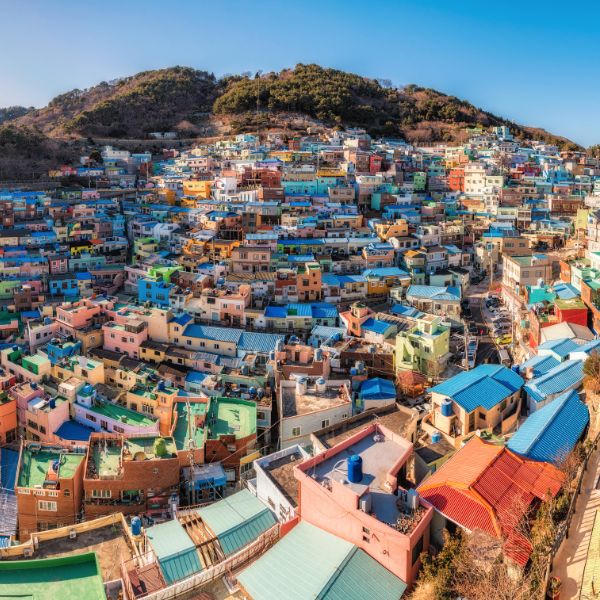
Busan: Big Coastal City
While Seoul is a showcase of all things Korean, Busan is unashamedly its own city and a celebration of coastal life and local culture. Busan is famous for fresh seafood, traditional markets, great beaches, big festivals, movies, temples, and places to explore the coast. Beaches are popular places to visit in Busan, along with cliff-side walkways with views over the ocean. Central Busan is a lively spot with lots of entertainment and markets to enjoy, including a famous fish market where you can choose your own lunch and then eat it. Busan is spread out and deserves several days to explore it properly.
What To See In Busan
Here are 10 great places to visit in Busan:
- Haeundae Beach & Beach Train
- Jagalchi Fish Market
- Gamcheon Culture Village
- Haedong Yonggungsa Temple
- Songdo Beach & Cable Car
- Huinnyeoul Culture Village
- BIFF Square & Centum City Mall
- Oryukdo Skywalk & Coastal Paths
- Lotte World Busan
- Busan X The Sky Observatory
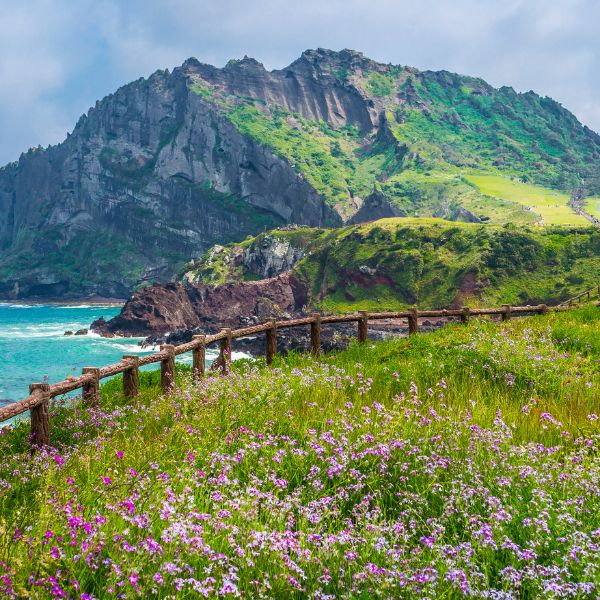
Jeju Island: Natural Wonder
Jeju Island is a gorgeous island created from a volcano rising out of the ocean 2 million years ago. Today it’s one of the New 7 Natural Wonders of Nature and deservedly so. The lush island is packed with pine trees, tangerines, rolling hills and fields, cacti, and jet black volcanic rock tumbled all around. You can relax on a beach, go horse riding, explore ancient lava tubes, scuba dive, climb to the volcano’s peak, chill in a beach-side cafe, explore traditional markets, learn about local culture, and lots more. The island has two main cities, but the attractions are spread out along the coast.
What to See On Jeju Island
Here are 10 great places to visit on Jeju Island:
- Hallasan Mountain (Volcano)
- Seongsan Ilchulbong Sunrise Peak
- Hyeopjae & Hamdeok Beaches
- Seogwipo Maeil Olle Market
- Jeju Folk Village
- Yakcheonsa Coastal Buddhist Temple
- Jungmun Beach & Jusangjeolli Cliff
- O’Sulloc Green Tea Museum
- Cheonjiyeon & Jeongbang Waterfalls
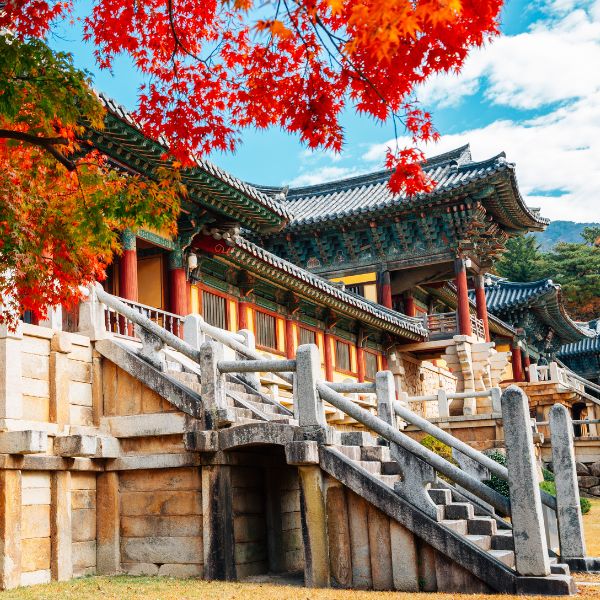
Gyeongju: Historic Capital
Gyeongju , the former capital of the Shilla Kingdom in ancient Korea, is a true treasure trove of UNESCO World Heritage sites, as well as local culture, history, and natural beauty. Described as an outdoor museum, you can see many of the big attractions in the Gyeongju Historic Area, including the 1,400 year Cheomseongdae Observatory . There’s so much to see in Gyeongju outside this area though, including the impressive Bulguksa Temple, one of the best Buddhist temples in Korea. There’s also the Bomun Lake Tourist District, a dreamy sight during cherry blossom season.
What To See In Gyeongju
Here are 10 great places to visit in Gyeongju:
- Bulguksa Temple & Seokguram Shrine
- Cheomseongdae Observatory
- Donggung Palace & Wolji Pond
- Yangdong Folk Village
- Hwangnidangil Hanok Street
- Daereungwon Tomb Complex
- Bomun Lake Tourist Complex
- Woljeonggyo Bridge
- Gyeongju National Museum
- Gyochon Traditional Hanok Village
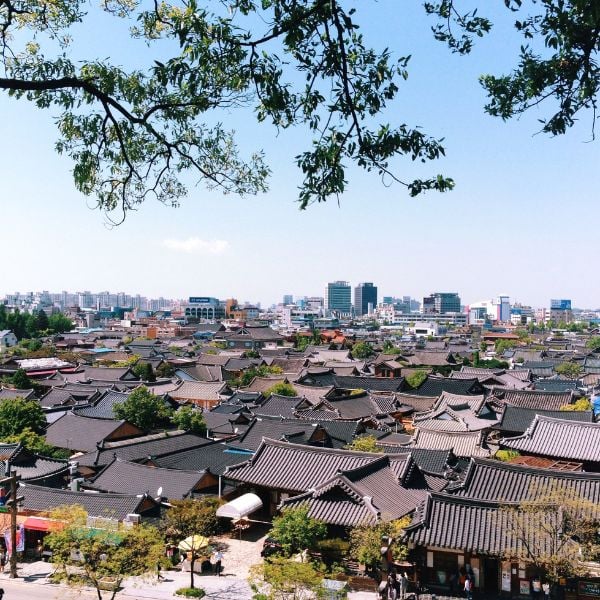
Jeonju: Traditional Views & Food
Jeonju is the perfect destination for a day trip from Seoul and has most of its main attractions in one area of the city. What can you see in Jeonju? The main attraction is the gigantic Jeonju Hanok Village , featuring more than 700 traditional hanok houses. You can dress up in Korean hanbok, dine on Jeonju’s famous bibimbap in an old restaurant, and see how life in Korea used to be. There are plenty of other sights nearby, including a traditional market, pretty river, and the rather unusual Jaman Mural Village.
What To See In Jeonju
Here are 5 great places to visit in Jeonju:
- Jeonju Hanok Village
- Jeongdong Catholic Church
- Gyeonggijeon Shrine
- Nambu Traditional Market
- Jaman Mural Village

Suwon: Fortress City
Suwon is another city close to Seoul that you can visit in a day and see many interesting and unique sights. The main draw of Suwon is the Hwaseong Fortress and the fortress walls, which are still intact and run for 6km around the city. Inside this fortress you’ll find lots of museums, historic buildings, parks, and activities, such as archery. There are often cultural festivals in this area, too. Surprisingly, Suwon is the best place to get KFC (Korean Fried Chicken). There’s a whole street dedicated to making it.
What to See In Suwon
Here are 5 great places to visit in Suwon:
- Hwaseong Fortress & Fortress Walls
- Hwaseong Haenggung & Haengridan Gil
- Fried Chicken Street
- Korean Folk Village
- Gwanggyo Lake Park
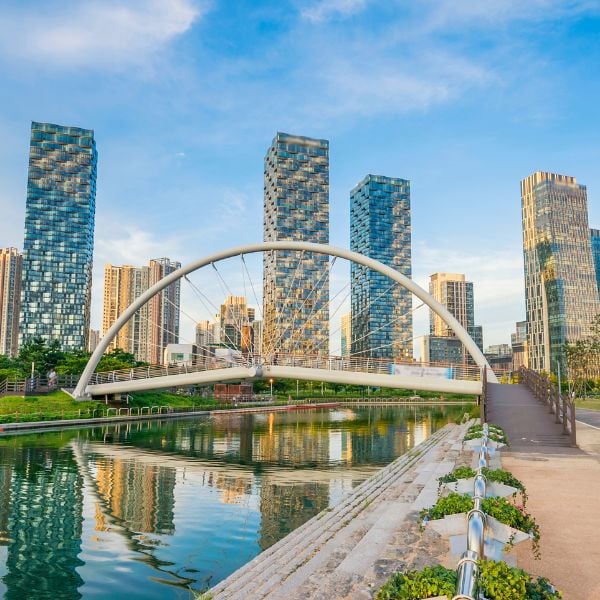
Incheon: Modern City With Islands
Incheon is one of Korea’s largest cities, but is sadly ignored as it’s right next to Seoul and most people think it’s just there for the airport. That’s not true at all and there’s plenty to see and do in Incheon. Described as a futuristic city, Incheon is at the front of Korea’s push to become an ultra-modern country and nowhere shows that more than Songdo Central Park . The traditional side of Incheon is also worth exploring, including the Chinatown, which is home to Korea’s most popular student food – jajangmyeon . If you want to explore a lesser-seen side of Korea, check out the islands near Incheon to see ancient fortresses, temples, and charming sights.
What to See In Incheon
Here are 5 great places to visit in Incheon:
- Songdo Central Park
- Incheon Chinatown
- Wolmido Island
- Incheon Grand Park
- Ganghwa Jeondeungsa Temple
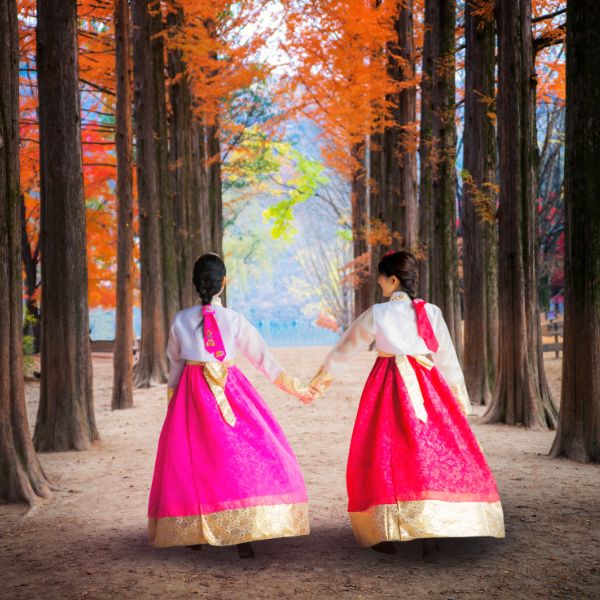
Gapyeong County: Tourists Treats
Gapyeong County is a rural part of Korea just outside Seoul that is one of the most popular day trip destinations for visitors and locals alike. Inside Gapyeong County is the lovely Garden of Morning Calm , a beautiful sculpted garden that showcases traditional Korean buildings set amongst thousands of different plants and trees. There’s also Nami Island , an ever-popular attraction that has long tree-lined streets to explore, woodland animals, bike paths, and even a zip line to the island. You can also visit Petite France, a recreation of a French village, Gapyeong Rail Bike Park, and Cheongpyeong Lake, and many other attractions in Gapyeong.
What To See In Gapyeong
Here are 5 great places to visit in Gapyeong:
- Nami Island
- Garden of Morning Calm
- Petite France
- Gapyeong Rail Bike Park
- Cheongpyeong Lake

North-East Coast: Amazing Beaches
The north-east coastal region of Korea, spreading between Sokcho and Gangneung , features some of Korea’s most popular summer seaside resorts and beaches. The wide, sandy beaches are perfect for water sports, working on your tan, and sitting at night listening to local musicians perform BTS covers and their own tunes. Sokcho deserves at least two days to explore, more if you plan to visit nearby Seoraksan National Park , one of Korea’s best places to see autumn foliage. Gangneung is where to see cherry blossoms in spring, sit and relax at a seaside cafe at Gangneung Coffee Street , and enjoy beach life.
What To See On The North-East
Here are 5 great places in north-east Korea:
- Sokcho Beach
- Gangneung Beach
- Seoraksan National Park
- Yangyang Surfyy Beach
- Gangneung Coffee Street
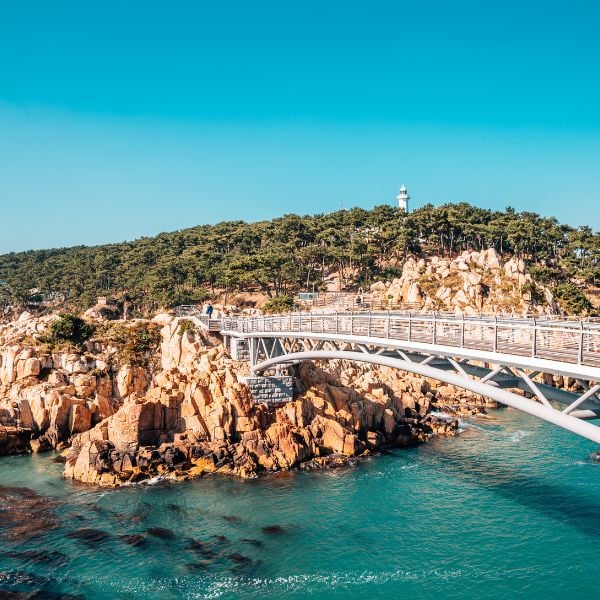
East Coast: Harbour Cities
Ulsan and Pohang are two industrial cities that don’t get enough attention, but are ideal for a weekend visit once you’ve explored other top sights. These coastal cities both have good beaches, coastal walks, and green spots, including a pretty bamboo forest in Ulsan. In Pohang, you can see the dizzying Space Walk , which looks out over the city and ocean. There’s also a former Japanese district with old buildings, and the famous Homigot Sunrise Square where you can watch the first sunrise of the year. Ulsan is famous for whaling and visitors should check out the charming Jangsaengpo Whale Museum and Daewangam Park.
What To See On The East Coast
Here are 5 great places on Korea’s East Coast:
- Yeongildae Beach & Space Walk
- Ilsan Beach & Daewangam Park
- Jangsaengpo Whale Museum
- Homigot Sunrise Square
- Taehwagang National Garden
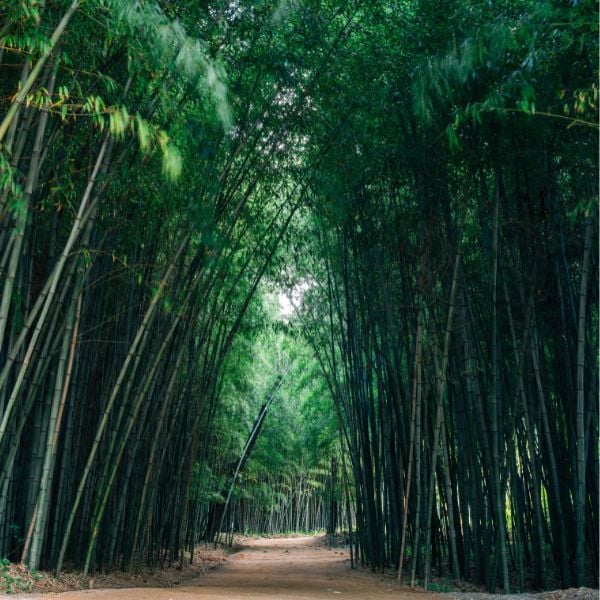
South-West: Iconic Rural Destinations
South-west Korea is a long way from most travellers’ typical route, but this area is worth visiting if you have time. Gwangju , one of Korea’s largest cities, is hidden away down here and surrounded by natural beauty, including the Juknokwon Bamboo Forest , Boseong Green Tea Fields, and Suncheon Bay Nature Reserve. If you plan to hire a car , these spots will show you a completely different side to Korea. Gwangju, too, which is a fun city and the birthplace of Korean democracy. Hidden in the far corner of Korea is Mokpo, a lovely coastal city that has a new cable car carrying you over the ocean.
What to See In The South-West
Here are 5 great places in south-west Korea:
- Damyang Juknokwon Bamboo Forest
- Boseong Green Tea Fields
- Gwangju Culture Park & Penguin Village
- Suncheon Bay Nature Reserve
- Mokpo Marine Cable Car

South Coast Islands: Summer Getaways
Best explored during the hot summer months and early autumn, the south coast islands in Korea, which span from Busan to Mokpo, are where Koreans spend their summer holidays. The most popular destinations here are Geoje, Tongyeong, Yeosu, Namhae, and Goheung and each offers winding coastal paths, beaches, natural beauty, and fun summer activities. The best way to see these islands is with a rented car or by bike, riding around the coast visiting a few different beaches and attractions. Don’t expect too many cultural sights, instead you’ll find luges, gardens, water sports, and lots of fun.
What to See On The South Coast
Here are 5 great places on Korea’s South Coast:
- Dolsan Park & Cable Car
- Namhae Geumsan Boriam Hermitage
- Hallyeohaesang National Park
- Oedo-Botania Botanical Garden
- Skyline Luge Tongyeong
As you can see, there are many great places to visit in Korea. Korea is truly a country of undiscovered wonders that people aren’t aware of. Seoul is an incredible place to visit, but there’s so much more to see. That’s why I try to include lesser-known places in this South Korea travel guide.
The list above covers a lot of the most popular or tour-worthy destinations in Korea, but there are still more places I could recommend, such as Andong (home to the mask dance festival), Gunsan (port town with a retro vibe), Daegu (big city with historic sights), Daejeon , and many more.
Besides cities and towns in Korea, there are also 18 national parks to explore, thousands of mountains, Buddhist temples, beaches, bike routes, campsites, and so much more. I’ll include a few of each of these in the next few sections of this South Korea travel guide.
Best Day Tours From Seoul In 2024
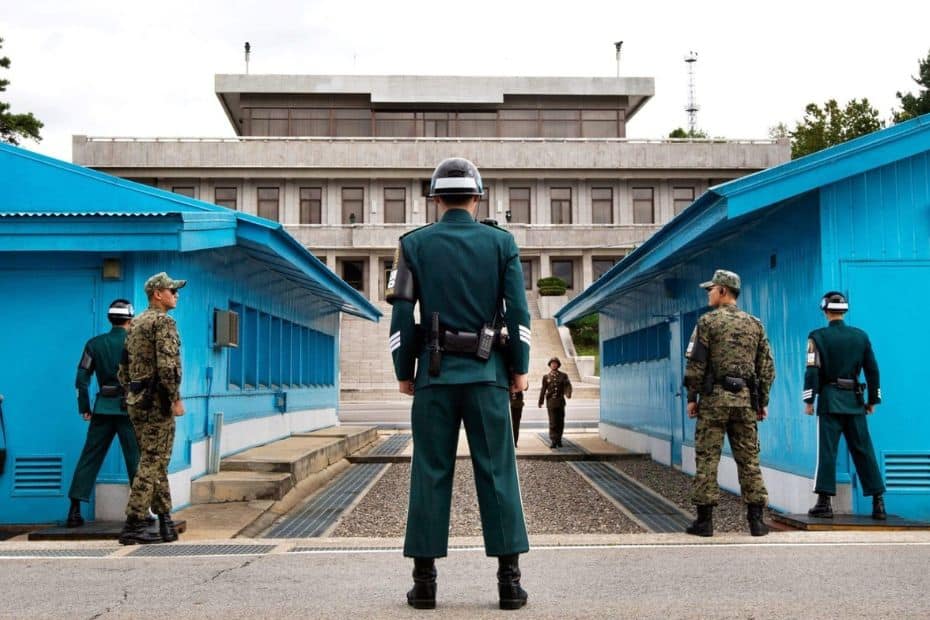
Taking a day tour while you’re staying in Seoul is a great way to see more of Korea’s top attractions without the hassle of moving hotels to somewhere new. The 10 day tours from Seoul below can all be done in a day or less and can even be combined with other activities in the same day.
I don’t want to include every day tour available in this South Korea travel guide as there isn’t enough room to talk about them all. If you want to find more day tours, I recommend looking at the options available through tour providers such as Klook , Viator , and Get Your Guide .
Please note : There are many day tours from Seoul and they come with various prices. I recommend avoiding the very cheapest as these will often waste your time by taking you to some overpriced gift shop area and pressuring you to buy souvenirs or rushing you through too many attractions.
Here are 10 great day tours from Seoul:
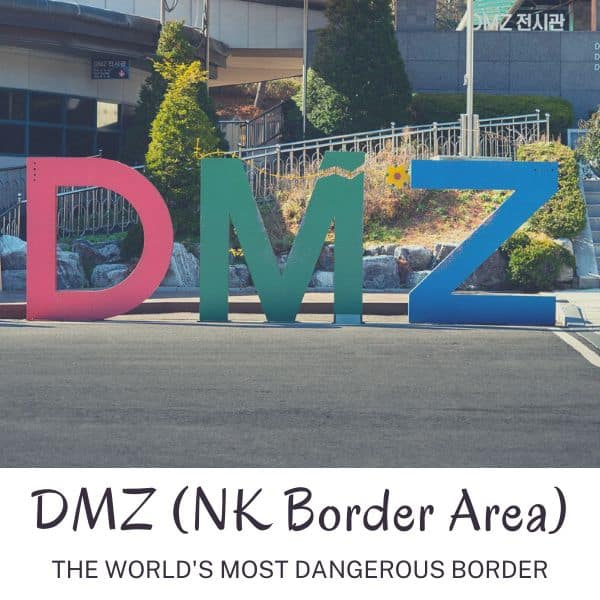
Why Visit The DMZ
The DMZ, the demilitarised zone between North & South Korea is a truly unique place to visit when you’re in Korea. There are several different locations to see in this area, each reflecting the bitter struggle between the two Korea’s in the ongoing Korean War. Some of the highlights are the 3rd Tunnel, Dora Observatory, Dorasan Station, Gamaksan Suspension Bridge, and the Imjingak Park. There’s also the Panmunjom Truce Village where you can walk into North Korea, but this is currently closed. Tours are required to travel to certain parts of the DMZ.
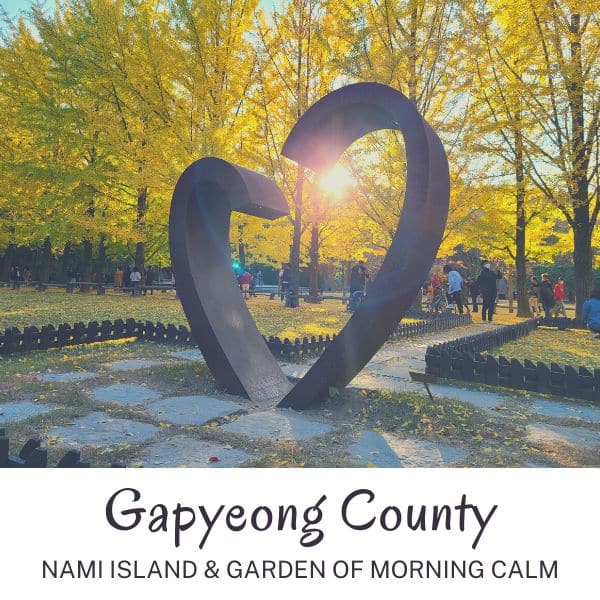
Why Visit Gapyeong County
Gapyeong County is home to Nami Island, the Garden of Morning Calm, Petite France, Gapyeong Rail Bike Park, and several other fun attractions. Nami Island and the Garden of Morning Calm are the most popular and can both be visited in a day. You can witness beautiful scenes at these destinations, especially during cherry blossom season (April) and autumn foliage season (October). Tours from Seoul to Gapyeong County are convenient and can take you to multiple places in one day without the hassle of buses and finding your own way.

Why Visit Hwaseong Fortress
Hwaseong Fortress and its fortress walls offer a unique chance to see what life was like in Korea 200 years ago. Not only can you walk the full length of the walls around the city, you can also try archery and other traditional activities in the fortress grounds. There are many museums, fortress buildings, and exhibitions showing how people lived in this period. You can also enjoy the beautiful ponds and streams that run through the palace with traditional Korean restaurants and cafes looking out over these areas.
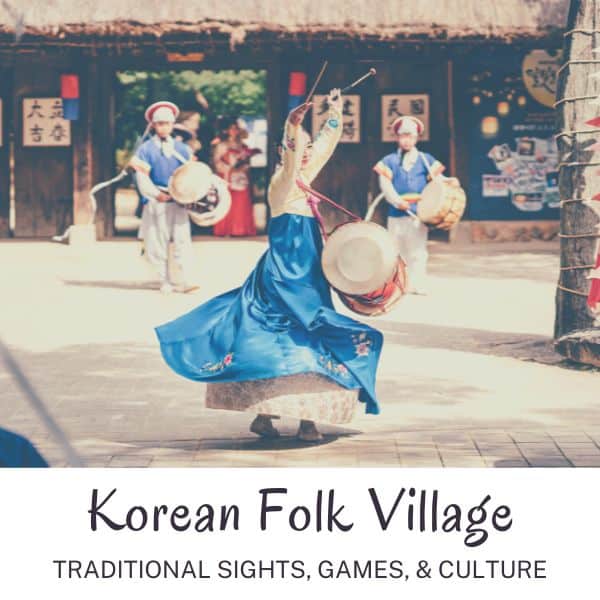
Why Visit Korean Folk Village
Discover traditional Korean life at the Korean Folk Village in Yongin during a day trip from Seoul. Walk through dozens of recreated farm buildings, government offices, academies, shops, smiths, schools, and other traditional buildings from Korea’s past to get a feel for how people lived at this time. Actors dressed in traditional Joseon-era costumes bring the scenes to life. You can try fun activities, such as mask carving, horse riding, and archery. Witness exciting festivals and cultural performances, too.
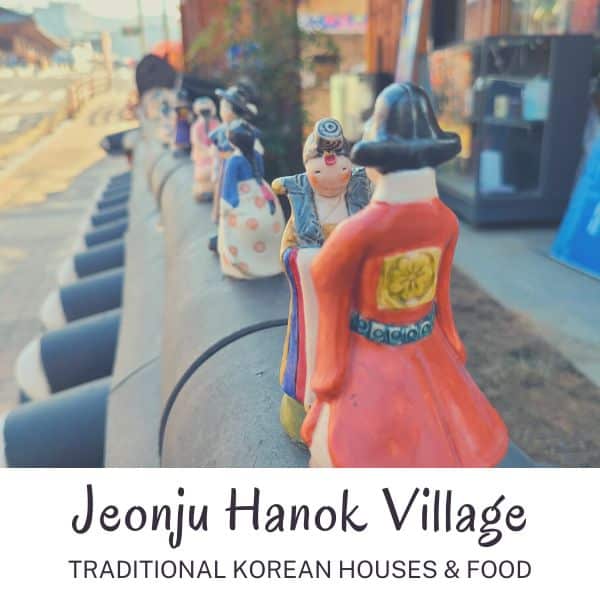
Why Visit Jeonju Hanok Village
A day trip to the Jeonju Hanok Village in Jeonju is a great way to experience various traditional Korean cultural activities in a beautiful setting. This sprawling hanok village has over 700 traditional buildings for you to explore, dine in, or even stay in. Make sure you rent hanbok in Jeonju so you look like Korean royalty and make memorable photos during your trip. Whilst you’re in Jeonju Hanok Village, you can try local delights such as Jeonju bibimbap and PNB chocopies. Also check out the traditional Nambu Market and Jeongdong Catholic Church.

Why Visit Alpaca World
When you travel to Korea, you may not think about seeing alpacas, which are from an entirely different continent. But Korea’s love of all things cute means that these furry friends have become very popular in Korea and have their own theme park a few hours from Seoul. There are dozens of cuddly alpacas to see, feed, and play with at Alpaca World , as well as hundreds of other cute critters such as ponies, rabbits, deer, goats, fennec foxes, and more. There are 17 separate areas to explore in Alpaca World and it’ll provide hours of fun for the whole family.
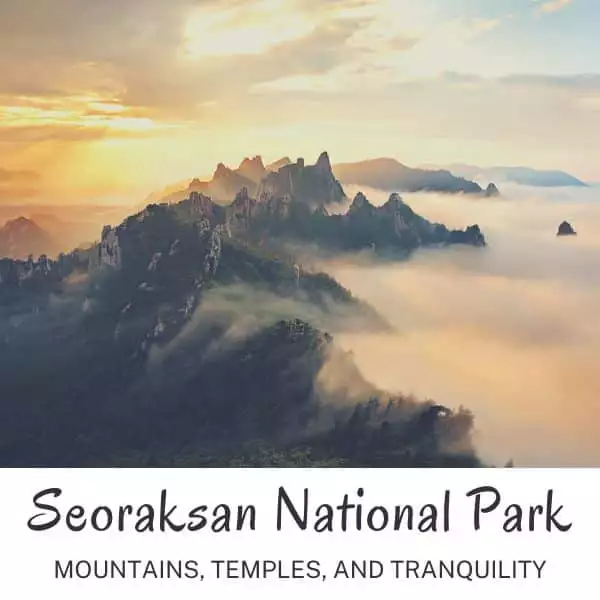
Why Visit Seoraksan
Seoraksan National Park on Korea’s east coast is a great day trip from Seoul for those who want to see mountain peaks, leafy valleys, stony rivers, and a gigantic Buddha. Even if you’re not a keen hiker, you can explore lots of the park’s valley pathways easily, or reach the top thanks to the convenient cable car. See the sights from the observatory and check out the small temple in the clouds. Make sure you try haemul pajeon (seafood pancake) and makgeolli (rice wine). It’s the traditional meal Koreans enjoy after hiking.

Why Visit Everland
Everland is Korea’s biggest theme park and is packed with attractions for everyone to enjoy. Thrill seekers will love the rollercoasters, such as T Express (the world’s 4th steepest rollercoaster) and many more exciting rides. Check out the Zootopia section to see wild animals and wild rides, or the Plantopia section for floral beauty, romantic walkways, and seasonal delights. There are plenty of attractions, cultural performances, entertainments, and seasonal events to keep you amused all day long.

Why Visit Danyang
A great way to see Korea’s countryside is with a day trip to Danyang to enjoy the rush of sailing over valleys and beside mountains while tandem paragliding. Feel the wind in your face and the sensation of riding the air currents as you pass over the many delightful views of Danyang. You can enjoy other activities in this area, such as the Mancheonha Skywalk , a clifftop lookout with incredible views, riding an alpine coaster, and zooming along a zip line. The perfect day tour from Seoul for thrill seekers.
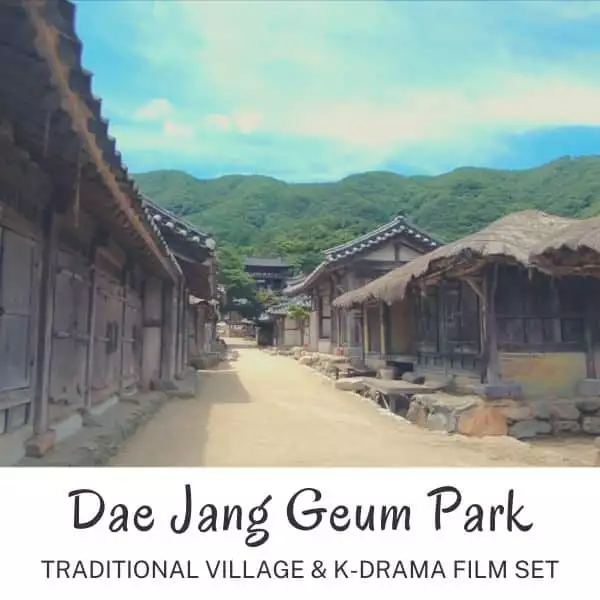
Why Visit Dae Jang Geum Park
Fans of Korean period dramas and movies will love a day trip to Dae Jang Geum Park in Yongin. This is the largest historical drama filming set in Korea and was used to film MBC productions such as ‘Wind in the Palace’ and ‘The Great Queen Seondeok’, as well as K-Pop videos including Daechwita by Suga from BTS. If you’re lucky, you may see filming going on here. But even if you don’t, it’s a fun place for those who want to learn more about Korea’s history and take some cool pictures in a real movie set.
I’ve linked to tours provided by reliable tour companies in Korea. If you would rather book a tour through a local guide, contact Jerry Heng or Andrew Chung Hanbyul . They’re freelance guides with years of experience offering tours in Korea and both offer amazing service.
These places are accessible by public transport, but may take much longer than a tour would do, wasting your precious time. Check out my guide for getting to Nami Island to help you navigate Gapyeong County. For other destinations, I would recommend a tour – it’s more practical.
Best Sights To See In Korea In 2024
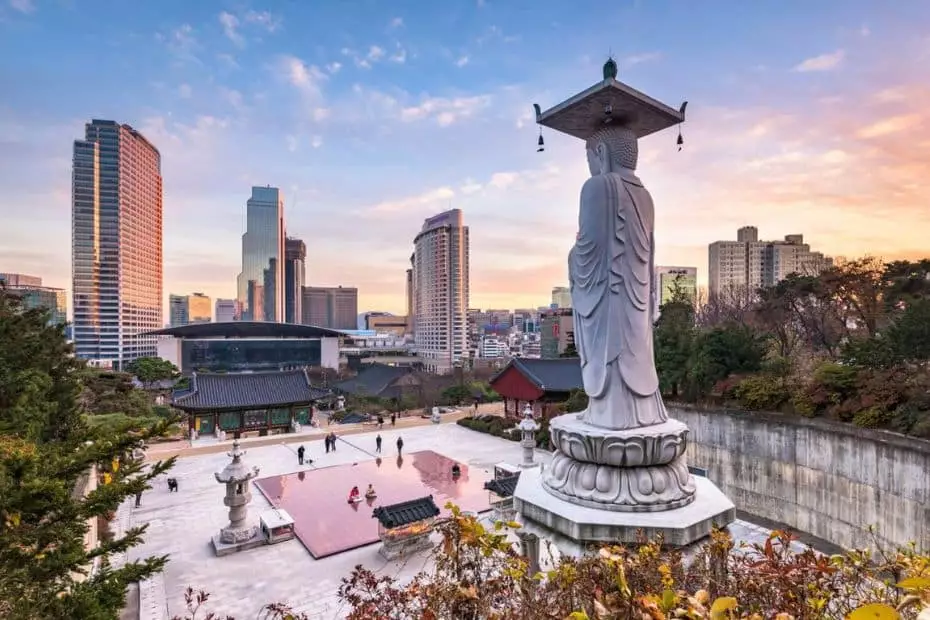
South Korea truly has something for everyone. There’s so much I want to include in this South Korea travel guide, which is why this section is full of different sights to see and explore. However, to keep things short and simple, I’ll just list them, not give full details about each one.
Whether you’re travelling to Korea to learn about Korean culture or history, to see Korea’s impressive landmarks, to enjoy family fun attractions, to hop from cafe to cafe, to immerse yourself in nature, or simply to eat and shop, then you’ll definitely find something for you in this section.
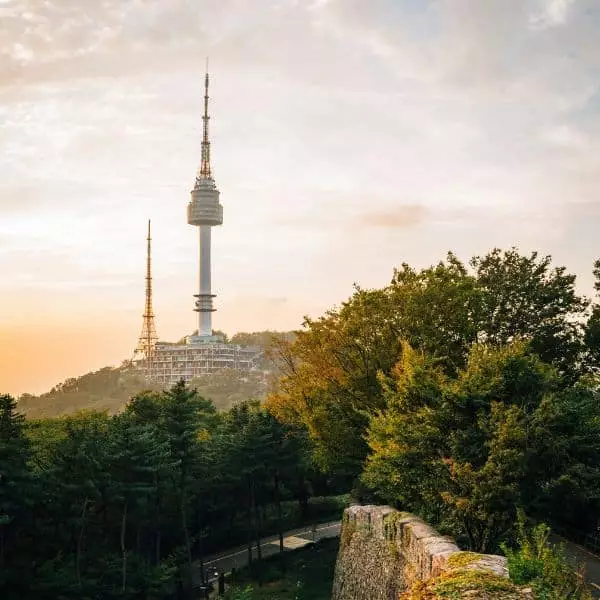
Famous Landmarks In Korea
Landmarks and iconic buildings are often top of a traveller’s bucket list for Korea as they provide great photo opportunities, showcase the best of the country, and offer fantastic views. Seoul has many top landmarks, but you can see plenty of other sights outside of the capital, too.
Here are 10 famous landmarks in Korea:
- Lotte World Tower (Seoul)
- N Seoul Tower (Seoul)
- Dongdaemun Design Plaza (Seoul)
- Cheonggyecheon Stream (Seoul)
- DMZ Area (near Seoul)
- Nami Island (Gapyeong County)
- Gamcheon Culture Village (Busan)
- Seongsan Ilchulbong (Jeju)
- Homigot Sunrise Square (Pohang)
- Banwol Purple Island (West Coast)
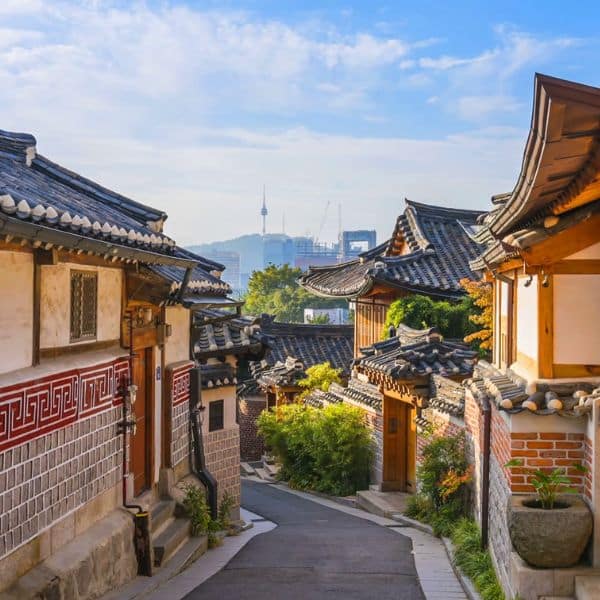
Historic Sights In Korea
Discover life in the Joseon period and before in Korea’s many captivating historic sights, including royal palaces, Buddhist temples, fortresses, and hanok villages. There are so many amazing historic sights to see in Korea, with each city having something to see.
Here are 10 historic sights in Korea:
- Bukchon Hanok Village (Seoul)
- Gyeongbokgung Palace (Seoul)
- The Secret Garden (Seoul)
- Seoul Fortress Walls (Seoul)
- Hwaseong Fortress (Suwon)
- Bulguksa Temple (Gyeongju)
- Gyeongju Historic Area (Gyeongju)
- Jeonju Hanok Village (Jeonju)
- Haedong Yonggungsa Temple (Busan)
- Andong Hahoe Village (Andong)
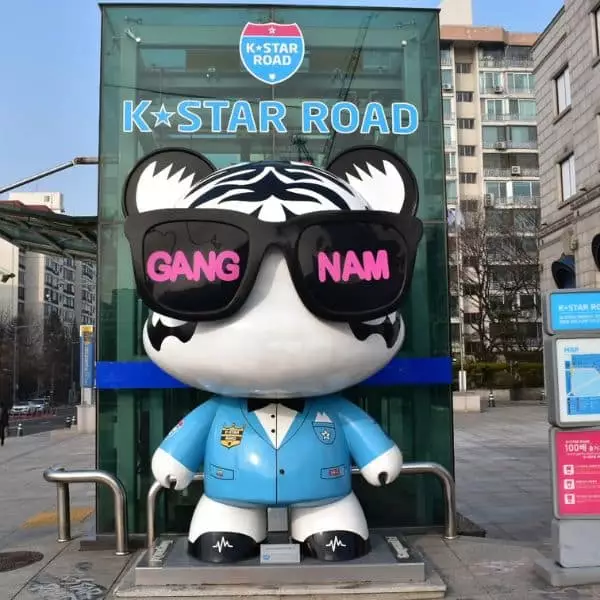
Korean Modern Cultural Sights
Fans of BTS, K-Dramas, Korean movies, and modern Korean culture in general have a lot to see and do in Korea. As well as famous filming locations across the country, these modern cultural sights will entertain, inform, and provide great destinations to visit.
Here are 10 modern cultural sights in Korea:
- Hallyu K Star Road (Seoul)
- K-Style Hub (Seoul)
- Hongik Uni. Station Area (Seoul)
- COEX Artium (Seoul)
- Asia Culture Centre (Gwangju)
- BIFF Square (Busan)
- Dae Jang Geum Park (Yongin)
- Sunshine Studio (Nonsan)
- Kim Gwang-Seok Street (Daegu)
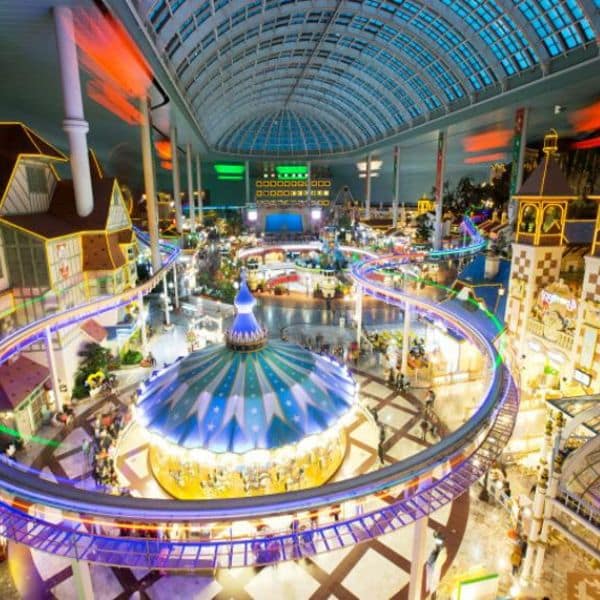
Family Fun Attractions In Korea
Families travelling to Korea have plenty of things to see and do and ways to enjoy spending time together. There’s no Disneyworld or Universal Studios in Korea, but there are plenty of great alternatives, as well as places for children to explore, learn, and discover.
Here are 10 family fun attractions in Korea:
- Lotte World Adventure (Seoul)
- Everland Theme Park (Yongin)
- Seoul Grand Park & Zoo (Seoul)
- Alive Museum & Dynamic Maze (Seoul)
- Seoul Children’s Museum (Seoul)
- Zoolung Zoolung (Seoul)
- Sea Life Busan Aquarium (Busan)
- Jeju Dinosaur Island (Jeju Island)
- Alpaca World (Gangwon Province)
- Skyline Luge & Lotte World (Busan)
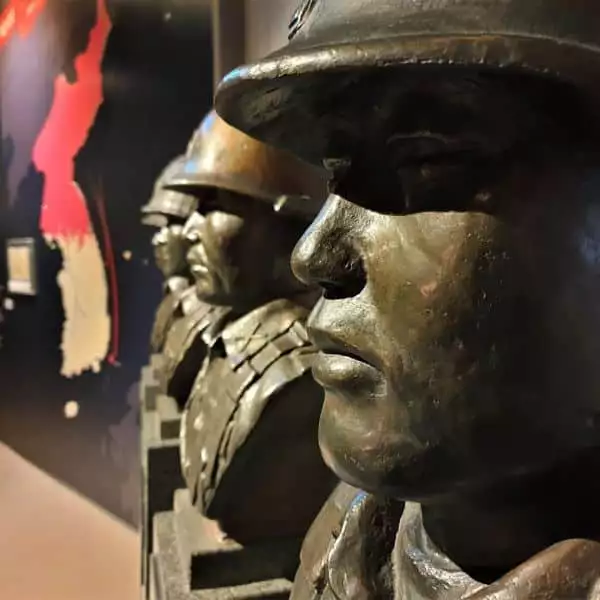
Korean Museums & Galleries
Travellers to Korea who want to learn about Korea’s history, culture, and art will love Korea’s impressive museums and galleries. These are great places to visit when the weather is bad and you might be surprised at how much there is to learn about Korea’s past.
Here are 10 museums & galleries in Korea:
- National Museum of Korea (Seoul)
- War Memorial of Korea (Seoul)
- Seoul Museum of Art (Seoul)
- Seoul Museum of History (Seoul)
- Seodaemun Prison Museum (Seoul)
- Museum Kimchikan (Seoul)
- National Folk Museum of Korea (Seoul)
- Gyeongju National Museum (Gyeongju)
- National Maritime Museum (Busan)
- Daegu Art Museum (Daegu)
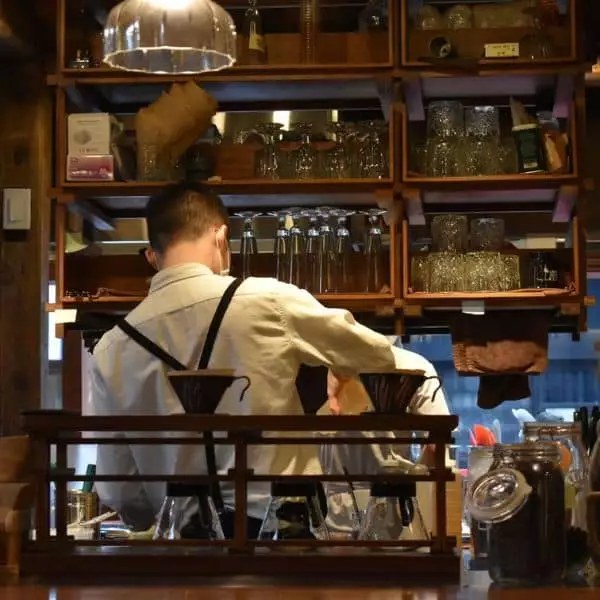
Cafe Areas In Korea
When you need a break from travelling in Korea, visit one of these cosy cafe areas and take time to relax and recharge. Although Korea was traditionally a tea drinking country, cafes are now everywhere and you’ll find photogenic cafes everywhere these days.
Here are 10 cafe areas to visit in Korea:
- Ikseondong Hanok Village (Seoul)
- Gyeongui Line Parks (Seoul)
- Samcheondong Cafe Street (Seoul)
- Sinsa-dong / Garosugil Road (Seoul)
- Jukjeon Cafe Street (Seoul)
- Jeonpo Cafe Street (Busan)
- Haeridangil (Busan)
- Hwangnidangil (Gyeongju)
- Hwaseong Haenggung Area (Suwon)
- Gangneung Coffee Street (Gangneung)
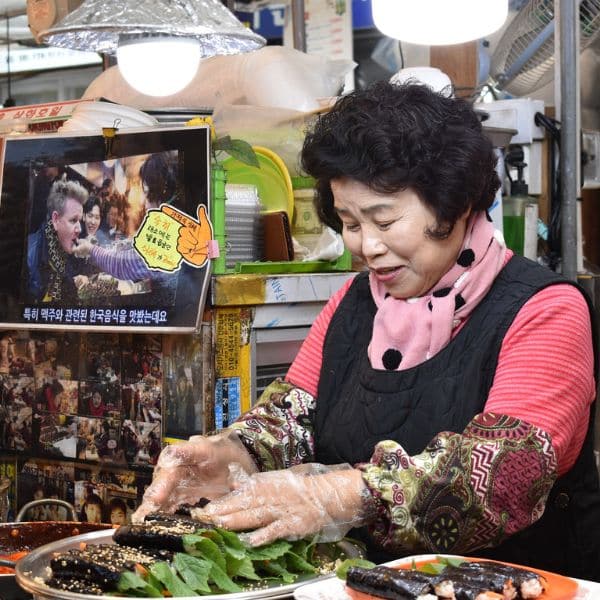
Korean Markets & Malls
If you want the best selection of street food, souvenirs, and bargain shopping options, be sure to visit Korea’s many traditional markets. It’s a cultural experience itself. Korea also has some of the world’s largest malls with a wide variety of Korean and international goods.
Here are 10 markets & malls in Korea:
- Gwangjang Market (Seoul)
- Dongaemun Market (Seoul)
- Hongdae Shopping Street (Seoul)
- Starfield COEX Mall (Seoul)
- Jagalchi Fish Market (Busan)
- Seomyeon Underground Mall (Busan)
- Centum City Mall (Busan)
- Seogwipo Maeil Olle Market (Jeju)
- Nambu Market (Jeonju)
- Paju Premium Outlets (Paju)
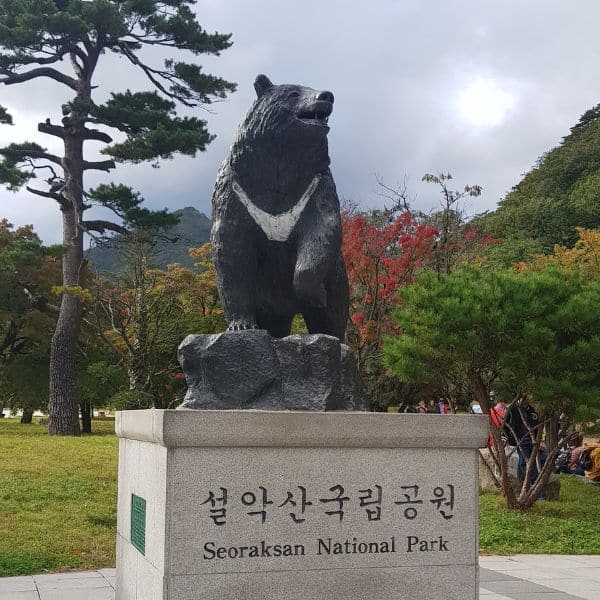
Korean Natural Wonders
Korea is a country covered in mountains, waterfalls, valleys, rice terraces, and beautiful natural sights. Make time to visit some of these natural wonders when you visit Korea and you’ll be amazed at the incredible views you can find. The national parks are truly breathtaking.
Here are 10 natural wonders to see in Korea:
- Hallasan Mountain (Jeju)
- Jirisan National Park (Southern Korea)
- Seoraksan National Park (Gyeonggi)
- Garden of Morning Calm (Gapyeong)
- Juknokwon Bamboo Forest (Damyang)
- Boseong Green Tea Fields (Boseong)
- Udo Island (Jeju Island)
- Seongsan Ilchulbong Sunrise Peak (Jeju)
- Hyeopjae Beach (Jeju)
- Suncheon Bay National Park (Suncheon)
These 100 ideas are just the tip of the iceberg for what you can enjoy when travelling to Korea. There’s so much more to discover and I recommend you add some time to your travel plans to explore without a plan. Sometimes the best travel memories come from unexpected discoveries.
Best Activities To Try In Korea In 2024
Often the most memorable moments when travelling come from the experiences we have, not just the places we visit. Visiting a palace is interesting, but visiting a palace while dressed in traditional Korean hanbok , pretending you’re Joseon-era royalty with your friends or family is much more fun.
This section of the South Korea travel guide offers 10 fun activities you can try when you visit Korea. These will give you a good introduction to Korean culture, food, history, and nature. If you want more ideas, check out my list of 50 unique Korean experiences you can only do in Korea.
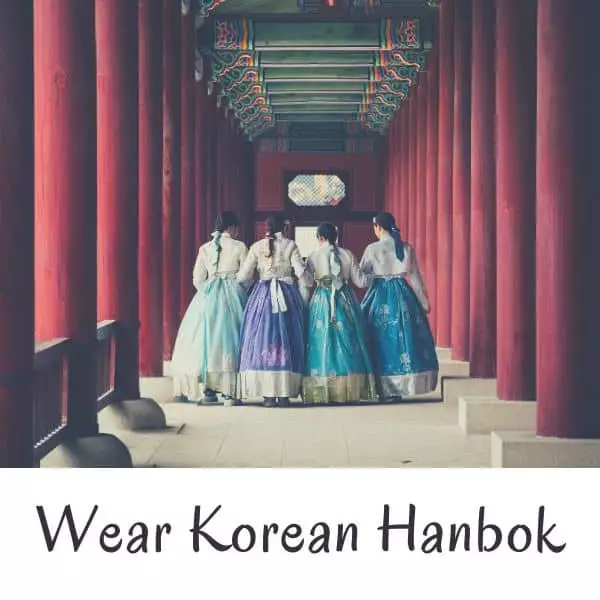
One of the top experiences to try in Korea has to be wearing Korean hanbok. It is available for all members of the family (even pets) and you can rent hanbok near most palaces or hanok villages. The hanbok easily fit over your regular clothes and come in a variety of colourful or traditional designs. You can get hair styling, accessories, and even have a hanbok photoshoot . Rentals can be as short as one hour or up to a full day.

Travellers to Korea can’t say they’ve truly tried Korean cuisine until they’ve eaten Korean street food from a market stall or street vendor. There are many types of Korean street food to sample in Korea, such as savoury snacks like tteokbokki and eomuk , to sweet treats like hotteok and bungeo-ppang . Korean street food is cheap and delicious. It’s usually not that healthy, but always leaves you feeling great. Give it a try.
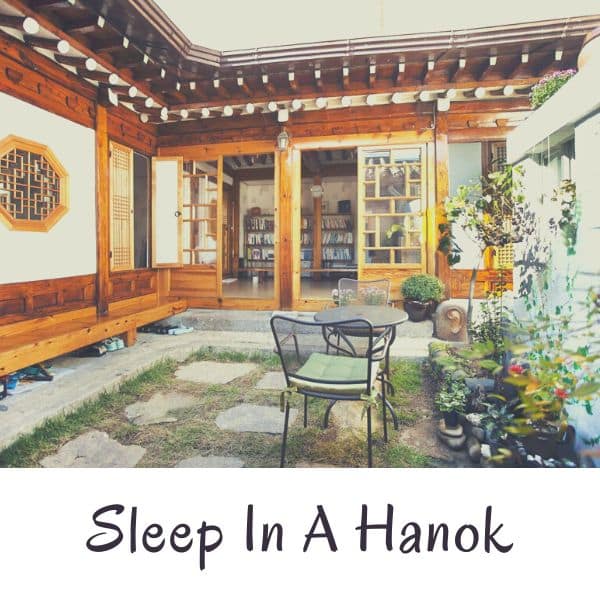
Experience life as a Korean would have in the Joseon-era with a night in a traditional hanok house. A hanok stay is very different from sleeping in a hotel and allows you to try a night on a futon (with underground heating keeping you warm in winter). Slide the doors aside in the morning and walk out onto the wooden decking to enjoy traditional Korean tea at a low table and the sight of the ornately decorated garden. Don’t forget to take your shoes off before you enter.
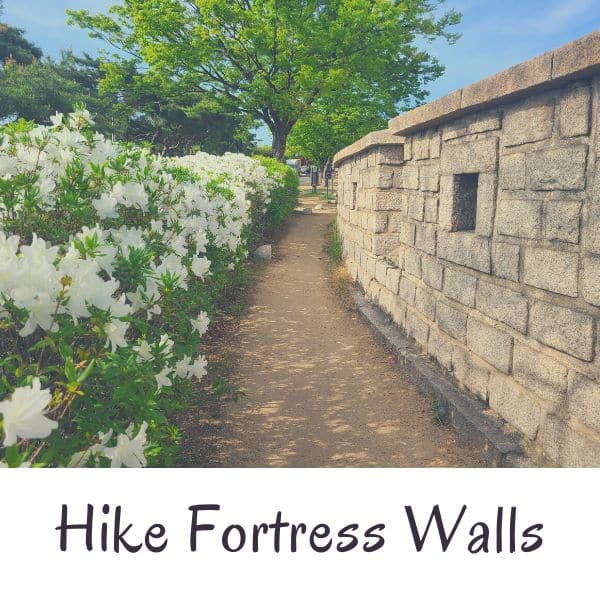
Seoul and other cities in Korea still have fortress walls you can walk or hike along that will offer incredible views of cities and mountains. As you walk along the fortress walls, you begin to imagine what life would have been like as a soldier keeping the city safe from invaders. Nowadays, you can enjoy exercise and sightseeing at the same time. Seoul’s fortress walls are a good place to start, but you can find fortress walls in many other places.
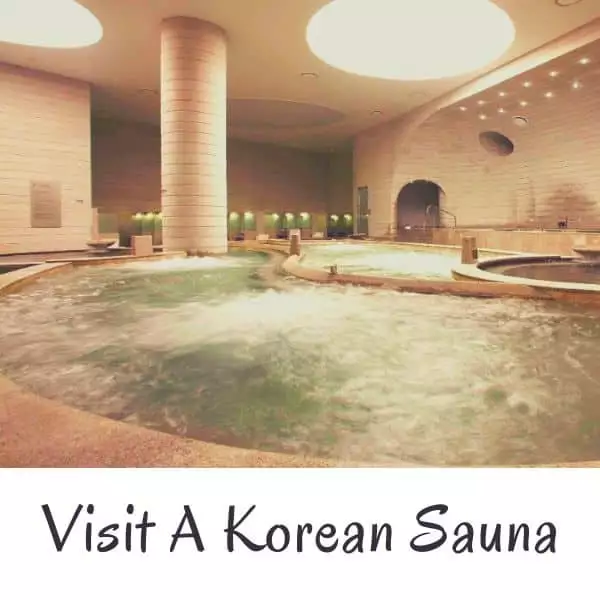
Visiting a Korean sauna might be a bit shocking for first-time travellers to Korea, but it’s a great way to relax and is especially good in winter. When you enter a Korean sauna, you should take off all your clothes, have a shower, and then enter one of the hot baths. Being naked in front of others can be scary for some, but you soon overcome that fear. Korean saunas sometimes have a communal resting area called a jjimjjilbang . These areas require pyjamas and offer snacks, drinks, and places to rest.
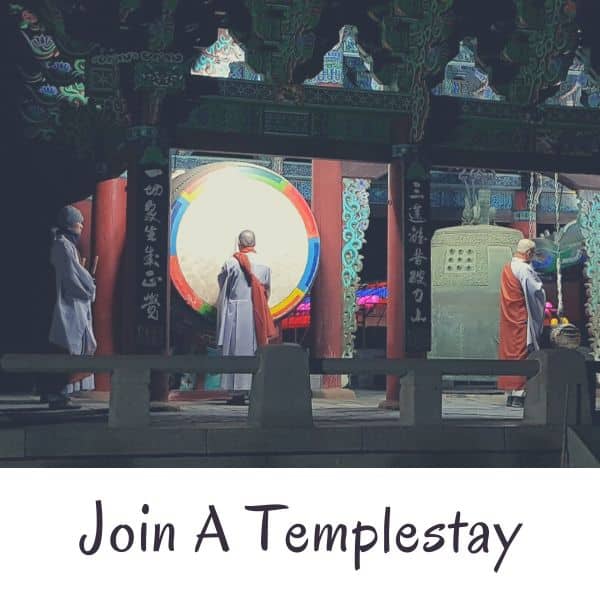
The Cultural Corps of Korean Buddhism have set up a templestay program at dozens of temples across Korea where you spend a day or two at the temple and join in various activities. This is truly a unique experience that you should try in Korea as you get to see customs performed by the monks that aren’t normally shown to the public. You also get to stay overnight at the temple and experience a hanok stay at the same time. Guests can also eat healthy vegan temple food, learn a lot, and chat with the monks.

A noraebang is the Korean version of a karaoke room, but is more popular in Korea and is commonly visited by locals and tourists alike. This is a great place to visit in the evening after a big Korean bbq meal and a few drinks. Everyone can relax and belt out their favourite Korean or international tunes together (or alone), shake some tambourines in support, or just watch and enjoy the atmosphere with some drinks. You can find these in every town and city in Korea and they provide a cheap night of fun and drinks.
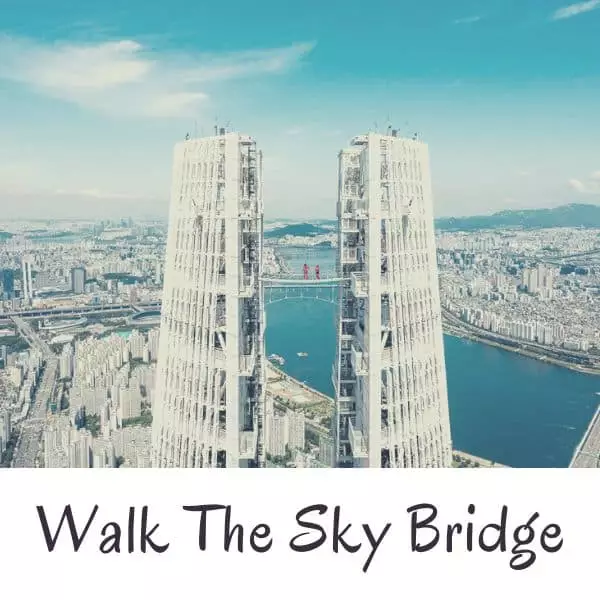
Open since 2020, the Sky Bridge at Lotte World Tower offers unbeatable views of Seoul and a nerve-racking trip above the city. Walk between the two towers at the top of the Lotte World Tower and peer down the 541 metre drop to the city streets below. It’s actually very safe and you’re strapped into a harness as you walk from one side to the other, but this definitely isn’t for the faint-hearted. If you’re not sure you can handle the height, check out the Seoul Sky Observatory on the 117th floor instead.

Koreans love to drink coffee and also love cute, unusual things, which is probably why theme cafes have become so popular in Korea. Besides the many cat cafes, there are theme cafes where you can stroke sheep, pet dogs, and see other animals. There’s more to Korea’s theme cafes than just drinking coffee with animals, you can also try drinking from a toilet at the Poop Cafe , paint pictures, build lego, go camping, practice being a wizard, and more. Hongdae in Seoul is the best place to find theme cafes.
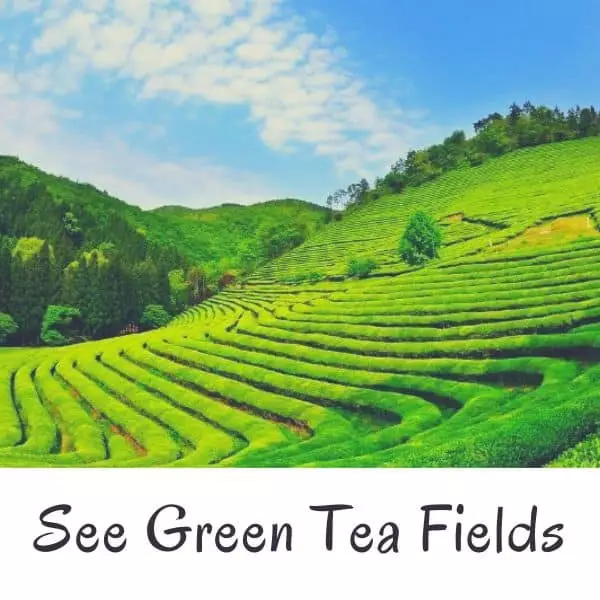
Although cafes are replacing Korean tea houses, Korea still grows and drinks lots of tea, especially green tea. You can visit these tea fields in areas such as Boseong and on Jeju Island, both of which have visitor centres and attractions to teach you about the wonderful world of Korean tea. The Daehan Dawon Tea Plantation in Boseong has lush green fields all year round and has been used as a filming location for several Korean shows. The O’sulloc Tea Museum on Jeju Island also has lovely views.
I recommend trying at least a few of these unique activities, they’ll really make your trip to Korea more memorable and offer insights into Korean culture and life. My advice is to be brave when visiting Korea and try new things, even if they seem a bit unusual at first. The same applies to Korean foods.
Best Korean Festivals To Join In 2024
There are dozens of festivals held in Korea each year celebrating the seasons, local products, traditions, culture, and often just for the sake of having fun. Visiting a festival in Korea will offer you a glimpse of how locals celebrate life, culture, and nature and let you join in the fun.
Whenever you visit Korea, there’ll be festivals going on. However, the biggest festivals occur in spring or autumn. As mentioned previously in this South Korea travel guide, these are the best seasons to visit Korea as the weather is pleasant and people are celebrating the end of summer or winter.
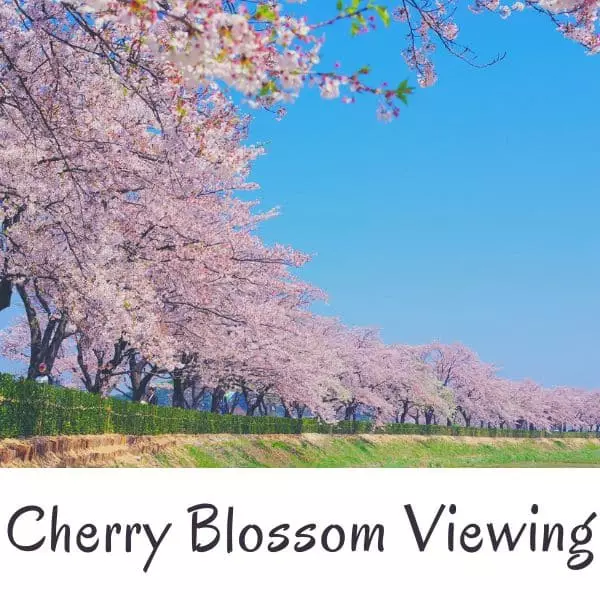
Cherry Blossom Festivals
The cherry blossom festivals in Korea occur in late March and early April and are some of the biggest festivals in Korea. People flock to forests, lakes, and rivers to see the pretty blossoms. The Jinhae Cherry Blossom Festival has over 2 million visitors each year, and even more people visit Seokchon Lake and Yeouido Hangang Park in Seoul. There are many festivals and tours to see cherry blossoms in Korea so you should be able to find a quiet place to enjoy the view.
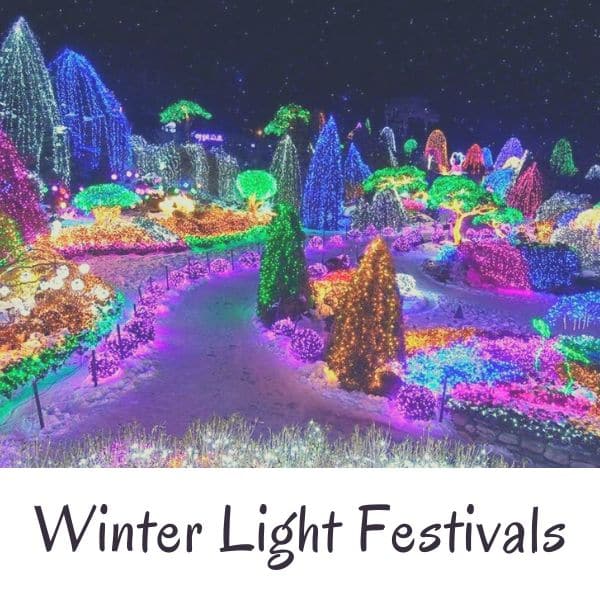
Winter Light Festivals
During the cold, dark days of winter, attractions such as Nami Island, the Garden of Morning Calm, and Herb Island transform into sparkling winter wonderlands with millions of bright lights illuminating them. There are also winter illumination festivals in Korean cities, such as the Haeundae Lighting Festival in Busan, Cheonggyecheon Stream Winter Lights in Seoul, and the Busan Christmas Tree Cultural Festival. When it snows in Korea, these festivals look even more magical.
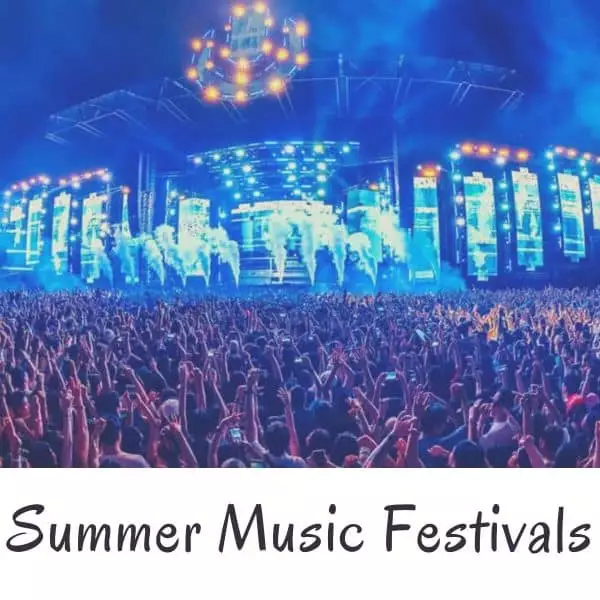
Summer Music Festivals
Summer in Korea is hot, but that doesn’t stop people enjoying day-long music festivals across the country. From chilled jazz festivals like the Seoul Jazz Festival , to action-packed concerts like Psy’s Summer Swag , there are music festivals to suit everyone. This is a popular summer activity in Korea , so be sure to book in advance for ticketed events. If you can’t get tickets, just go to a popular beach in the evening and you’ll usually find musicians performing.
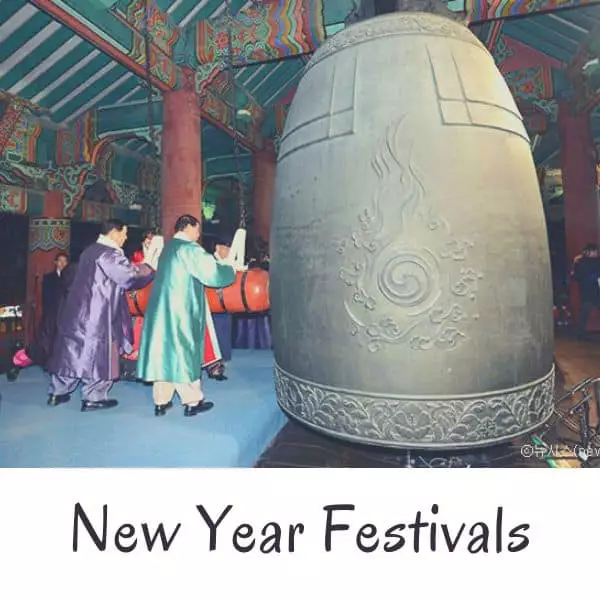
New Year Festivals
There are various festivals in Korea to celebrate the solar new year. New Year’s Eve festivals involve a bell-ringing ceremony where a giant bell is rung at midnight to welcome in the new year. Fireworks festivals are common events in cities across Korea, starting at midnight, too. Koreans celebrate the start of the new year by visiting the East Coast to see the first sunrise of the year at places like Homigot Sunrise Square or Seongsan Ilchulbong on Jeju Island.
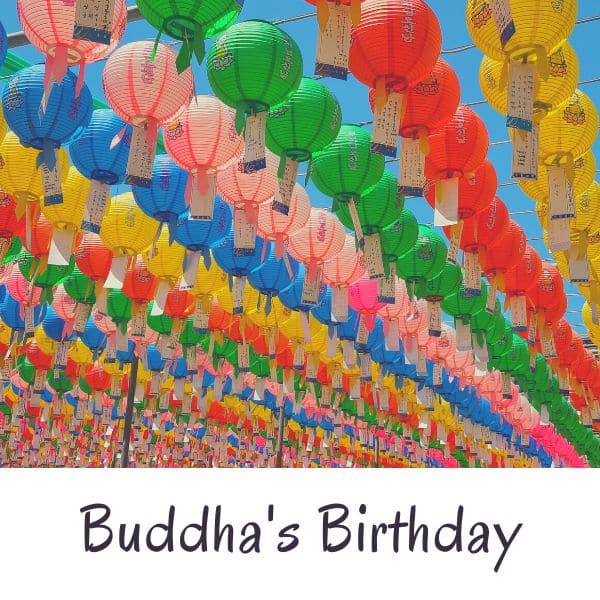
Buddha’s Birthday Festivals
Buddha’s Birthday is like Christmas for the Buddhist world, but celebrated very differently. It also falls on changing dates each year as it follows the lunar calendar, just like Korean New Year. Korean Buddhist temples across Korea will celebrate by putting up colourful lanterns and decorations for at least a month before the actual date. The biggest festival celebrating Buddha’s Birthday is the Yeon Deung Hoe Lantern Festival , which features thousands of lanterns and a lantern parade through central Seoul.
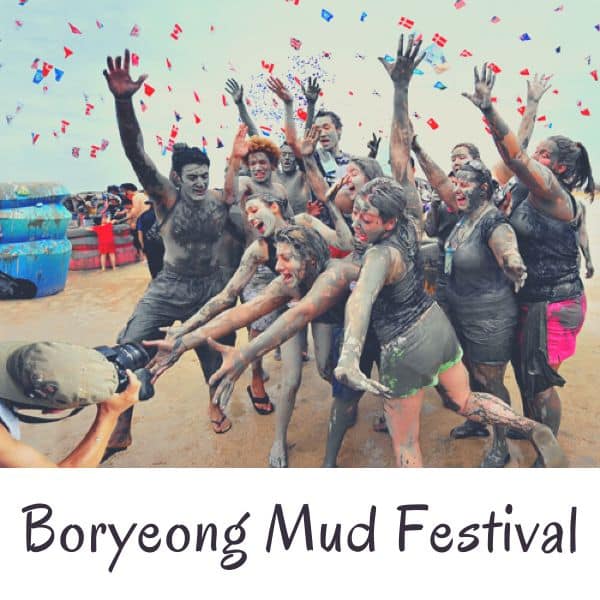
Boryeong Mud Festival
The Boryeong Mud Festival is one of Korea’s largest festivals and attracts visitors from around the world. Running for 2 weeks during rainy season, this is the best way to see a Korean festival even when the weather is bad. There’s a lot to see and do at this festival, including getting dirty in the mud with mud sports, mud wrestling, mud tug-of-war, and other mud-filled events. Boryeong is famous for the high-quality mud found in nearby waters and, by joining this festival, you’re getting a free mud facial.
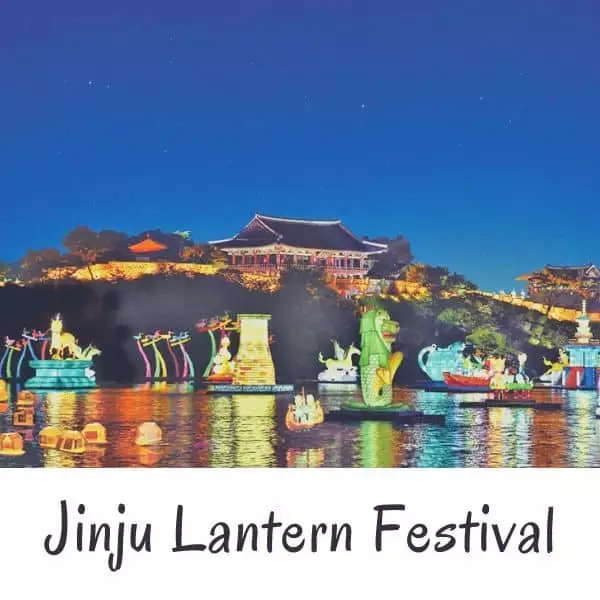
Jinju Lantern Festival
The visually stunning Jinju Lantern Festival is held in October each year in Jinju City and runs for several weeks. During the day, watch cultural performances and enjoy exploring the central fortress grounds of Jinju. Once it gets dark, see the city transform as thousands of lanterns, some as big as trees, come to life. There are so many weird and wonderful lanterns to discover at this festival. You can also set your own lanterns to float down the river with your wish inside.
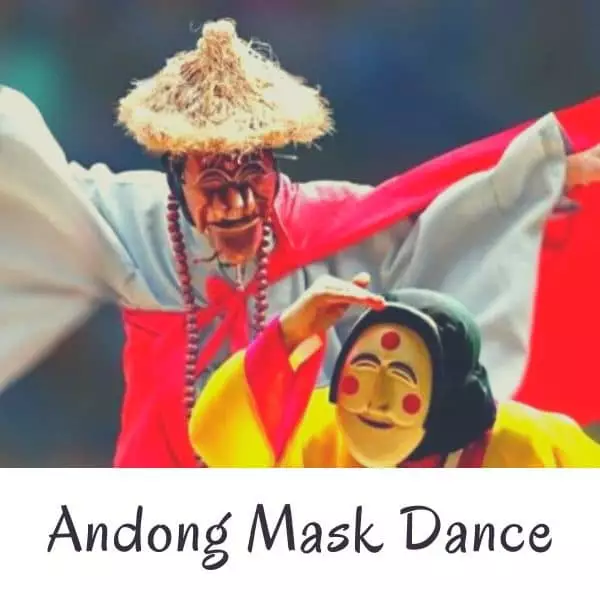
Andong Mask Dance Festival
The Andong Mask Dance Festival in Andong, home of the Andong Hahoe Village, is a great opportunity to witness traditional Korean dance and music performances. Not only can you see traditional Korean performances during this 4 day festival, there are also international performers displaying their own culture’s dancing. Get hands-on with traditional Korean culture at this festival. Explore Andong and learn about its contributions to Korea’s cultural development.
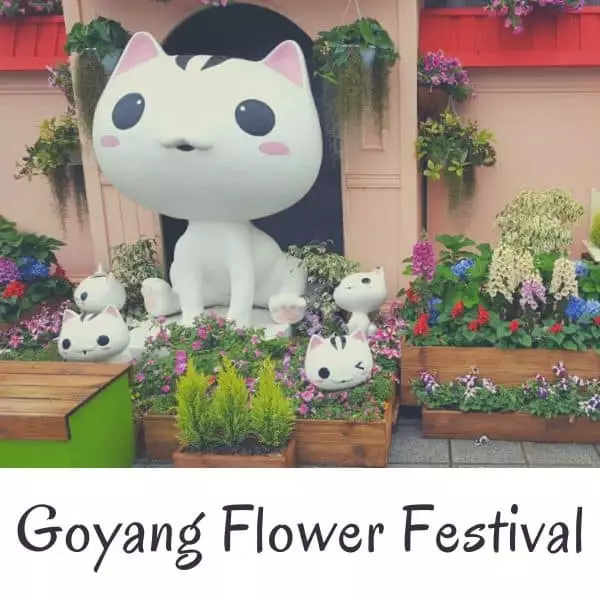
Goyang Flower Festival
The Goyang International Flower Festival runs twice per year, once in spring and once in autumn. It’s a beautiful celebration of floral beauty mixed with Korean cuteness and creativity. At this flower festival you can stroll through a maze of different displays, with each section focusing on certain flowers and plants. There are indoor displays with vividly coloured roses, nature-based outdoor photo zones, and the lovely Ilsan Lake Park in the background.
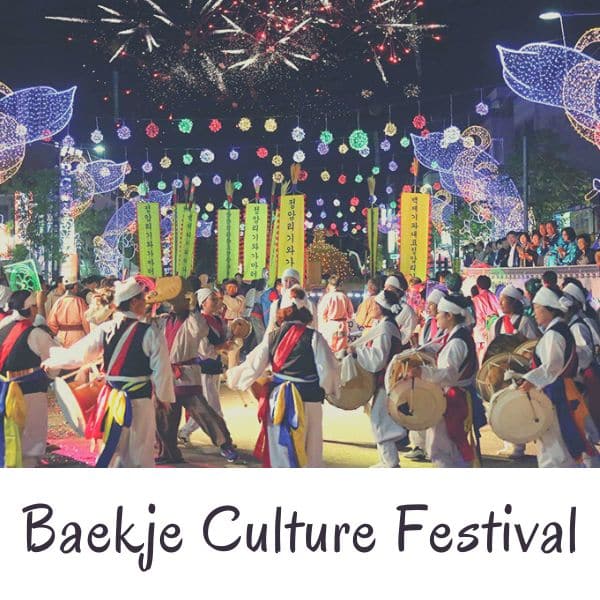
Baekje Culture Festival
The Baekje Culture Festival probably isn’t one that first-time travellers to Korea would know about. Held in Gongju and Buyeo, the two former capitals of the ancient Baekje Kingdom, this 10-day long festival held around Chuseok (Korean mid-autumn harvest festival), is packed with unique events and sights and is set in historic locations in each city. There’s local food to try, musical & cultural performances, fun photo zones, lantern displays, and much more.
Knowing when you plan to visit Korea will help you research what festivals are on and what the weather will be like. There are certainly a lot more than just the ones mentioned above, including some others mentioned previously in the seasons part of this South Korea travel guide.
I recommend using a tour company to see out of the way festivals like the Jinju Lantern Festival and the Jinhae Cherry Blossom Festival. These are often far from typical tourist destinations and can take hours to get to by public transport. Tours are worth the cost to save you time and avoid hassle.
Recommended Itinerary For Korea In 2024
In this section of this South Korea travel guide is my recommended first-timer itinerary for South Korea. This introduces you to two of Korea’s biggest cities, as well as a couple of day trips to highly rated destinations in Korea. There’s a mix of history, culture, nature, sights, and experiences.
This itinerary starts in Seoul as that’s where most people arrive to Korea after flying into Incheon Airport. If you arrive in Busan, you can change the route to start and end there instead. For travellers to Korea with only 2 or 3 days, I recommend using the first few days of this itinerary instead.
The itinerary lasts for one week, which isn’t enough time to see all of Korea, but enough time to get a feel for the country. If you have more time, use this itinerary and add in or replace extra destinations as you like. Jeju Island is certainly worth visiting if you have an extra 2 or 3 days.
Classic Sights Of Korea Itinerary
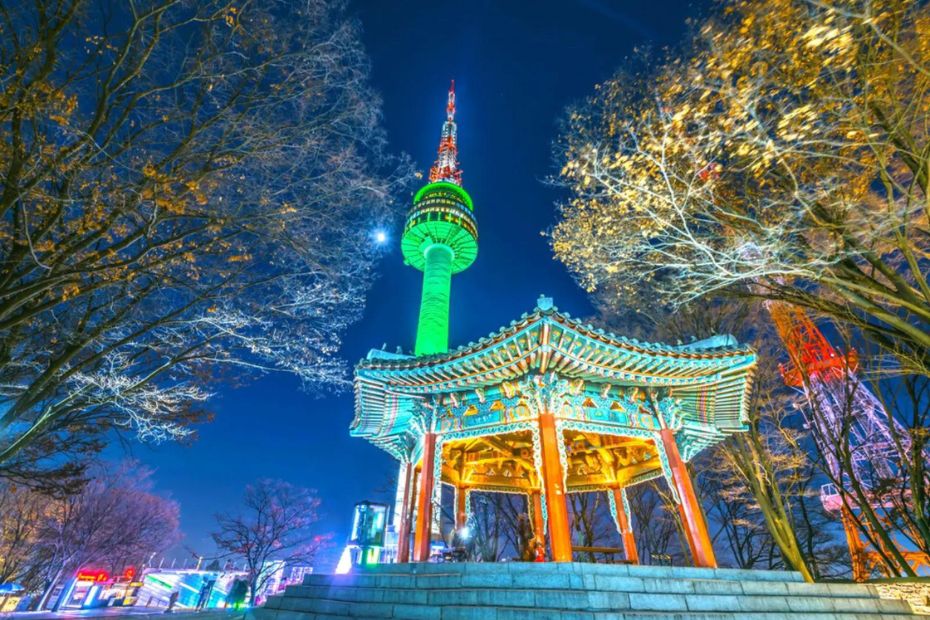
This itinerary covers a few must-see sights in Korea, including the two largest cities, the history city of Gyeongju, and some popular day trip destinations from Seoul.
Day 1 : Arrive in Seoul and explore Gyeongbokgung Palace, Bukchon Hanok Village, Insadong Art Street, Jogyesa Temple, and Cheonggyecheon Stream. Get dinner at the Jonggak Avenue of Youth for authentic Korean food that’s better than the touristy places in Myeongdong.
Day 2 : Learn about Korean history at the War Memorial of Korea or National Museum of Korea, explore Seoul’s traditional Gwangjang market in Dongdaemun, take the cable car to the N Seoul Tower for sunset & night views, then head down to Itaewon or Myeongdong for dinner & drinks.
Day 3 : Take a day trip to Gapyeong and visit Nami Island, the Garden of Morning Calm, and the Gapyeong Rail Bike Park. Return to Seoul for dinner and rooftop drinks in Myeongdong and then walk along the fortress walls from Dongdaemun Station if the weather is good.
Day 4 : Take the KTX to Busan, drop your bags, and take the subway to Nampo-dong for Jagalchi Fish Market, Bosu-dong Book Alley, and traditional sights. Take a taxi to Huinnyeoul Culture Village. End the day in Haeundae for evening dinner & drinks and a walk along the beach at night.
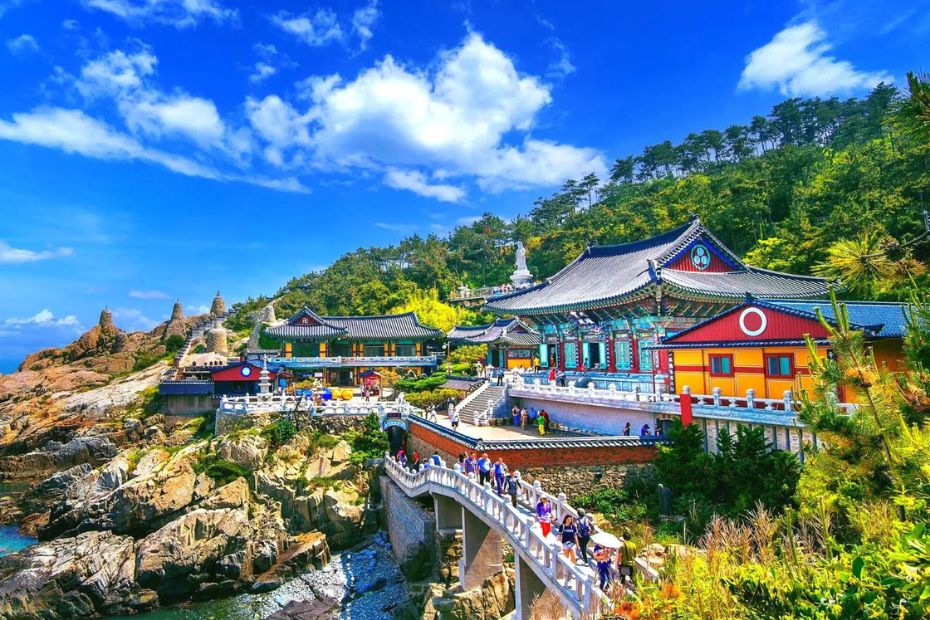
Day 5 : Take the bus to Haedong Yonggungsa Temple, then a taxi to Songjeong Beach. Relax in a beachside cafe, then take the Haeundae Beach Train to Cheongsapo, change to the Sky Capsule, and end up in Haeundae. Take a bus to Gamcheon Culture Village and get dinner at Songdo Beach.
Day 6 : Take a day trip from Busan to the UNESCO World Heritage City of Gyeongju. Visit the Gyeongju Historic Area, then Gyeongju Gyochon Traditional Village for traditional food and sights of Woljeonggyo Bridge. See tranquil night views of Wolji Pond before getting dinner at Hwangnidangil.
Day 7 : Head back to Seoul on the KTX for a final day of shopping and sightseeing in Hongdae. Walk along the Gyeongui Line Forest Park or Book Street or visit a theme cafe. Take the subway directly to Incheon Airport from Hongdae or spend a night here and check out the lively night scene.
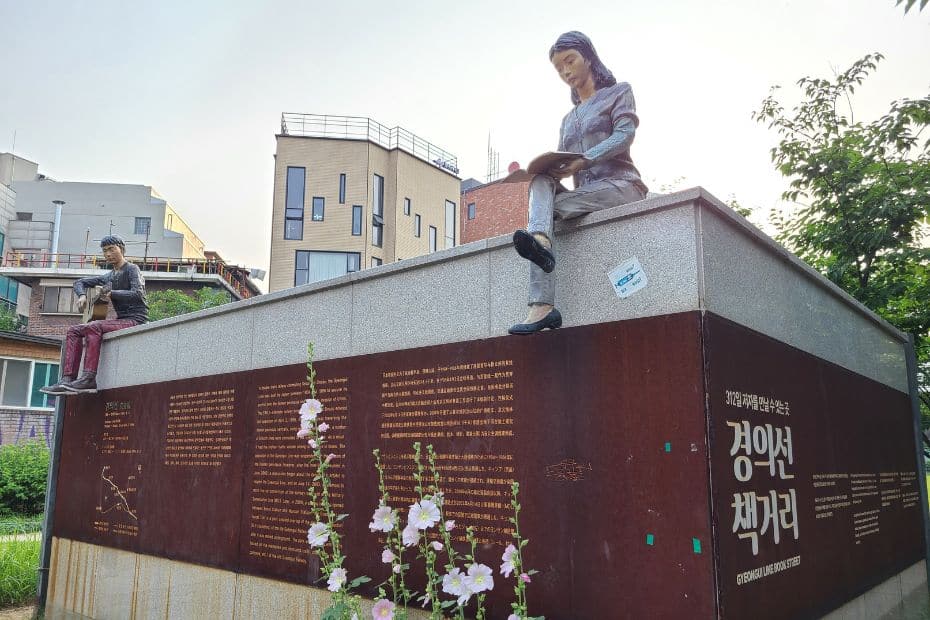
Please note : I recommend trying not to cram too much into your itinerary. You may want to see as much as possible, but people often end up rushing past sights and not appreciating them. Plan for less and see more if you have time. It gives you a chance to be spontaneous.
To plan a realistic itinerary for South Korea, it is important to factor in transportation, meal breaks, and rest times. Use Naver Maps to plan your route and work out travel times. A short journey on the map might take much longer if there’s no direct route. Also consider breaks if you plan to walk a lot.
Cultural Issues When Visiting Korea
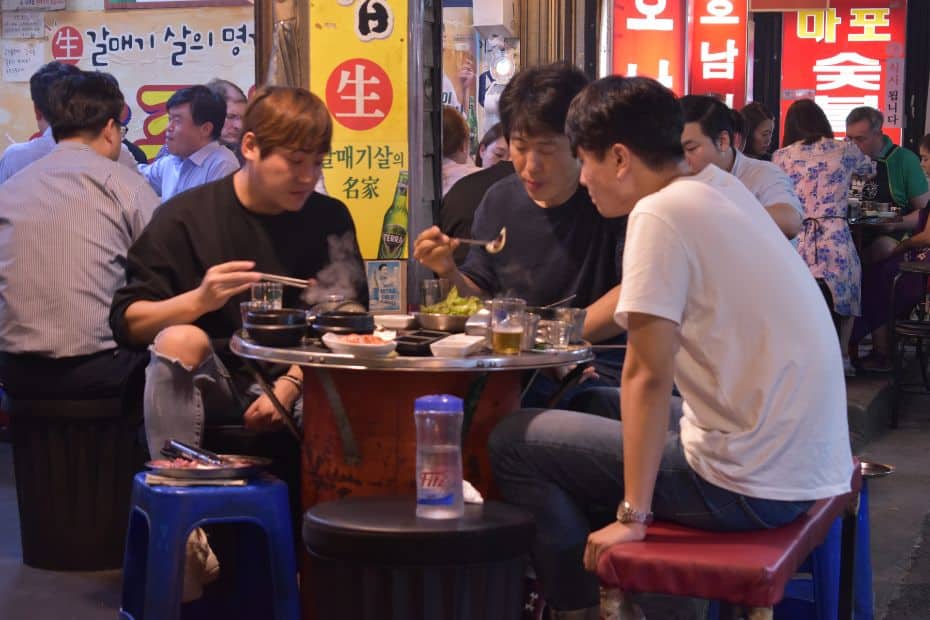
The next few sections of this South Korea travel guide will provide answers to some of the most common questions first-time travellers to Korea have in regards to cultural, language, and safety issues. Korea is a culturally unique country with customs and traditions you might not be aware of.
Korea is a society that places a strong emphasis on social image, respect for others, and social harmony. This means Koreans will often try to avoid conflict, especially in public. To show respect for Korean culture and to avoid being rude, try to respect social harmony and always avoid conflict.
If you follow these tips, you’ll find it easier to avoid accidentally upsetting someone in Korea. There’s far too much to cover in this South Korea travel guide, so if you’d like to know more, check out my detailed guide to Korean etiquette and culture , it’s packed with tips and insights to understand Korea.
What is considered rude in Korea? It is considered rude to point with one finger or with chopsticks, give and receive with one hand, cross your legs when sitting, and to walk inside with your shoes on. Things considered rude in other countries such as swearing and spitting are also rude in Korea.
What is considered unlucky in Korea? It is considered unlucky to write someone’s name in red ink and to stand chopsticks upright in rice. Both are used in rituals for deceased people. The number 4 is also unlucky as the word is the same as the word for ‘death’.
Do you need to tip in Korea? It’s not necessary to tip in Korea and most restaurants and cafes won’t expect or allow you to tip. There is no service charge added to bills in Korea, with the exception of some upmarket restaurants, bars, and hotels in touristy areas of Seoul. Tipping guides is okay.
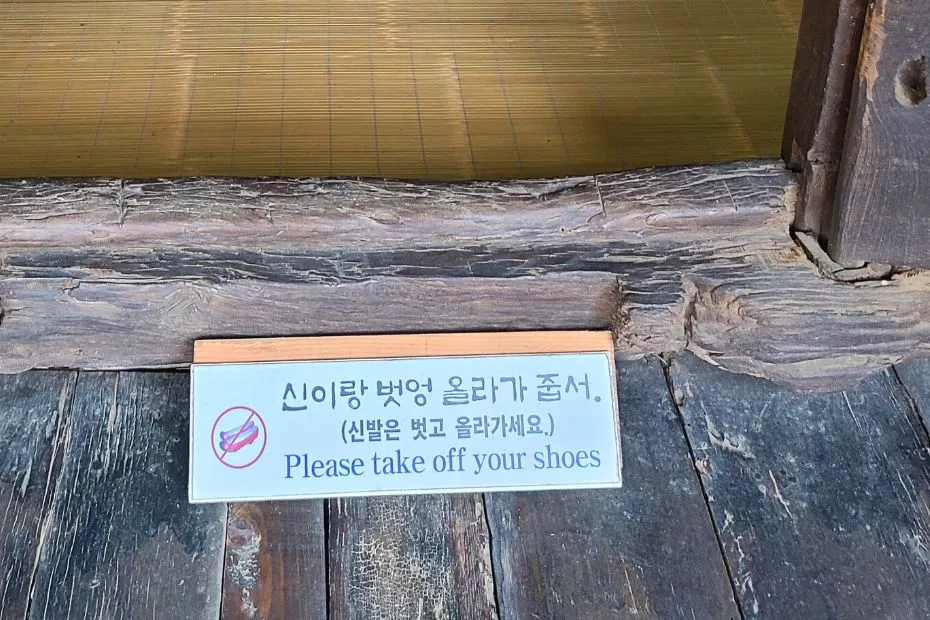
Do you need to take off shoes when going inside? If you enter someone’s house in Korea, you should take off your shoes. This rule also applies to temples, traditional restaurants, and other places in traditional buildings. Most cafes, shops, and restaurants won’t ask you to take off your shoes.
When should you use two hands in Korea? You should use two hands when giving and receiving things in Korea, such as money, a gift, a business card, or food. When you shake hands, use both hands, not just one. The same applies to pouring drinks, both pouring and holding a glass.
Do I have to act like a Korean in Korea? You don’t have to follow Korean customs and traditions when you visit Korea. You are a guest in the country and Koreans won’t expect you to know every rule. However, showing cultural awareness in Korea will help you make friends and impress locals.
The best tip for being culturally sensitive in Korea is to first consider all the things that you’d consider rude in your own country – spitting, swearing, shouting, physical violence, etc. Show the same acts of kindness you’d show at home – help others, give up your seat for those in need, be polite, etc.
Furthermore, remember that social harmony is really important in Korea and try not to cause a scene. Keep your voice down in public, don’t talk or act aggressively, be polite, and don’t force things when people are reluctant. Koreans may feel obliged to do things, even when they don’t want to.
Language Issues When Travelling Korea
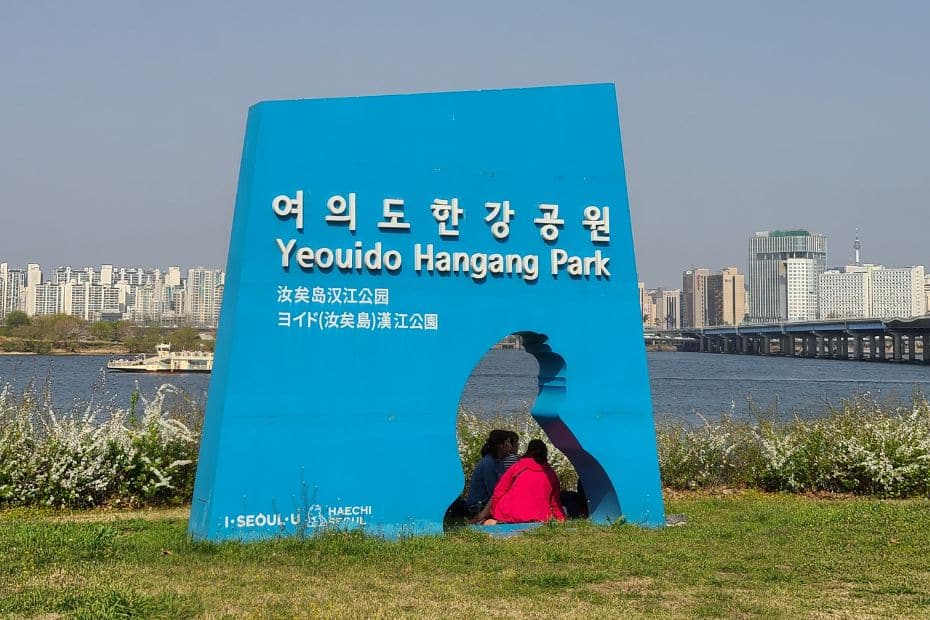
Language issues can be a big concern for first-time travellers to Korea as Korean is a very different language from English and has a unique alphabet. Korean is also one of the most difficult languages to learn for English speakers, ranked alongside Japanese, Chinese, and Arabic.
However, as a tourist to Korea, you don’t need to worry about mastering the language. English is used for signs and announcements in most places that you’ll need it, such as on public transport, at the airport, at attractions & tourist sites, on menus, and most other places. It’s common across Korea.
If there is a sign or notice that isn’t in Korean, I recommend using the Papago app to take translate it. Use the image translation function in the app to scan the sign and Papago will translate it into English for you. It’s really convenient and the way I translate things I can’t read in Korean.
Do Korean People Speak English?
Speaking in English to Korean people is different from being able to read and translate signs. English is taught from elementary school until the end of high school. That doesn’t mean everyone will remember it, but there’s a good chance some people will know English, especially younger Koreans.
It is best to ask if someone speaks English before trying to have a conversation. You can do this in Korean by asking “영어 할 수 있어요?” (Yong-oh hal su iss-o-yo?) or just ask it in English. Tour guides and people in the tourism industry will probably be able to speak English, but it’s not guaranteed.
Shyness is an issue in Korea and locals may be reluctant to speak English at first for fear of making a mistake. As an English teacher in Korea, I know that Korean students are usually quite competent in English, but lack confidence to use it. Be patient and encouraging when talking in English.
Although some Koreans may be too shy to use English, other people may be enthusiastic about speaking English to you and want to practice it. I’ve been asked random questions in English by strangers in the street in Korea who want to practice English and find out about my life.
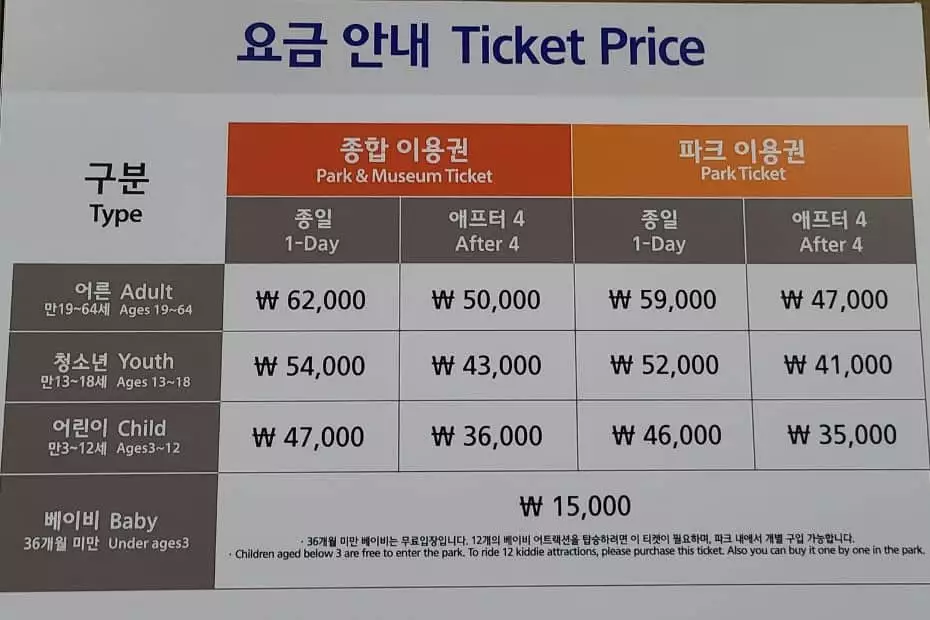
Should You Learn Korean Before Visiting Korea?
If you do want to learn some Korean before you travel, I recommend you start by learning the Korean alphabet , or at least learning some basic Korean travel phrases . Knowing how to introduce yourself, discuss prices, ask for directions, and ask for help will make your trip to Korea a lot easier.
You can learn Korean online through courses such as 90 Day Korean and Korean Class 101 , or with self-study textbooks like the excellent Talk To Me In Korean series. There are lots of resources on YouTube, too. I particularly like Learn Korean with GO! Korean Billy as he explains things clearly.
Another way to prepare to move to Korea is to read some Korean novels in English . Although these books won’t teach you any Korean, they’ll offer up valuable insights into Korean culture, both traditional and hidden under the surface. Literature is a good way to gain an understanding of a culture.
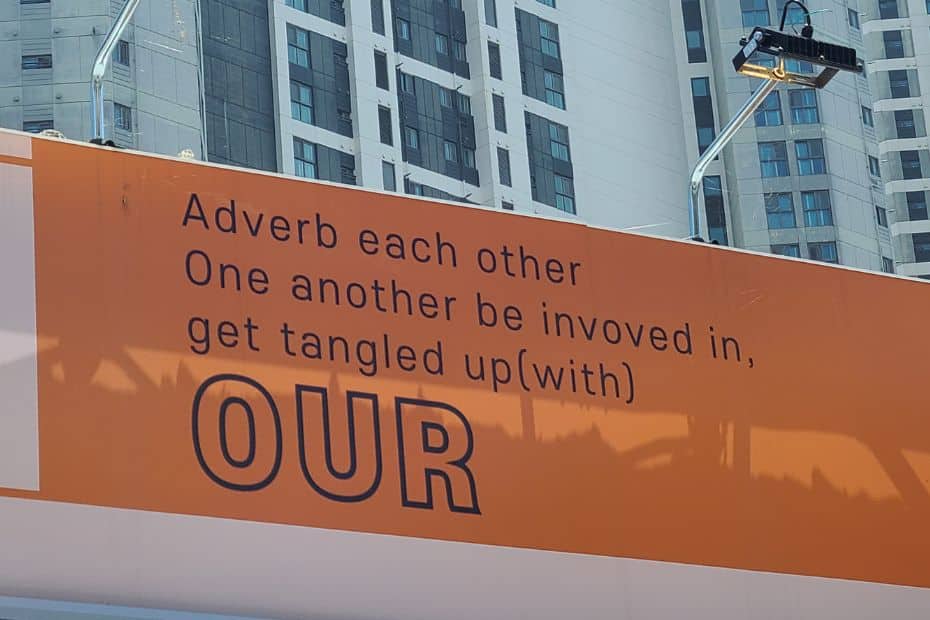
A warning about Konglish : Although Korea uses English in many useful ways, there’s also a lot of Konglish. The sign above is a good example of random English words being used to look cool, but ending up being confusing. There’s a lot of this in Korea and it’s mostly harmless, so don’t worry.
Health And Safety Issues In Korea
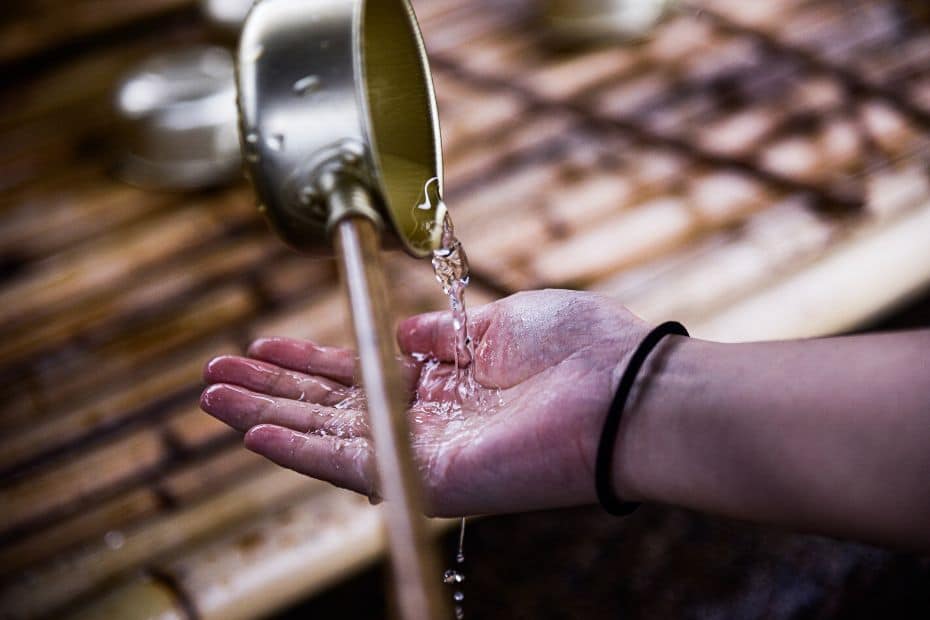
First-time travellers to Korea may be worried about health and hygiene issues, such as if certain foods are available and if they’re safe to eat. Other issues include vaccinations, personal safety, and how easy it is to contact emergency services. These issues are addressed below.
Is Korean Street Food Safe To Eat?
Korean street food is generally safe to eat and won’t give you any health issues unless you have an intolerance to the food. Korean street food can be spicy or contain a lot of salt, be aware of your own personal tolerances and dietary requirements before trying it.
Also be careful when ordering food with meat or seafood and check that it is cooked thoroughly. Korean street food that has been left out for a long time is more likely to cause food poisoning problems, so ask for freshly cooked food if you’re concerned.
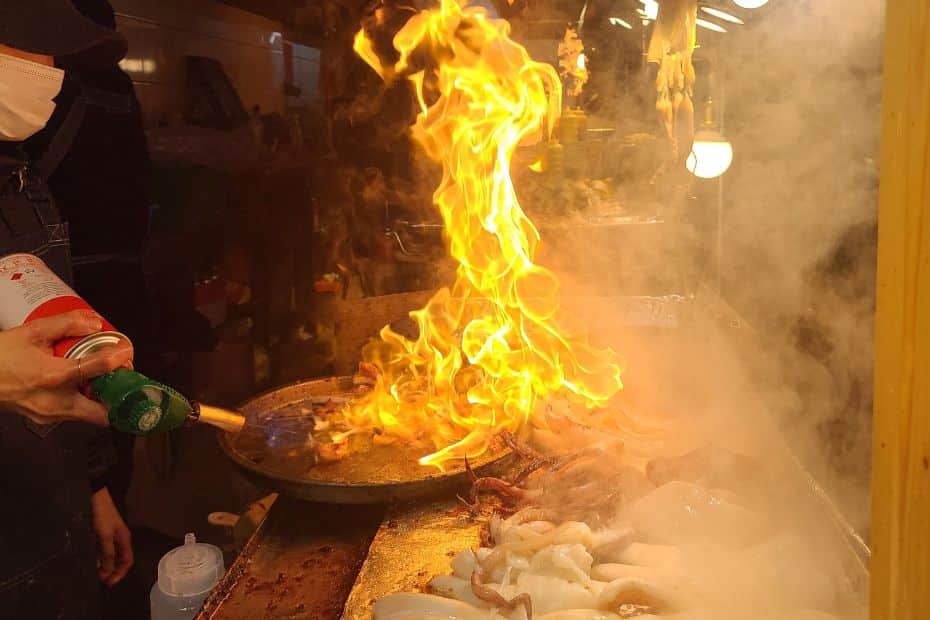
Is It Easy To Find Vegan-Friendly Food In Korea?
There are many vegan-friendly Korean dishes , such as gimbap , japchae , pajeon , bibimbap , ramyeon , and tteokbokki . However, some restaurants may use non vegan-friendly ingredients when preparing these foods, so be careful. Kimchi isn’t vegan-friendly due to its seafood ingredients & sauces.
Vegetarianism and veganism aren’t common in Korea with fewer people following these diets than in countries such as the USA or UK. Vegetarians in Korea account for 3% of the population, while vegans in Korea are only 0.2% of the population as of 2022. The UK is 10% and 2% respectively.
However, the number of vegan-friendly restaurants and bakeries is increasing each year in Korea, especially in areas such as Hongdae and Itaewon. Korean Buddhist temple food is vegan-friendly and a good option for vegans who want to enjoy vegan food while learning about local Korean culture.
If you’re concerned about accidentally ordering non vegan-friendly food, or want to know how to tell someone about food allergies or requirements, check out my guide to Korean phrases for ordering food . This has a whole section about special requests when ordering food in Korean.
Is It Safe To Drink Tap Water In Korea?
Korean tap water is potable and safe to drink. Korea ranks 23rd for water hygiene, which is above the USA, Canada, and Australia. However, many Koreans don’t drink tap water , preferring to use water purifiers and bottled water instead, claiming that tap water smells strange or water pipes are bad.
Personally, I don’t like drinking tap water in Korea as it tastes a bit stale, but it’s perfectly fine to drink and doesn’t cause any problems. Bottled water is very cheap in Korea and costs 600 KRW for a 500ml bottle from a convenience store. Buying water from a supermarket is a cheaper option though.
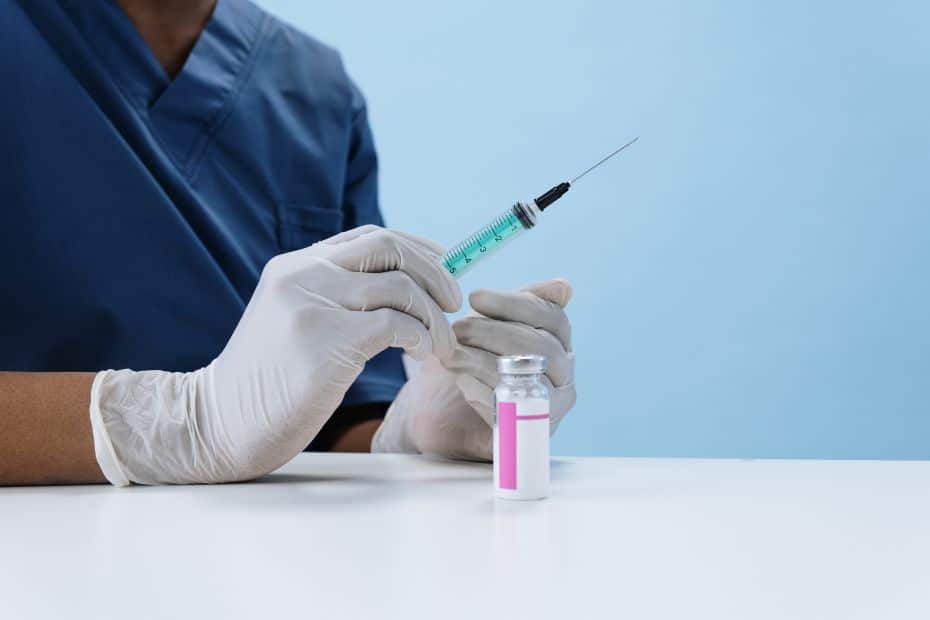
Do You Need Any Vaccinations To Travel To South Korea?
There are no mandatory vaccinations required to travel to Korea , but it is suggested you should have at least routine vaccinations such as tetanus, MMR, and polio. Hepatitis A & B, typhoid, and Japanese encephalitis vaccinations are also recommended.
Is Korea Friendly To Tourists?
Korea is generally friendly and welcoming to tourists. The Korean government spends a lot of money and effort to promote Korean tourism to the world and there are many incentives to bring people to the country. Korean people are also mostly polite and welcoming, especially in the tourism sector.
Is Korea A Dangerous Country To Travel In?
South Korea is a safe country to travel in and the crime rate in Korea is low, comparable to Norway or the Netherlands. Public crimes, such as theft and assault, are rare. Pickpocketing and purse snatching aren’t common and unattended goods are generally left alone or reported to the police.
How safe is Korea? I regularly see people leave their phone or handbag on a cafe table to reserve it before going up to order a drink. People even leave their laptops open while they pop out for lunch or go to the toilet. Stealing disturbs social harmony and is one of the reasons it’s rare in Korea.
Physical violence is also rare, but still occurs in Korea, as it does in all countries. This is most often found in areas with lots of bars and when people are drunk. However, visiting bars in Korea is a lot safer than I’ve experienced in other countries and trouble is not common, even in busy places.
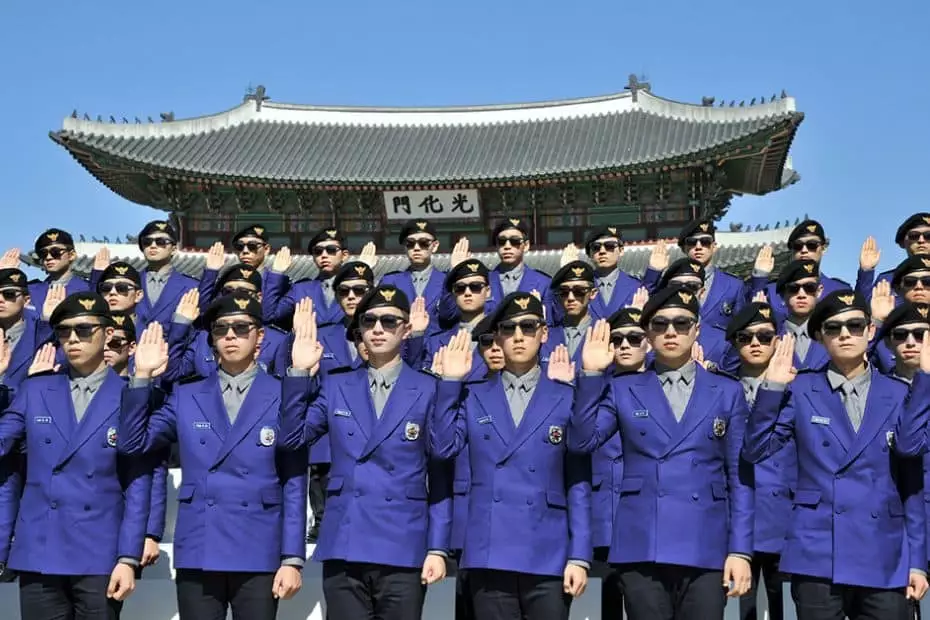
How Do You Contact Tourist Information Services In Korea?
Call 1330 in Korea to contact the Travel Helpline . The Korean Travel Helpline provides the following services free of charge to tourists in Korea.
- Tourist Information : Find out about attractions, opening hours, prices, and other information.
- Tourist Interpretation : Access travel information in several languages.
- Tourist Complaints : Report rip-offs and problems you encounter when travelling in Korea.
- Tourist Police : Report minor crimes in English and other languanges.
There are tourist police patrolling the streets of Seoul, dressed in purple uniforms as shown in the picture above. In popular tourist locations like Myeongdong and Bukchon Hanok Village, you’ll also find friendly tourist information staff dressed in red shirts with matching red cowboy hats.
What Should You Do If You Have An Emergency In Korea?
If you need to report a fire or medical emergency in Korea, you should call 119 from any phone. To contact the police in Korea, call 112. You will need to select an option to report an emergency in English or another language. It may take some time to be redirected to an English speaker.
- 119 – Medical Emergency & Fire Rescue
- 112 – Police
When you use medical services in Korea, you have to pay the cost of treatment, but there is no fee for the ambulance ride as this is covered by the Korean government. Travel insurance should cover the cost of medical bills, so if you’re worried about a large medical bill, insurance is recommended.
Fortunately, the cost of treatment in Korea is quite reasonable and Korea has advanced medical facilities, which is why it’s a popular medical tourism destination . Many people travel to Korea for minor and major surgery, including laser eye surgery, cosmetic surgery, and internal medicine.
Is Air Pollution A Problem In Korea?
Air pollution is an issue in Korea, especially in spring & summer. Winds blow yellow dust from Central Asia, field burning spreads fumes across Asia, and fossil-fuel burning contributes to higher levels of air pollution. Some days there’ll be very low visibility and health risks for people with lung problems.
My Personal Travel Tips For Korea
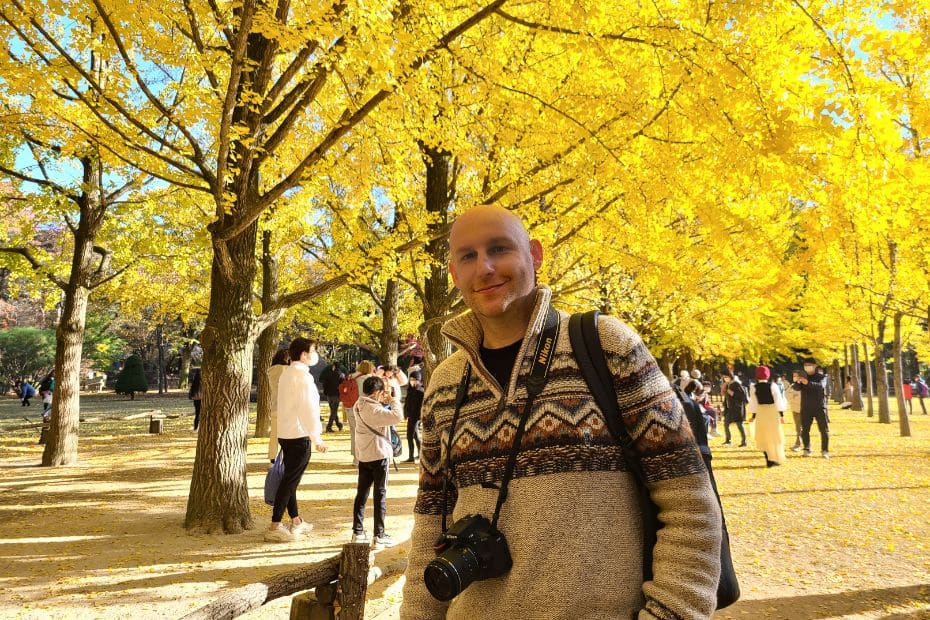
This South Korea travel guide is a collection of information I’ve researched and learned since moving to Korea in 2015 and blogging about Korean travel since 2019. I hope the provided information and insights are useful and assist you plan your dream first-time, or even tenth-time, trip to Korea.
This section includes my personal tips that didn’t really fit anywhere else and reflections built from travelling all over Korea in all seasons. These are tips I would offer to first-time travellers to Korea and people who might have some worries about visiting the Land of Morning Calm. I hope they help.
The Real Korea Isn’t What You See On TV
Korea is a developed country that went from being a 3rd world country in the mid 20th Century to a high-tech country in a short time. Despite the many high-rises and modern K-Pop stars, there are still shadows of the former Korea seen in both run-down slums and people with ‘traditional’ values.
The image created by selective K-Culture can distort people’s reality when dreaming of a trip to Korea in the same way Korean people can suffer from Paris Syndrome when visiting France. There are many wonderful things about Korea, but don’t travel thinking that everything is as shown on TV.
Be Prepared For Culture Shock
One of the best things about travelling is seeing a country and people that act and behave differently to how you do in your own country. This is known as culture shock and can be both a blessing and a challenge for first-time travellers to Korea. Things you might be used to can be different in Korea.
Some examples of culture shock in Korea include the way age determines hierarchy in Korea and how older people can be rather pushy, especially on the subway. Younger people also typically don’t question the decisions of older people in Korea as it is considered rude and disrespectful.
Less extreme cultural differences that might confuse some first-time visitors to Korea include having to shout to call someone to take your order in a Korean restaurant or not giving a tip. Koreans might similarly look at you strangely if you do something culturally different, such as walking while drinking.
Don’t Overpack When You Travel To Korea
First-time travellers to Korea may be worried about visiting a country like Korea without taking everything they need from home, even the kitchen sink. My advice is to pack as light as possible and leave yourself some space in your suitcase. There are two reasons for this.
- You can buy most things you need in Korea . This includes sun cream, heat packs, clothes, shoes, cosmetics, travel accessories, etc. They’re also probably cheaper in Korea, too.
- You will want to take home lots of things . From weird Korean snacks to beautiful hand-crafted pottery and woodwork, there are so many things to buy in Korea.
(1) The only exception is if you might have a problem finding correct-fitting items. Korean shoes and clothes are slightly smaller than what you’d find in Western countries and the sizes are also differently labelled. I’m a medium in the UK but a large (sometimes XL!) in Korea. Be careful when shopping.
(2) It’s hard to fit everything you buy in Korea into an already full suitcase. Fortunately, you can buy extra suitcases at low prices. Check out Namdaemun Market for cheap luggage options, as well as shops like the one pictured below (this is in Busan) in places like Hongdae and Dongdaemun.
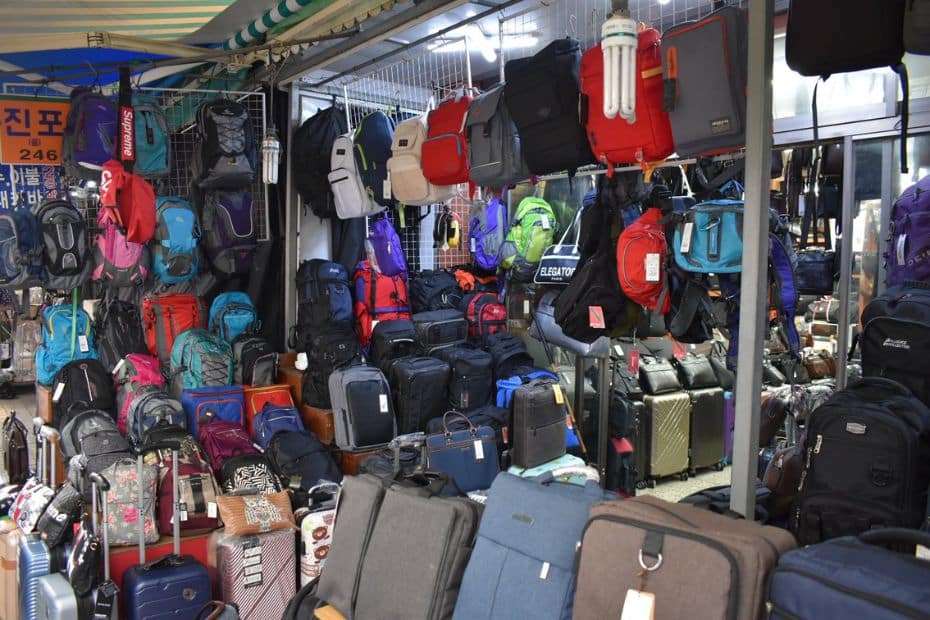
Electricity In South Korea
Be careful with electric items when travelling to Korea. Korea uses type C and F plugs , which are used in Europe, Russia, and other parts of Asia. The standard voltage is 220V with 60Hz frequency. Anything designed for a standard voltage between 220V and 240V should be fine in Korea.
Laptops, mobile phones, and other portable devices will be fine when you travel in Korea as long as you use a travel adapter with a USB or socket connection. Hairdryers, shavers, curlers, and similar devices might have problems charging in Korea and run out of power very soon. My shaver did.
Go With The Flow And Go Quickly
Korea is a very busy country and you might hear people mutter ‘빨리빨리’ ( ppalli ppalli ) if you walk slowly, especially in the subway. Koreans work long hours and are eager to get home or go out for dinner. Don’t take it personally if people push past you and don’t feel like you have to rush.
Know Where To Throw Away Rubbish
It can be difficult to find a bin to throw away rubbish in Korea, even in urban areas. The best place to dispose of rubbish in Korea is at a convenience store. You can find recycling and trash bins in these shops. If you go hiking or explore the countryside, expect to carry your rubbish home with you.
South Korea Travel Guide FAQs
Finally, here’s a few FAQs about this South Korea travel guide, in case the above information didn’t cover enough for you.
What is the best month to visit South Korea?
The best months to visit South Korea are April and October. April is warm and you can see cherry blossoms in Seoul at the start of the month. October is warm with clear skies. During October you can see autumn foliage across Korea.
How much money is enough for South Korea?
The amount of money you need to travel in South Korea depends on your travel style and desired level of comfort. A rough budget for South Korea is 50-100,000 KRW per day for budget travellers, 100-200,000 KRW per day for mid-range travellers, and 200,000+ KRW per day for luxury travellers.
Is South Korea friendly to tourists?
South Korea is a welcoming country and friendly to tourists. There are many services to welcome tourists to South Korea, including free transit tours from Incheon Airport, cultural performances in tourist destinations, low entry fees to traditional attractions like Gyeongbokgung Palace, and tourist information and signs in multiple languages.
What do I need to know before travelling to South Korea?
It’s important to know about the weather before travelling to South Korea as this can impact your day to day travel and affect what clothes you’ll need. You should also research what festivals are on before you travel, what seasonal events are happening, such as cherry blossom viewing, and also how to use public transport and get connected to the net.
What is the cheapest month to visit South Korea?
January and February are two of the cheapest months to visit South Korea and are considered low season as the weather is cold. Hotel prices and flights to Korea will be lower in these months. Winter is a good time to travel to Korea to see snow and enjoy winter sports and festivals, however, some attractions will be closed during this time of year.
Do I need a South Korea travel guide?
It is good to check a South Korea travel guide to research your trip, especially for first-time travellers to Korea. Korea has a unique culture, language, and customs that might be confusing for new travellers. A South Korea travel guide will help you prepare for these factors and give you ideas to create your perfect trip to Korea.
Can you drink tap water in Korea?
Korean tap water is potable and safe to drink. You can drink water from hotels and apartments in Korea. Restaurants and cafes will provide you with free drinking water, which usually comes from a water cooler. Bottled water is available from convenience stores and is reasonably priced.
Is South Korea safe for first-time travellers?
South Korea is a safe country for first-time travellers to visit. Personal crimes, such as theft, mugging, and physical violence are rare in Korea and it is safe to walk the streets of Seoul, even at night. First-time travellers can prepare for a trip to South Korea by being aware of potential scams, such as taxi drivers over charging them or being ripped off in the traditional markets.
What are the best apps for travelling in South Korea?
The best apps for travelling to South Korea are Papago, Kakao Taxi, Naver Maps, and Seoul Subway. These apps will allow you to translate between Korean and English, hail taxis, and navigate as you travel. All of these apps have English language options and are free to use.
Support In My Korea Thanks for reading. If you want to help me to create more great content in the future, why not buy me a coffee? A strong coffee helps me write more and is a simple way to show gratitude for this free content.

Liked This? Pin It For Others
If you enjoyed reading this article, then please share this with your friends on Pinterest.
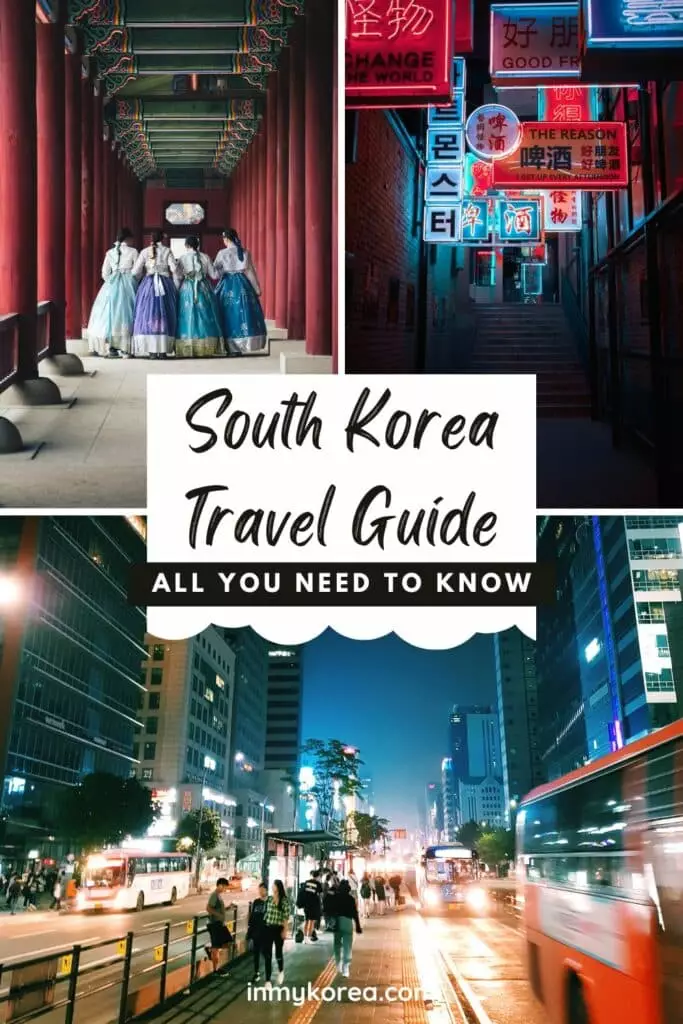
Related Articles
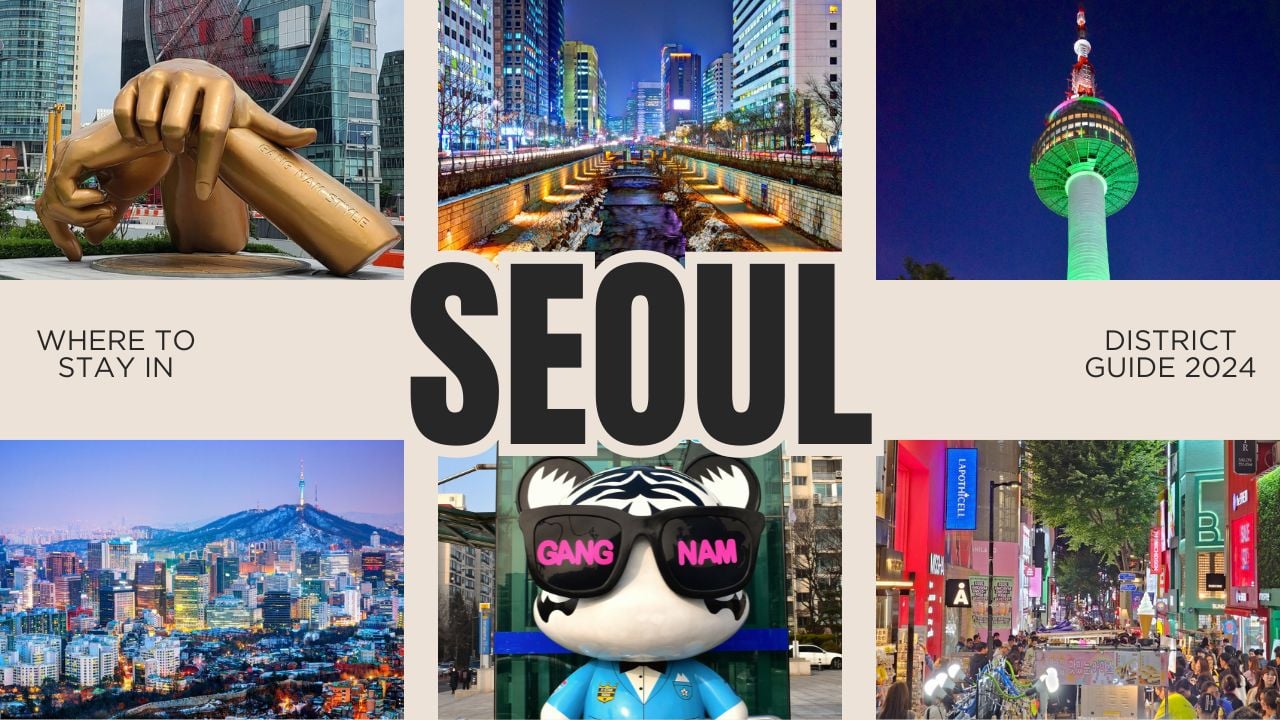
Where To Stay In Seoul 2024: District Guide For Tourists
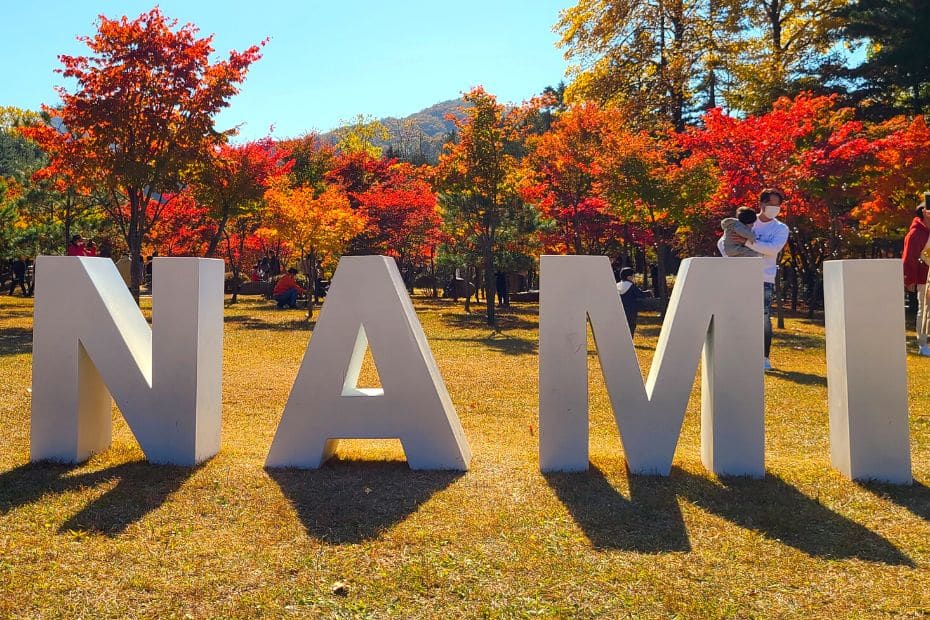
How To Get From Seoul To Nami Island By Car, Train, Tour 2024
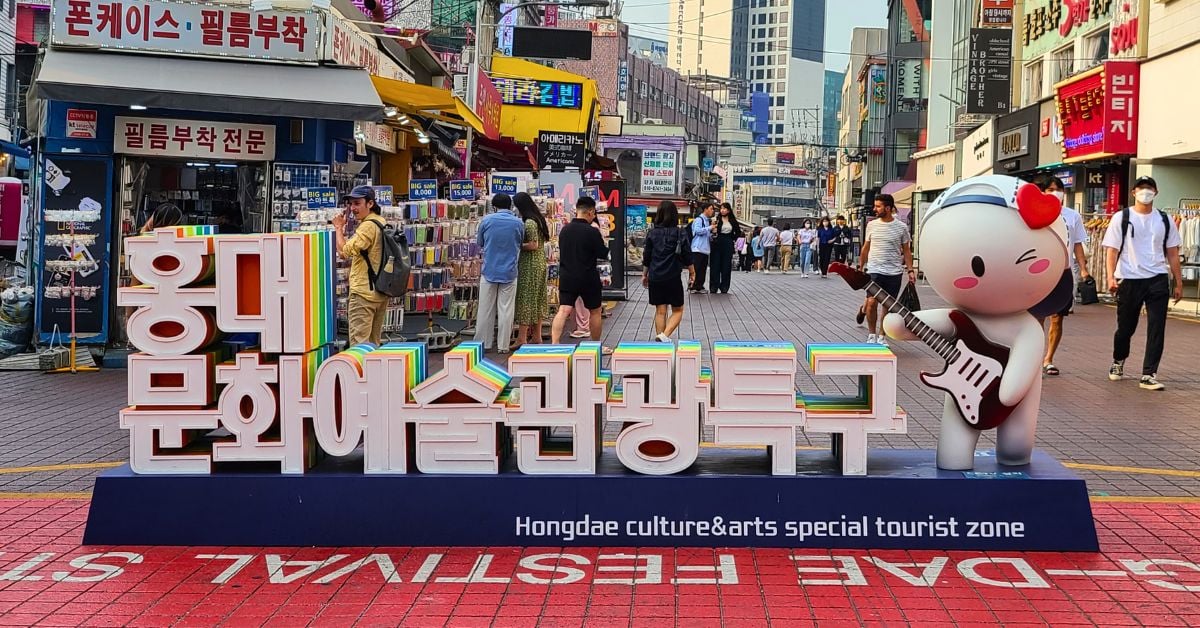
10 Best Hotels In Hongdae 2024: Seoul’s Coolest District
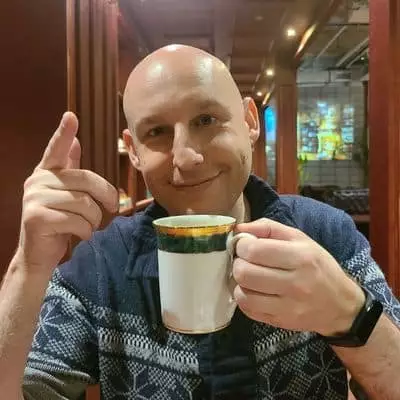
Hi! My name is Joel, I'm the author of In My Korea and writer of this article. I've lived, worked and travelled in Korea since 2015 and want to share my insights, stories and tips to help you have the best experience during your trip to Korea.
I love learning more about Korean culture, hiking the many mountains, and visiting all the coolest places in Korea, both modern and traditional. If you want to know more about my story, check out the ' about me ' section to learn why I love living in Korea.
4 thoughts on “Complete South Korea Travel Guide 2024: Korean Travel Tips”
This South Korea travel guide is a comprehensive resource for anyone planning a trip to Korea. It covers everything from entry requirements and travel tips to accommodation options and places to visit. Whether you’re a first-time traveler or have been to Korea before, this guide has something for everyone. The inclusion of the latest travel news and COVID-related updates adds to its relevance and usefulness. I appreciate the detailed breakdown of sections and the inclusion of quick links for easy navigation. Overall, this guide is a valuable tool for anyone looking to explore the wonders of South Korea.
Moderator – Nice Article! In My Korea
Thank for the great info! Could you please recommend any tours agency for a few day trips around Korea? I found a few , but they are pretty pricey!
Hi, thanks for reading. Klook and Viator have a good selection of tours in Korea with some of the best prices on the market. I’m not sure which tours you’re looking for, but they usually do day trips for less than $100 per day that cover popular tourist sights.
Leave a comment Cancel reply
Save my name, email, and website in this browser for the next time I comment.

19 Top-Rated Tourist Attractions in South Korea
Written by Freddy Sherman Updated Mar 20, 2023 We may earn a commission from affiliate links ( )
Author Freddy Sherman has traveled to South Korea multiple times, including a recent trip to Seoul in late 2022.
South Korea offers everything a traveler could want in a destination. It has a long and fascinating history, a wonderful culture, amazing food, friendly people, and an excellent tourism infrastructure (including a new high-speed rail system).
It's also a country of contrasts, with tourist attractions ranging from ancient mountaintop Buddhist temples like Bulguksa to the ultra-modern skyscrapers of Seoul, like the Lotte World Tower.
It also has one of the most unique attractions in the world that can be visited: a no man's land, part of a military border between two countries technically still at war (the DMZ). Discover the best places to visit with our list of the top tourist attractions in South Korea.
1. Experience Korean History at Changdeokgung Palace
2. explore beaches and history in busan, 3. visit jeonju, the former spiritual capital of korea, 4. view seoul from above at the n seoul tower, 5. see how people lived 600 years ago at the bukchon hanok village, 6. hike in the mountains at seoraksan national park, 7. look into north korea at the dmz, 8. check out korean art, history, and archeology at the national museum of korea, 9. have fun at korea's largest amusement park, lotte world, 10. gyeongbokgung palace, 11. ride the cable car at hallyeo maritime national park, 12. bulguksa temple, 13. visit the blue house, south korea's white house, 14. enjoy a beach getaway on jeju island, 15. walk through seoul's restored gwanghwamun gate, 16. stay overnight at jingwansa temple, 17. spend a night out in itaewon, 18. enjoy a meal in one of seoul's street food markets, 19. admire cherry blossoms at the jinhae cherry blossom festival, map of tourist attractions in south korea.
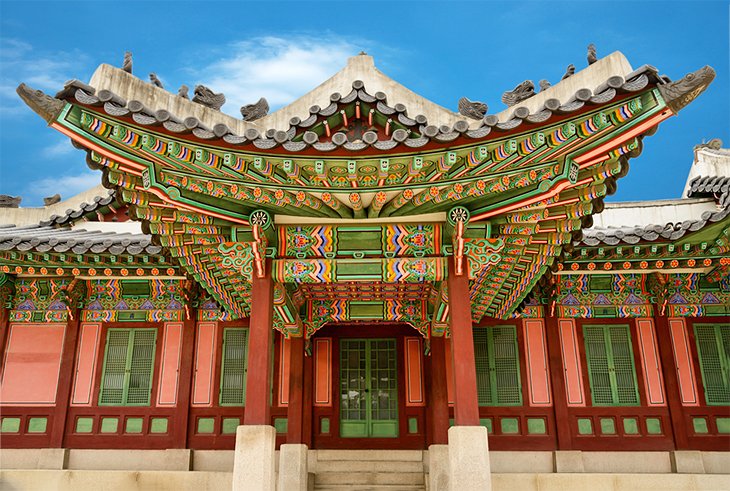
Of the five grand palaces built by the Joseon Dynasty in the 15 th century around Seoul, Changdeokgung Palace was always the preferred royal residence. It's where the king and royal family lived their daily lives.
The palace isn't just a single building, it's a complex of buildings, and each served a different purpose. Some are accommodations; some are libraries, dining rooms, and meeting rooms, among other uses. Be sure to spend some time in the 78-acre Huwon, or palace garden, located behind the palace. It's filled with pathways, green spaces, pagodas, streams, and lakes.
Address: 99 Yulgok-ro, Waryong-dong, Jongno-gu, Seoul, South Korea
Read More: Top-Rated Tourist Attractions in Seoul
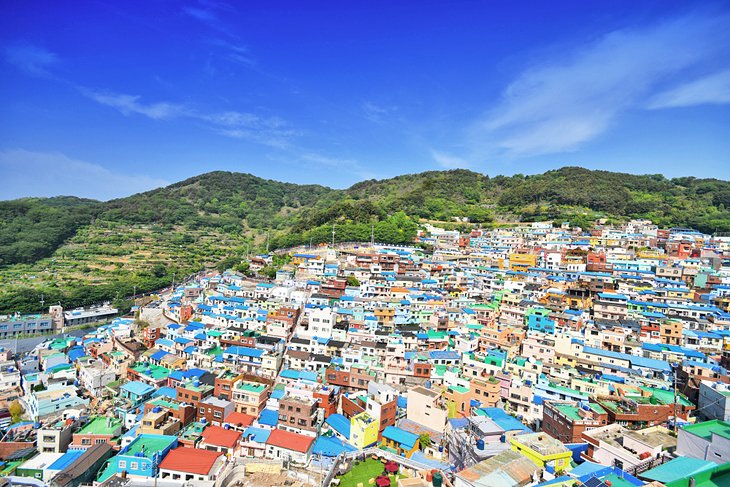
Did you know you can hit the beach in Korea? Busan is the second largest city in the country, and its coast is lined with some beautiful beaches and resorts. There's a lot of culture and history here, too. Be sure to visit the Beomeosa Temple and the hillside village of Gamecheon . Gamecheon is a European-style village on the cliffs above the sea, like Korea's version of Santorini.
Seafood lovers should be sure to visit Jagalchi Market , the country's largest commercial seafood market. Part of the market is open to consumers, and there are many small restaurants that will cook up your purchase, so you can eat it right here.
Getting to Busan is easy, it takes a little more than two hours from Seoul on Korea's KTX high-speed bullet train.
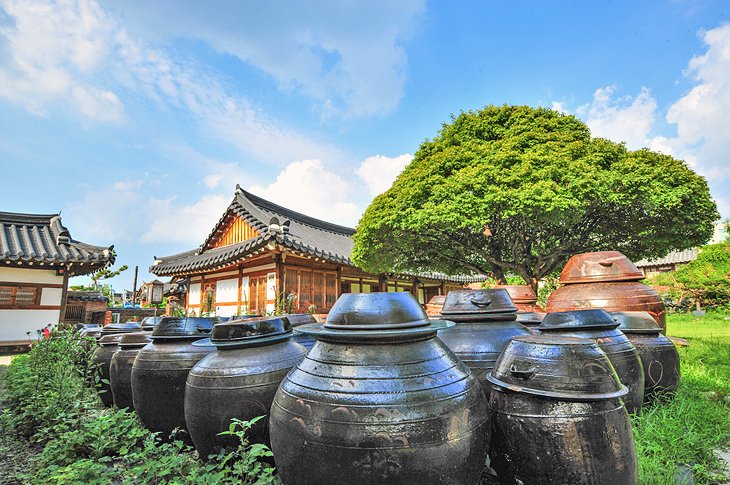
Jeonju is a very historic city, once the spiritual capital of the Joseon Dynasty, it's about 90 minutes by train from Seoul. It's home to many ancient temples and shrines along with a hanok village. These are found throughout Korea. They are preserved neighborhoods of ancient and old homes (hanoks), allowing visitors to get a feel for what life was like in ancient Korea.
Some of the homes in the hanok villages are open for tours, and others have been made into museums (and restaurants and lodging, too), but most remain private homes.
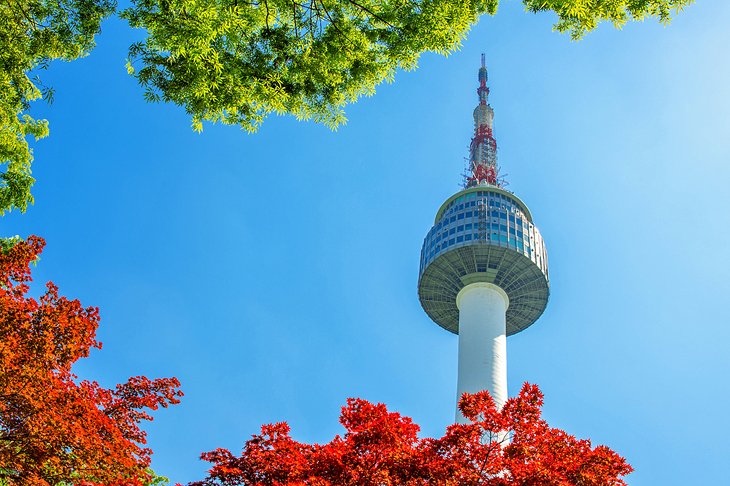
Yes, everyone visiting Seoul should go up in the city's iconic observation tower. Its position almost on top of a mountain, plus the height of the tower itself, gets you almost 500 meters above sea level and the city below.
But, leave some time to explore the surrounding mountain area. The tower is near the top of Mount Namsan, and the entire area is Namsan Park, which is run by the city. There are miles of hiking trails to explore, all within a few minutes of downtown Seoul.
The top levels of the N Seoul Tower include indoor and outdoor observation areas and restaurants. The exterior of the tower is covered in LED lighting, which is illuminated each night in seasonal light shows.
There's a cable car that takes you from the city (near Myeongdong) to the tower's base area. You can then hike from here. After climbing the mountain and riding on the cable car, leave time to explore the Namsan Hanok Village . These preserved historic villages, which are located all over Seoul and Korea, are re-creations of ancient Korean neighborhoods. This village includes five restored hanoks or traditional Korean homes.
Address: 105 Namsangongwon-gil, Yongsan 2(i)ga-dong, Yongsan-gu, Seoul
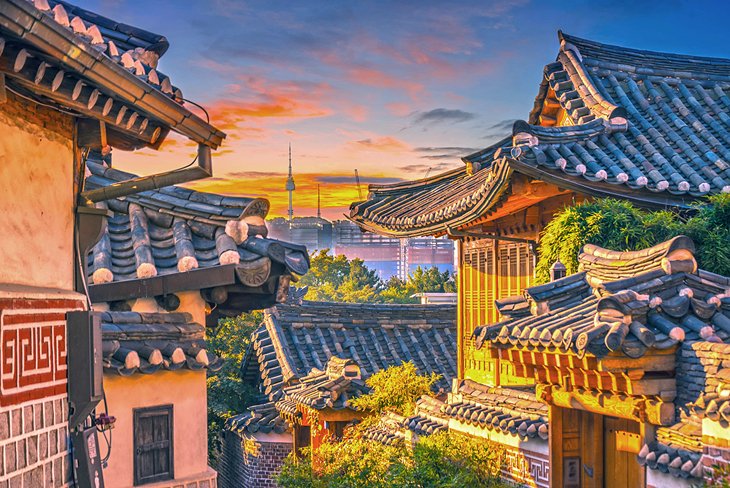
Hanok villages, which can be found in a few places in Seoul and around Korea, are living museums. They're restored and preserved ancient neighborhoods, some in their original location (like Bukchon) and some re-created with hanoks (traditional Korean homes) moved from elsewhere. They give visitors an opportunity to not only experience what it was like to live in a hanok, but also what it was like to live in Korea 600 years ago.
You can experience the tiny, narrow streets and also explore Korean culture, as many of the hanoks are museums or offer cultural demonstrations. Many are private homes, and some offer accommodations. That's what makes these village areas so special; they are true living history because many of the homes are privately owned and occupied by real local residents.
Bukchon Hanok Village is a popular place to explore, as it's right in central Seoul, in the area between the Gyeongbokgung Palace and the Changdeokgung Palace .
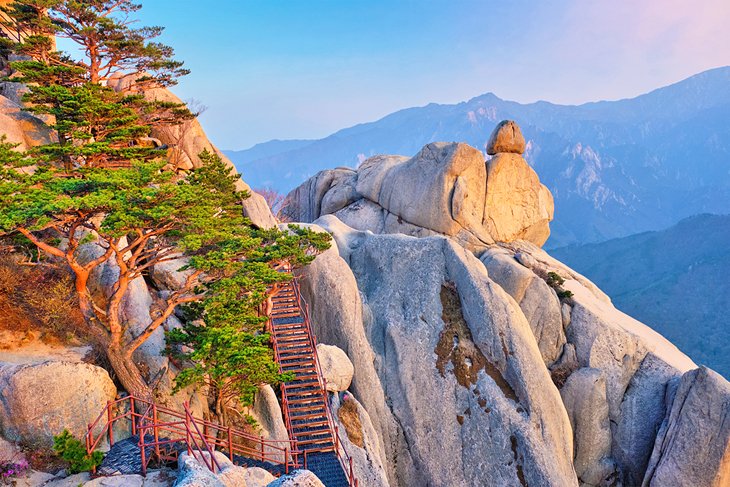
Like the Yosemite of Korea, this majestic natural wonderland (Korea's first national park) has mountains, lakes, waterfalls, streams, and miles of hiking trails that allow you to explore them.
This park is known for its natural diversity, as it has over 1,500 different animal species and over 1,000 different kinds of plants. There are also two Buddhist temples inside the park, one known as the " Temple of a Hundred Pools " due to all the ponds around it fed by mountain streams.
When you get tired of walking, there's a cable car that will take you up Seoraksan Mountain for some incredible views of the mountains and valleys. It takes about four hours by bus or three hours by car to reach the park from Seoul.
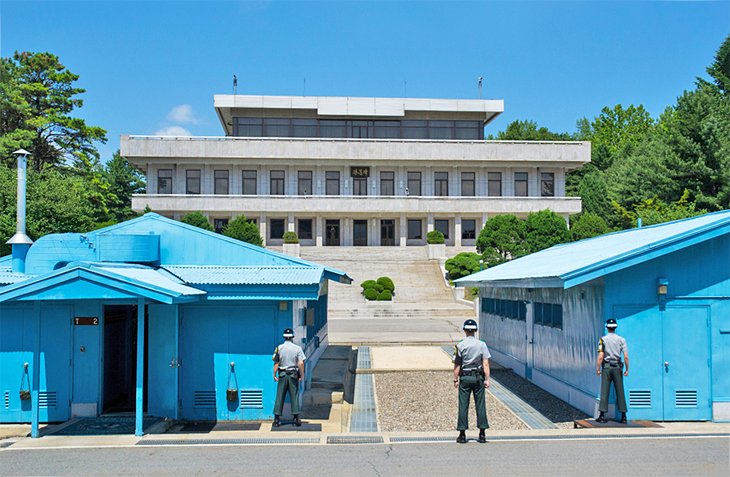
DMZ stands for demilitarized zone, and it's the no-man's land border between North and South Korea. Heavily guarded and mined, this strange area can be visited, but only on an official, guided tour. The official area is about four kilometers wide and is formally known as the JSA or Joint Security Area. It's probably the best place to visit in South Korea to learn about this conflict.
The No Shopping Half-Day Korean DMZ Tour from Seoul includes round-trip transportation from Seoul. Official DMZ tours include a visit to the 3rd Tunnel, dug by the North to facilitate an invasion of the South, and to the Dora Observatory, where you can look across no-man's-land into North Korea.
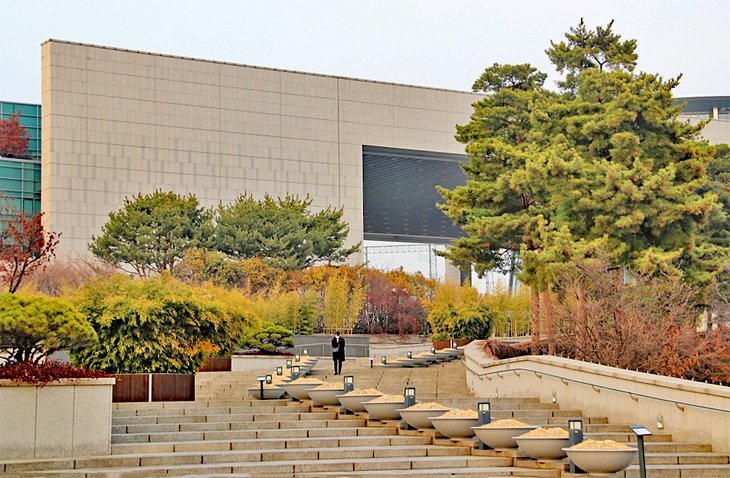
As a world capital, Seoul is filled with a lot of museums. The largest is the National Museum of Korea , and like the Met in New York, it's a place that really can't be explored in a single visit. The vast collection combines art, history, and archeology, presented to show the history of Korean culture and tell the story of the Korean people.
It's also an excellent attraction to see if you only have limited time in Seoul. The collection is beyond vast, as it goes back over a million years. It's fascinating, especially for families and kids as there's such a wide range of objects. Everything from Stone Age tools to modern artwork by Korean artists.
Address: 137 Seobinggo-ro, Seobinggo-dong, Yongsan-gu
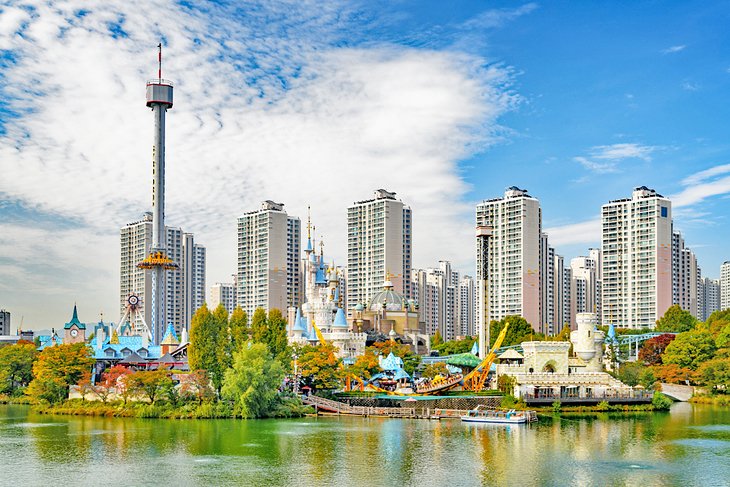
There's an amusement park right in the middle of downtown Seoul. It's a fun place to spend the day and a chance to immerse yourself in real Korean commercial culture. Lotte World includes a hotel, movie theaters (one with the world's largest screen), a folk museum with traditional performances, and other things to do like ice skating.
This theme park is at the base of the Lotte World Tower, the tallest building in South Korea and the fifth tallest building in the world. The tower has multiple observation areas and experiences, its own luxury hotel (the SIGNIEL SEOUL ), and a range of shopping and dining options inside.
A visit is fun for both kids and adults, and aside from the rides and attractions there's a lot of shopping and also artists' workshops and cultural performances to watch. There's the world's largest indoor theme park and an outdoor theme park area called Magic Island .
For a bigger, outdoor theme park experience, Everland is about 45 minutes outside Seoul and is Korea's version of Disneyland.
Address: Songpa-gu, Jamsil 6(yuk)-dong, Olympic-ro, 300, Seoul
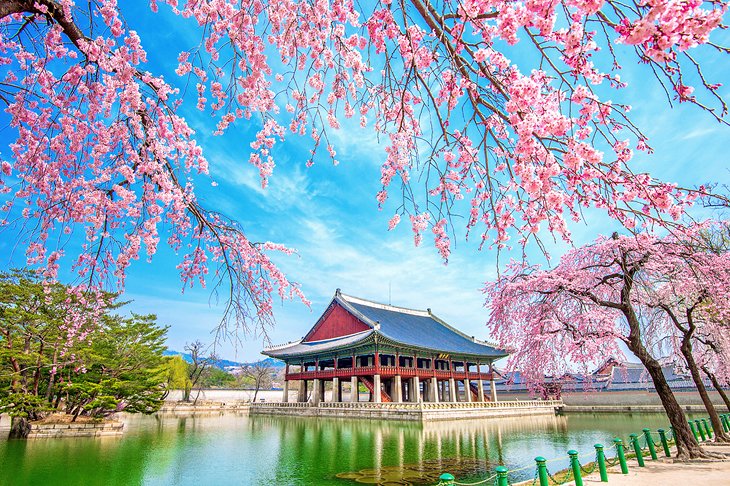
Also known as the Northern Palace, the large Gyeongbokgung Palace complex has gone through some incredible turmoil over the years. It was first built in 1395 during the Joseon dynasty, which built five grand palaces around Seoul. The palace has been bombed, destroyed, and rebuilt several times, occupied by the Japanese (first in 1592), and only finally restored in 1990.
Be sure to check out Gyeonghoeru Pavilion and Hyangwonjeong Pond , two of the remaining original structures from the Joseon period.
The palace compound can be explored on a guided walking tour . There are also two museums inside the grounds (the National Palace Museum and the National Folk Museum ), both worth a visit.
Address: 161 Sajik-ro, Sejongno, Jongno-gu, Seoul
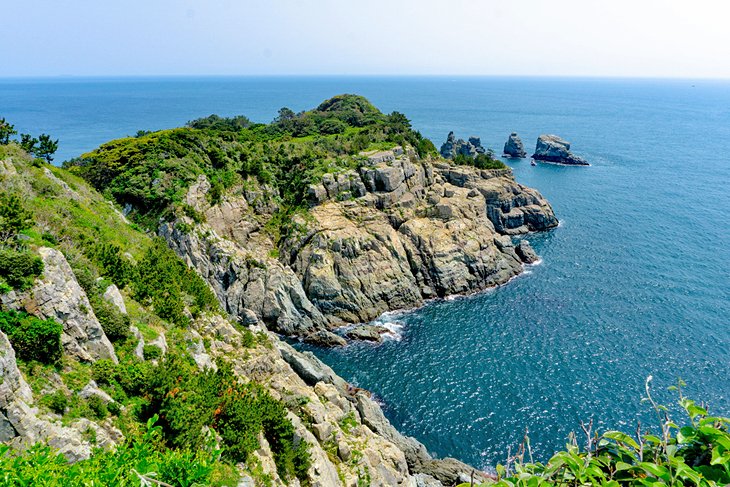
The ruggedly beautiful Hallyeo Maritime National Park includes miles of raw coastline on over 300 separate islands. Each has hiking trails with spectacular ocean and cliff views. The area also features a cable car, known as the Hallyeosudo Viewing Ropeway . It's the only dual-cable, automatic circulating gondola system in the country.
The ride is almost 2.4 kilometers long and takes nine minutes to reach the summit. You're rewarded with sweeping views of the countryside and coastline, including the Japanese island of Daemado. The park is about an hour by bus or car from downtown Seoul.
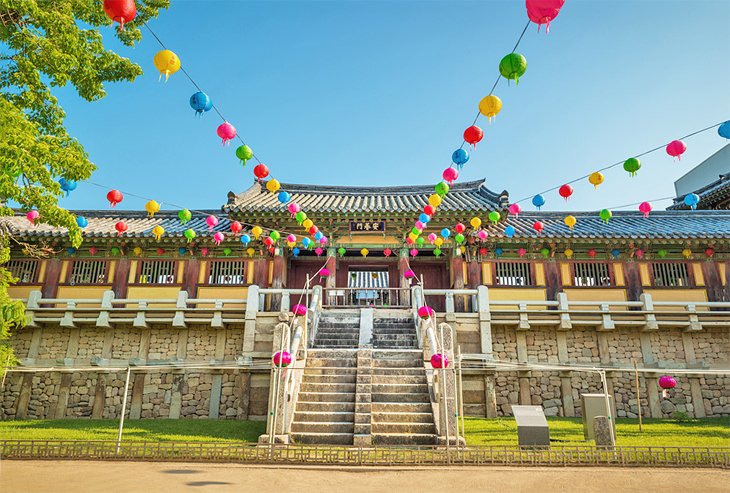
One of Korea's true must-see Buddhist temples, Bulguksa Temple is considered by many to be the country's most important. It's officially Historic and Scenic Site Number One as classified by the government. The temple is home to seven of the country's national treasures, sacred pagodas, and statues of the Buddha.
The temple is on the slopes of Mount Toham in Gyeongju, the ancient capital city of Korea. It's a city so historic, it's called a "museum without walls" due to all the historic sites and temples. Gyeongju is about two and a half hours from Seoul via the new KTX high-speed train.
Address: 15-1 Jinhyeon-dong, Gyeongju, Gyeongsangbuk-do
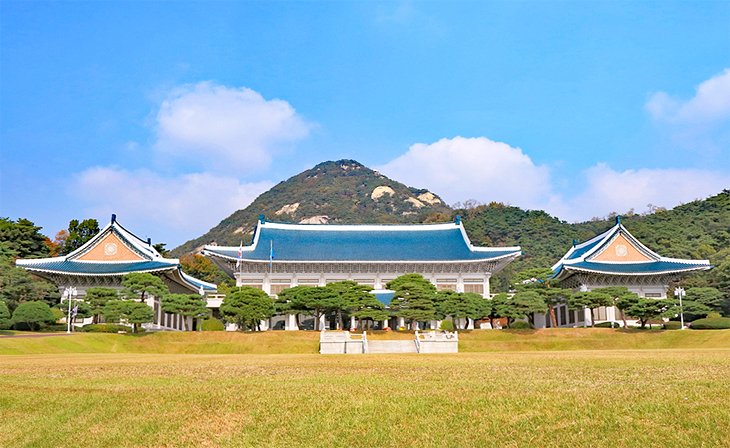
Named for the striking blue-tile roofs of its many pavilions and buildings, the Blue House, much like the White House, is the home of the Korean president. The very secure complex of buildings also houses many Korean executive government offices and official meeting sites. It's an interesting place to visit, as it gives you a behind-the-scenes look at modern Korean government and Korean formal culture.
A lot of what you see on the guided sightseeing tour are meeting rooms and official state reception rooms where foreign dignitaries are welcomed. Hour-long public tours are given, but you need to apply online in advance for a security check.
Address: 1 Sejongno, Jongno-gu, Seoul
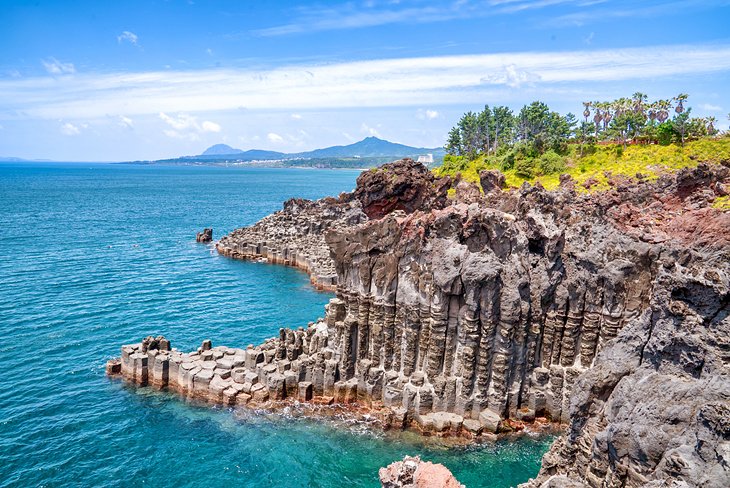
A very popular resort destination (think the Hawaii of Korea), this volcanic island is best reached via a quick hour-long domestic flight from Seoul. The island boasts beautiful beaches along with a lot of culture and history.
The highest mountain in South Korea (a dormant volcano called Hallasan) is here along with miles of giant lava tubes. The lava tubes, which can be explored, are natural air pockets in the hardened lava, the size of railway tunnels.
Be sure to visit Jungmun Beach to see the diving women. These are women who free dive hundreds of feet to catch different types of seafood. This tradition started centuries ago, when the local men were all out on fishing boats. The island also has hundreds of miles of hiking trails and a lot of hot springs and health spas.
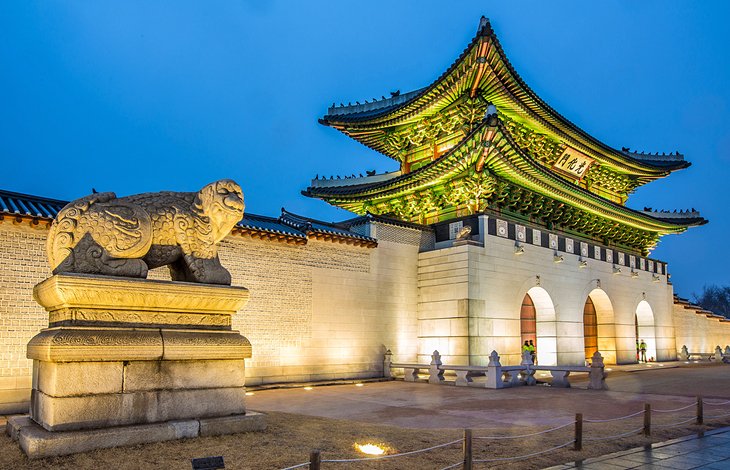
This attraction is a giant gate, formerly the opening in the fortress wall to the Gyeongbokgung Palace located within. It was originally built with the palace in the 15 th century but has been destroyed and rebuilt many times. Most recently in 2010, it was moved back to its original location in front of the palace and Gwanghwamun Square and restored with authentic materials using traditional techniques.
The previous restoration included concrete and other non-traditional construction techniques, but the new gate has been completely constructed with ancient techniques, using only native woods and handmade fittings.
Gwanghwamun Gate is home to the changing of the guards ceremony (performed since 1469), which happens daily (except Tuesdays) at 10am and 2pm. The area in front of the gate, Gwanghwamun Square, is a large public space often used for political and social demonstrations.
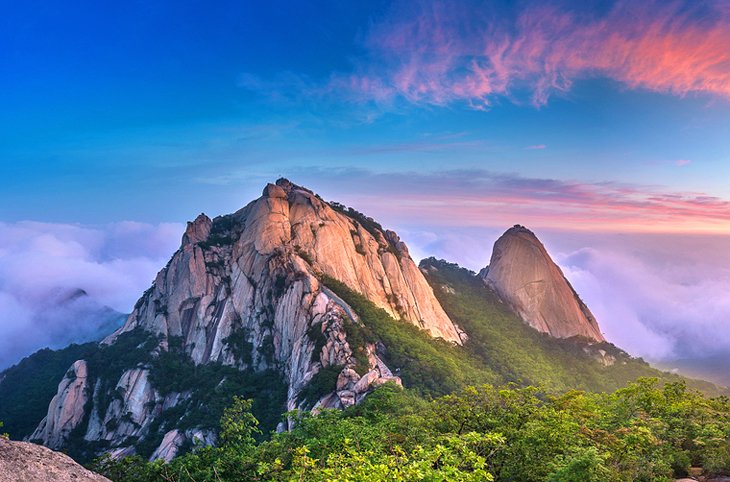
This ancient temple complex about 15 minutes from downtown Seoul offers both an authentic Buddhist temple experience (including a temple stay program) and a beautiful national park. The temple, which was first established at the site in 1,000 BCE, has several programs for visitors to learn about and experience Buddhism and the monk lifestyle.
The temple is a must-visit attraction for foodies, as they grow most of their own food on-site. The temple also prepares its own Korean specialties, like pickling kimchi in ancient, giant pottery jars. Jingwansa offers meals to the public (and extended overnight stays) and educational programs that show the sustainability of the ancient temple operation.
You can do a temple stay program, which includes an overnight visit, or just come for a meal (vegetarian) or to explore the buildings and shrines. You can also visit the area just to explore Bukhansan National Park , as the temple is inside it. There are miles of hiking trails and three peaks, which can be climbed. Aside from the mountains and forests and their spectacular scenery, there are also ruins of an ancient fortress along the hiking trails.
Address: 73 Jingwan-gil, Jingwan-dong, Eunpyeong-gu, Seoul
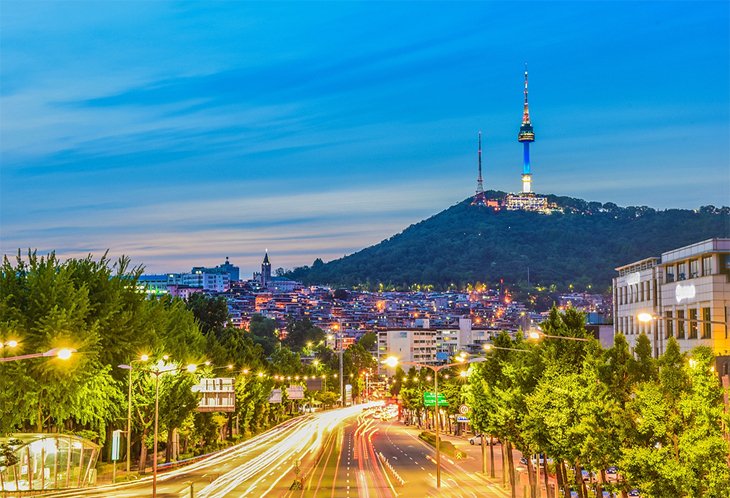
Yes, it's a touristy, ex-pat area filled with gift shops and street food, but the Itaewon neighborhood is a great place to just spend an afternoon wandering around. It's especially fun in the early evening, when residents also come out to grab dinner and people-watch. There's an energy here that defines the cosmopolitan city, and it's also a popular strolling spot for locals. You'll see a lot of Korean families, kids, and couples enjoying the shops and restaurants.
For those in search of authentic Korean food, this is not the place to come, but it is the place to come for international foods not widely available in Seoul. Things like Italian food, pizza, burgers, and American-style western barbecue.
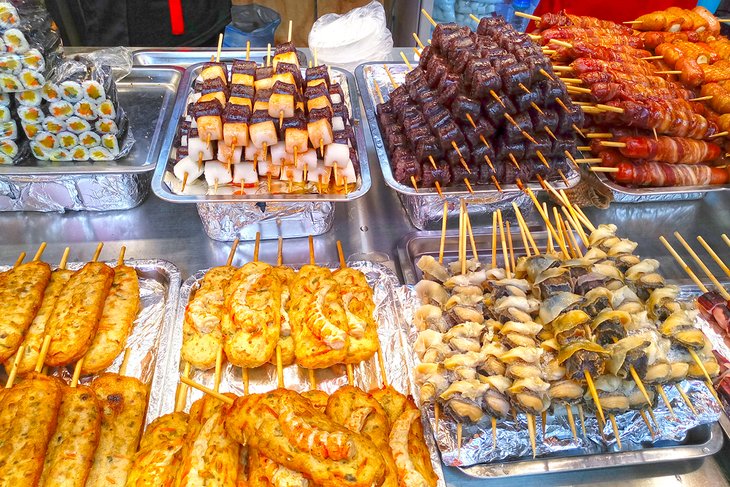
As one of the world's great food cultures, no visit to Korea is complete without enjoying some street food. The Gwangjang Market, in Central Seoul , is truly a foodie heaven on earth. The large covered market area is filled with multiple food stalls offering a complete array of Korean specialties. It's definitely one of the best places to visit in Seoul if you're hungry.
The cool thing about this market and most food markets in Seoul is that the majority of these food stalls are like little mini restaurants in that they have a row of stools and a counter, so you can sit and eat. It's also cool that most stands will offer you a free sample.
Stalls typically offer bindaetteok (mung bean pancakes), bibimbap (rice mixed with sauteed beef, vegetables, and gochujang red chili paste), gimbap (Korean sushi), sundae (blood sausage), tteokbokki (stir-fried spicy rice cakes), and various types of noodles.
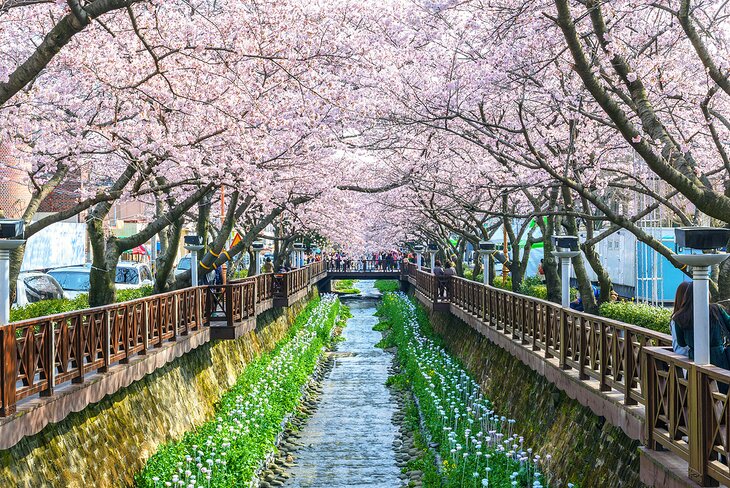
Boasting almost 400,000 cherry trees, some over 100 years old, Jinhae is the best place in Korea to enjoy cherry trees blossoming with flowers each spring. This small town, located along South Korea's southern coast, hosts the country's most popular annual cherry blossom festival. Over a million visitors a year come to Jinhae just to see the cherry blossoms.
Formally known as Gunhangjae (Naval Port Festival), the Jinhae cherry blossom festival takes place in late March or early April, depending on when the trees are in flower. Head to Yeojwacheon stream and Jinhae's Gyeonghwa train station for some of the best blossom viewing. You can also enjoy the festival's food markets, public art installations, and live performances.
Getting from Seoul to Jinhae is easy via South Korea's high-speed ATX train — the journey takes just under three hours.

10 Reasons South Korea Should Be Your First Trip Of 2023
Start your 2023 travels off on a high note by heading to the fun, quirky, and historically rich land of South Korea.
2023 has officially begun, and therefore, so have this year's travel plans for many people. For those who are still searching for where to take their first trip of the new year, South Korea should be at the top of that list. As of October 2022, South Korea is finally reopened for tourism with minimal restrictions after a long few years, and they're welcoming visitors with open arms.
Beat the influx of crowds before it becomes the popular destination it once was, and consider these 10 reasons why South Korea should be every traveler's first trip in 2023.
10 It's Still Shoulder-Season
Visiting places in high season is so 2022. Why visit a place when it's guaranteed to be jam-packed with people, and likely jacked up in prices? High season in South Korea doesn't start until June, so there's plenty of time to plan a trip without being there during the busiest time of the year.
If one is going to travel all the way to South Korea, why not pair it with a cherry-blossoms trip in Japan, and go to Korea in late March or early April?
9 It's Generally Safe
Safety is subjective to each traveler's experience, but South Korea is generally a safe place to travel to. This is not to minimize anyone who has had an unsafe experience in South Korea, however, the odds are in travelers' favor when it comes to safety.
Crime is overall low, and though there's always the risk of petty crime (i.e. pickpocketing), South Korea is a destination where, overall, travelers can feel at ease.
RELATED: 13 Of South Korea's Most Famous Cities To Visit
8 It Won't Totally Break The Bank
While South Korea is not necessarily the cheapest place to travel to, it's certainly far from being the most expensive. Budget hotels can be found in Seoul for under $40/night, and hostels in single rooms in hostels with a shared bathroom are as low as $19/night in the city center.
Meals are generally meant for sharing, so even if the price seems a little high (which it seldom will), know that it'll cover at least two persons' food.
As always, there are ways to do expensive destinations on a budget with just a little bit of creativity and extra planning.
7 The Food Is Delicious
Korean food is out of this world delicious . From fragrant flavors of kimchi to the sizzling bowls of bibimbap, Korean fare is full of packed-with-a-punch flavor.
If in Seoul, head to Gwangjang Market for some of the best local specialties. Street food in the popular neighborhood of Hongdae is a must, and if in Jeju, try black pork and tangerines: both specialties to the island.
RELATED: Enjoy A Local Experience At These 10 Traditional Accommodations In South Korea
6 It's Great For A Group Trip
South Korea is a seriously social place. Meals are almost always served in family-style portions, large groups of friends are constantly out together at all hours of the day, and with Seoul and Busan's bustling late-night scenes, it's better to be in a group.
This is why South Korea is arguably one of the best places in the world for a group trip. It was practically designed for it! In fact, some high-end restaurants won't even seat solo travelers due to portion sizes and prices being based on a minimum of two people.
5 ...Or For A Solo Adventure
All of that mentioned above is not to say South Korea should be written off as a solo destination. Due to its safety, street food, and yes, even its social atmosphere, South Korea is indeed a great place to travel solo to.
Solo travelers won't have any problems meeting friends in this fun and friendly country, and they will likely feel safe the entire time they're visiting.
4 The Shopping Is Top-Notch
"Shop 'til you drop" might as well be the slogan of South Korea, particularly for the larger cities. Street shopping in Seoul is fun, affordable, and offers extremely cute and unique products and clothing.
No trip to Korea is complete without buying some beauty products to take back home. Korean skincare products are some of the best in the world and can be purchased at an affordable rate in Korea.
3 It's Historically Rich
One of the most intense nations in the world, both politically and geographically speaking, is North Korea. Bordered by South Korea, visitors who are interested in learning more can head north up to the Demilitarized Zone, better known as the DMZ .
Only 2.5 miles wide, visitors will be a stones-throw away from North Korea. American travelers in particular cannot visit North Korea, so this is a great alternative for a hungry, bucket-list adventure traveler .
Learn about the rough past that divides the North and South, and look through binoculars to set eyes on actual land in North Korea.
2 The Temples Are Stunning
Hopping around Korea is easy since the nation is geographically fairly small , and it is worth it just to see some different temples around the country. Visit Tongdosa in Yangsan-si, Beomeosa in Busan, or the country's biggest temple, Bongjeongsa in Seoul.
No matter which temple, or temples, visitors choose to explore, they should be prepared to be totally stunned at the sheer beauty that each one holds.
1 It's Home To A New Natural Wonder Of The World
When planning a visit to South Korea, travelers would be remiss if they limited their time only to populous cities such as Seoul and Busan. Get out of the city, even if for a few days, and head to Jeju Island, officially declared a New Natural Wonder of the World.
Jeju Island offers dramatic views of volcanic landscapes and is best explored by renting a car. There are many fun activities to partake in in Jeju that can easily be done in just a few short days .

Borders Of Adventure
Leading Culture and Adventure Travel Blog by Becki Enright. Looking at the world with a different angle to change perceptions of misunderstood places, for the best in travel.
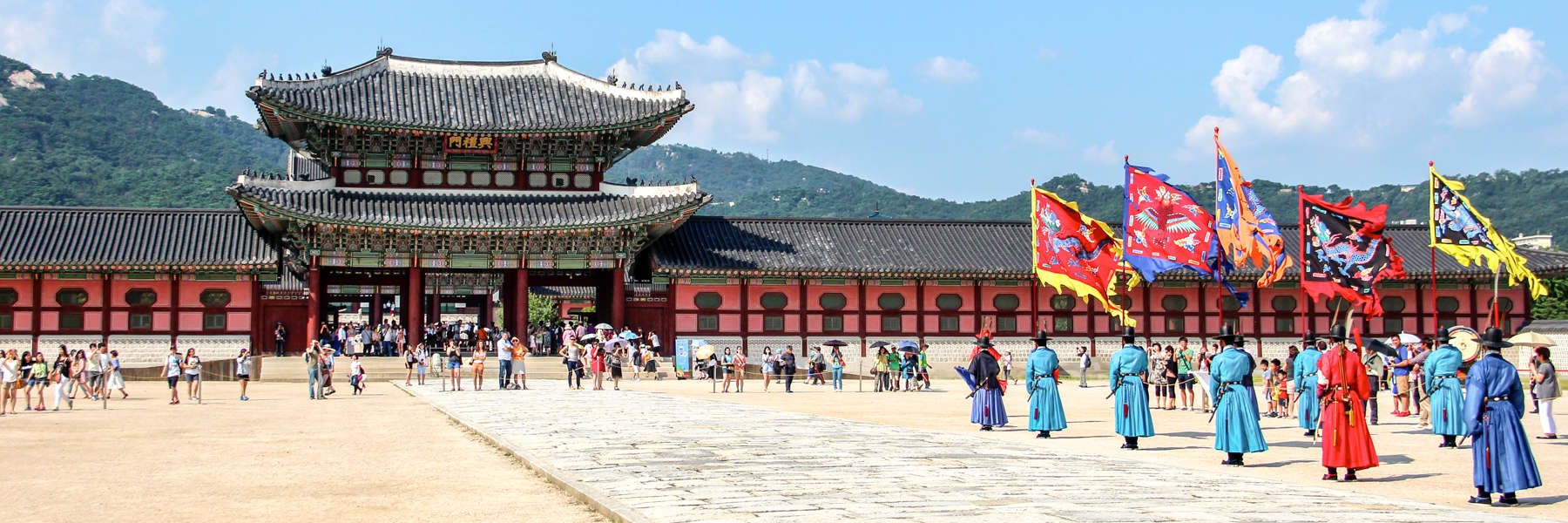
Cultural Travel , South Korea
Travelling to South Korea? What Seems Underwhelming is Misunderstood
Disclaimer: This post contains affiliate links to handpicked partners, including tours, gear and booking sites. If you click through or buy something via one of them, I may receive a small commission. This is at no extra cost to you and allows this site to keep running.
Travelling to South Korea seemed underwhelming. Yet it’s misunderstood. Here’s how to see Korea and find the best of its tourism offering.
I had a multitude of reasons for going to South Korea.
Korea is a split peninsula. After being in North Korea, I wanted to visit South Korea to understand their differences.
South Korea always seemed unknown, a country that people rarely extensively travel outside the capital of Seoul and the beach town of Busan. I wanted to travel further.
South Korea is talked about in great detail by westerners who moved there. I wanted to see why.
South Korea remains a country marketed towards its regional neighbours who flock here because of the world-renowned K-Pop and K-Beauty. Only until the recent success of K Dramas like Parasite and Squid Game has South Korea been propelled further on the world stage. Pop culture is always a draw.
Altogether, South Korea can be tricky to unravel, harder to travel and harder to understand. Here’s why.
Travelling to Korea For the First Time?
Korea vs japan don’t do this. ever, japanese colonial rule, the industrialisation of south korea after colonisation and the korean war, cultural customs of south korea, south korea tourism – is it a focus, andong & hahoe folk village, gyeongju burial mounds, jeju island, how to enjoy a trip to korea, korea rail pass, guide books and further reading, book a hotel in korea, don’t want to travel korea solo book a small group tour, plan and pin it.
Being in Korea will bring a lot of cultural and language barriers, coupled with the lack of tourism infrastructure, but as a visitor, you should adapt. As a modern country, the general infrastructure is great, so there’s no issue with getting around, navigating or finding accommodations whatever town or city you find yourself in.
Fairly quickly I realised I wasn’t overwhelmed by South Korea – which happens in some places. It’s not necessarily a bad thing; more a matter of personal opinion but I like to try and understand why.
I came to realise that South Korea is a destination that needs adequate time and dedication in getting to know and understand it. Especially when you look at its history of oppression.
Seoul is a city that needs a deeper dive to find its hotspots and then it clicks. As I passed through new towns, I realised that locals had told me things prior to my arrival which were filled with an abundance of beautiful pride, but which in reality for a tourist visitor were nothing more than just a residential town with one or two areas of interest. However, food enthusiasts will find smaller towns pack a punch when it comes to localised Korean cuisine.
You need to research heavily on where to go in South Korea and what the cultural highlights are. You have to work hard to find it.
Whilst certain parts of Korea did not live up to my initial expectations, my time there did come with some great memories times and very particular destinations that stand out. I do have a desire to return to see it differently, but more so to really spend some time in some of the country’s 22 National Parks and seven mountains. That kind of nature accolade is impressive, and I only scratched the surface of it.
After one month in the country, I pulled together this guide on how to travel to South Korea and make the most of it, alongside my top picks on where to visit for your first time there.
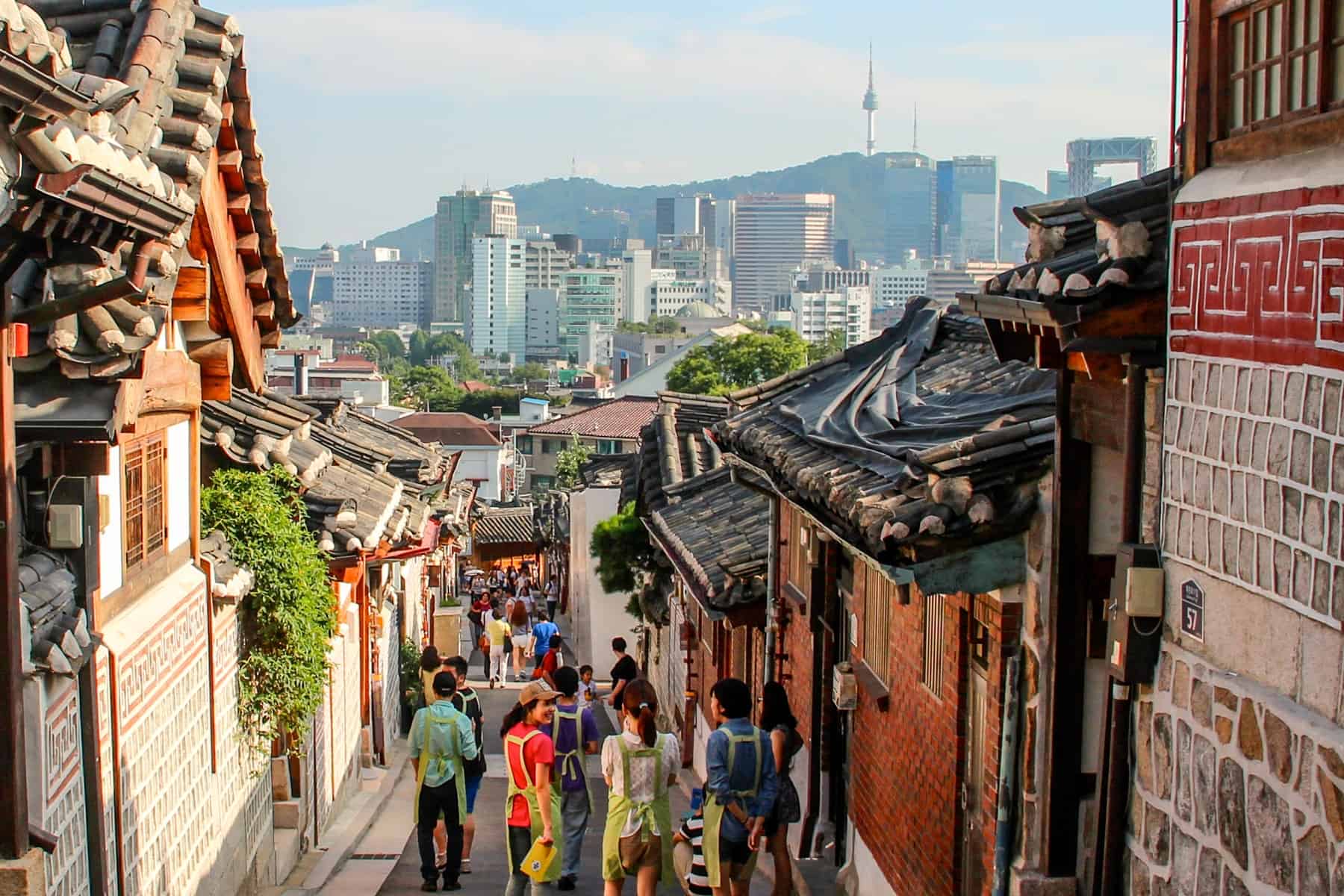
Travelling to South Korea? What Seems Underwhelming is Misunderstood.
My biggest mistake was in visiting Japan first and the ongoing Korea or Japan debate is inevitable, but it’s also wrong.
Sure, Japan was incredible and after spending one month there and I was on a huge come down. Travel to South Korea felt less appealing in comparison – it wasn’t as ‘seemingly’ vibrant and eccentric as its neighbour. I missed Japan and its madness. South Korea feels much more relaxed and less hurried, so it just takes time to adjust to the different tempo.
Visiting Japan first is a hindrance to having a fresh perspective on Korea.
Especially when given the brutal history between the two countries, you can see how anti-Japanese sentiment is rife in Korea and it pays to have a better understanding of their differences.
Travel to South Korea – Understanding the Reality
This might be an alternative South Korea travel guide in that I’m not listing all that is wonderful and 100% perfect. Yet, we are all guilty of too easily dismissing travel to a destination without looking at its current state in context. In the case of Korea, this is important.
South Korea suffered under 35 years of Japanese colonial rule (1910-1945), which included ruthless military rule, censorship, discrimination and forced labour. It’s a part of the collective consciousness today.
Following the three year Korean War, which began in 1950 when the North invaded the South, the country was to grow into a major economy. That came after decades of invasion and colonisation of Korea by Japan during 1910–1945.
The country was destroyed, and after a long period of political instability, General Park Chung-hee’s military takeover in 1961 led to the formation of a new government. To many, he was seen as a ruthless dictator, whose rule saw many waves of abuse of human rights, yet the economy under him developed significantly, known as ‘The Miracle on the Han River’.
This term refers to the post-war industrialisation of Korea and the modern-day success story Korea is known for. A period which saw immense technological advancement, rapid urbanisation (including the Seoul subway system in use today), booming high standards of living and educational reforms, the hosting of huge sporting events including the 1988 Summer Olympics and the 2002 FIFA World Cup, as well as placing the country on the global stage with the formation of international companies including Samsung, Hyundai and LG.
Whilst many remain divided in opinion about his time in power, the country’s development is evident. South Korea is an economic miracle in its own right.
Older generations in South Korea here have lived through the rapid change from the aftermath of war, creating a solid work ethic in all generations. Not only that, but locals informed me that culturally they are private people – community and family-focused – and do not need to take an outsider into their circle quickly.
Therefore, welcoming tourists in South Korea with open arms is not instant. And that’s ok too.
That doesn’t mean you won’t meet those who are an exception to the rule, who are so excited to see someone visit their hometown and want to show you every aspect of it. It’s just not an occurrence that happens in abundance.
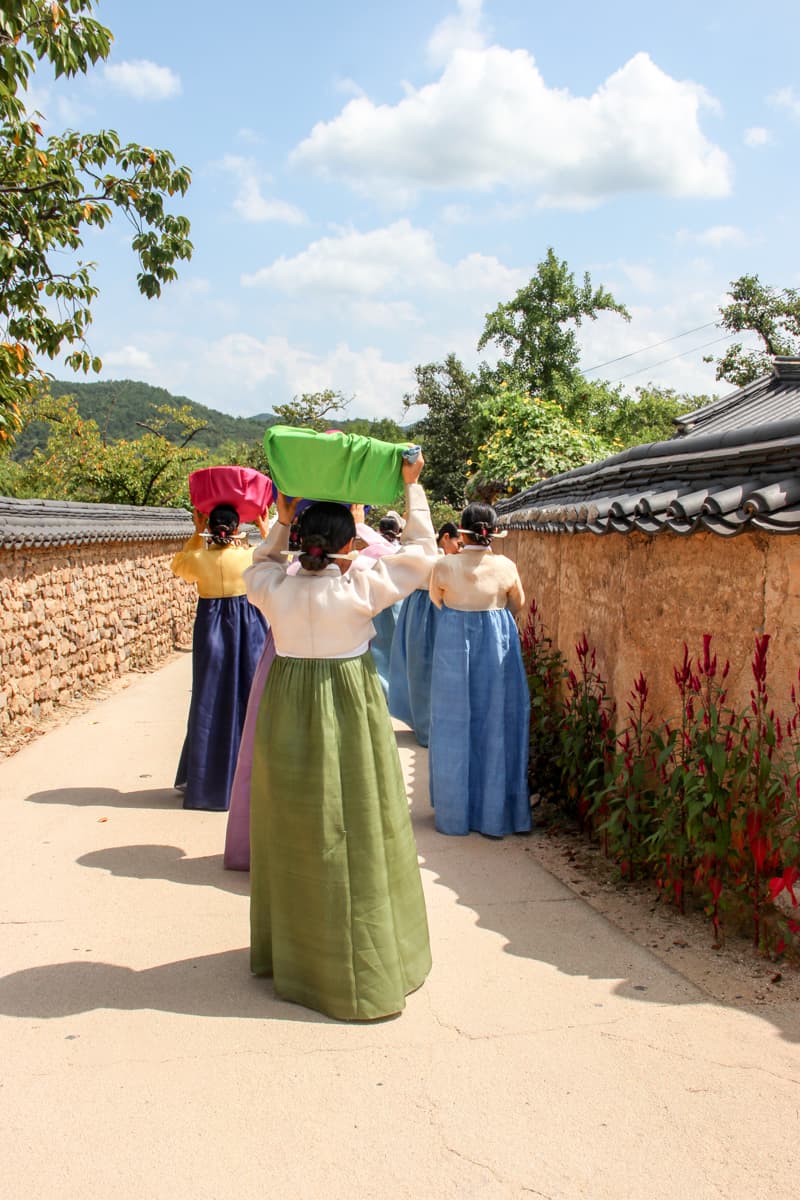
Korean women in hanbok (traditional Korean clothing).
Tourism in Korea isn’t a core lifeline like how it is in, say, Thailand or Cambodia. South Korea rose from the ashes and became a strong and prosperous nation, albeit at great sacrifice. They are a nation of staunch hard workers; their children study all day (and most of the night). There’s huge pride in that.
Korea is Asia’s fourth-largest economy, with a high standard of living. Essentially, they don’t need tourism to thrive, so the notion of tourism is misunderstood and rests significantly on those wanting to visit the DMZ border.
READ MORE: Visit the DMZ in North Korea and South Korea – The Story of Both Sides
READ MORE: Travelling to North Korea – The Truth of Visiting the DPRK – My Experience
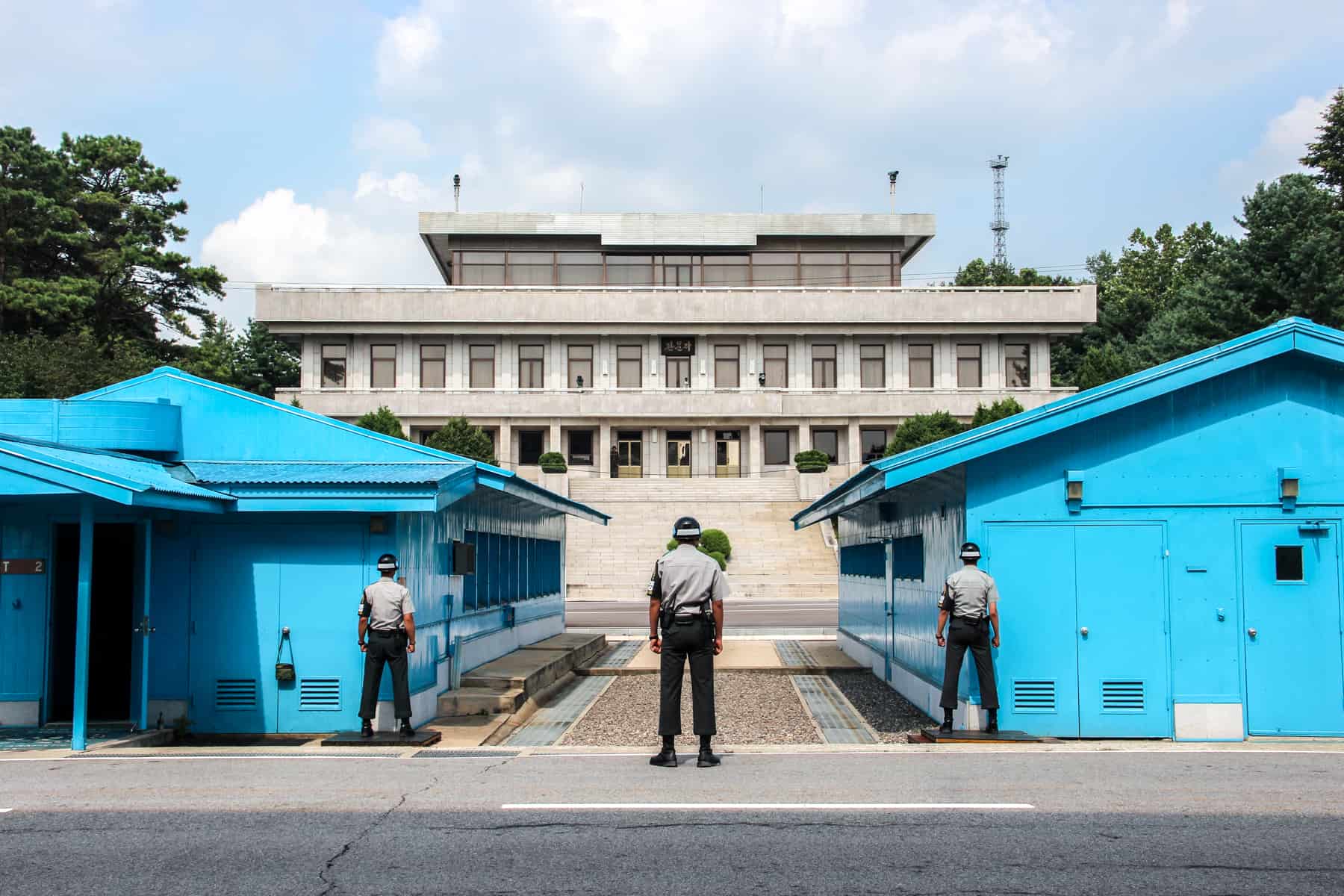
South Korean Guards at the DMZ.
Places to Visit in South Korea
With all this in mind, I made it a personal mission to not immediately dismiss travel to South Korea and leave too early. I knew there were plenty of things to see and do in Korea emitting some level of cultural or adventurous interest and in each destination, I tried to find something positive, picturesque or historically relevant.
I didn’t have any particular South Korea itinerary, instead, I just landed in the capital ready for a sporadic adventure.
I grew to love the arty side of Seoul, choosing the funky student-filled Hongdae as my base and enjoying the atmosphere of Itaewon and Gangnam that is best seen when the sun goes down.
From huge markets, old villages, historical palaces, entertainment districts and shopping plazas, there was always something new to try to seek out daily. The neighbourhoods are diverse, and that alone, alongside the array of cafes and coffee roasters, will keep you occupied in the capital.
READ MORE: Places to Visit in Seoul – The Soul Capital of South Korea
Day Trips and Tours in Seoul
- Enjoy a tour of Seoul by e-bike . learn about the city’s history, stop for Korean snacks and get to the best viewpoints.
- Get acquainted with the city on a half-day Seoul city highlights tour , including Gyeongbokgung Palace.
- Known for its abundance of nightlife, take a pub crawl tour of Seoul
- Visit Nami Island and the Garden of Morning Calm on this full-day trip.
- Visit the DMZ on a full-day tour with the option for a half-day trip.
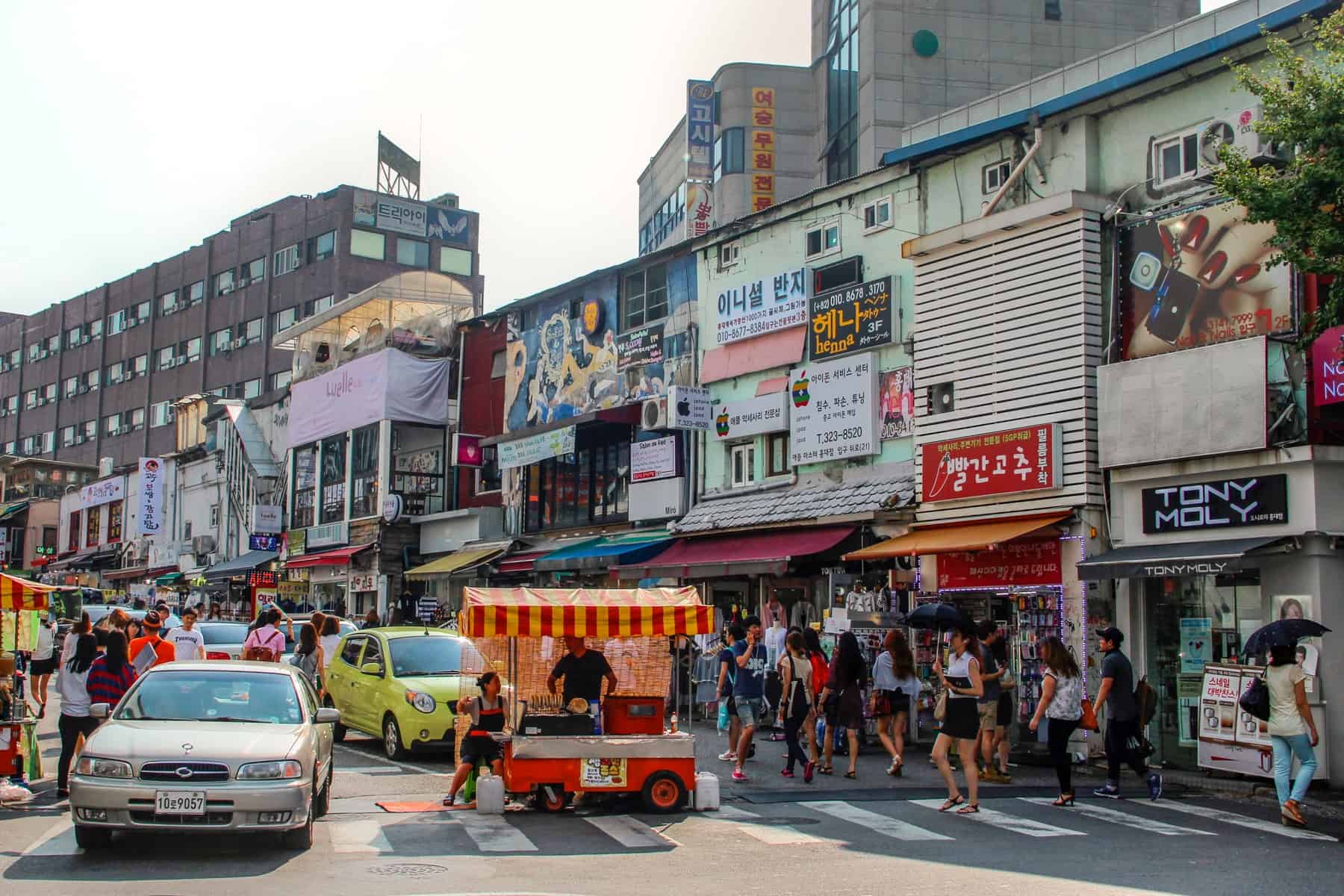
Namdaemun Market in Seoul.
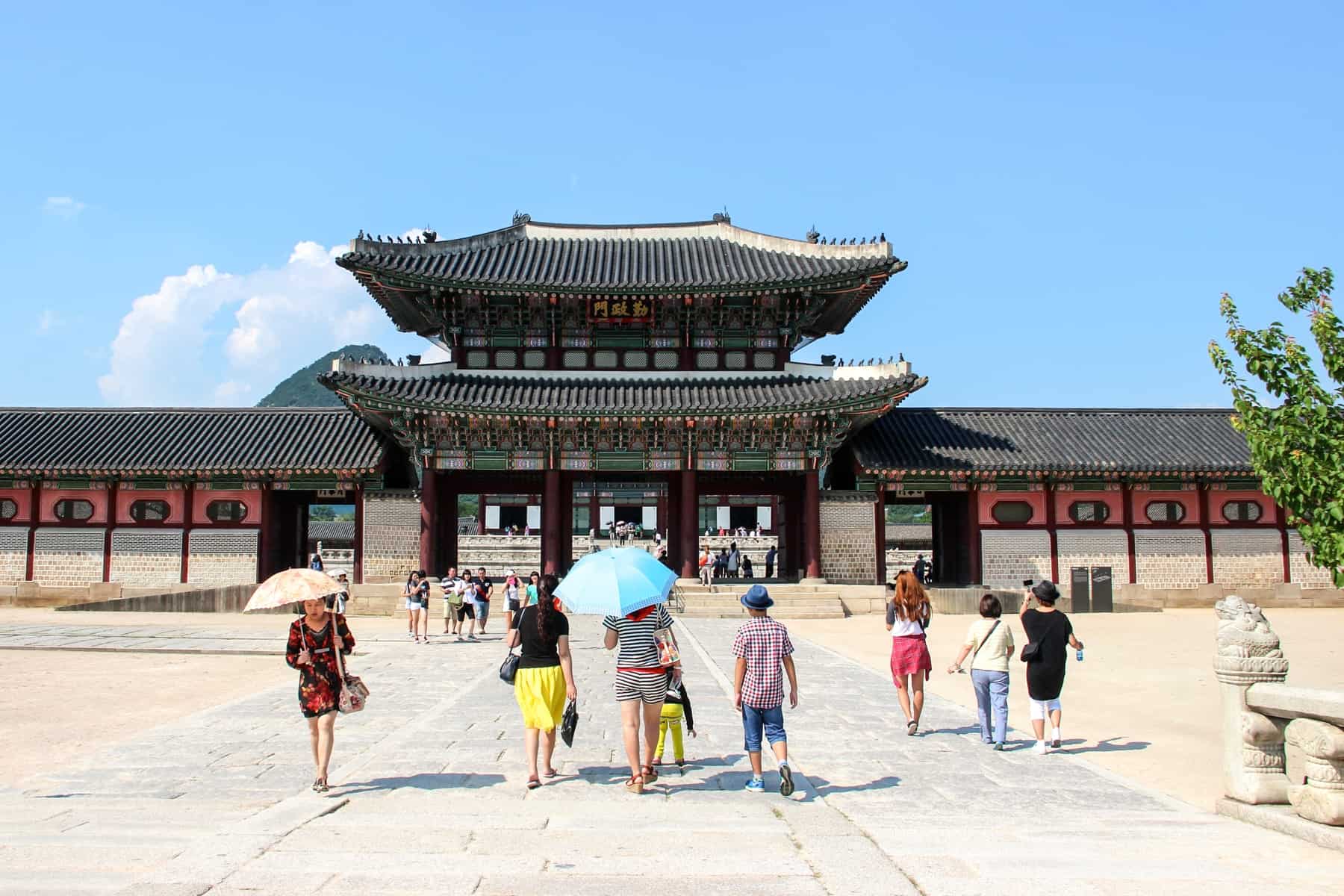
Gyeongbokgung Palace in Seoul.
I visited Andong with the purpose of checking out Hahoe Folk Village – one of Korea’s few ‘preserved villages’. While Andong itself doesn’t necessarily attract visitors, its historical points of interest, reached by various long bus routes, did not disappoint.
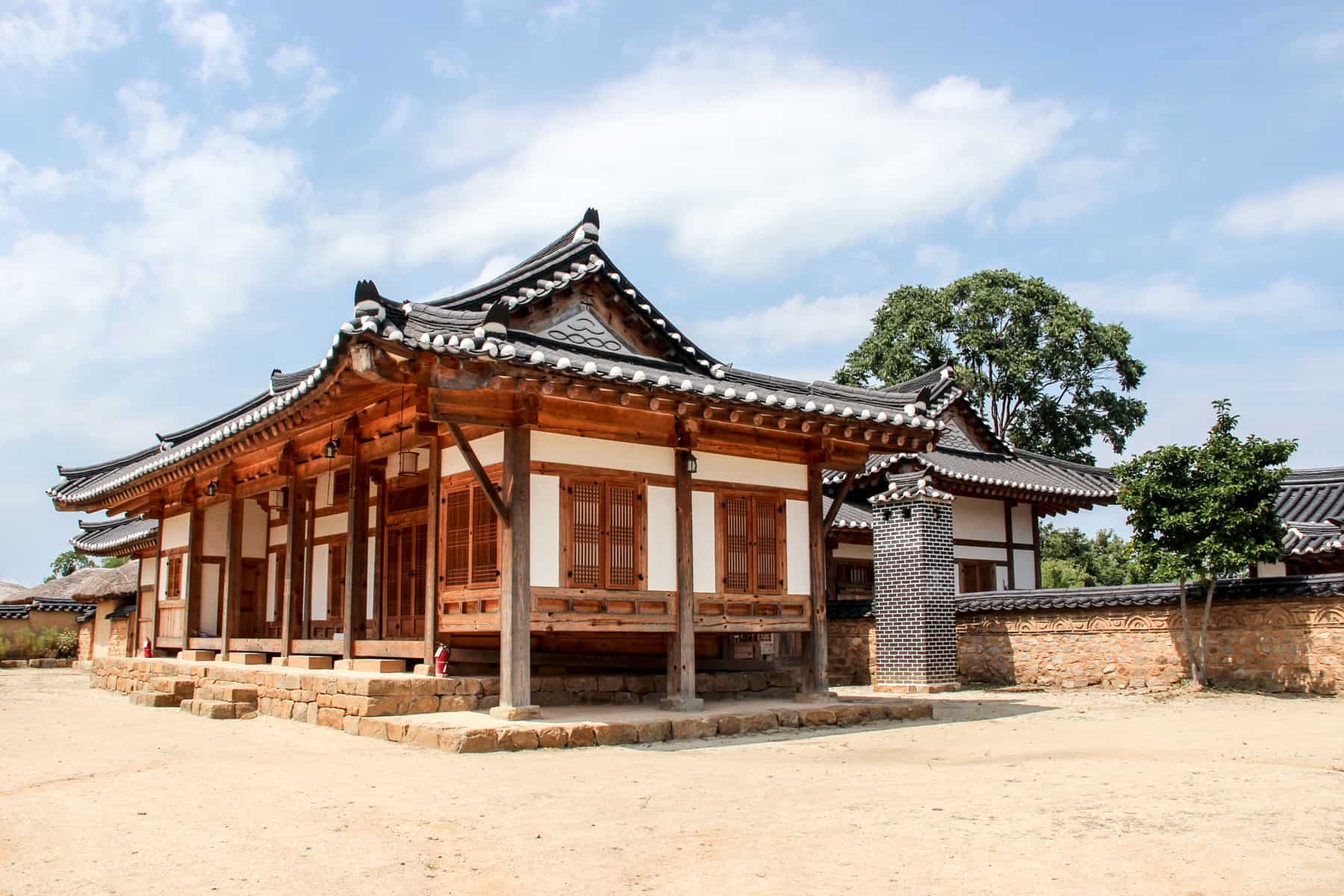
One of the traditional houses in the preserved Hahoe Folk Village near Andong.
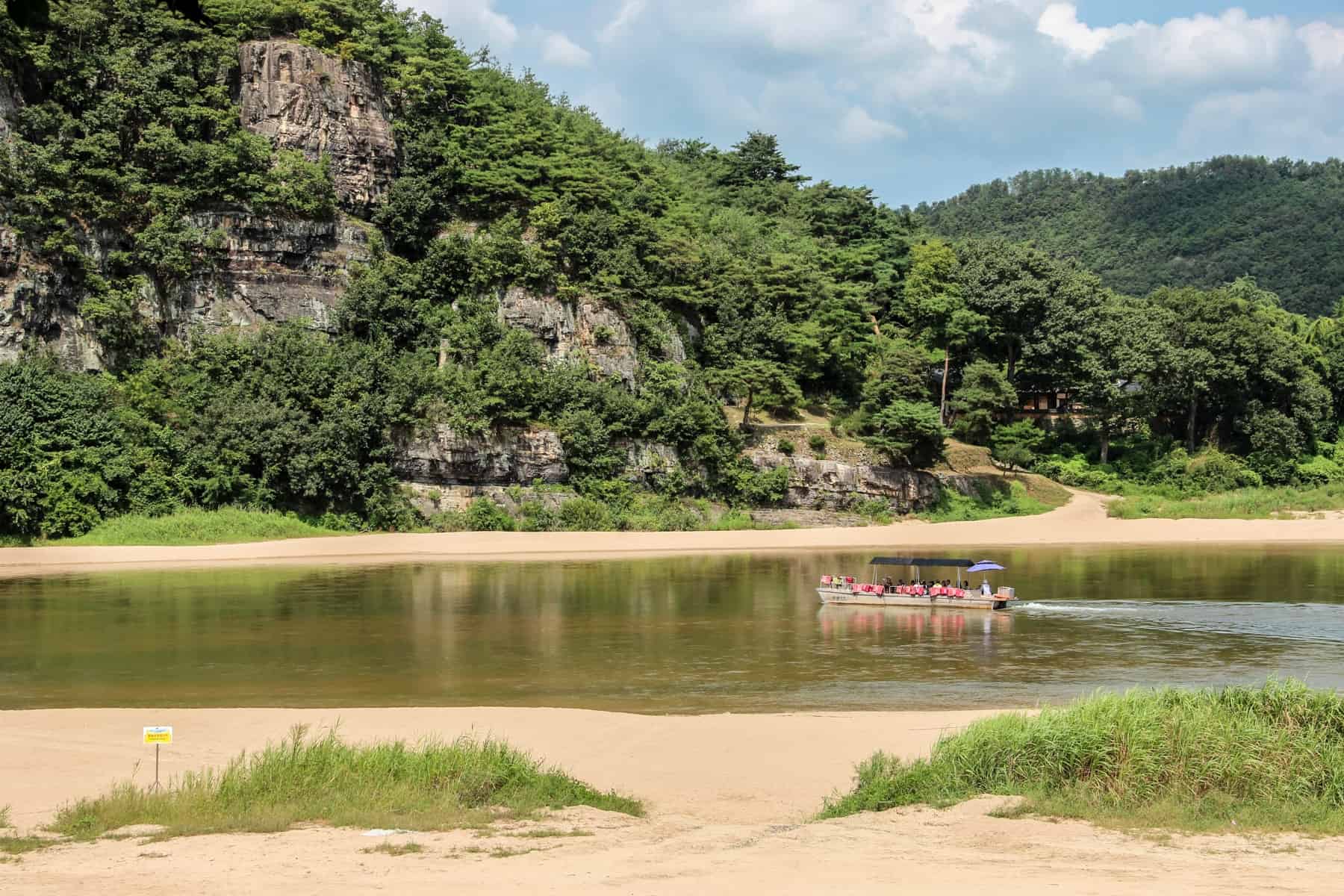
Nature in South Korea, accessible from Andong.
A local romanticised Daegu as a place full of old historical buildings and hidden picturesque spots – we sat for an hour marking key highlights on a map – but I was left deflated when I realised it was nothing more than a big city. However, it was an important insight into the different parts of the country and how the experiences of travelling in South Korea vary greatly.
Luckily, there is now a Daegu City Sightseeing Hop-on Hop-off Bus so you can easily see the main attractions.
Often, overnight stops in local towns are a great way of breaking up a long journey.
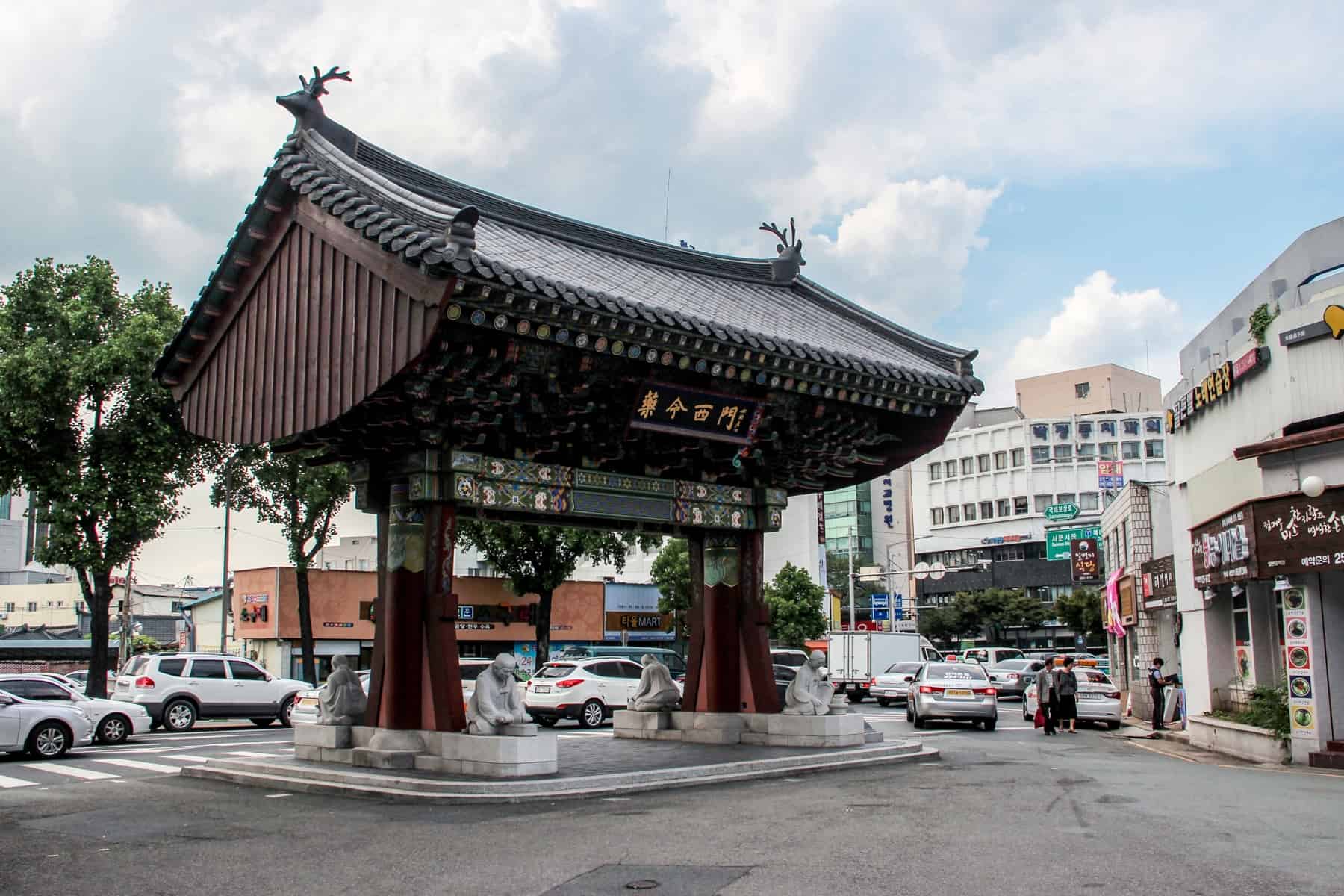
Daegu town centre, South Korea.
The UNESCO Ancient Capital of Gyeongju is a highlight, with huge grassy tombs, temples and gorgeous parkland surrounded by mountains. One of the more interesting cities of former dynasty times, with a lot of ground to cover.
Day Trip – Visit Gyeongju from Busan .
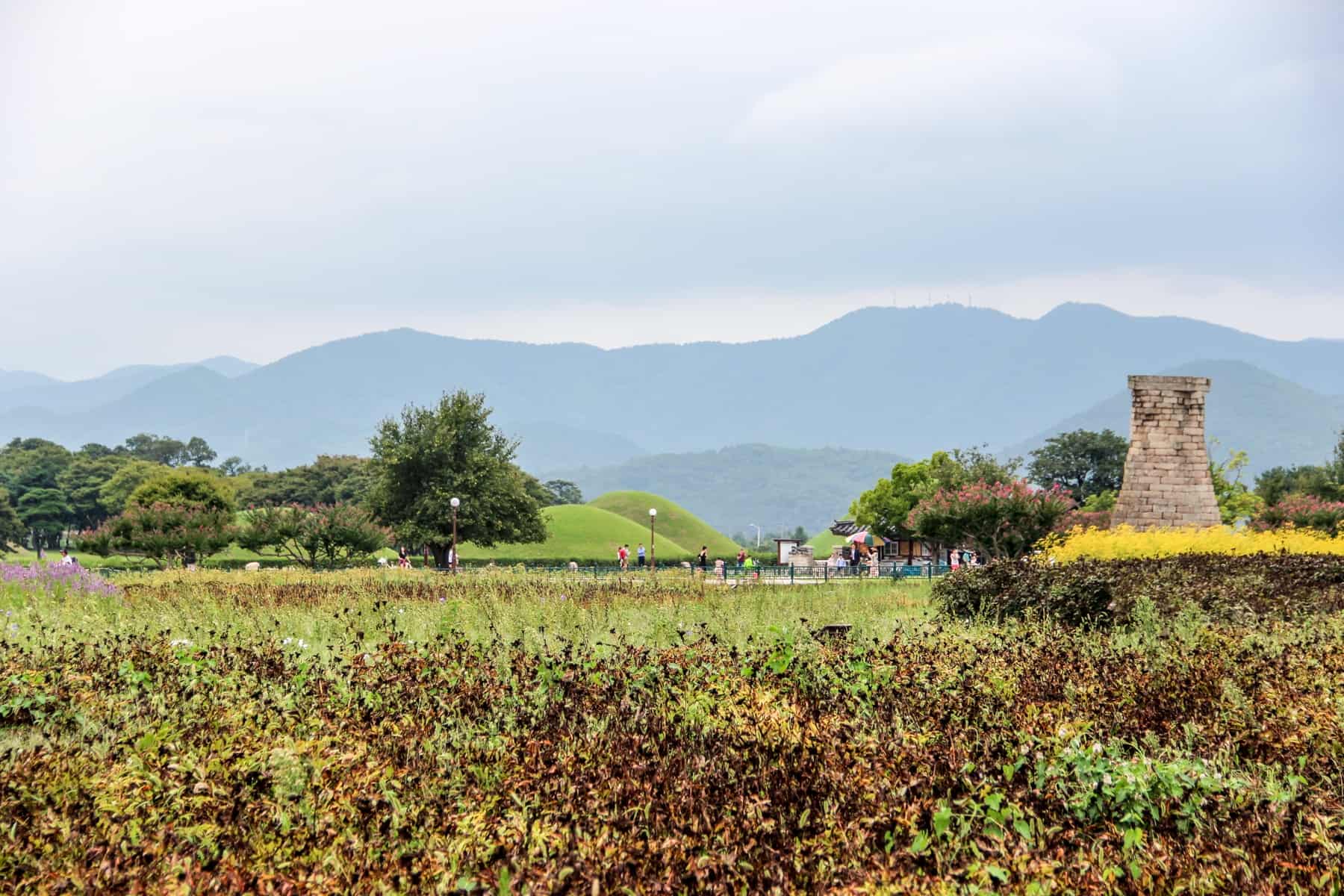
The Gyeongju Burial Mounds – one of South Korea’s UNESCO World Heritage Sites.
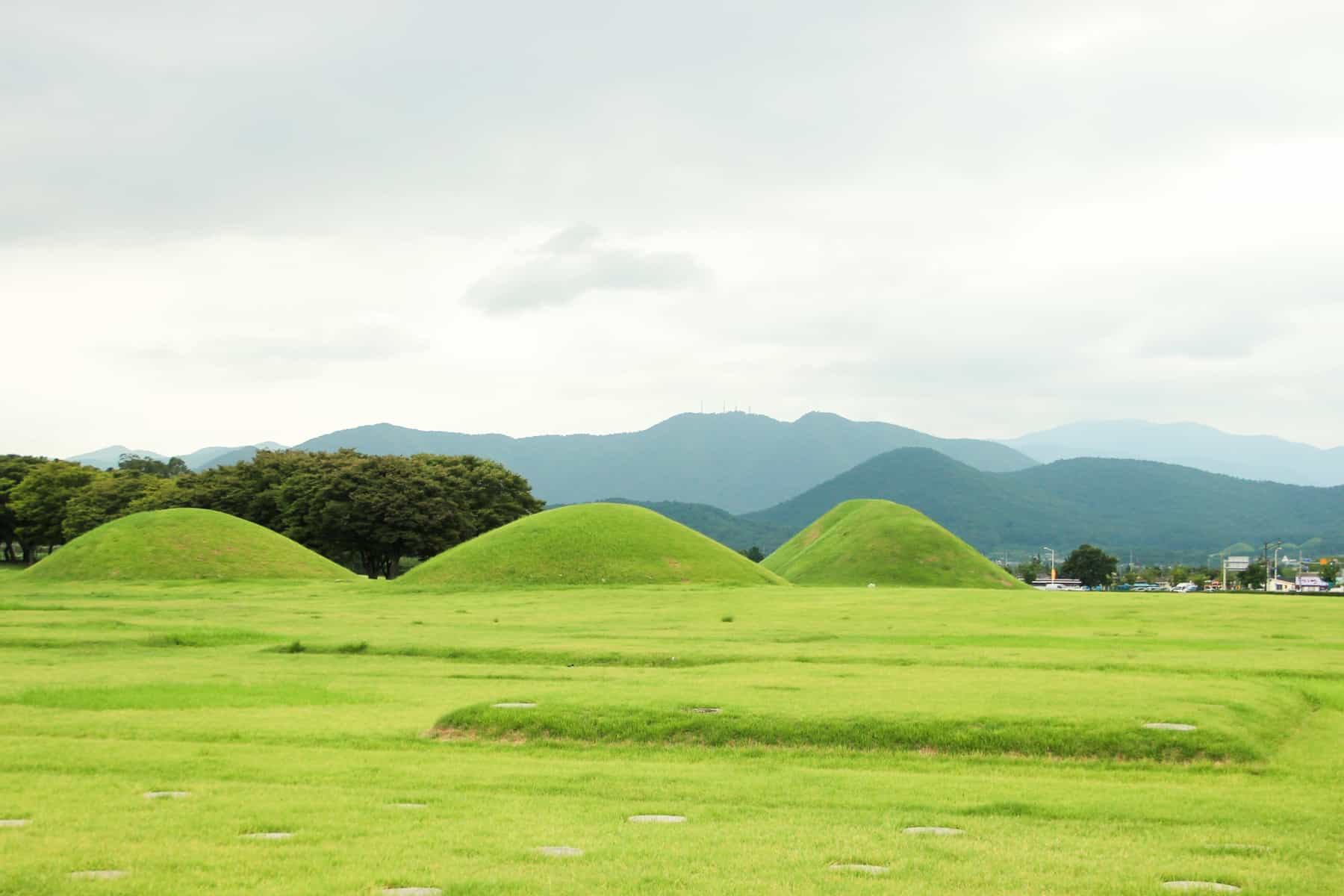
The grassy royal burial mounds in Gyeongju are one of the best places to visit in Korea.
Busan, with its lively beaches and mountainous terrain, was a refreshing and chilled break from the brash Seoul. I also got to check out Spa Land – one of Korea’s many ‘walk around completely naked’ spas and a rite of passage for any visitor to Korea!
Day Trips and Tours in Busan
- A compact city but with lots of highlights, consider a full-day Busan city tour to see it all.
- See Busan’s skyline from the water on a 90-minute sightseeing cruise .
- Day trip to Oedo Island for the lush nature and the longest cable car ride in Korea.
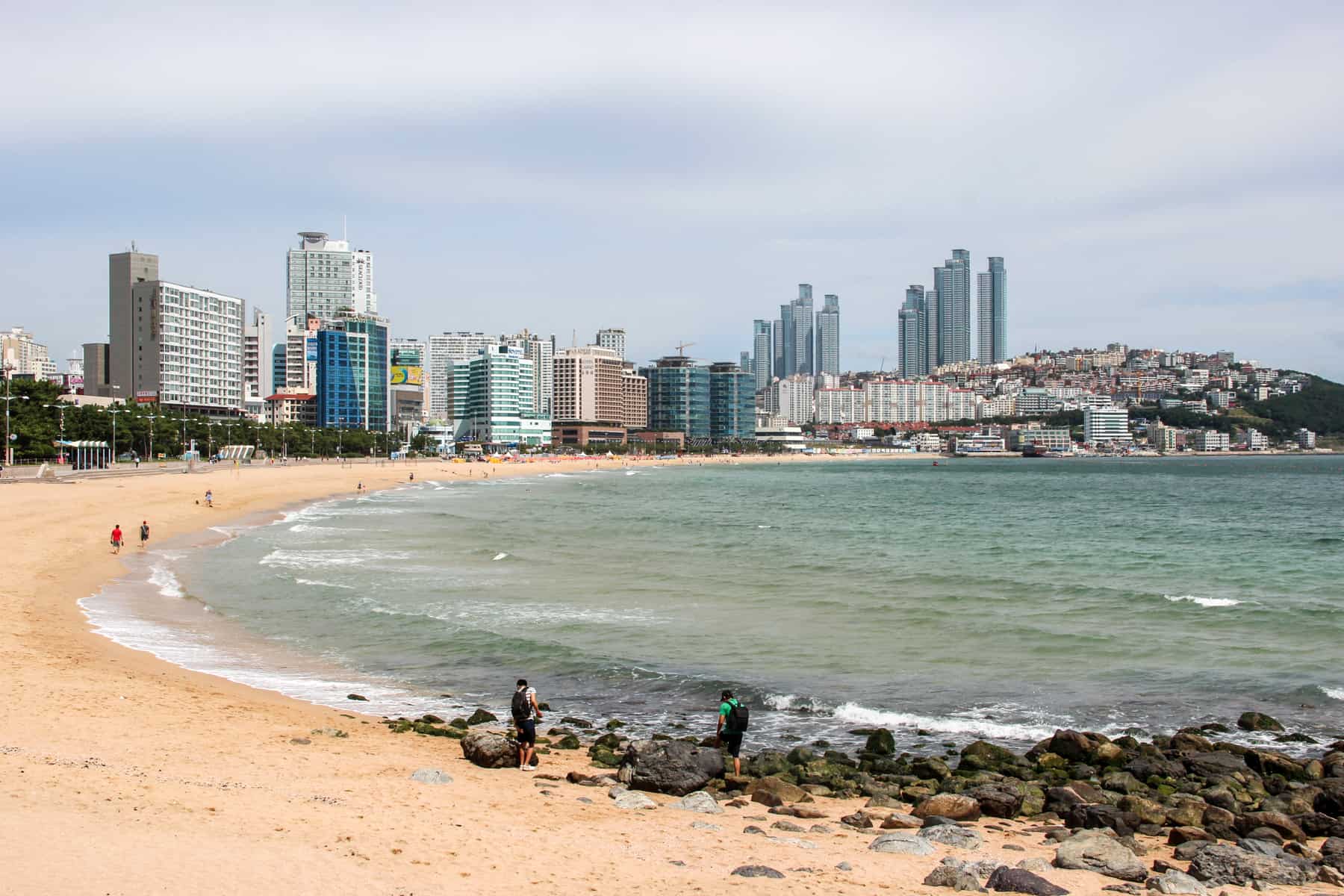
The mdoern coastline city of Busan, South Korea.
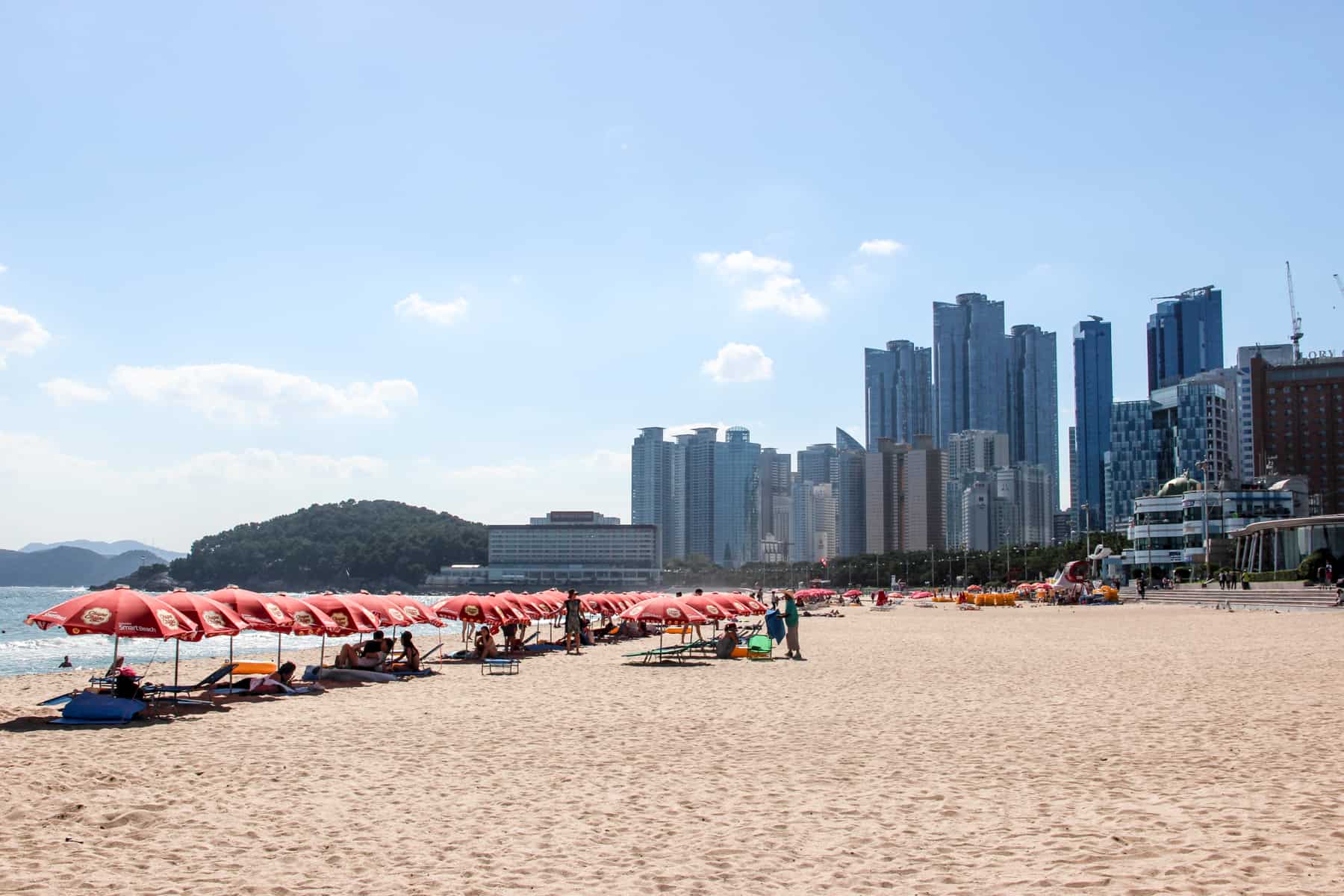
Busan beach city.
I had an incredible few days in the small harbour town of Yeosu, staying with a friend who was teaching there and taking random bus trips to start short treks in nature – like reaching the scenic viewpoint of the Geomosan Hyangilam temple I would have otherwise found hard to come by.
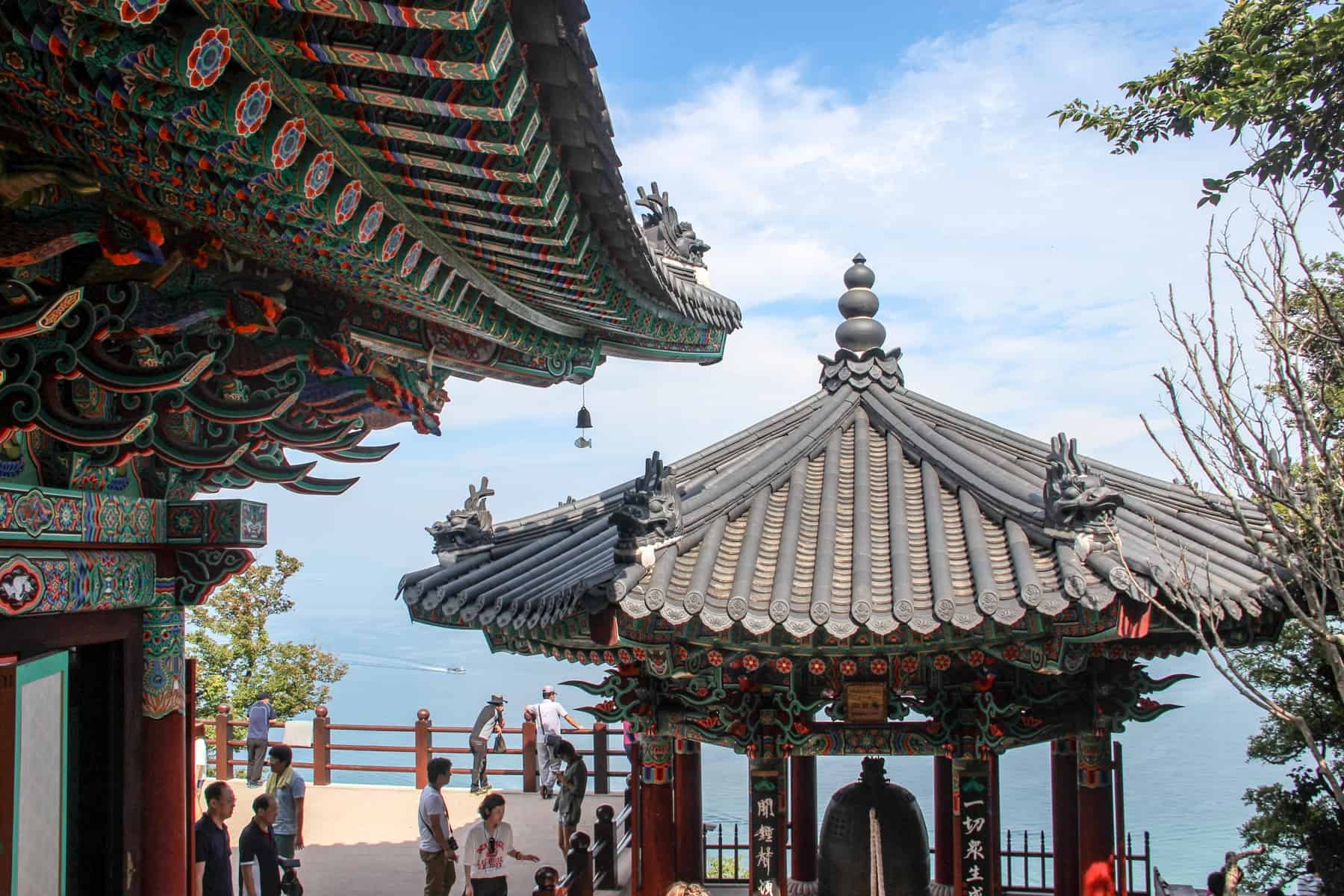
The colourful Geomosan Hyangilam temple in Yeosu overlooking the ocean.
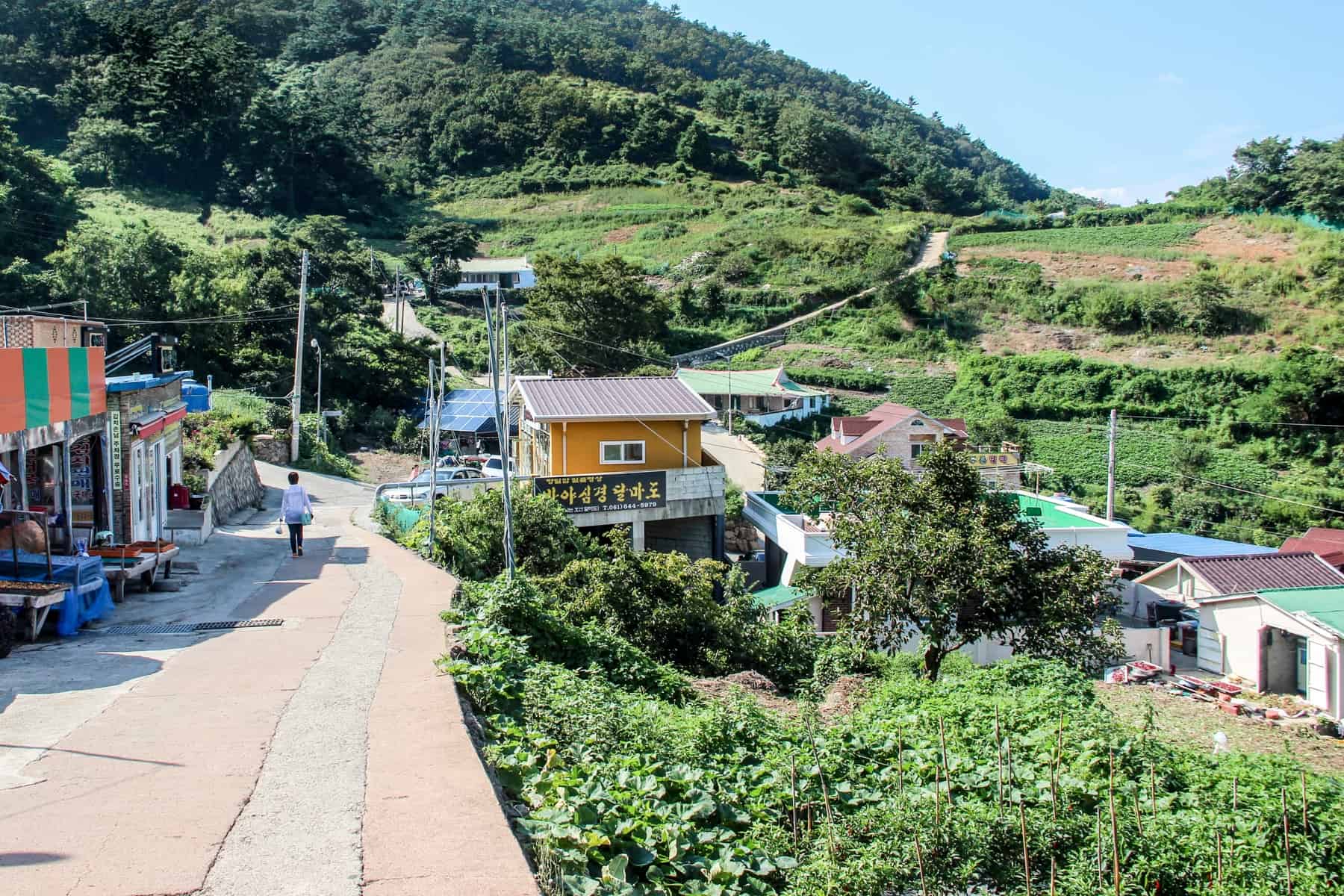
Forest walks and temple treks in Yeosu, Korea.
Jeju Island was hands down my favourite destination in Korea – a stunning domestic holiday spot with stunning beaches and a host of UNESCO sites, including lava caves, a mountain and incredible viewing points.
The ferry ride to get here is rough on the choppy waters, but it’s all a part of the adventure. And there’s a lot of adventuring to do in Jeju as a core pristine nature hotspot.
READ MORE: All the World Wonder of Nature Things to Do on Jeju Island , South Korea
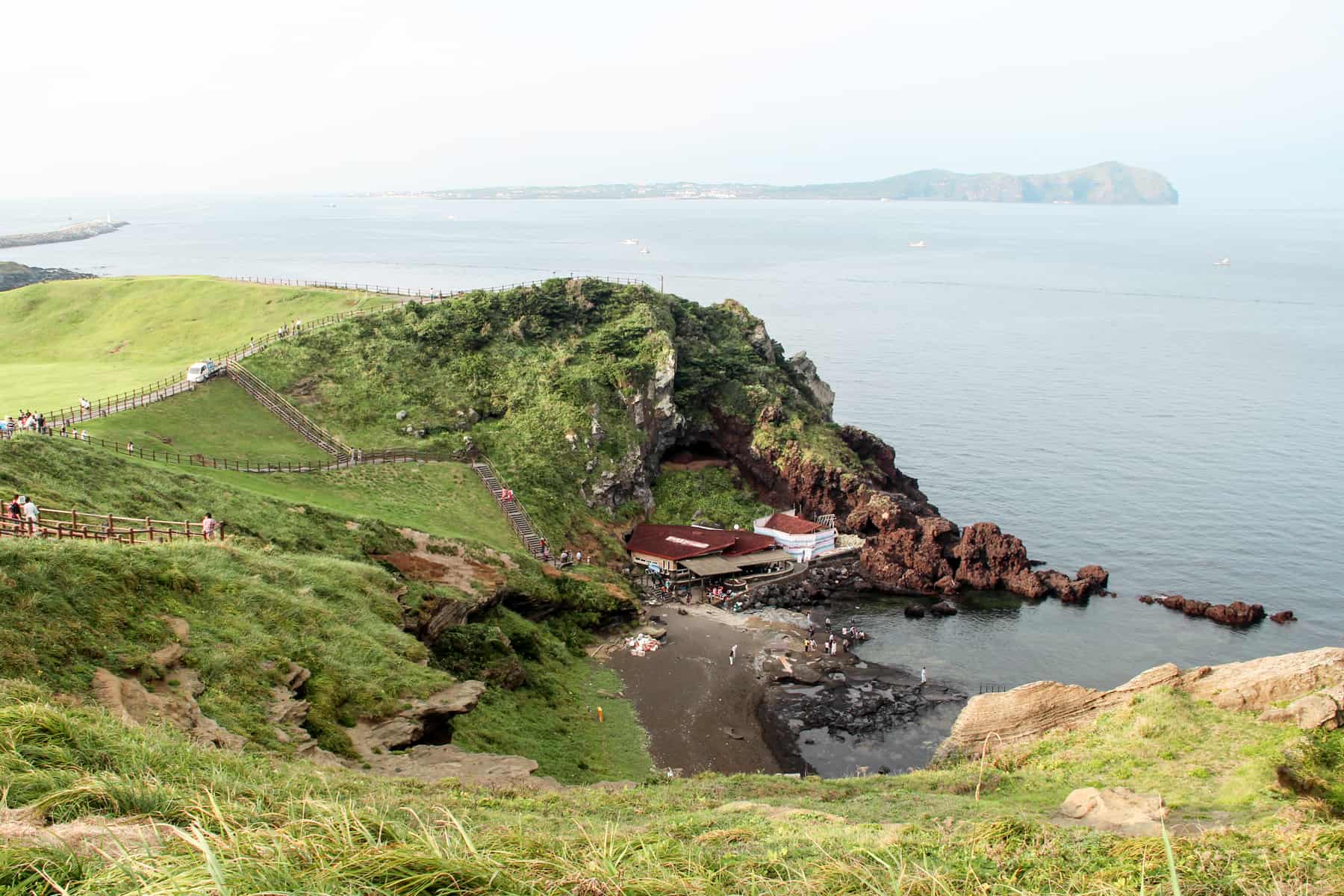
Visiting Jeju Island’s Sunrise Peak.
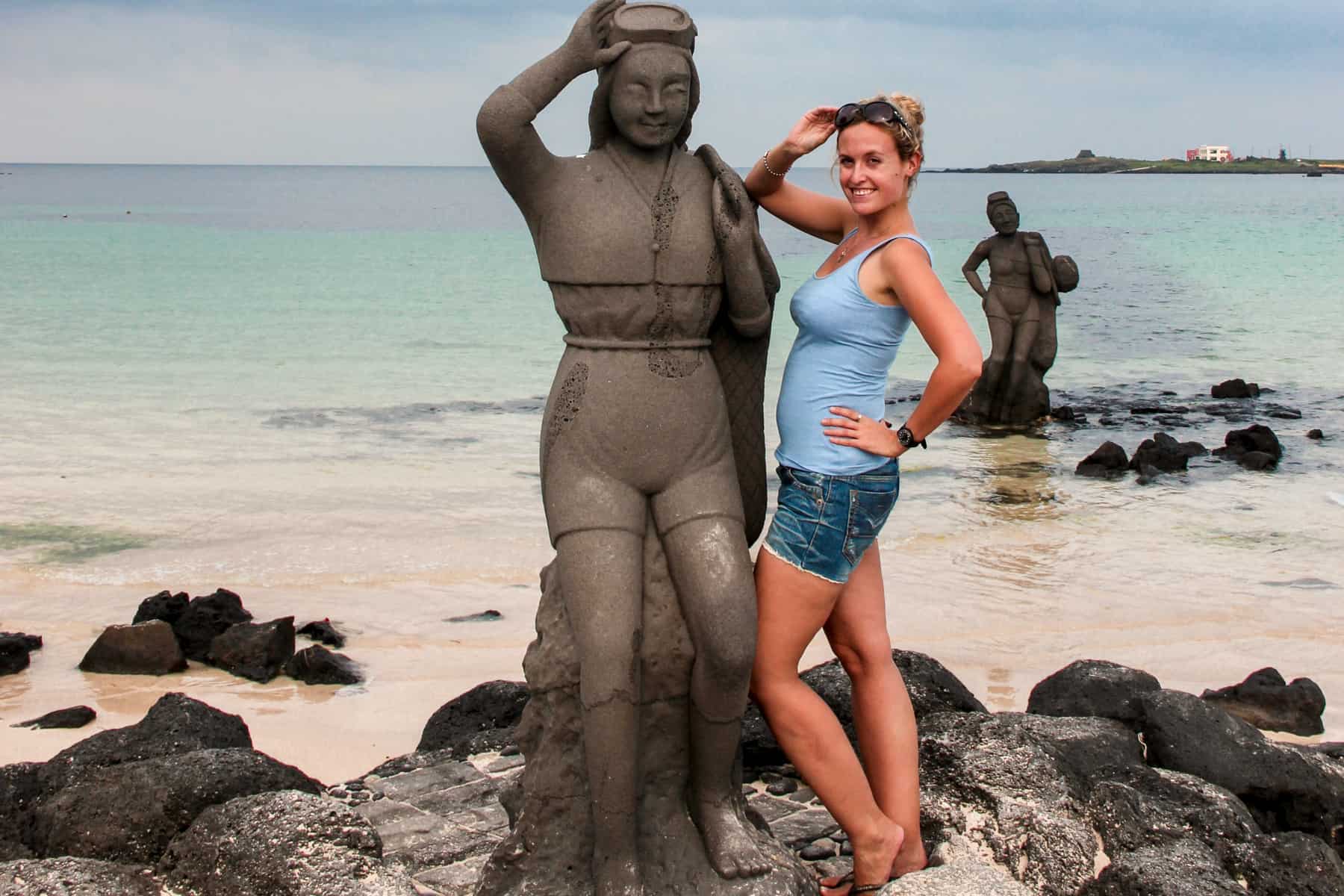
Haenyo Female Diver Statue on Jeju Island, South Korea.
A key part of enjoying Korea is knowing the people who live there. I was lucky to visit friends in Seoul and Yeosu, which made a HUGE difference because they could also introduce me to their Korean friends. I lost count of the times I was told you could only really enjoy Korea when people could tell you or show you where to go.
Korea doesn’t shout about its beauty, and must-see spots can be hard to find . Knowing someone is key – take advantage of this if you consider visiting there. When I spent time with locals, I used every minute to get a deeper insight into the country. I have recently heard that things have changed a lot, and there’s much more information and guidance on how and where to find and access points of interest because tourism promotion has gained more steam.
Would I visit again? Absolutely. I would travel to Korea again. There are still parts of the country that I have yet to see, such as the National Parks, the mountainous areas with hiking trails and much further down the line, the smaller towns which will one day be more accessible to travellers, rather than to those living there who take months to uncover it as they call it home.
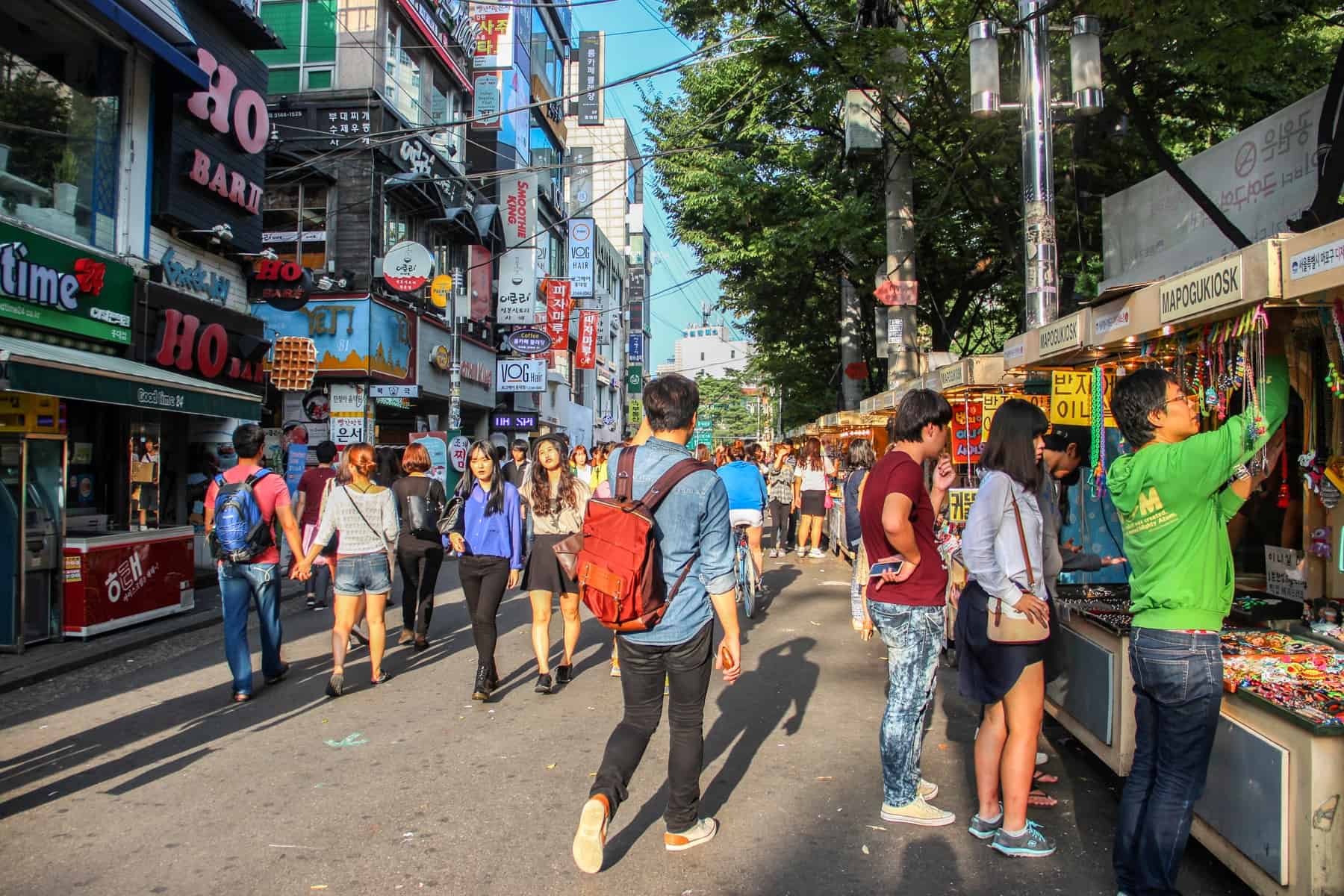
Life in the city of Seoul, South Korea.
South Korea Travel Tips
Land in South Korea and be travel ready with these mobile and transport cards and passes.
Rather than scour the streets for a SIM card, pre-order the 4G LTE unlimited data SIM card and collect it from airport pick-up stations where you will get help loading and topping up your data. You’ll need to present your passport.
If landing at Incheon Aiport, pick up this handy SIM and public transport combo card – an unlimited 4G data sim and charge card for subways and buses.
The Korean rail network is extensive and makes travel around South Korea convenient, fast and cost-effective. Available only for foreign visitors, consider purchasing a Korea Rail Pass for unlimited use within two to five days on the following services:
- KTX and KTX-Sancheon high-speed trains
- ITX-Saemaeul, Saemaeul, Mugunhwa, Nuriro and ITX-Cheongchun main network trains
- The O-train, V-Train, S-Train, DMZ-Train, A-Train and Westgold-Train tourist trains
This pass also includes discounts on first-class tickets for certain journeys and free or discounted entry into museums country-wide.
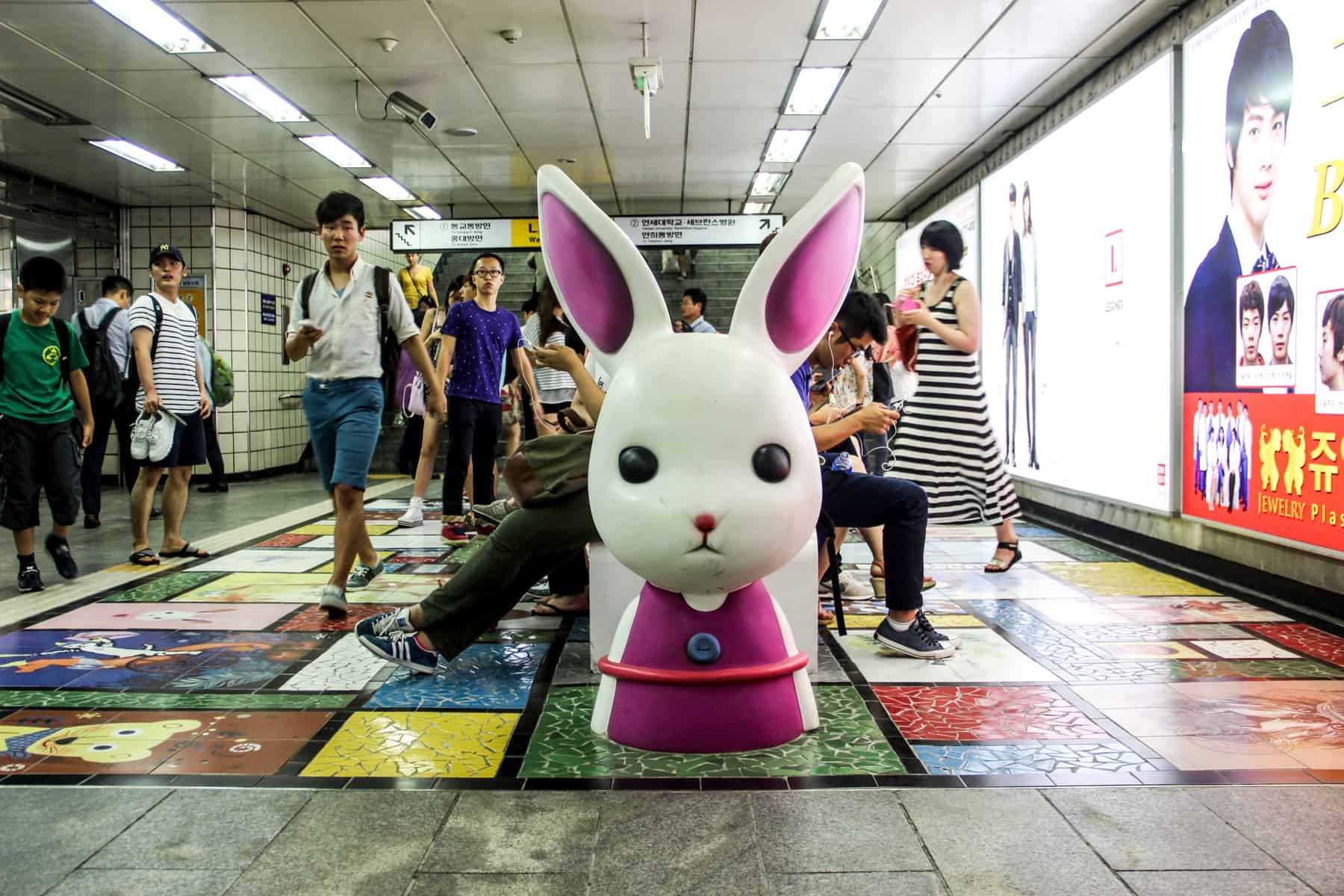
Seoul metro and train station.
- The Korea Lonely Planet has recently been updated and is a great addition to travel throughout the country.
- Read ‘Korea: The Impossible Country’ for further insight into Korea’s substantial economic and political growth. This book charts the rise of Korea as one of the best success stories of the post-war period and how it rose from the ashes and out of the shadows of Japan and China.
- ‘The Two Koreas’ is a contemporary history book that focuses on the history of the Korean Peninsula from World War II to the present day.
- Are you a fan of K Pop and keen to know how Korean Pop became a worldwide sensation? ‘The Birth of Korean Cool: How One Nation Is Conquering the World Through Pop Culture’ is a fun look at how (to quote the book) “a really uncool country became cool”.
Not everyone wants to navigate a country solo, and the complexities of a South Korea trip are no exception to those who might not know the Asia travel circuit extensively. Despite Korea’s great infrastructure and various stopping points of interest, some like to have smaller details organised and travel in small groups for a big adventure. Plus, you will be with a local guide, and South Korea is best experienced with someone who knows it as home.
The G Adventures South Korea tour takes you through Korea’s highlights over eight days , covering most of what’s been mentioned in this article. The trip costs include a visit to the DMZ, city tours in Seoul and Busan, alongside cultural villages and temples, as well as accommodation in all destinations and transport in between.
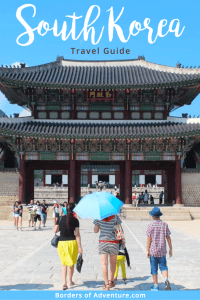
About Becki
Becki Enright is a British Travel Press Award-winning writer whose work focuses on changing perceptions about misunderstood aspects of destinations. Her writing combines storytelling with insight into the social, historical, political and economic factors that shape the country or place in relation to tourism. Becki has appeared live on Sky News and CNN and has contributed to high profile media including National Geographic, Time.com, Guardian online, New York Times, Grazia and Buzzfeed.
24 January 2019 at 6:11 am
The Korean travel industry is actually geared more to other Asians, as it should be. I just don’t think Europeans or Americans would want go there. Korean-Americans are the exception.
I mean just be logical, if westerners want beaches or a place for their honeymoon there are other more exotic people and places in Europe and Asia. Korea will never compete with Bali orThailand or Greece. And Korea and Koreans just aren’t exotic in that Oriental way that attracts Western tourists. Korea is actually attractive to other Asians in the way that Hollywood attracts tourists.
Also in terms of visiters Korea actually does reasonably well compared to Japan, China and Thailand. It could do better and spendings on infrastructure is increasing.
24 January 2019 at 9:36 am
Not every westerner wants to go to beaches and more tropical climates etc. Korea has things to do and see, it’s just not shouting about it enough or making it as accessible. It’s only now I am hearing more and more about the incredible nature and National Parks, for example.
I despise the term ‘exotic’ in the travel industry. It’s patronising, especially in relation to east and west and what the Western sees Asia as. And, ultimately, what Westeners ‘want’ Asians to be.
Korea, like every destination, has it’s own unique persona, or in more modern times how it has grown into a hub of pop culture, amongst other things. It’s just harder to really dig into, and even for friends who lived there, it still took them many years.
12 January 2019 at 6:41 pm
I would post your comment but since you are being aggressive, threatening about me returning (also in your previous, longer comment) and unable to have a mature conversation (like the majority here in this thread which invite insightful discussion amongst travellers, Koreans and expats), it is futile to respond.
12 January 2019 at 3:07 am
Ok. If there’s any backpackers out there, let me try to change your perspective on travel a little. I am 37 and obviously more mature than your average backpacker, but i have been backpacking since my 20s and i feel i have something to contribute. I call this India and Nepal problem. I love Nepal and am trying to find a way to spend a few months every year here that’s my goal. The thing is i have friends who love India and i used to tell them I hate India. I travelled India in 2011 and i did not enjoy the place. Nepal seemed like a paradise in comparison. The people seemed rude and the place dirty. I have made up my mind. I hated India. My friends used to accuse me of close-mindedness. So this time i made an effort to learn a little Hindi to get to know the locals. How India has changed in 7 years! Also my Hindi made a big difference. The Indians embraced me as ‘bharatyi’ and they were ready to see me as one of them. Many backpackers have this attitude i am spending my cash so the locals should be like this or that. We are becoming cultural consumers. That is a very fake way to live this world. I was certainly guilty. But try to open your mind and let the travel change your ‘self’.
12 January 2019 at 7:16 pm
I agree, especially that there is a similar situation with India and Nepal. India takes a while to get used to, whereas to many an affinity with Nepal ‘appears’ more instant. But once a country that you may have been slow to warm to, or which requires multiple returns to understand then clicks, it’s special. Meeting as many locals as possible is the best insight into a country you can ever have. I’m not going to blame just backpackers for any closed-minded attitudes as it comes from all manner of travellers; old and young; experienced or not. I’ve been travelling for 20 years too, but that doesn’t mean we can automatically take the high road. We just all have to find our way of adjusting and understanding as much as possible.
1 January 2019 at 4:20 pm
Becki -a wonderful article. I certainly had a very different experience (in both North and South Korea) and found locals to be really helpful and friendly and interested in having visitors in their country. My mum and I must have looked super lost when we got off the metro in the city centre from the airport because a young guy came over to try and help us immediately. We had monks giving us free fruit on the beach, a man trying very hard to explain the history of a statue in Gyeongju (defo agree this is a highlight by the way!) and an old man who walked us a good 15 minutes to find our hostel. I also think it’s interesting you mentioned about needing to know somewhere there…my first thought when I started reading this article was how it does strike me as one of those places you need to spend a really long time in to get under the skin of and understand so I was glad when you said the same. Have you gone back to South Korea again?
6 January 2019 at 1:33 am
Not yet, but I would like to visit the National Parks and get deeper into the nature.
- Article Archives
- Work with me
- Privacy Policy

Buddha's birthday: When is it and how is it celebrated in different countries?
Buddha’s birthday is an important holiday in several countries in Asia where there are large Buddhist populations
The birthday of the historical Buddha or Shakyamuni Buddha, known as Vesak in several countries, celebrates the birth of the child who became Prince Siddhartha around the end of the 4th century B.C. This is a holy occasion for all Buddhists, but is celebrated on different dates depending on the school of Buddhism or country to which one belongs. In several Asian countries, it is observed on the eighth day of the fourth month of the lunisolar calendar, which this year falls on May 15. In several South and Southeast Asian countries, it is celebrated on the first full moon of May, which falls on May 23.
BUDDHA'S BIRTH AND LIFE
Siddhartha was born in Lumbini, which is at the border of what is India and Nepal today. His mother, Maya, was the wife of Suddhodana, king of the Shakya clan. According to Buddhist lore, when she conceived, the queen dreamed that an auspicious white elephant entered her womb. A number of texts recount the child’s miraculous birth, detailing how the baby was received by the gods Indra and Brahma, and took seven steps soon after he was born. He is then believed to have received a cleansing bath from the gods, or dragon kings, depending on the country or culture where the legend originated.
Suddhodana sheltered his son from pain and suffering, believing that keeping him isolated would put him on the path to becoming king. However, he could not protect Siddhartha for long, and the prince began to reflect after witnessing sickness, old age and death. Disillusioned by the impermanence of life, Siddhartha engaged in six years of ascetic practice and attained enlightenment at the age of 35 in Bodh Gaya in northeast India. He then became known as the Buddha, which means “the awakened one.”
WHY AND HOW IS BUDDHA'S BIRTHDAY CELEBRATED?
Buddhists around the world use this time to not only celebrate, but also reflect on Buddha’s teachings and what it means to practice the faith. In many parts of Asia, the sacred day marks not just the birth, but also the enlightenment and passing of the Buddha. In most Asian cultures and the diaspora, Buddhists go to their local temples and participate in chanting, meditation and festivities all day. Families decorate their homes with lanterns and gather for feasts.
Buddha’s birthday is a national holiday in South Korea. The highlight of the celebration in Seoul is the lotus lantern festival called Yeondeunghoe, a parade of thousands of colorful, lighted paper lanterns often shaped like lotus flowers that are hung in temples and streets. On Buddha’s birthday, many temples provide free meals and tea to all visitors. Festivities in temple yards and parks include traditional games and various performing arts displays. The luminous display is believed to symbolize the light of Buddha’s teachings.
While Buddha’s birthday is not an official holiday in North Korea, it has been observed in Buddhist temples there since 1988. In 2018, Buddhist monks in North and South Korea held joint services when animosities between their governments eased. But such exchange programs have been stalled in the past few years due to tensions over North Korea’s nuclear program.
In China, the faithful do a bathing ceremony that involves pouring scented blessed water over a statue of the infant Buddha whose right forefinger is pointed upwards toward the sky and left forefinger is pointing down to the Earth. According to legend, the Buddha announced shortly after being born that he would have no more rebirths, and the dragons of heaven baptized him with pure water.
In Japan, April 8 is observed as Buddha’s birthday and is celebrated in Buddhist temples as Hana Matsuri, which means flower festival. On this day, a small “flower hall” is set up on temple grounds and decorated with colorful flowers. A bowl of water with a statue of the baby Buddha is placed in the middle and devotees pour sweet tea on the head of the statue. A priest performs the Kambutsu-e nativity festival recreating Buddha’s birth in the garden of Lumbini.
SOUTH AND SOUTHEAST ASIA
Countries in South and Southeast Asia celebrate Buddha’s birthday on the full moon of the second lunar month known as Vesakha or Vaisakha. The Sanskrit word for full moon is Purnima, which is why the holiday is also called Buddha Purnima. The Mahabodhi Temple in Bodh Gaya is decorated on this day and devotees perform special prayers under the bodhi tree under which the Buddha is believed to have attained enlightenment. In India and Nepal, sweet rice porridge is served on this day to recall the story of Sujata, a maiden who offered the Buddha a bowl of milk porridge.
In Malaysia and China, caged animals and birds are set free on Buddha’s birthday because people believe it is good karma. In Sri Lanka, celebrants decorate homes and streets with candles and paper and bamboo lanterns. Festivities feature devotional songs, decorative structures called “pandals,” burning of incense and electric light displays depicting stories from Buddha’s life. In Vietnam, Buddha’s birthday is a still popular festival, but not a public holiday, which it was from 1958 to 1975 in what was formerly South Vietnam.
Associated Press religion coverage receives support through the AP’s collaboration with The Conversation US, with funding from Lilly Endowment Inc. The AP is solely responsible for this content.

- Skip to primary navigation
- Skip to main content
- Skip to primary sidebar
Vogue Singapore
Vogue Singapore is the undisputed fashion authority that empowers and inspires through elevated imagery and intelligent stories to drive change for good

The most picturesque cafes in Jeju to visit
By Janice Sim
20 May 2024
South Korea's largest island is home to volcanic beaches, clear blue waters and most importantly, a thriving cafe scene
Calm winding drives. Glittering blue waters. An island that is just six hours from Singapore, Jeju is the breath of fresh air for most city folk seeking a respite from the high-octane life, or even a second idyllic stopover on a trip to the busy Seoul . The antithesis to South Korea’s capital, Jeju is one that beckons a slower pace of living, coupled with scenic views, pristine beaches and rolling grasslands. Cue a relaxing drive, while enroute to a volcanic beach or to try Jeju’s mouthwatering speciality, black pork.
Residing anywhere in this large volcanic island will warrant generous winds throughout the seasons, which makes Jeju the perfect spring destination, with the warmth of the sun and the chill from the breeze. Of course, on such an expansive land, South Korea’s bustling cafe culture too, extends to Jeju—with plenty of creative spaces, seeded within nature, peppered across the island.
Expect only the most wondrous cafes backed up by a penchant for specialty coffee, delicious bakes and food that’s driven by the fresh produce in Jeju. Like the hallabong , a sweet tangerine that’s native to the island, and an emblem that you’ll find splashed all around tourist gift shops.
Ahead of your next getaway, Vogue Singapore rounds up the most stunning cafes in Jeju to visit, should you find yourself in a rental car and in the mood for a drive.

While the mesmerising waters through the windows of Orrrn are enough to capture one’s undivided attention, the architecture within is too, a vision to behold. A blend of concrete and wood make up the furnishings as a sky light towers above in the huge edifice. For something a little different, try their Orrrn Latte, laden with peanut cream. Light bites like viennoiseries and cakes are available if you’re feeling peckish.

Landing Cafe
Perched on the East side of the island, is where you’ll find Landing Cafe—a hotspot popular amongst tourists and locals. Where a dreamy sea view awaits through the cafe’s floor-to-ceiling windows. Along with the stunning backdrop, grab a a cuppa as well as one of their lemon mousse cakes.

Cafe Tangerine Flower Attic
A house straight out of a storybook. Here’s where you can live out your own fairytale in this charming cafe that owns its very own tangerine garden. Safe to say, the city’s token fruit is found in most items on the menu—from sodas to cakes. Tangerine picking is also available for those who wish to take home the edible souvenirs.

A rustic haven that pays homage to Jeju’s culture, this cafe is littered with old pottery and tools, so much so that you feel you’ve transported back in time. Here in this refurbished warehouse that has been founded since the 1950s, enjoy their signature barley beverages and desserts with the cafe mills growing its own barley.

Its name says it all. Here’s where most ‘Gram worthy posts are snagged, oft perfectly framed with a drink in hand. From flat whites to colourful beverages with enticing toppings, there’s something here for everyone.

In this spacious three-storey cafe is where you can sip on iced Americanos and their speciality snookies (a hybrid between scones and cookies). Even if you’ve failed to snag the prime seats by the windows overlooking the sea views, the alternatives are equally as pleasing, with the cafe interiors adorned with lush greenery.

What used to be an abandoned hotel is now a behemoth cafe that overlooks windmills and small mountains (known as oreum ). Beyond the drink list, a huge selection of pastries freshly baked in house can also be found. But the real treasure of the address is taking a short walk around the property; where in autumn, you’ll be greeted with a vast spread of pink muhly and silver grass. Make sure to stick around for golden hour to make it worth your while.
Related Stories

Entertainment
'Furiosa: A Mad Max Saga' isn’t that interested in Furiosa
By Radhika Seth

See Jenna Ortega, Winona Ryder and Catherine O’Hara in the first trailer for 'Beetlejuice Beetlejuice'

8 translated books that transcend the limits of language to read now
By Chandreyee Ray

This Hari Raya Aidilfitri, unlock your inner Gen Z with these iPhone 15 pro tips
By Azrin Tan
Vogue Edition
- Czechoslovakia
- Philippines
- Watches & Jewellery
- Initiatives
- Next In Vogue

IMAGES
VIDEO
COMMENTS
Visit South Korea and you should spend an entire day roaming street markets sampling your way through this concert of flavors. Quiet Countryside . As South Korea is not yet a worldwide popular vacation destination like its neighbors China and Japan, you will find untouched rural areas giving insight into traditional Korean lifestyle. ...
Let's get right to the juicy info. 1. Seoul. Seoul should be the first place to visit if you're going to Korea. It's the capital of Korea and definitely worth visiting. There are many fun things you can do while you're in Seoul like, going to the karaoke bar, visiting cafes, or just relaxing.
Also when it comes to cosmetics, you can stock up on masks, treatments, make-up, etc. South Korea has a huge number of cosmetics stores. The main shopping areas are Myeongdong, Hongdae, and Gangnam (head to Garuso-gil, our favorite street in Gangnam). 9. Korean culture and its people.
9. World-Class Shopping and Fashion. 10. Thriving Technology and Innovation Hub. 11. Warm and Welcoming People. Conclusion - Reasons to Visit South Korea. FAQs - Reasons to Visit South Korea. In this blog post, we've mentioned the top reasons to visit South Korea that will convince you to explore the beautiful county.
4. Take advantage of Korea's world-class public transportation. Korea's subways, trains and buses are clean, convenient and efficient. It can sometimes seem like a new station is added to the Seoul metro every month, and the rail and intercity bus networks will take you to every corner of the country.
10 Reasons I Love South Korea. Coffee culture is huge in Korea. There is a coffee shop on virtually every street corner in Seoul. Many of these have been decorated with quirky, and often downright eccentric themes. Many Seoul coffee shops were photogenic and ¨instagrammable¨ before being instagrammable was even a thing.
7. The art spills out of galleries and museums into the street. Korea's love of art, design and beauty is evident everywhere - and wonderful. As well as its world-class museums and galleries there are installations and street art aplenty in both cities and countryside.
3. Explore South Korea's breathtaking nature. Although Korea's food, culture and humming city life are famous abroad, the country has some exceptional nature reserves as well. To get your nature thrills, visit Bukhansan National Park. This area lies near Seoul, and its extensive forests, craggy summits, and quiet temples make for a ...
South Korea. Asia. From Seoul's glittering nightlife to Seoraksan National Park's vertiginous hikes, South Korea offers the traveler a dazzling range of experiences, beautiful landscapes and 5000 years of culture and history.
2. Busan. Best place for maritime culture. Situated on the southern coast, South Korea's second city, Busan, overflows with a maritime culture as lively as it is varied. Setting the tone is Busan Port, the oldest and largest in the country (and also the sixth-busiest in the world), handling some 80% of South Korea's container cargo.
11. Korea Isn't Cheap. Expenses in Korea aren't quite as scary as Western Europe in summer but this isn't Thailand either, so you need to be prepared to spend a little more. Hostels will cost at least $15 USD/night but usually a bit more, and proper meals will start at around $8.
Start your South Korea trip in Seoul. Everyone seems to see Tokyo as this crazy futuristic city, but you should see Seoul. It's a starkly modern metropolis with a man-made river winding through its core. It makes sense to start your trip to South Korea here — flight connections are good, and the city's scope of experiences act as an ...
For first time travelers to South Korea, travel Apps are handy and can be useful as guide. The train and bus maps might look complicated, but you can use maps with English translations. Apps like KAKAO Maps and Naver Maps are especially for use in South Korea and are the preferred travel Apps. For more traveling tips, you can download the ...
Korean Seasons Guide. The best time to visit South Korea is during the warm spring or fall seasons. The weather is mild and clear, there's a range of festivals and seasonal activities to enjoy, and you can travel to Korea comfortably. The best months to visit are April, May, September, and October.
Current Requirements To Travel To Korea In 2024. This part of the South Korea travel guide is for tourists. If you plan to travel for business, employment, or other reasons, check your nearest Korean embassy for the latest travel requirements. Most of the restrictions and requirements for travelling to Korea have now been scrapped.
Itinerary 1: Classic South Korea. This 10-day itinerary is excellent for a first visit to South Korea. It covers the must-see attractions in Seoul, Busan, Gyeongju, and Jeju Island, as well as a variety of authentic activities to enrich your trip. 3 nights in Seoul.
Zaha Hadid's Dongdaemun Design Plaza in Seoul is a highlight of the city's innovative buildings, as is the Lotte World Tower, a 123-floor, 555.7-metre supertall skyscraper opened in 2017. It's ...
Discover the best places to visit with our list of the top tourist attractions in South Korea. 1. Experience Korean History at Changdeokgung Palace. 2. Explore Beaches and History in Busan. 3. Visit Jeonju, the Former Spiritual Capital of Korea. 4. View Seoul from Above at the N Seoul Tower.
Korean Cuisine - Best Things To Do in South Korea. 9. Hike in Seoraksan National Park. Seoraksan National Park is one of the most impressive hiking spots in South Korea. Sokcho (the city nearby) is only a bus ride away from Seoul and has accommodations to stay in for anyone who wants to spend a day or more in the park.
As of October 2022, South Korea is finally reopened for tourism with minimal restrictions after a long few years, and they're welcoming visitors with open arms. Beat the influx of crowds before it becomes the popular destination it once was, and consider these 10 reasons why South Korea should be every traveler's first trip in 2023.
Korea is Asia's fourth-largest economy, with a high standard of living. Essentially, they don't need tourism to thrive, so the notion of tourism is misunderstood and rests significantly on those wanting to visit the DMZ border. READ MORE: Visit the DMZ in North Korea and South Korea - The Story of Both Sides.
South Korea has four distinct seasons: Spring (March to May): Being one of the best times to visit South Korea, the average temperature ranges from 8-16°C (46-61°F), providing pleasant weather to enjoy the cherry blossoms and outdoor activities. Summer (June to August): The sweltering conditions may make it uncomfortable for you to explore sightseeing spots during summer in South Korea.
Namhansanseong, a Unesco World Heritage site in South Korea, is an impressive yet little-known fortress built as an emergency capital city should Manchu forces invade Seoul.
Why Lotte World Tower is a Must-Visit in South Korea #travel #lottetower #korea.
As the world embraces remote work, professionals are combining their careers with travel, leading to the popularity of the digital nomad lifestyle. South Korea, which has already become a top global tourism destination, is a great choice for workation. The country's safety, advanced technology, rich cultural heritage and unique cafe culture ...
Buddhists monks clean Buddha statues ahead of the upcoming birthday of Buddha on May 15, at the Jogye temple in Seoul, South Korea, Tuesday, May 7, 2024. ... travel tips and the latest industry news.
Calm winding drives. Glittering blue waters. An island that is just six hours from Singapore, Jeju is the breath of fresh air for most city folk seeking a respite from the high-octane life, or even a second idyllic stopover on a trip to the busy Seoul.The antithesis to South Korea's capital, Jeju is one that beckons a slower pace of living, coupled with scenic views, pristine beaches and ...